



|

|

|
|
2010, Animalblog by Terry Costales
|
|
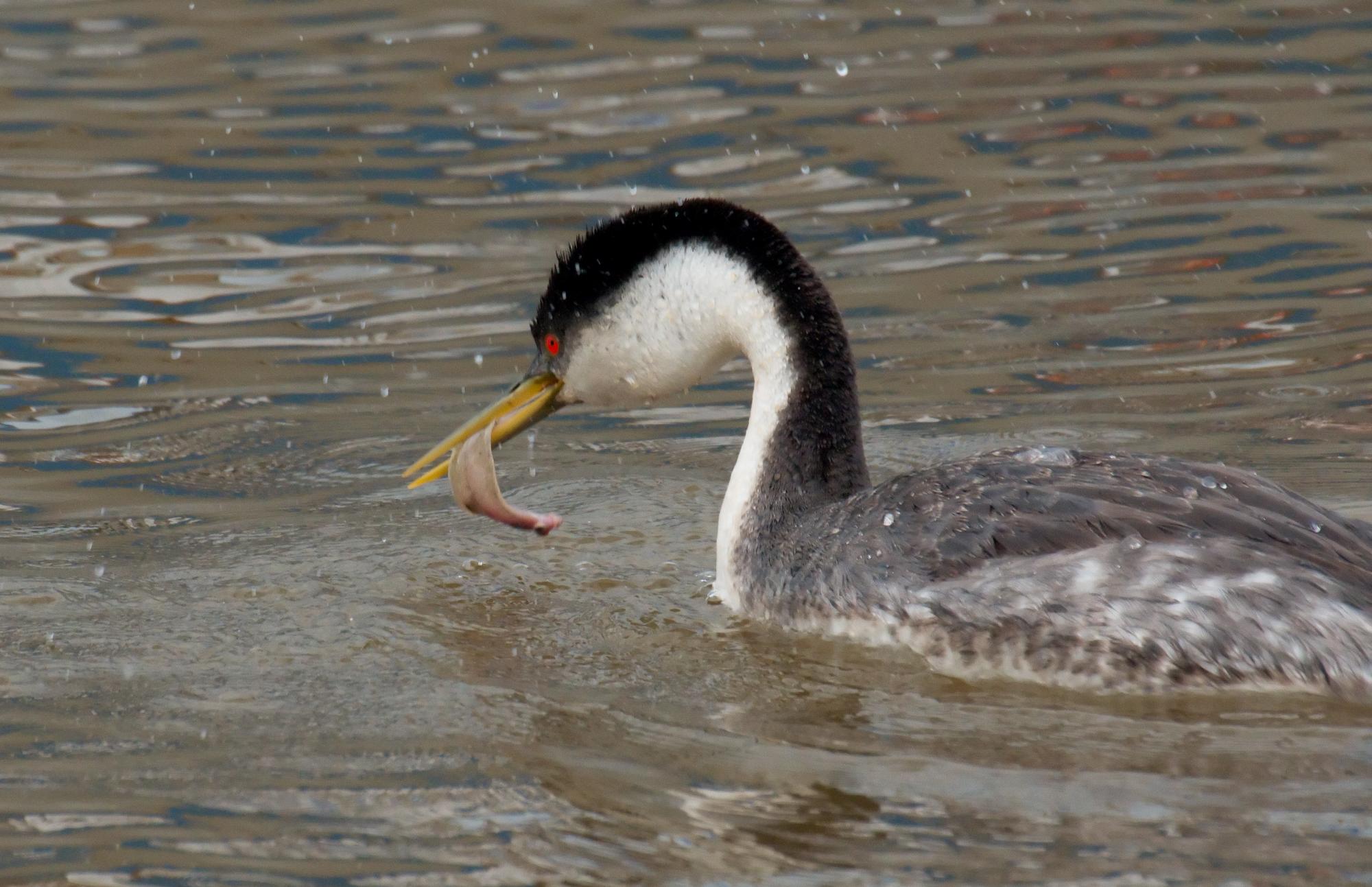 A Western Grebe after its dive for fish.
Elkhorn Slough, Moss Landing, California • (Photo posted Monday 7 June, 2010) • (Photo taken 09:45:05 Friday 12 March, 2010) • © 2010 Terry Costales  #Caught_Fish
#Caught_Fish
Add a comment or report a mistake
|
|
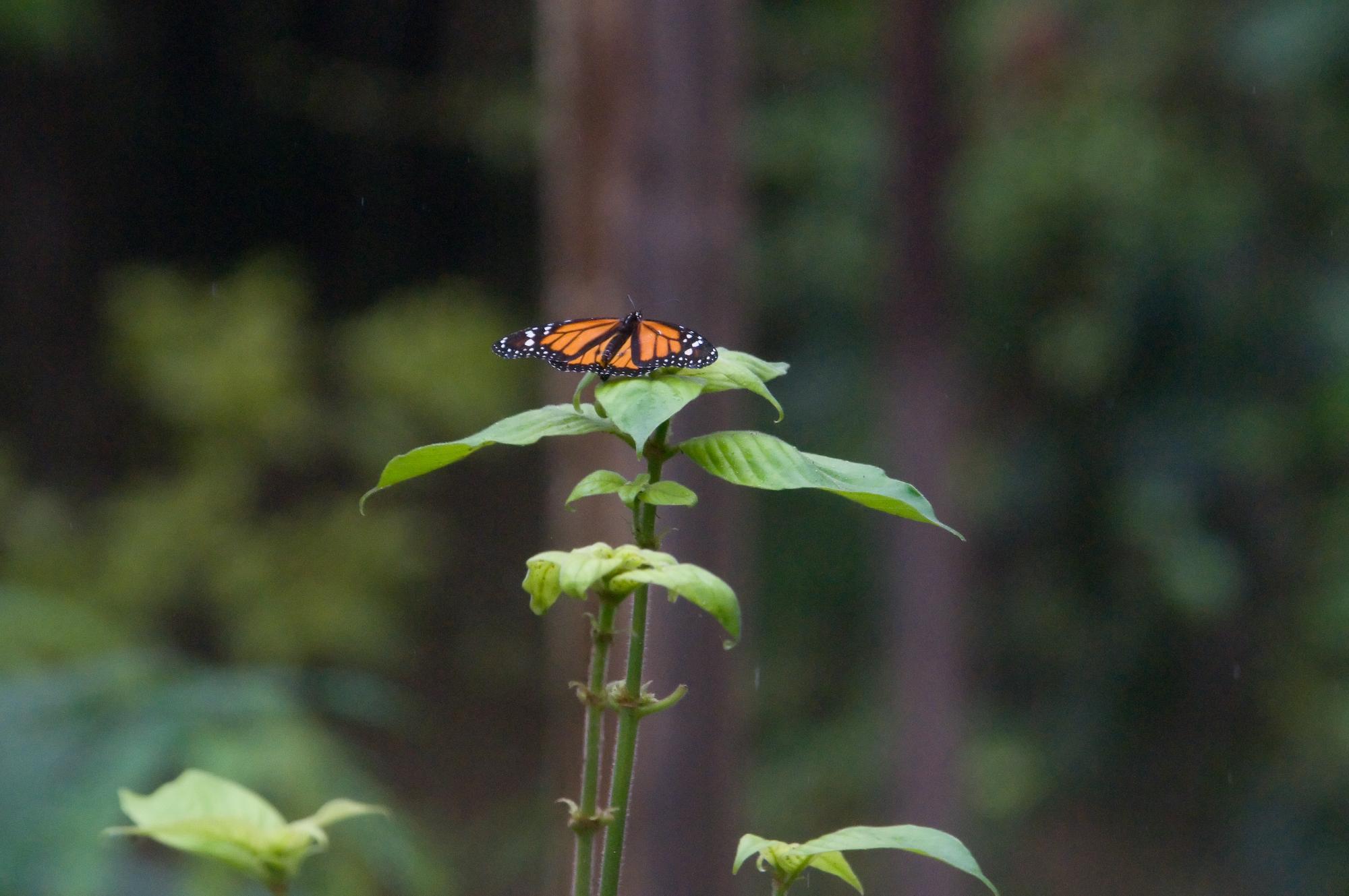
This is a photo of what appears to be a male Monarch butterfly. Male because it has two extra dots on its back wings that produce pheromones. Another obscure fact I learned from Wikipedia.
Jungle Expeditions Hotel, Marañon River, Peru • (Photo posted Saturday 2 January, 2010) • (Photo taken 10:57:32 Thursday 9 April, 2009) • © 2010 Terry Costales 
#20100102.jpg Add a comment or report a mistake
|
|
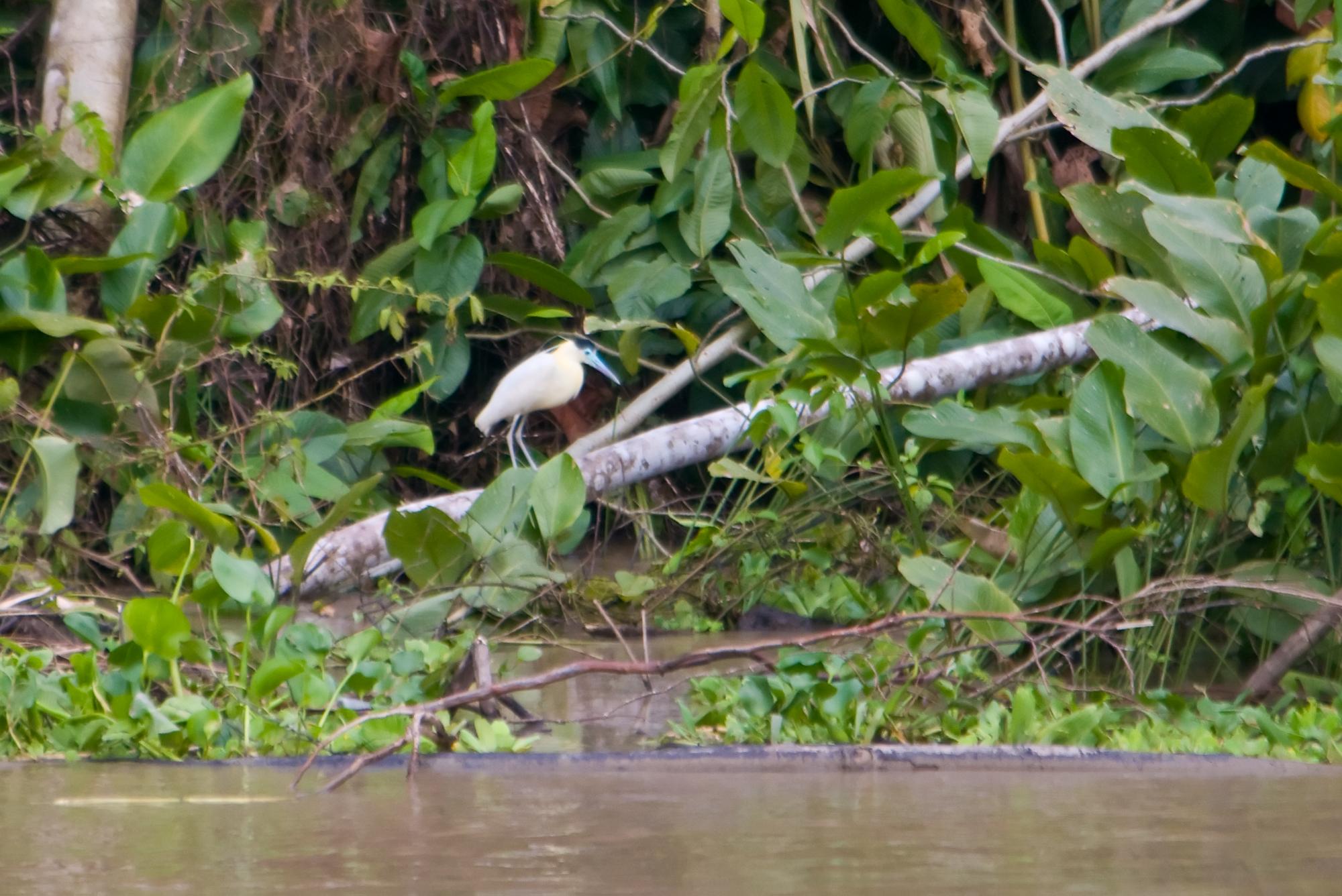 A typical view of the jungle's edge as seen from the boat as we motored past.
Amazon River, Peru • (Photo posted Sunday 3 January, 2010) • (Photo taken 11:06:45 Sunday 5 April, 2009) • © 2010 Terry Costales 
#20100103.jpg Add a comment or report a mistake
|
|
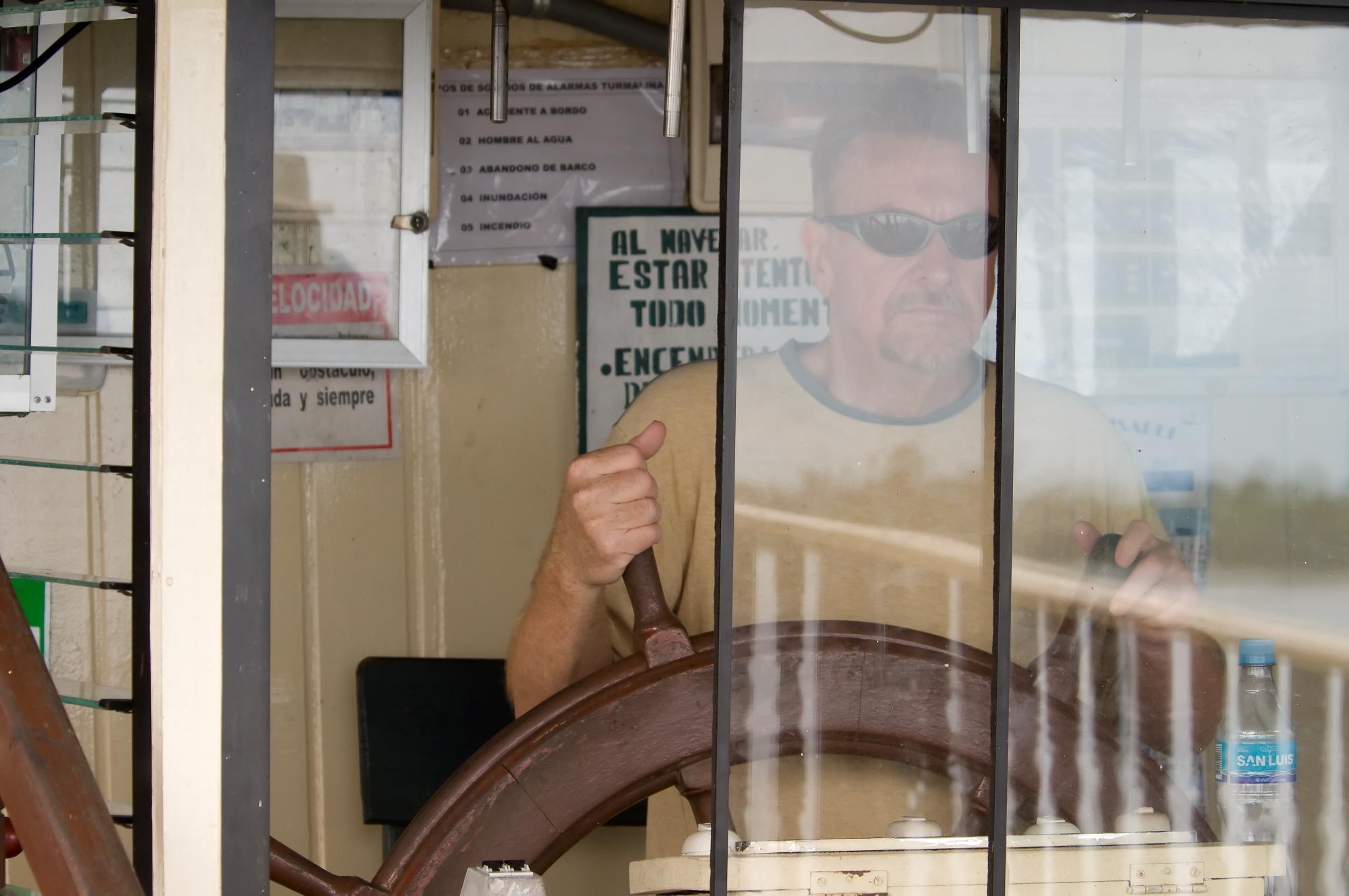
My dashing brother manned the wheel of the Tourmalina.
Amazon River, Peru • (Photo posted Monday 4 January, 2010) • (Photo taken 11:26:51 Sunday 5 April, 2009) • © 2010 Terry Costales 
#20100104.jpg Add a comment or report a mistake
|
|
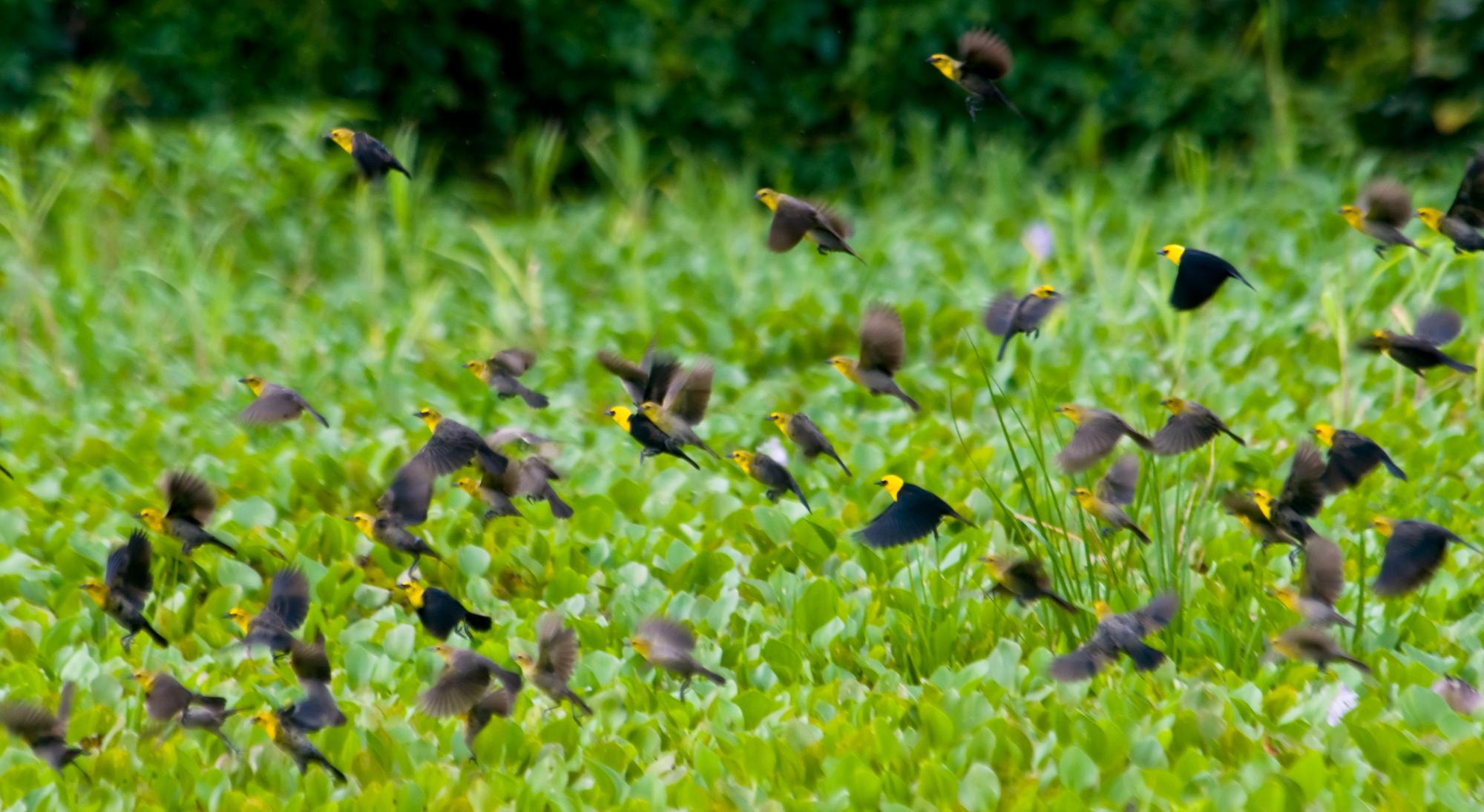
A flock of yellow-hooded blackbirds took off as our skiff came too near.
Amazon River, Peru • (Photo posted Tuesday 5 January, 2010) • (Photo taken 02:04:46 Monday 6 April, 2009) • © 2010 Terry Costales 
#20100105.jpg Add a comment or report a mistake
|
|
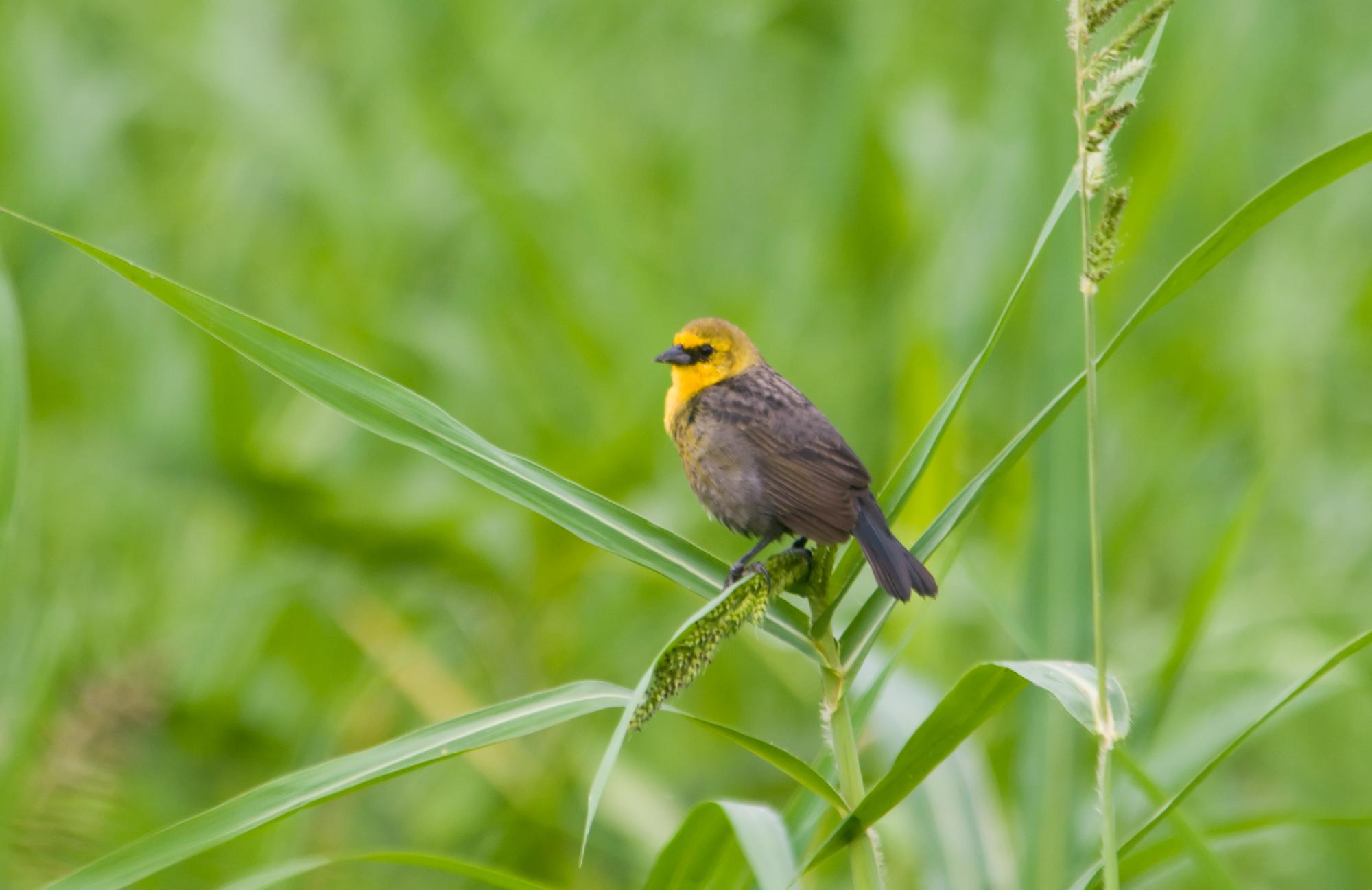
This is a female yellow-hooded blackbird. Her body is brown, whereas the male would be glossy black.
Amazon River, Peru • (Photo posted Wednesday 6 January, 2010) • (Photo taken 01:29:48 Monday 6 April, 2009) • © 2010 Terry Costales 
#20100106.jpg Add a comment or report a mistake
|
|
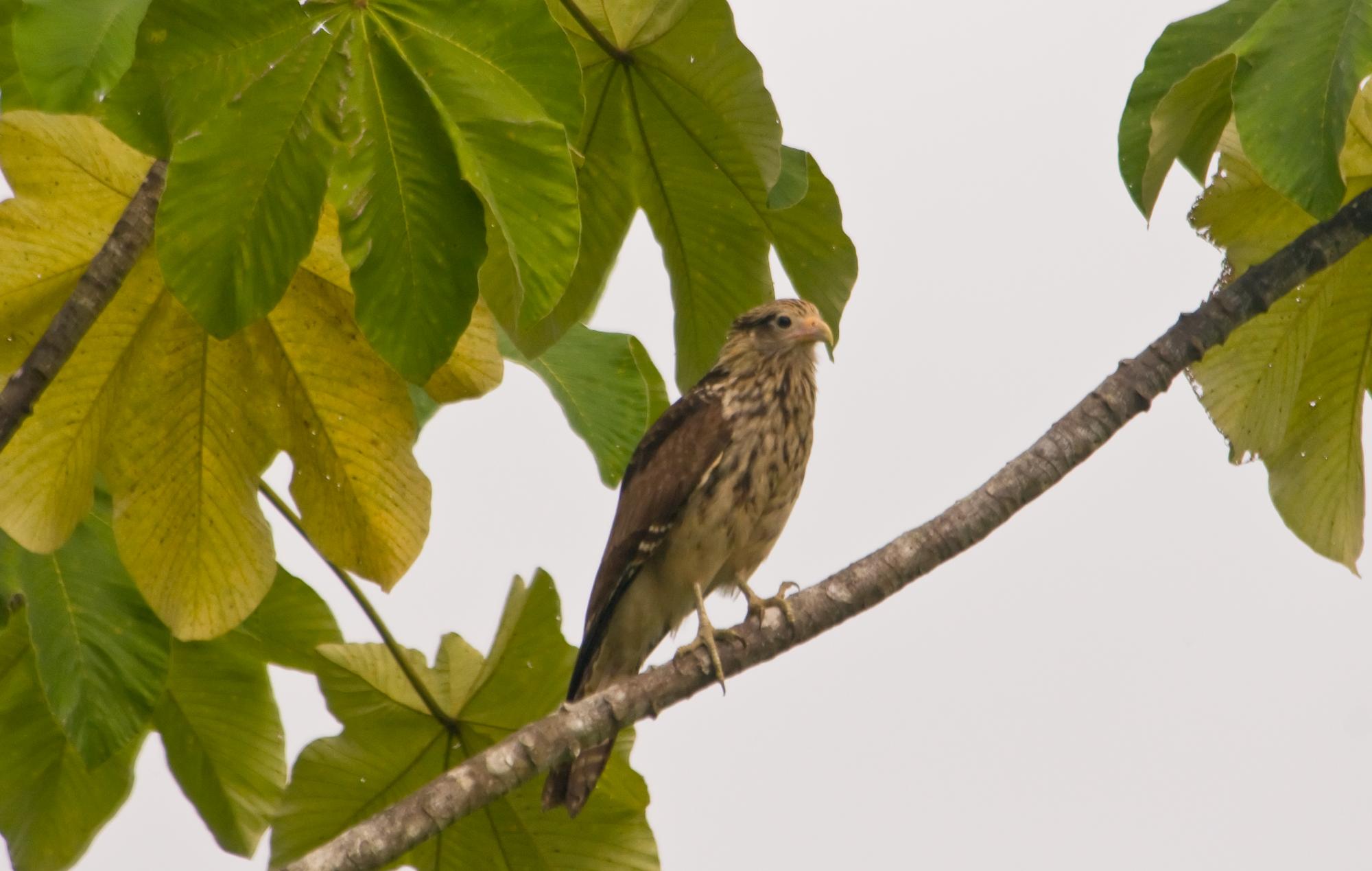
This is a juvenile Yellow-headed Caracara.

#20100107.jpg Add a comment or report a mistake
|
|
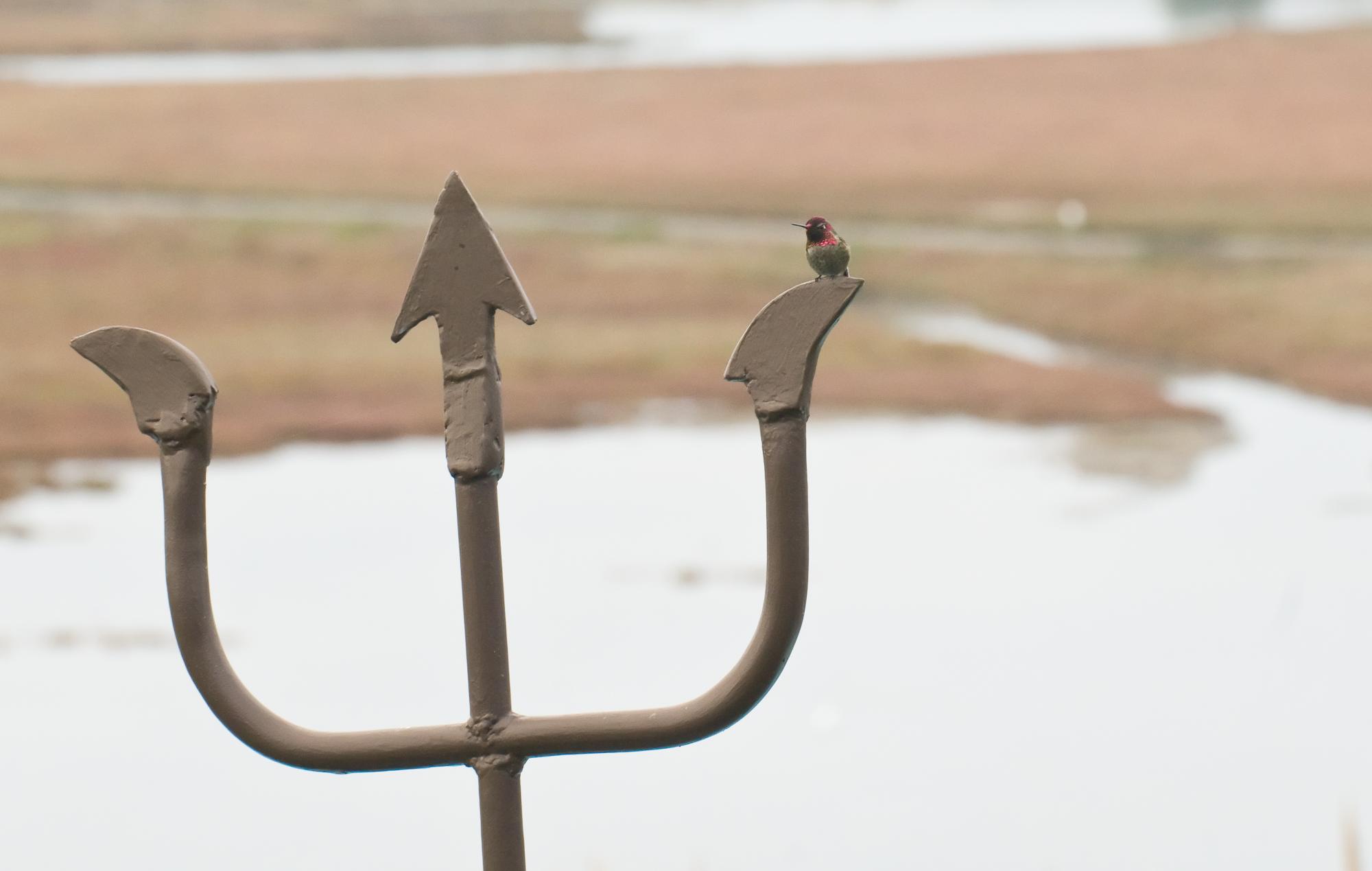
A male Anna's hummingbird perches on Neptunes' trident. I was surprised to see a hummingbird stay still for so long.
Bodega Bay, California • (Photo posted Thursday 14 January, 2010) • (Photo taken 11:08:08 Saturday 8 November, 2008) • © 2010 Terry Costales 
#20100114.jpg Add a comment or report a mistake
|
|
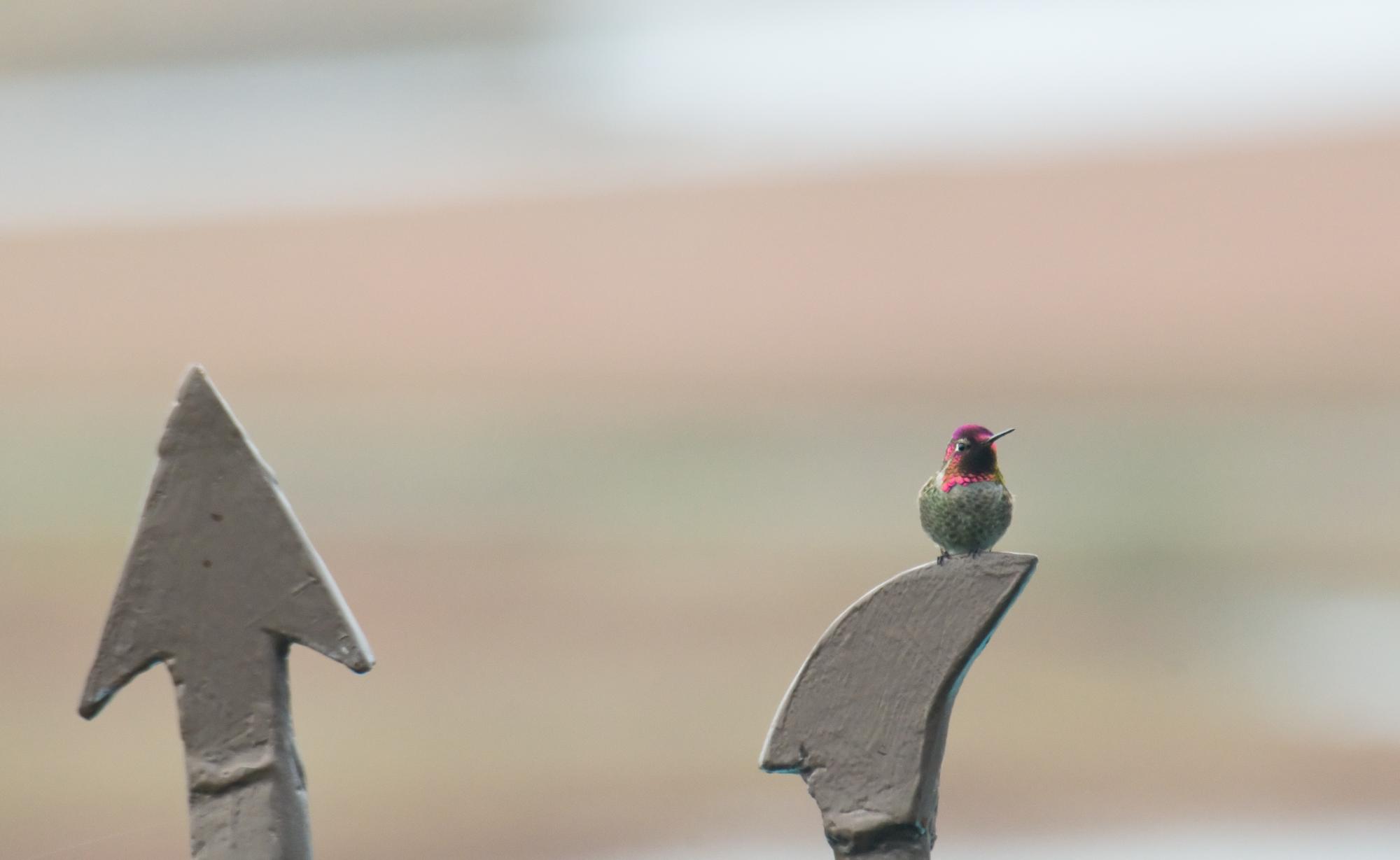
A close-up of the hummingbird I posted yesterday.

#20100115.jpg Add a comment or report a mistake
|
|
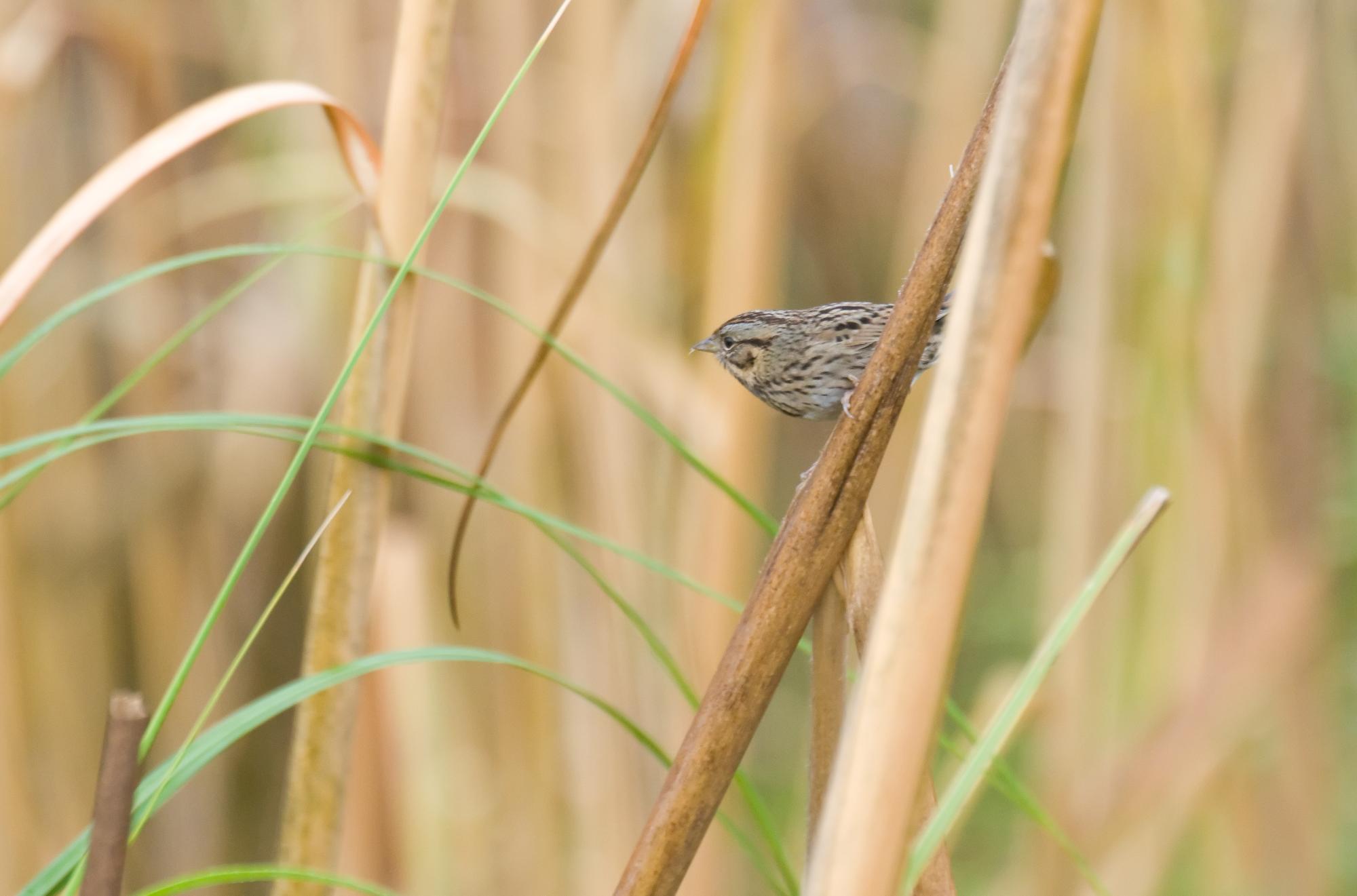
A song sparrow foraging in the wetlands. A tiny, delicate, feathered, everyday miracle.
Bodega Bay, California • (Photo posted Saturday 16 January, 2010) • (Photo taken 10:17:14 Saturday 8 November, 2008) • © 2010 Terry Costales 
#20100116.jpg Add a comment or report a mistake
|
|
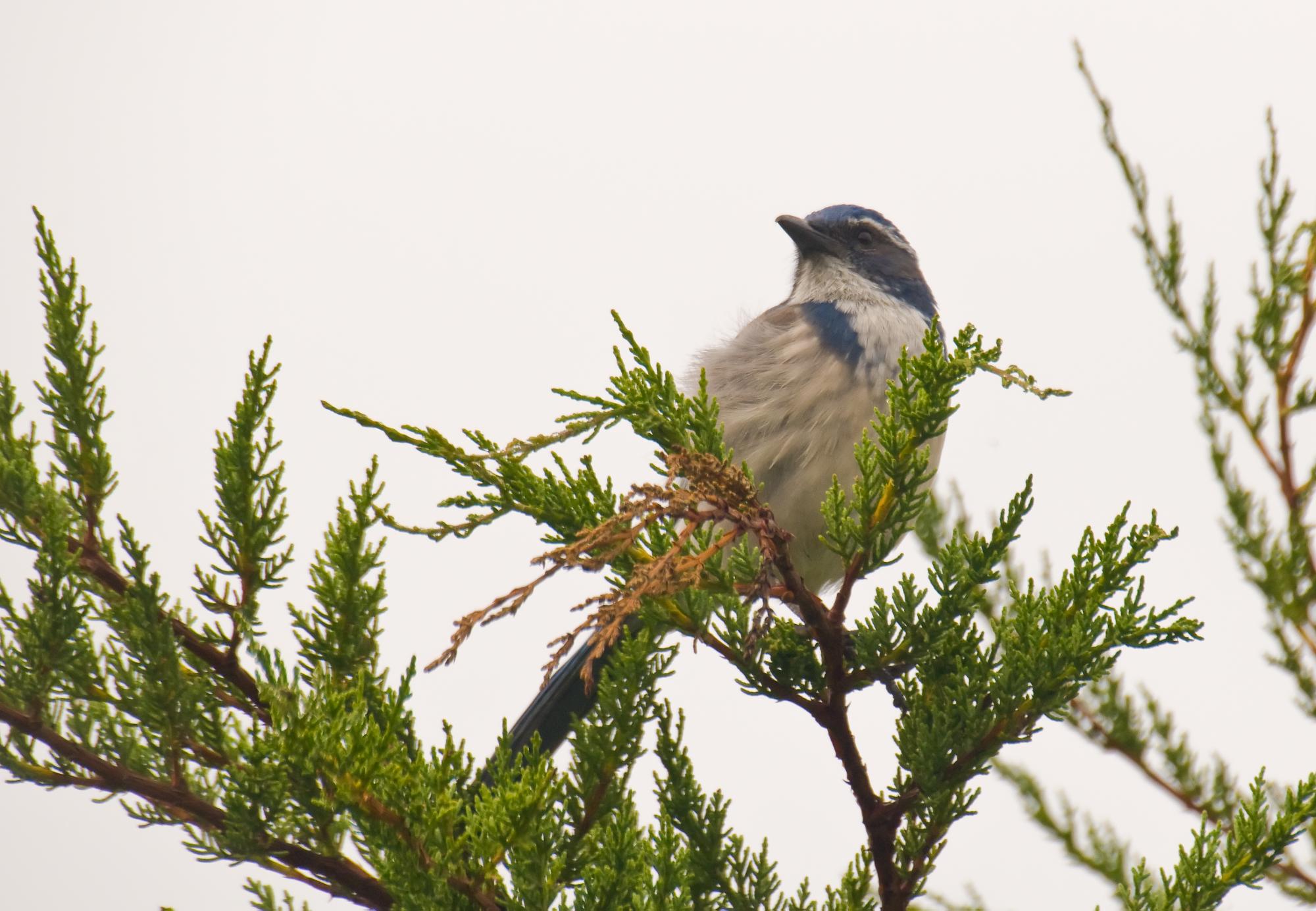
A scrub jay in a tree on a cold overcast day in November.
Bodega Bay, California • (Photo posted Sunday 17 January, 2010) • (Photo taken 10:17:14 Saturday 8 November, 2008) • © 2010 Terry Costales 
#20100117.jpg Add a comment or report a mistake
|
|
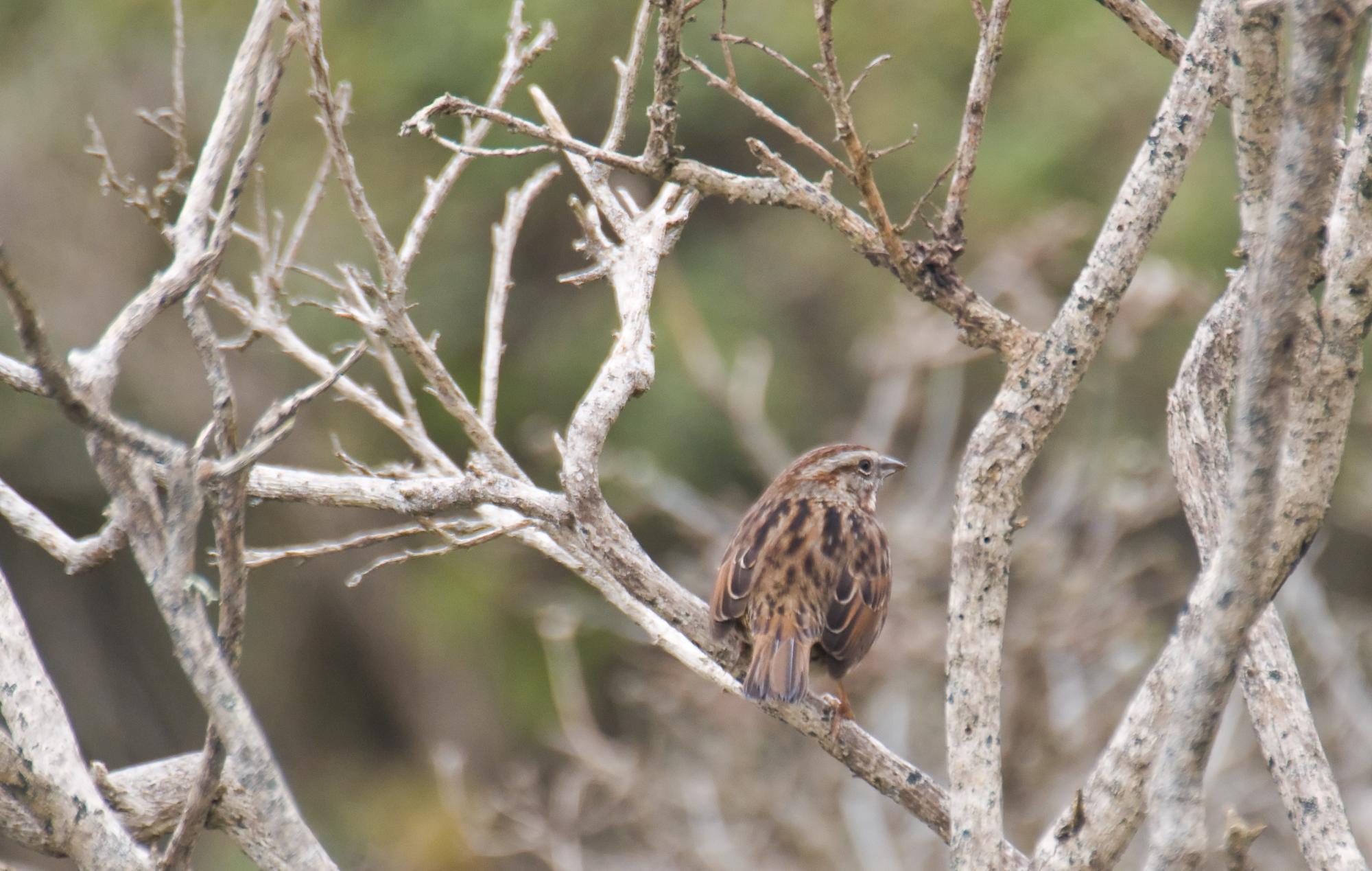 A sparrow on a bare November day.
Bodega Bay, California • (Photo posted Monday 18 January, 2010) • (Photo taken 10:54:32 Saturday 8 November, 2008) • © 2010 Terry Costales 
#20100118.jpg Add a comment or report a mistake
|
|
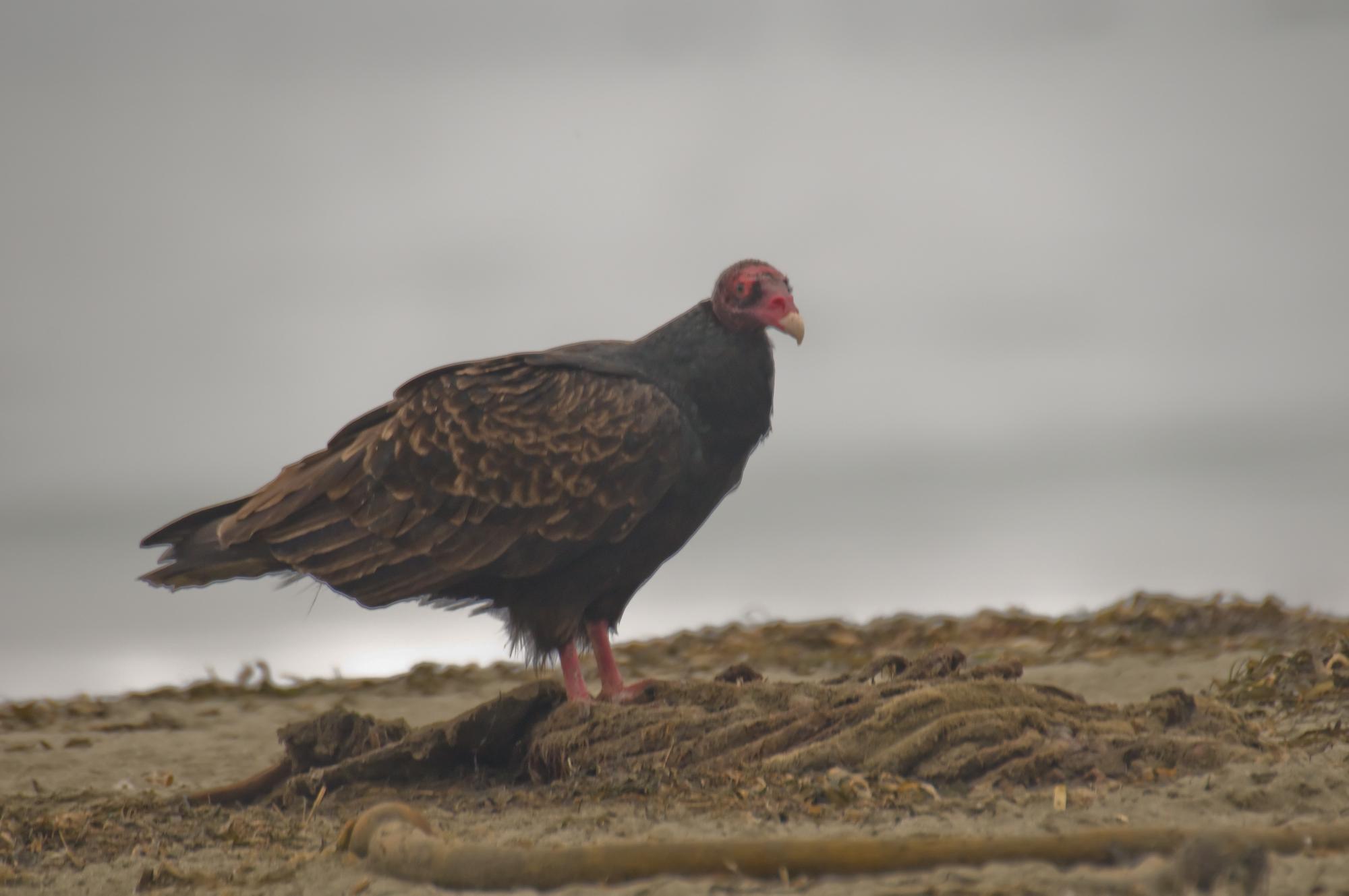
A vulture
Bodega Bay, California • (Photo posted Tuesday 19 January, 2010) • (Photo taken 11:39:26 Saturday 8 November, 2008) • © 2010 Terry Costales 
#20100119.jpg Add a comment or report a mistake
|
|
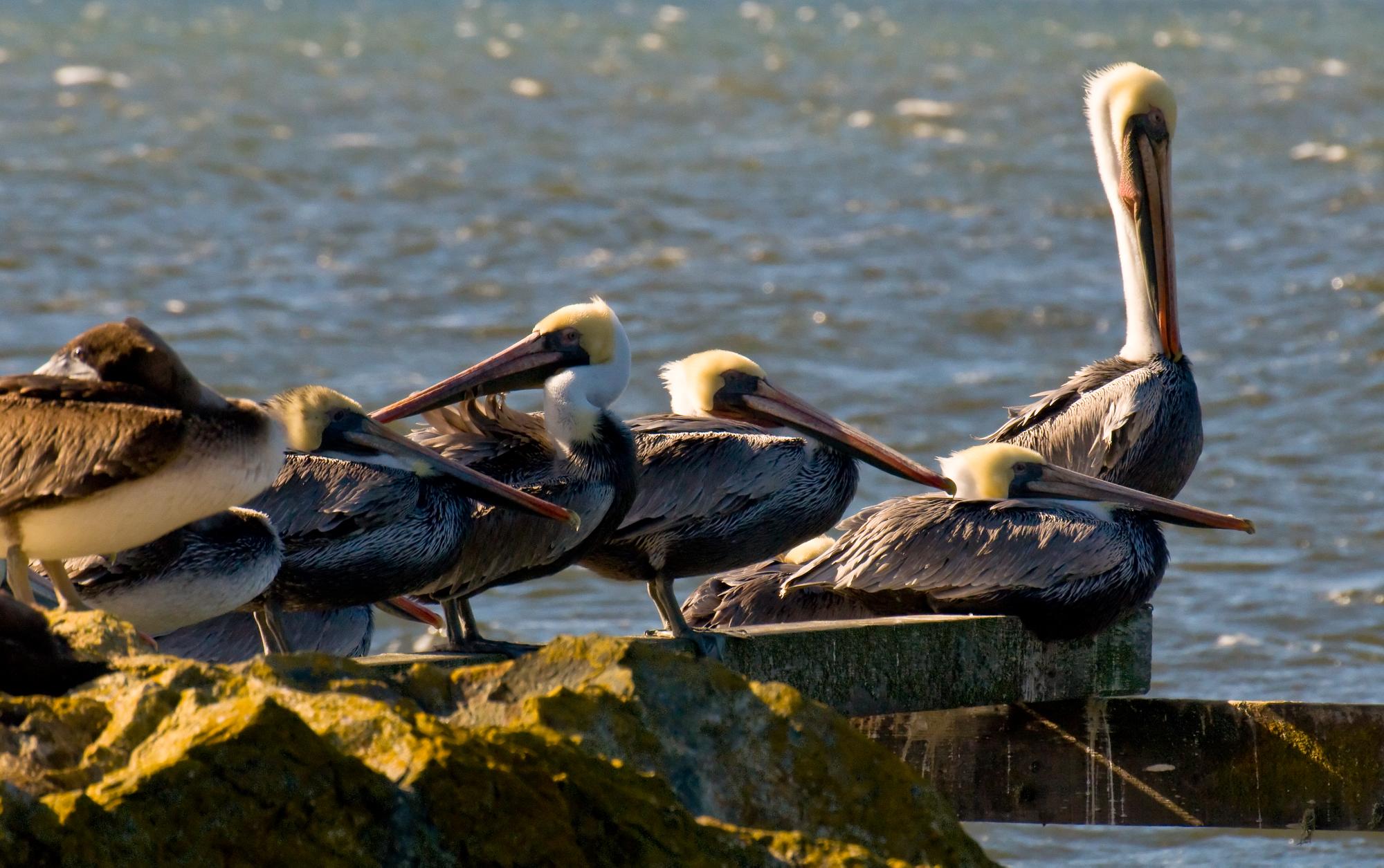
Prehistoric looking pelicans sun and preen in the winter sun.
Bodega Bay, California • (Photo posted Wednesday 20 January, 2010) • (Photo taken 11:23:01 Sunday 9 November, 2008) • © 2010 Terry Costales 
#20100120.jpg Add a comment or report a mistake
|
|
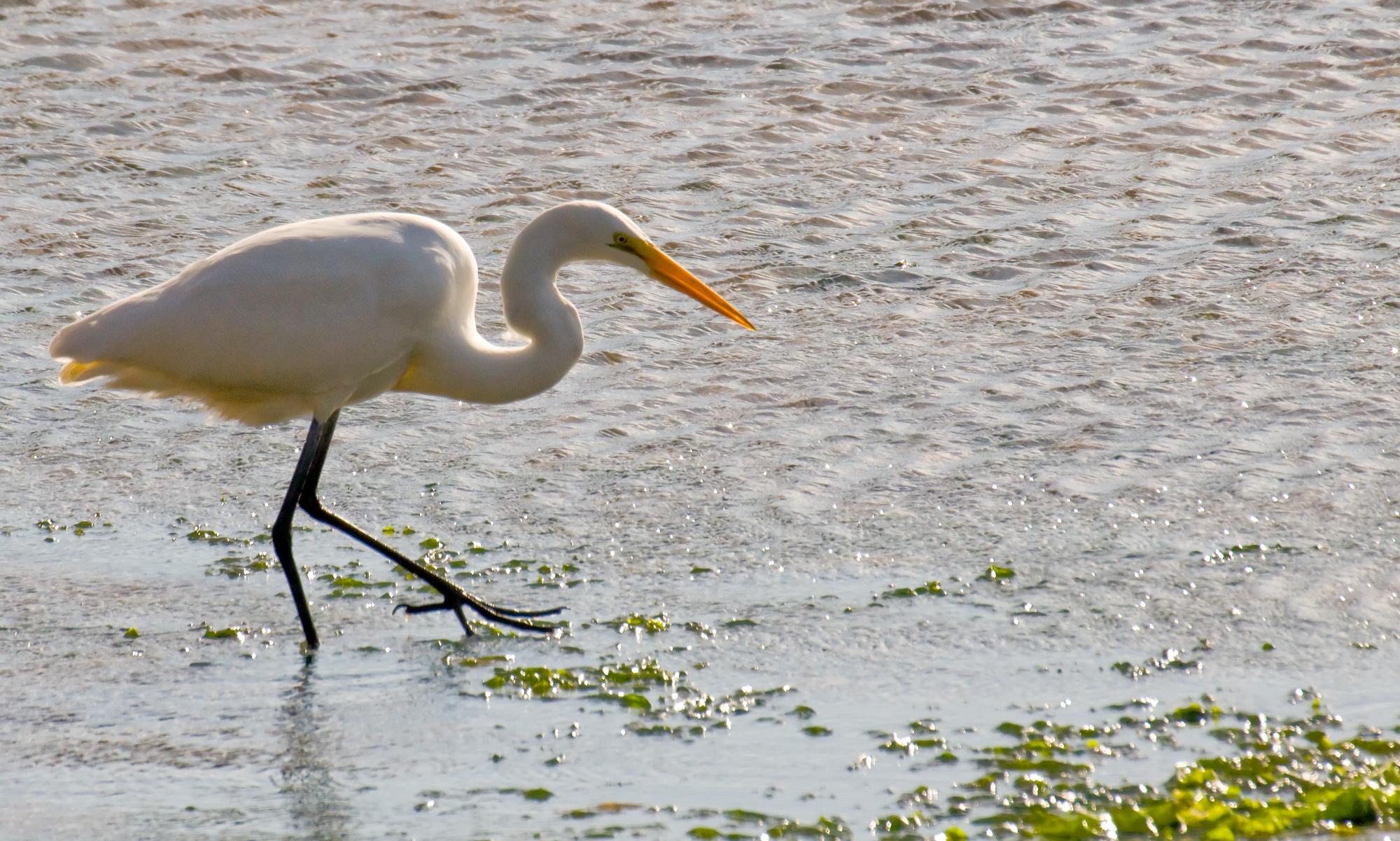
A great egret at the edge of the bay looking for food. It is a very graceful bird whether walking or flying.
Bodega Bay, California • (Photo posted Thursday 21 January, 2010) • (Photo taken 01:40:22 Sunday 9 November, 2008) • © 2010 Terry Costales  #Bodega_Bay
#Bodega_Bay
Add a comment or report a mistake
|
|
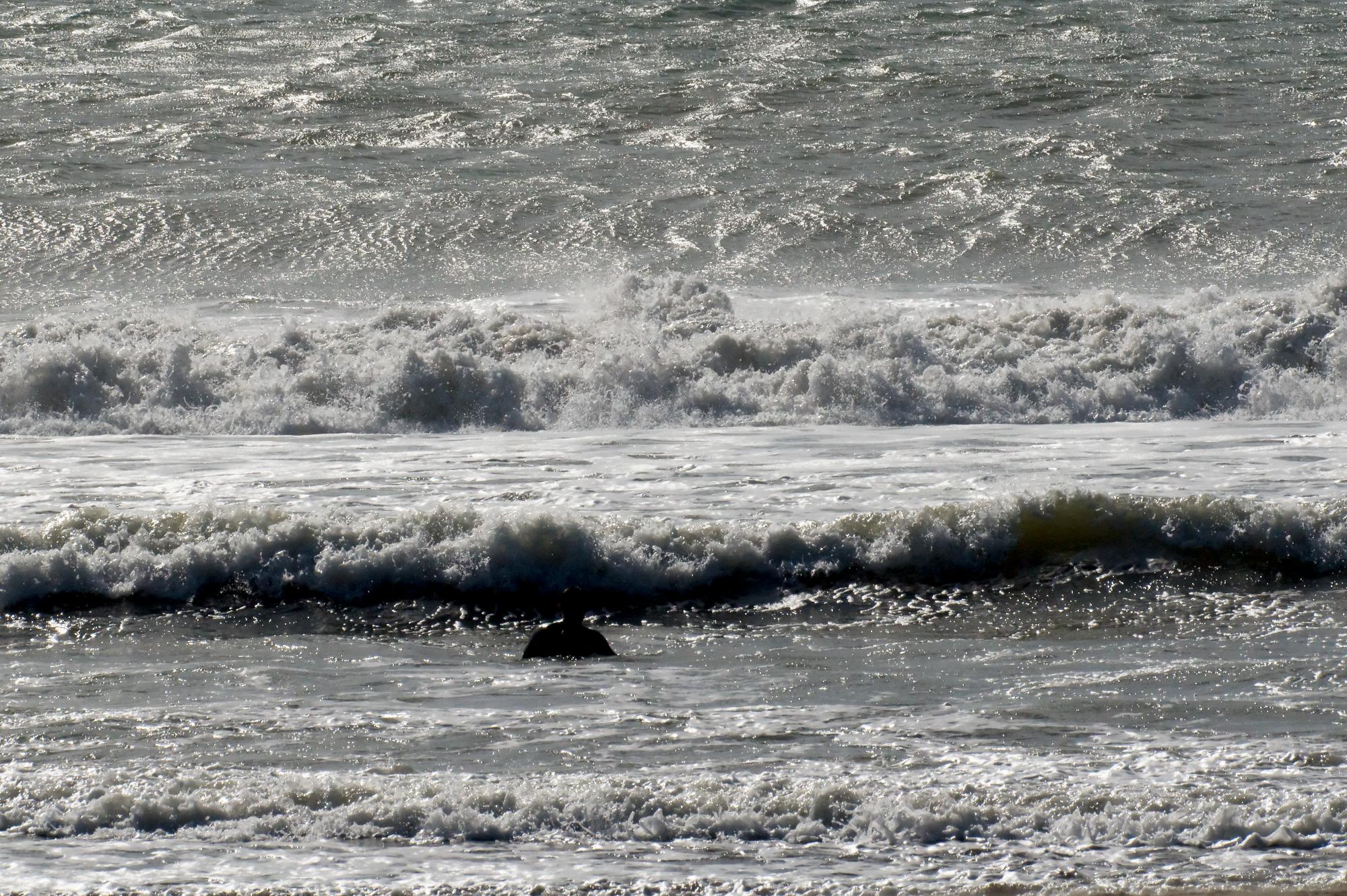 A cold November day didn't keep this foolish man out of the water, but it made a nice photo.
Northern California Coast • (Photo posted Friday 22 January, 2010) • (Photo taken 01:48:35 Sunday 9 November, 2008) • © 2010 Terry Costales  #The_Waves
#The_Waves
Add a comment or report a mistake
|
|
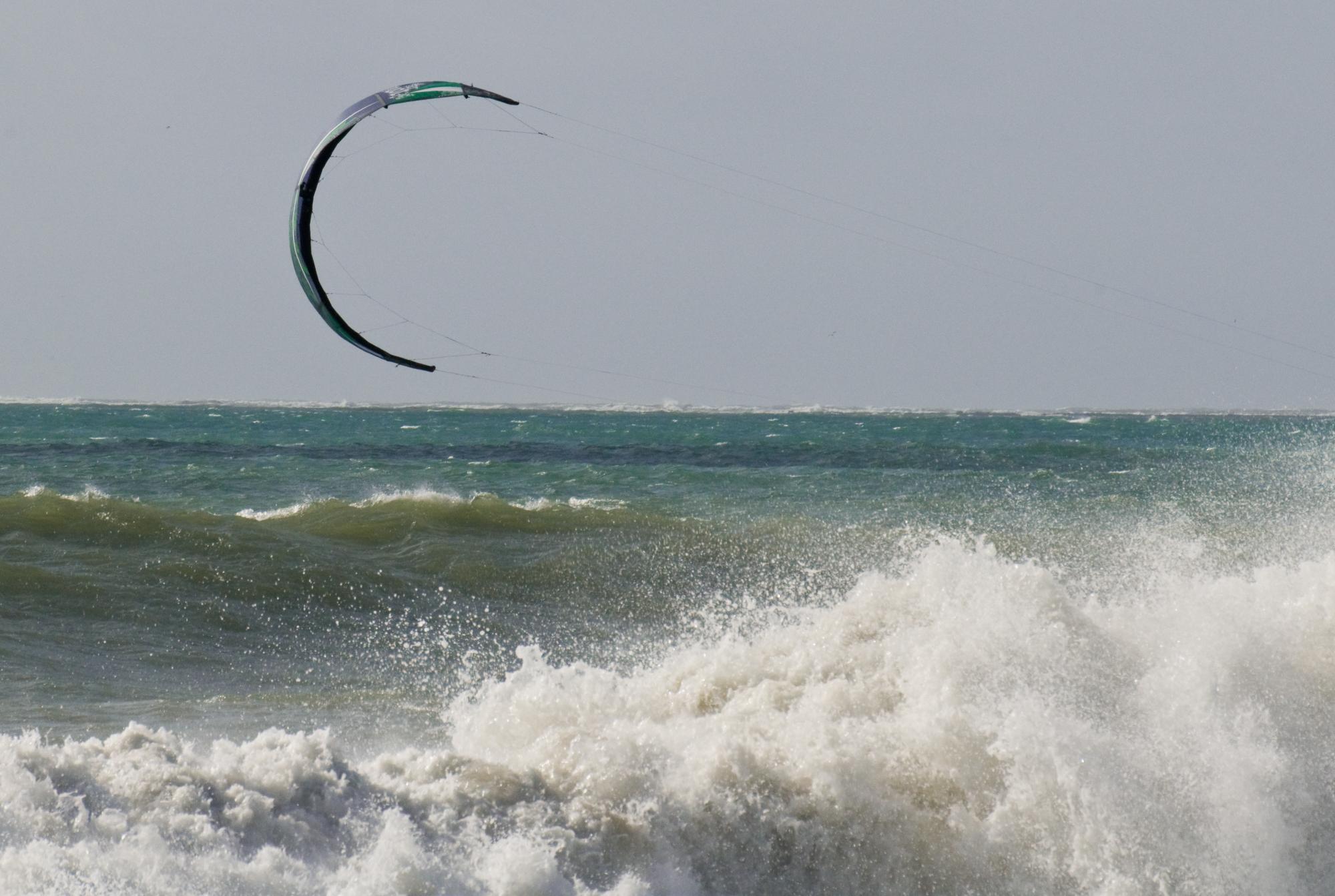 The human animal attached to this kite is on his board offscreen and hanging on for dear life.
Northern California Coast • (Photo posted Sunday 24 January, 2010) • (Photo taken 01:57:01 Sunday, 9 November, 2008) • © 2010 Terry Costales  #20100124_Kite
#20100124_Kite
Add a comment or report a mistake
|
|

Riley is a Cavalier King Charles Spaniel.
The King Charles Spaniel (non-Cavalier) is smaller and has a much flatter or more pug-like face. In the '20s the King Charles was bred back to its original size and look and given the Calvalier addition to its name.
San Francisco, California • (Photo posted Monday 25 January, 2010) • (Photo taken 12:24:08 Wednesday 24, 2008) • © 2010 Terry Costales  #20100125_Riley
#20100125_Riley
Add a comment or report a mistake
|
|
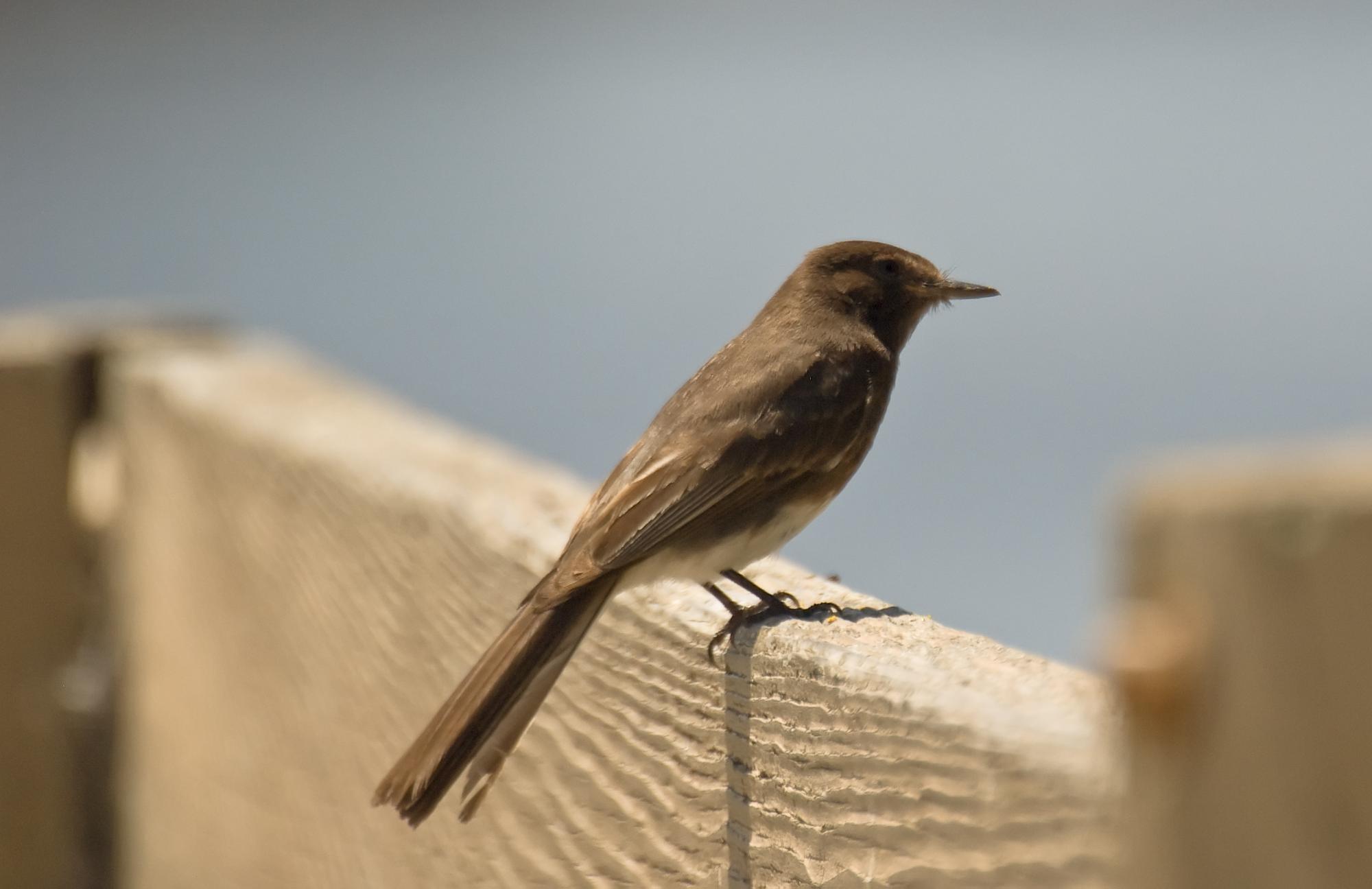
This black phoebe is dark brown and was perched near the Palo Alto duck pond. Phoebes are almost always found near water.
Palo Alto, California • (Photo posted Tuesday 26 January, 2010) • (Photo taken 10:43:50 Monday 19 May, 2008) • © 2010 Terry Costales  #Black_Phoebe
#Black_Phoebe
Add a comment or report a mistake
|
|
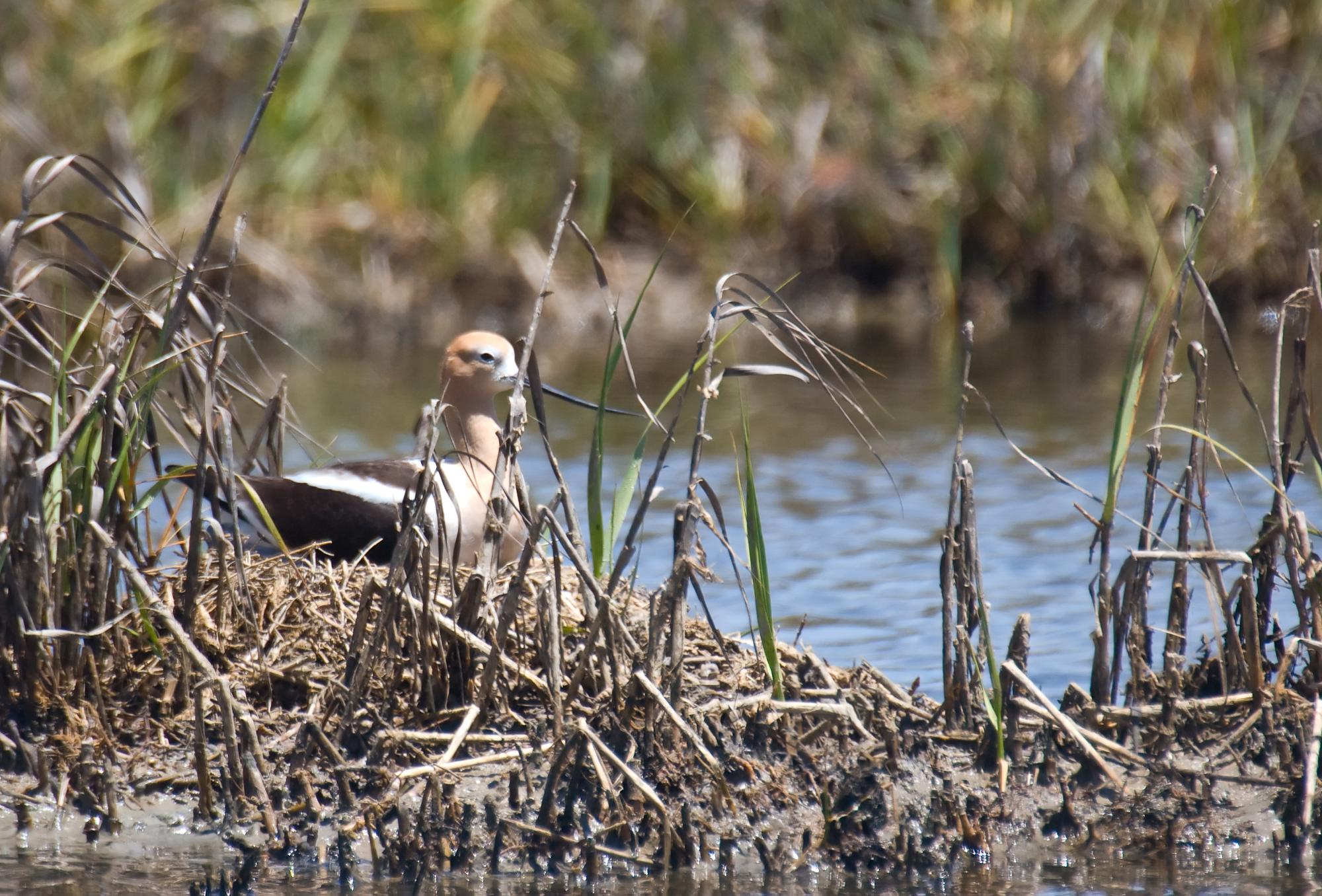
A female avocet sits on her eggs. When the tide comes in this nest will barely be above the water.
 #American_Avocet
#American_Avocet
Add a comment or report a mistake
|
|
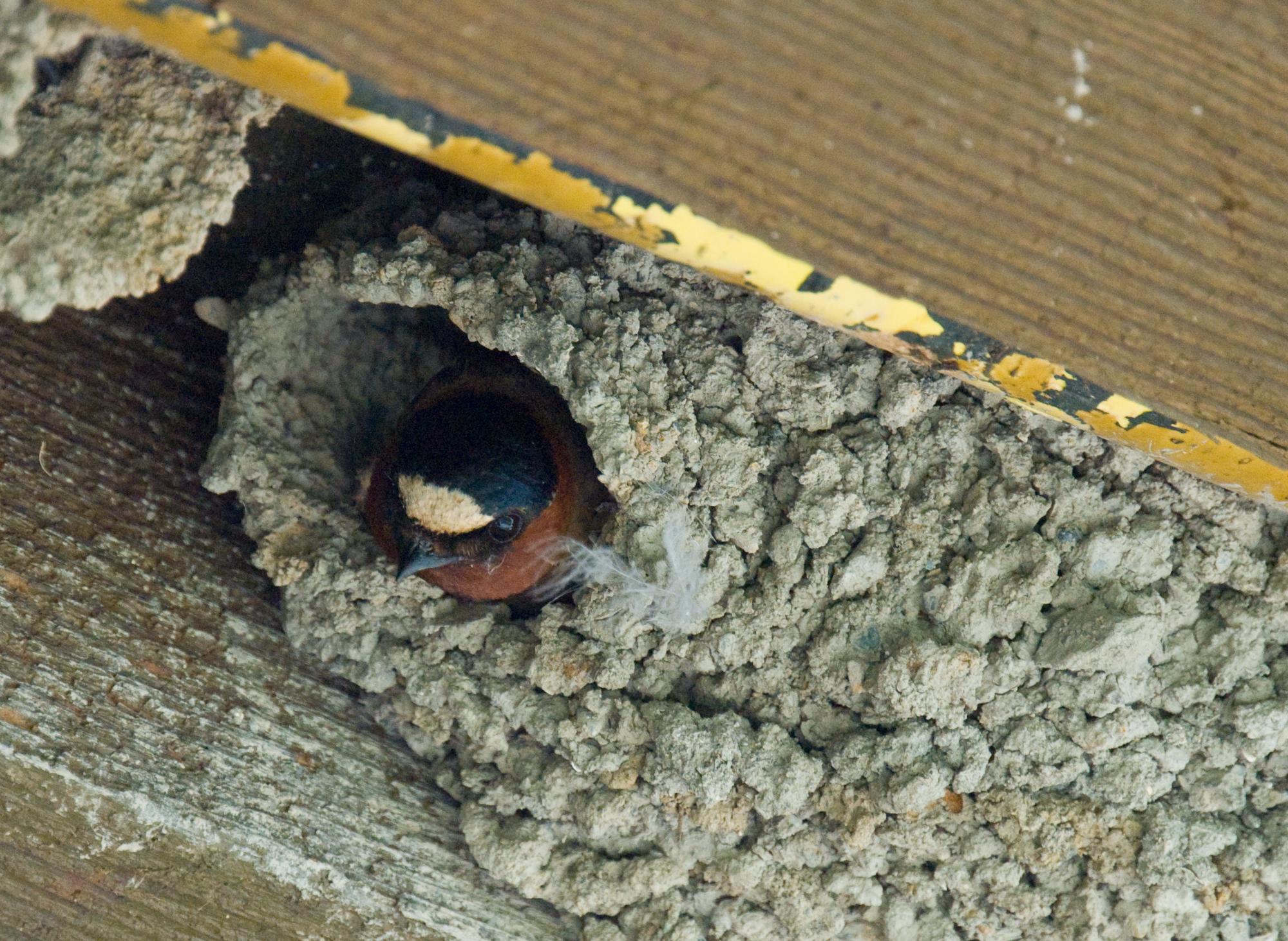
A cliff swallow sits in the opening of its mud nest. Observing me observing him.
Palo Alto, California • (Photo posted Thursday 28 January, 2010) • (Photo taken 11:12:46 Monday 19 May, 2008) • © 2010 Terry Costales  #Cliff_Swallow
#Cliff_Swallow
Add a comment or report a mistake
|
|
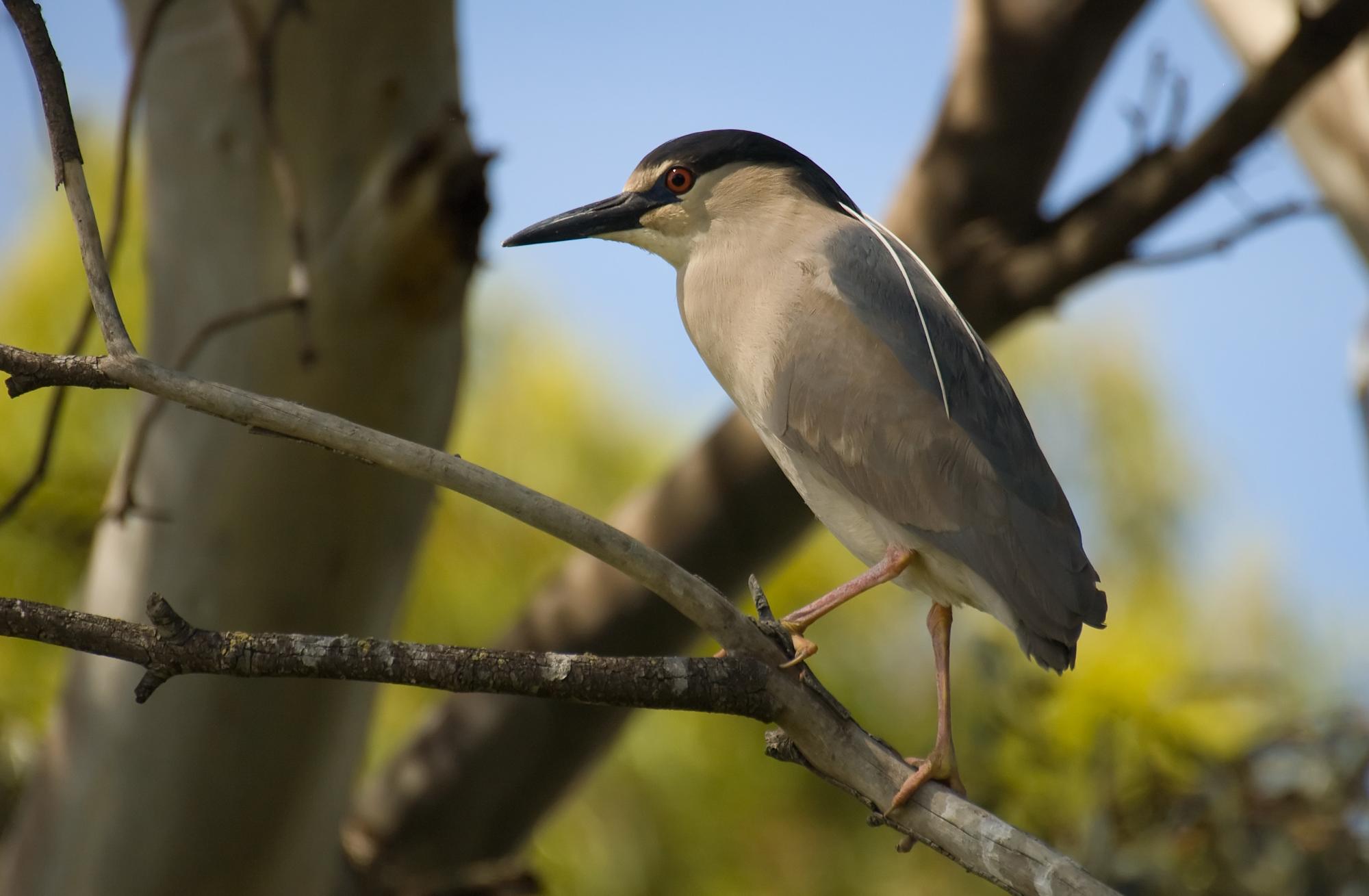
An adult night heron in full breeding plumage showing off its pink legs which are yellow the rest of the year.
Palo Alto, California • (Photo posted Friday 29 January, 2010) • (Photo taken 12:53:23 Monday, 19 May, 2008) • © 2010 Terry Costales  #Night_Heron
#Night_Heron
Add a comment or report a mistake
|
|
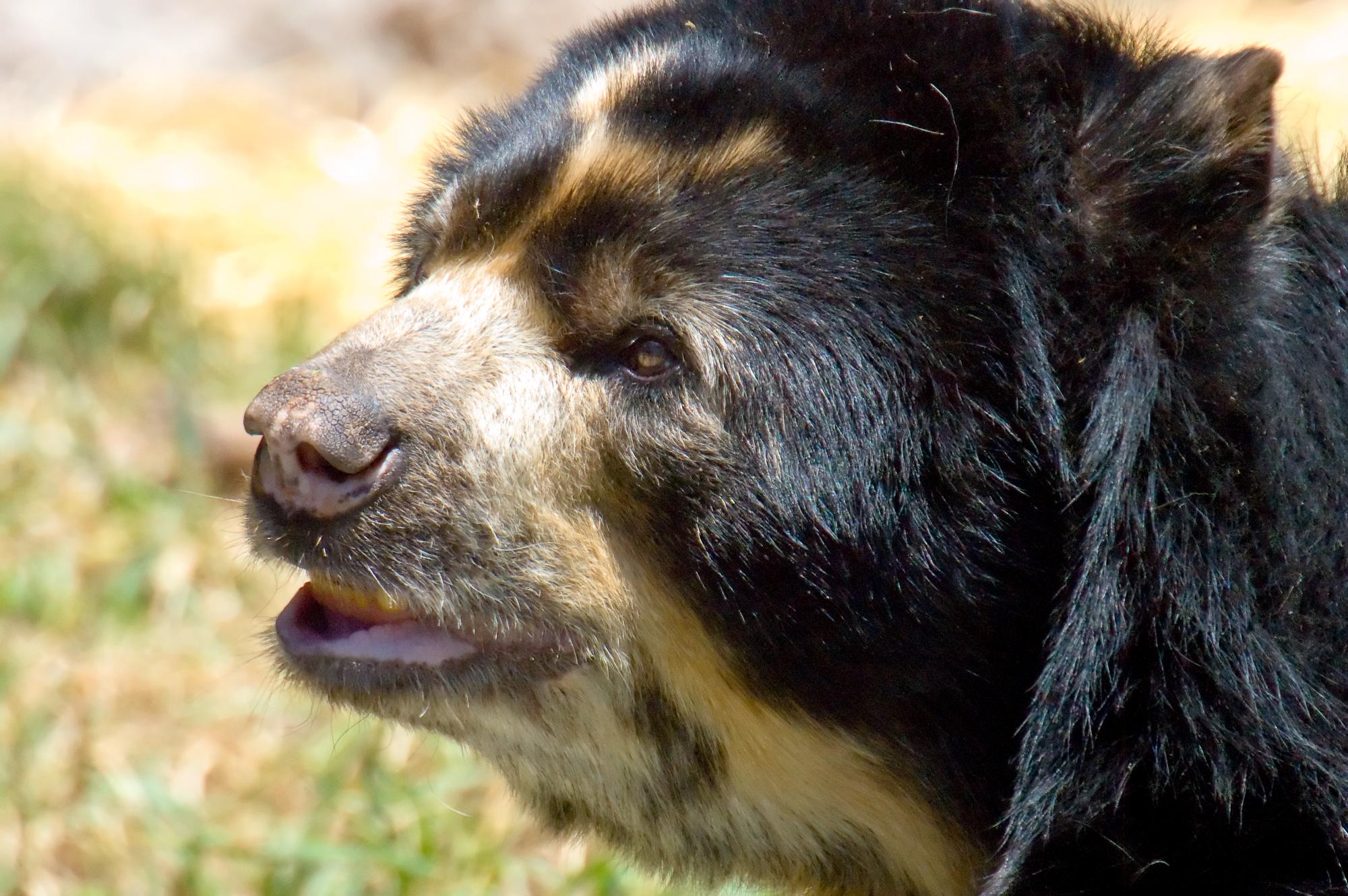
The Spectacled Bear is the only bear that comes from South America. I hope this unique and beautiful endangered bear survives.
San Francisco Zoo, San Francisco, California • (Photo posted Saturday 30 January, 2010) • (Photo taken 11:31:13 Saturday 7 June, 2008) • © 2010 Terry Costales  #Spectacled_Bear
#Spectacled_Bear
Add a comment or report a mistake
|
|
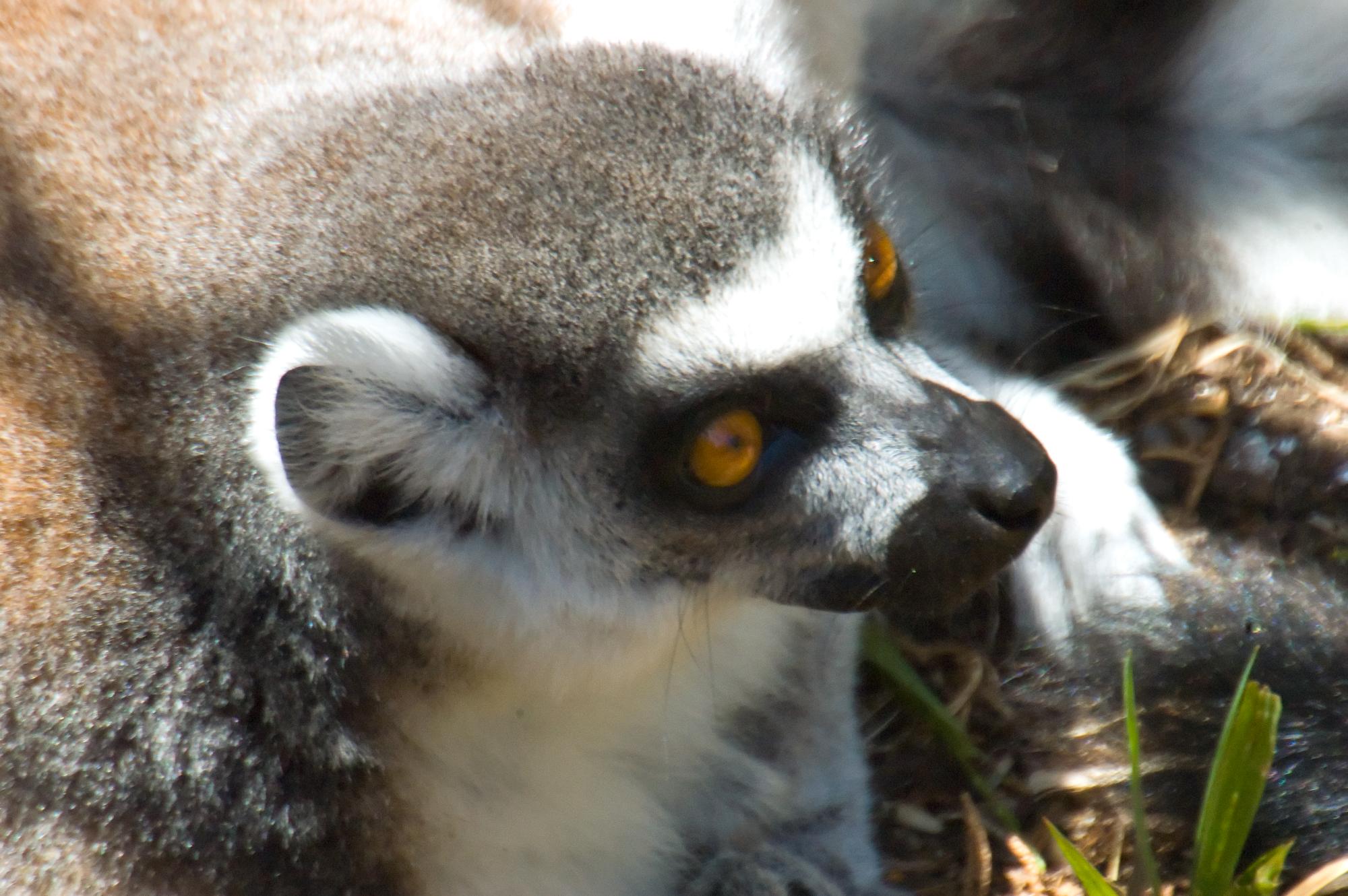
Lemurs are one of my favorite mammals. Every house in heaven should have one.
San Francisco Zoo, San Francisco, California • (Photo posted Sunday 31 January, 2010) • (Photo taken 12:26:32 Saturday 7 June, 2008) • © 2010 Terry Costales  #Ring-tailed_Lemur
#Ring-tailed_Lemur
Add a comment or report a mistake
|
|
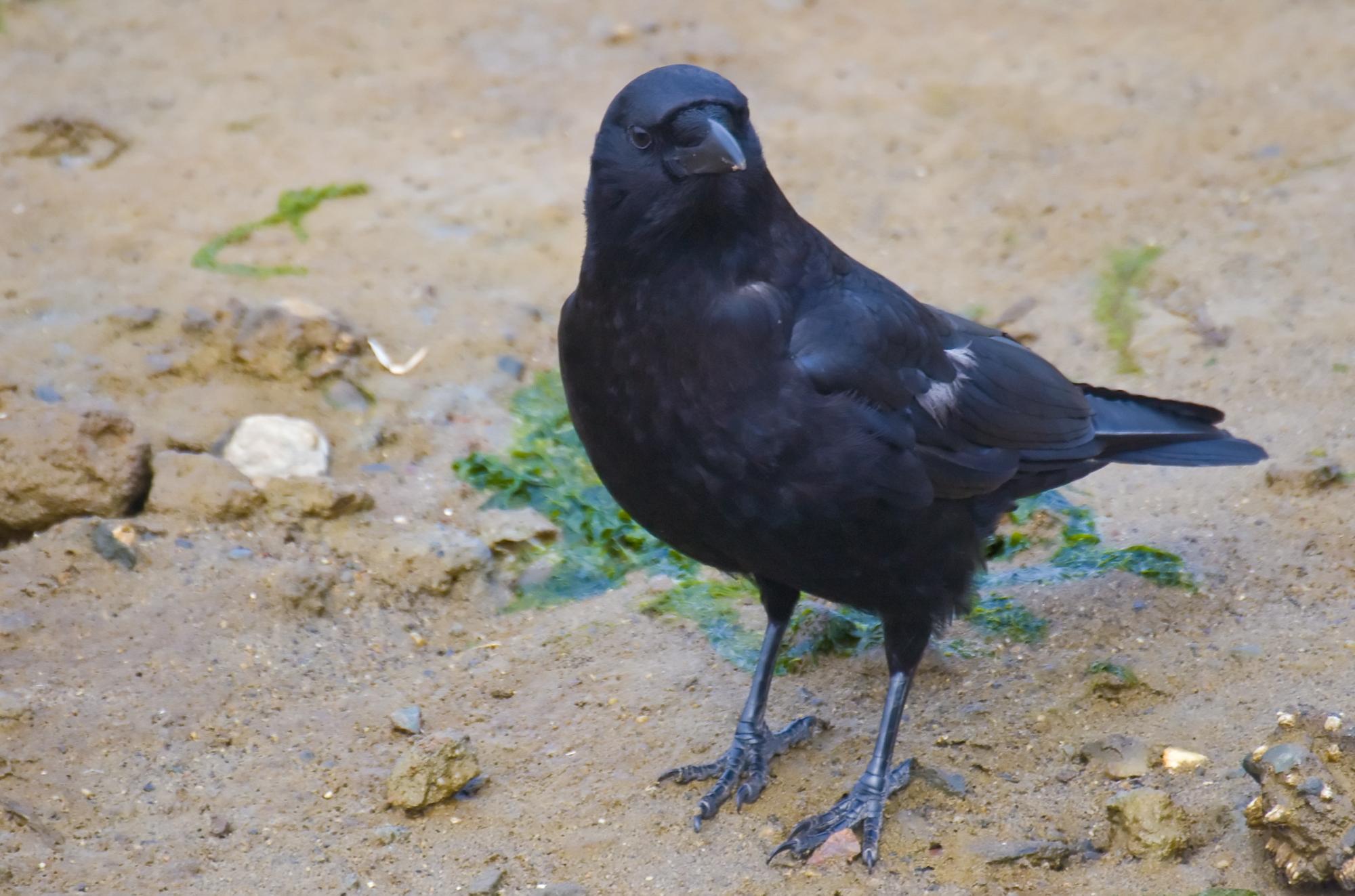
Looking at this crow's feet you can really see the dinosaur common ancestor. I'm grateful most birds are small as I wouldn't want to try to photograph a crow the size of a T-rex.
 #20100201_Crow
#20100201_Crow
Add a comment or report a mistake
|
|
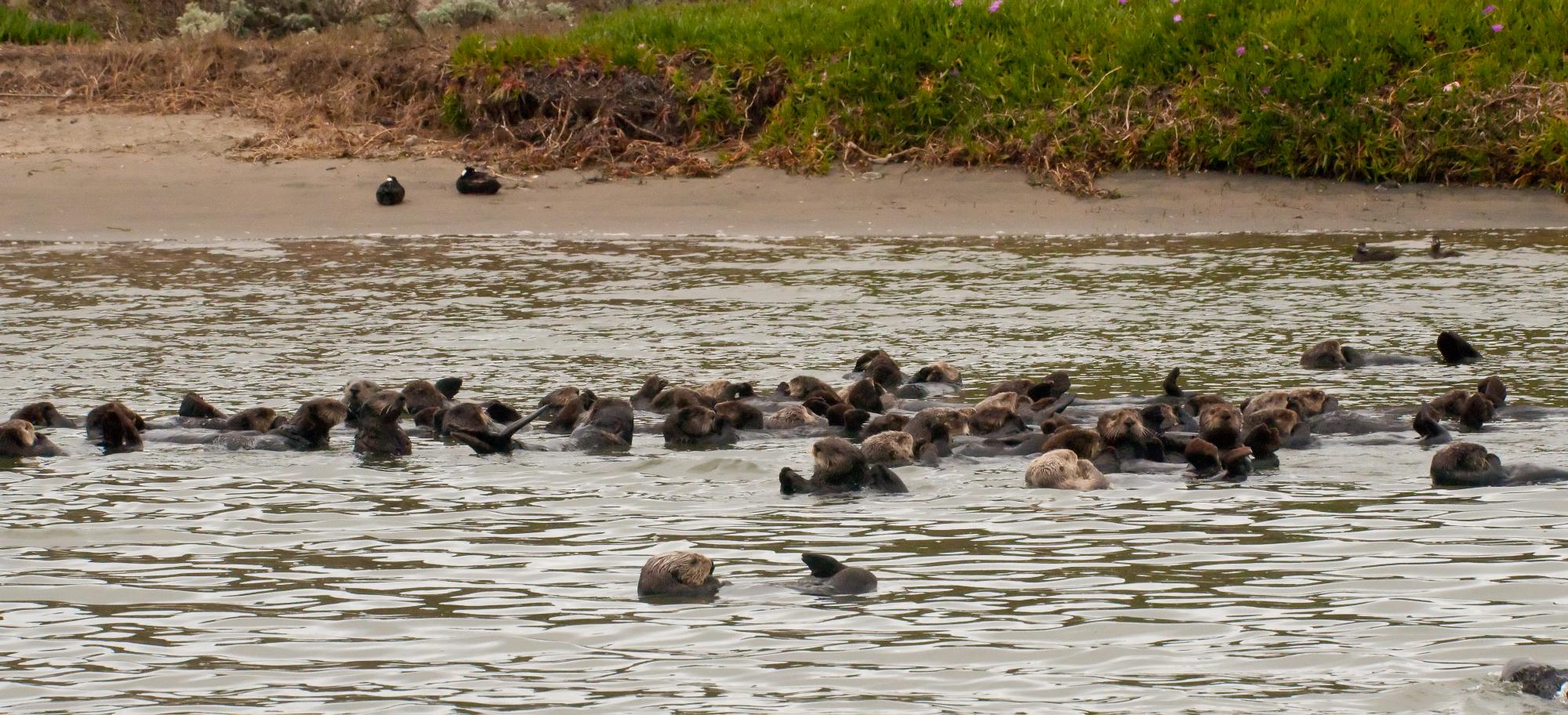
For an unforgettable wildlife experience, I highly recommend the Elkhorn Slough Safari
This photo shows a raft of about eighty sea otters. Raft is the official label for a bunch of otters hanging out together, looking like a raft. In addition to sea mammals, I also photographed sixteen species of birds. The trip was two hours of wildlife bliss. There were a few other bird species I got to see, but they were too distant for me to get a good photo of them.
Elkhorn Slough, Moss Landing, California • (Photo posted Thursday 18 March, 2010) • (Photo taken 09:58:33 Friday 12 March, 2010) • © 2010 Terry Costales  #Sea_Otter
#Sea_Otter
Add a comment or report a mistake
|
|
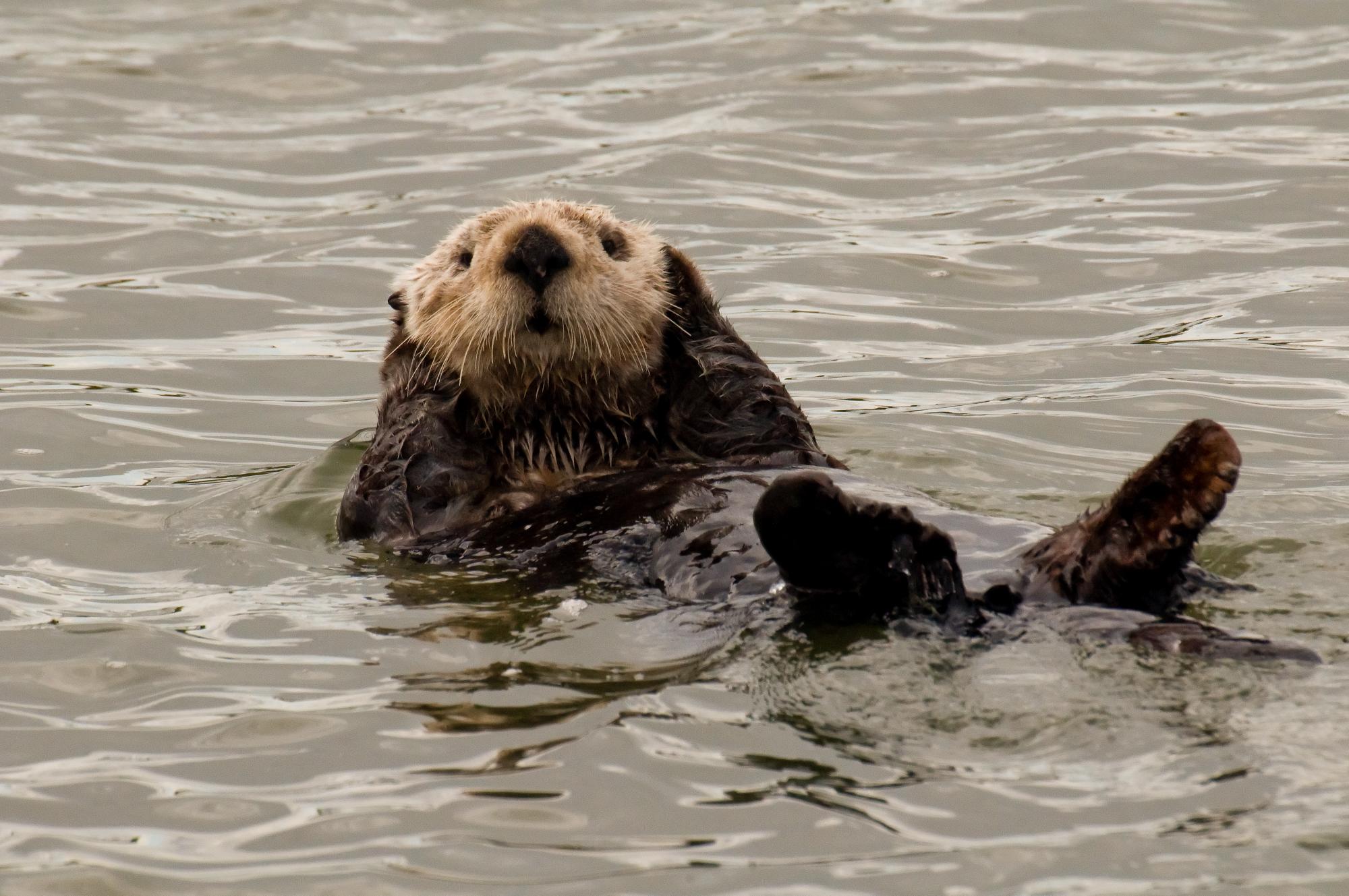 Here is an older otter, recognized by the light colored fur on its face. It is grooming itself after eating. Otters must have one of the cutest faces in the animal kingdom
Elkhorn Slough, Moss Landing, California • (Photo posted Friday 19 March, 2010) • (Photo taken 10:01:57 Friday 12 March, 2010) • © 2010 Terry Costales  #Otter_Groomed
#Otter_Groomed
Add a comment or report a mistake
|
|
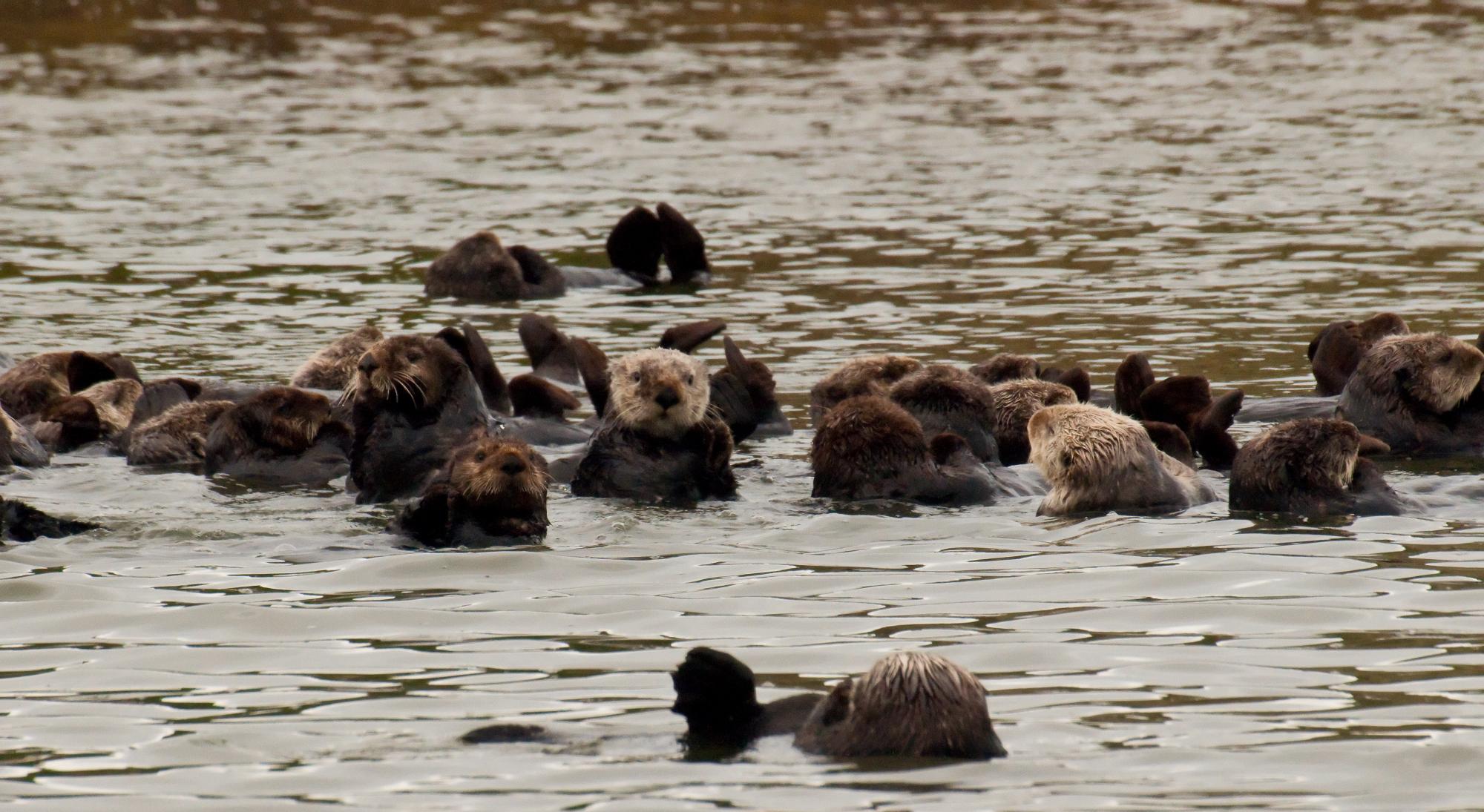
This photo shows just part of a very large raft of otters we saw in the Elkhorn Slough.
Elkhorn Slough, Moss Landing, California • (Photo posted Saturday 20 March, 2010) • (Photo taken 09:58:04 Friday 12 March, 2010) • © 2010 Terry Costales  #Sea_Otter
#Sea_Otter
Add a comment or report a mistake
|
|
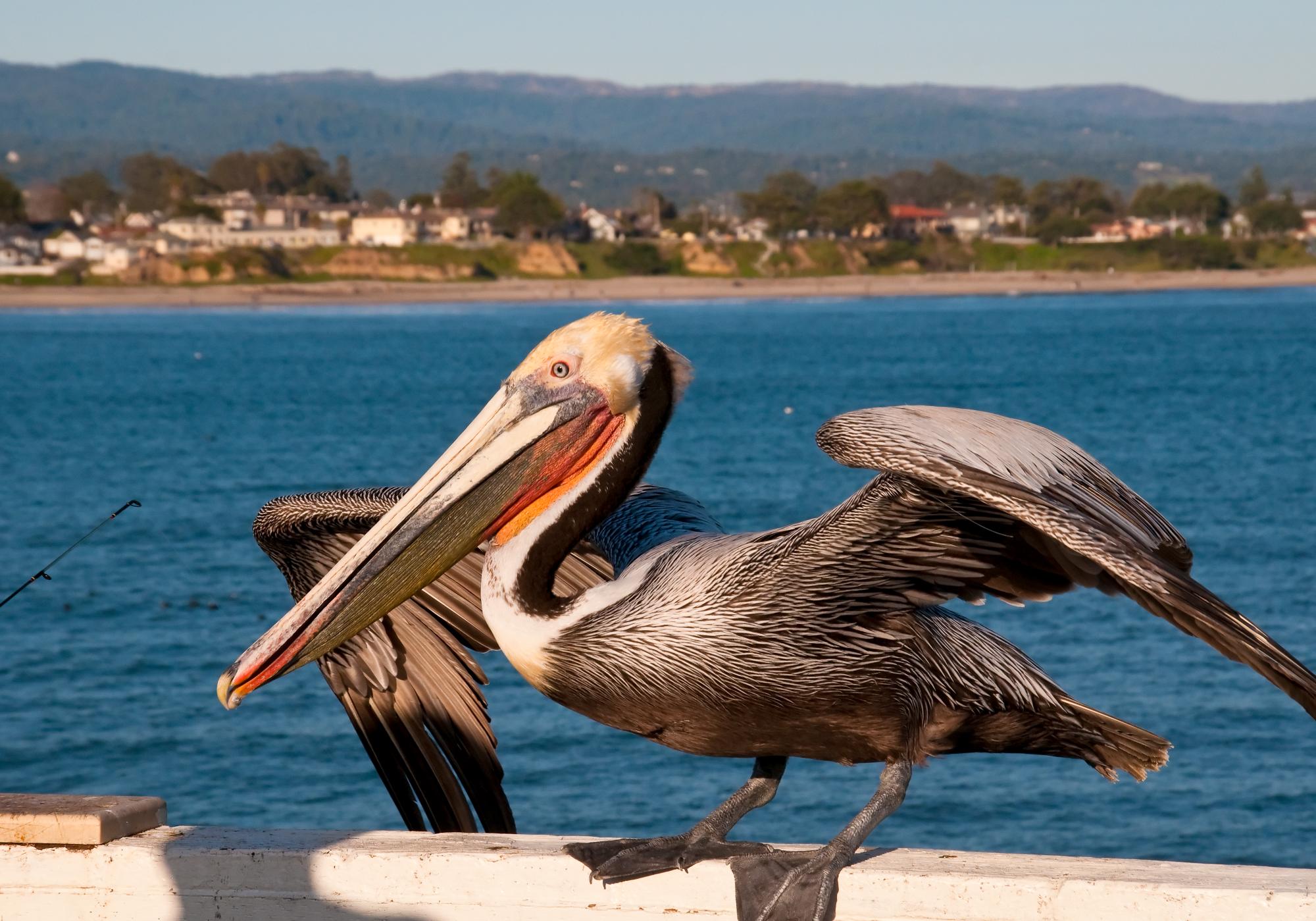
It was beautiful day in Santa Cruz and I had been photographing the sea lions when this pelican landed a few feet away on the pier railing. If there was ever a compelling visual argument for birds being the modern descendants of dinosaurs, it's the pelican. I could easily imagine them flying just out of reach above the snapping jaws of some aquatic sea monster.
Santa Cruz, California • (Photo posted Sunday 21 March, 2010) • (Photo taken 16:54:42 Wednesday 10 March, 2010) • © 2010 Terry Costales  #Brown_Pelican
#Brown_Pelican
Add a comment or report a mistake
|
|
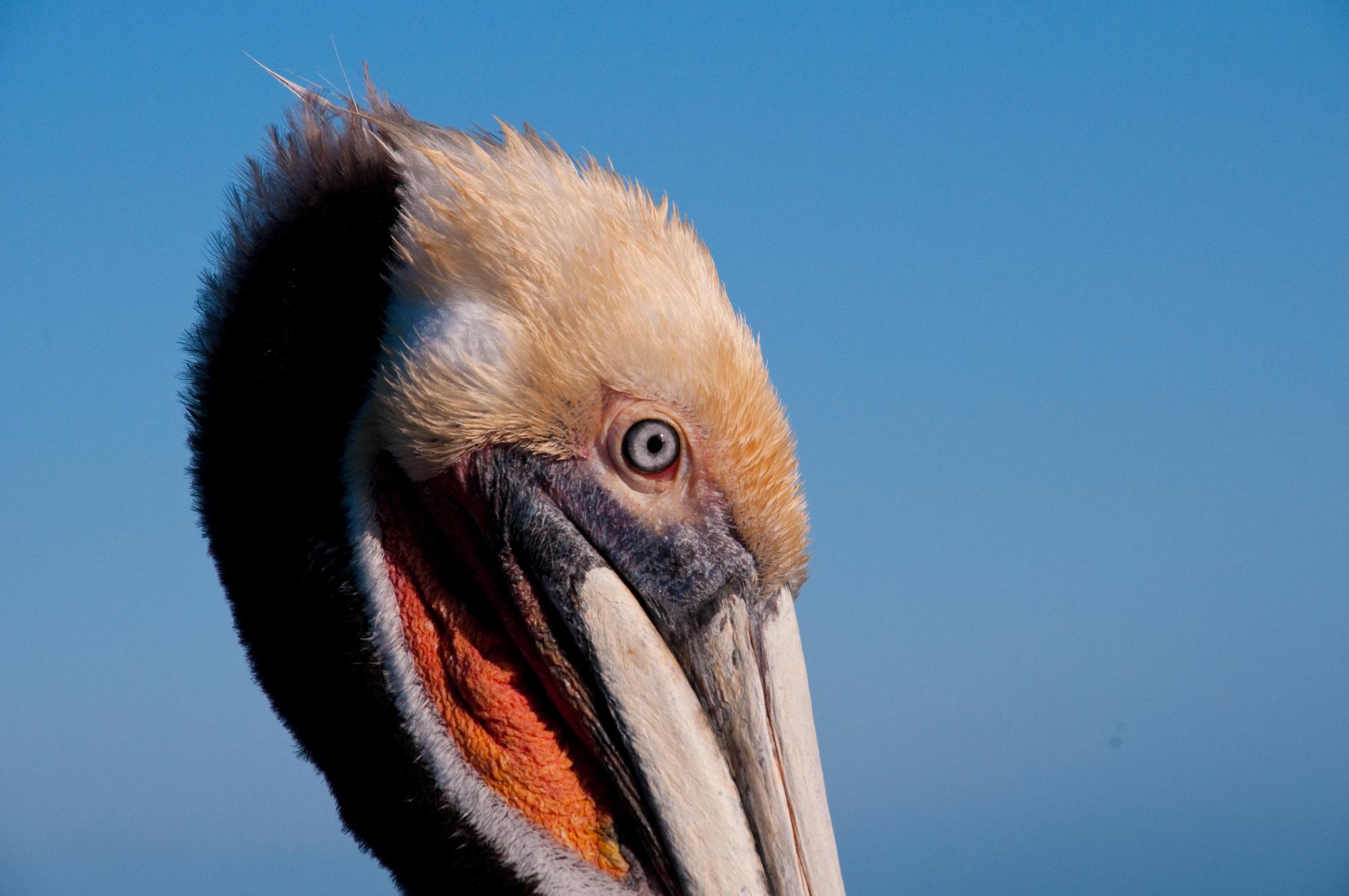
This is a close-up of the same Pelican I posted yesterday,
Santa Cruz, California • (Photo posted Sunday 21 March, 2010) • (Photo taken 16:54:42 Wednesday 10 March, 2010) • © 2010 Terry Costales  #Pelican_Head
#Pelican_Head
Add a comment or report a mistake
|
|
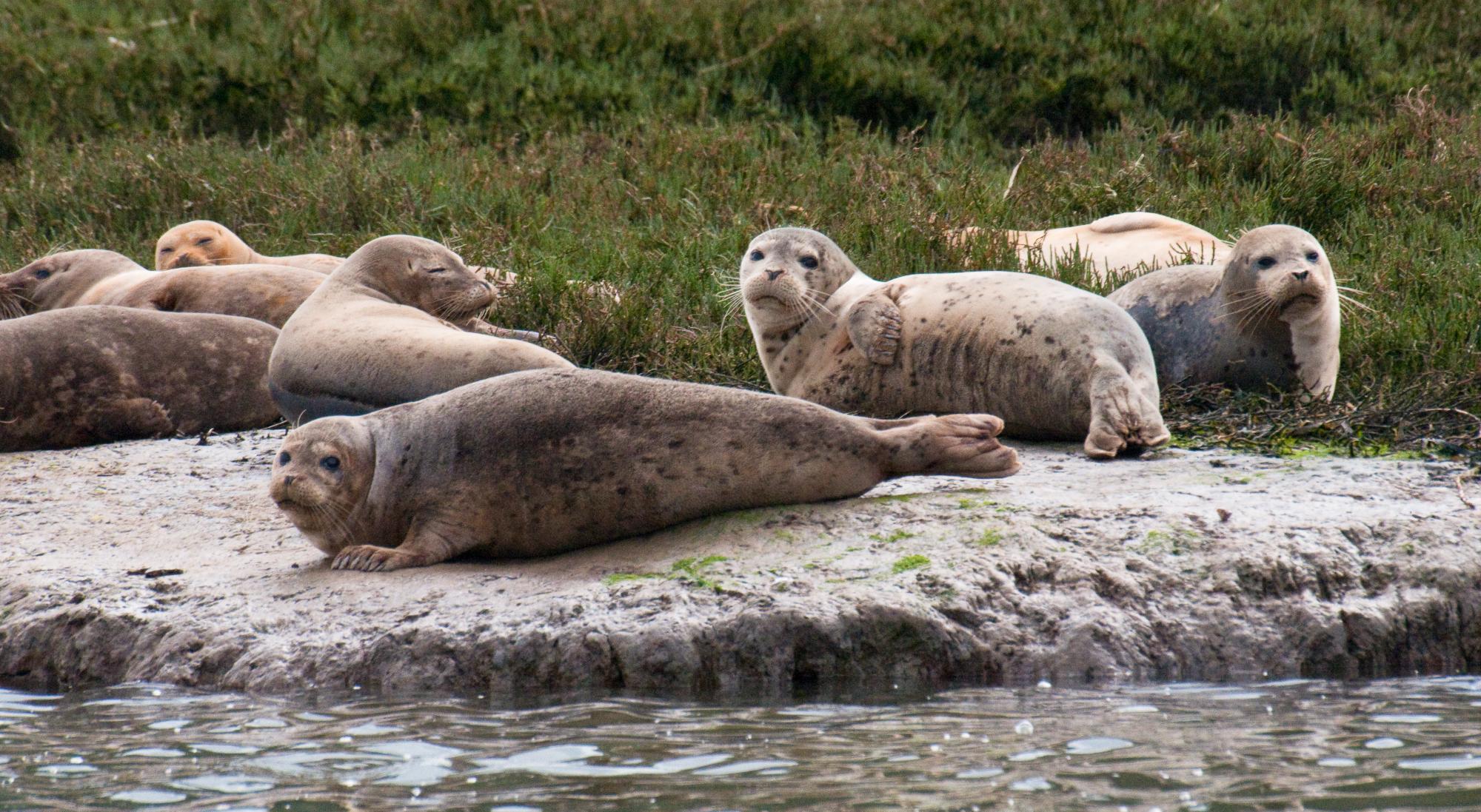
Harbor seals We saw close to eighty harbor seals that day, most of them lying on shore watching us watching them.
Elkhorn Slough, Moss Landing, California • (Photo posted Tuesday 23 March, 2010) • (Photo taken 09:23:44 Friday 12 March, 2010) • © 2010 Terry Costales  #Harbor_Seal
#Harbor_Seal
Add a comment or report a mistake
|
|
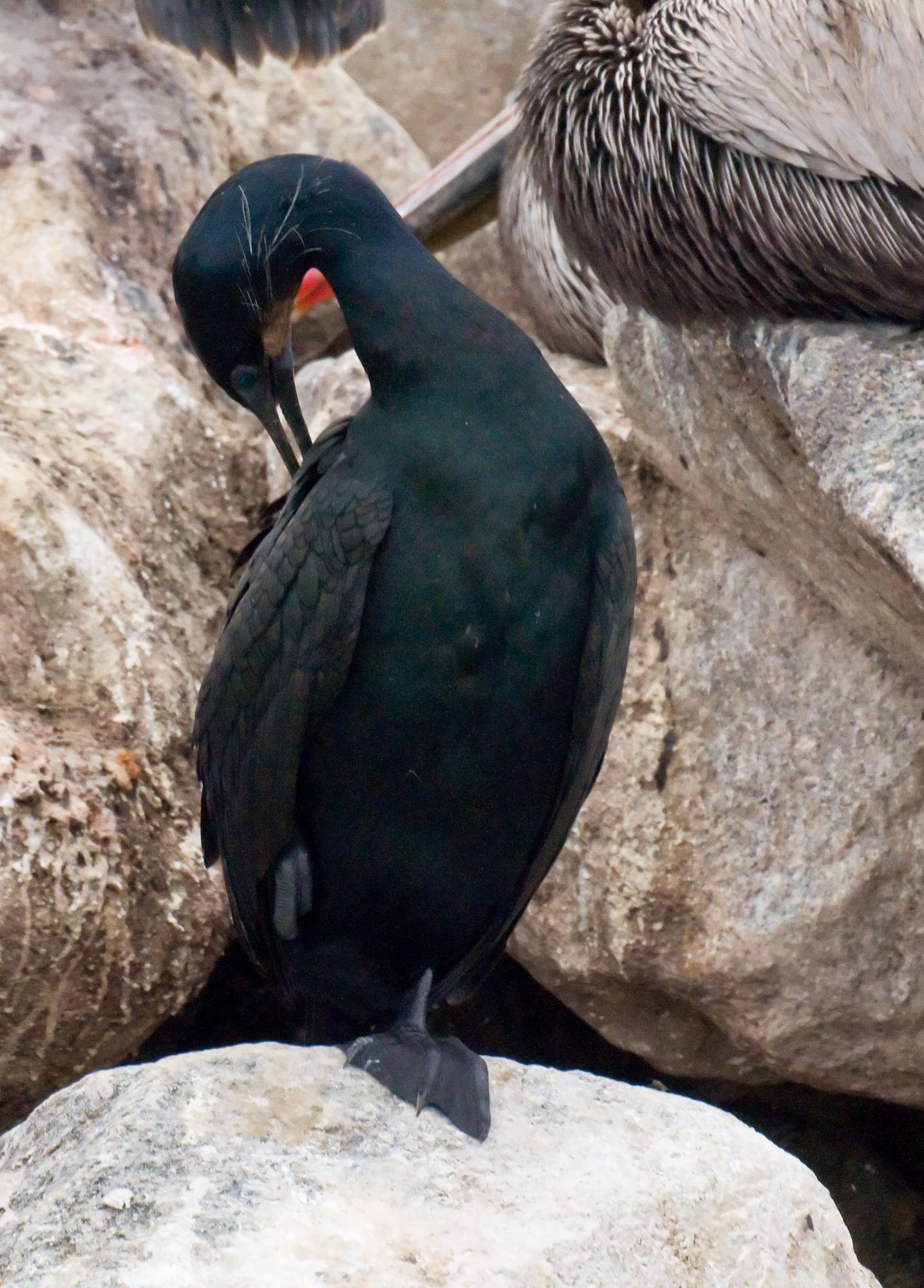
Brandt's cormorants were the most numerous of the three species of cormorants seen that day. The slender white plumes on its face and the blue patch on its throat only appear during breeding season. The red color seen in this photo is not part of the cormorant but was from a nearby pelican.
Elkhorn Slough, Moss Landing, California • (Photo posted Wednesday 24 March, 2010) • (Photo taken 09:54:25 Friday 12 March, 2010) • © 2010 Terry Costales  #Brants_Cormorant
#Brants_Cormorant
Add a comment or report a mistake
|
|
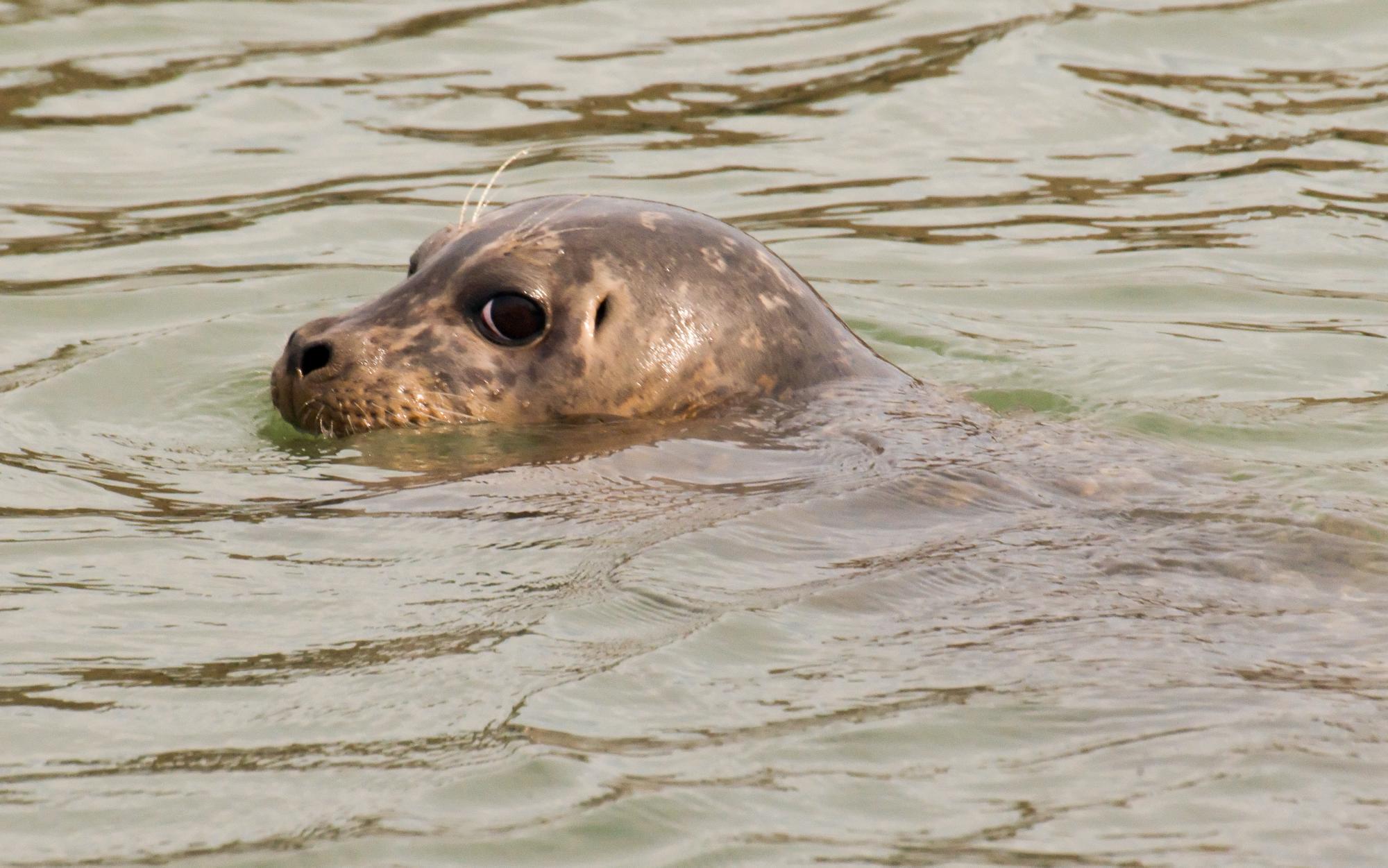 Bette Davis eyes? Bedroom eyes? Puppy dog eyes? They've got nothing on harbor seal eyes!
The little slit behind the eye is the ear which is an easy way to distinguish it from a sea lion with its little external ear.
Elkhorn Slough Safari, Moss Landing, California • (Photo posted Thursday 25 March, 2010) • (Photo taken 10:16:13 Friday 12 March, 2010) • © 2010 Terry Costales  #Harbor_Seal
#Harbor_Seal
Add a comment or report a mistake
|
|
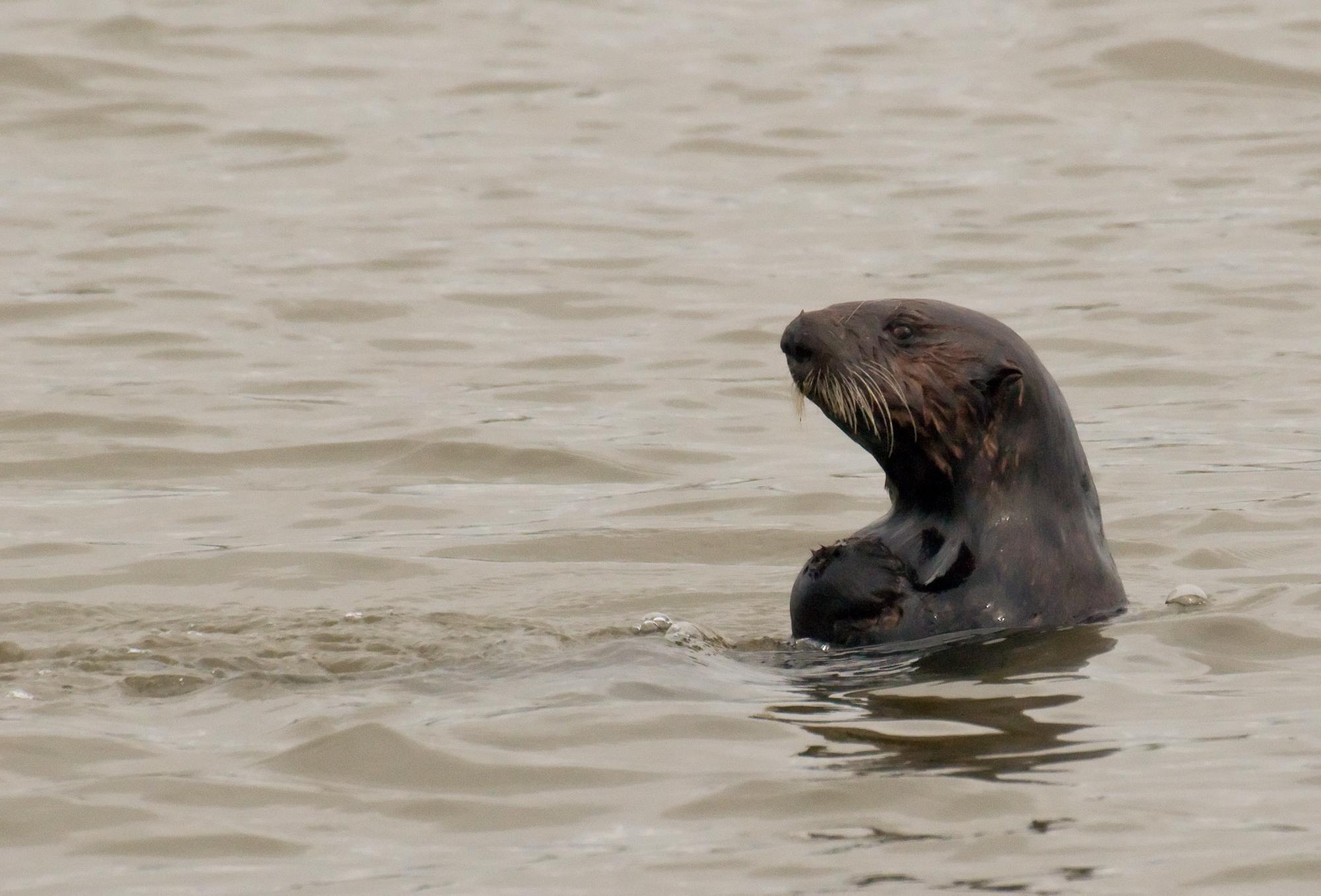 A lone individual popped up out of the water after a dive for food. We suspected he has a clam grasped in his paws. Otters love shellfish.
Elkhorn Slough, Moss Landing, California • (Photo posted Friday 26 March, 2010) • (Photo taken 10:47:58 Friday 12 March, 2010) • © 2010 Terry Costales  #With_Shell
#With_Shell
Add a comment or report a mistake
|
|
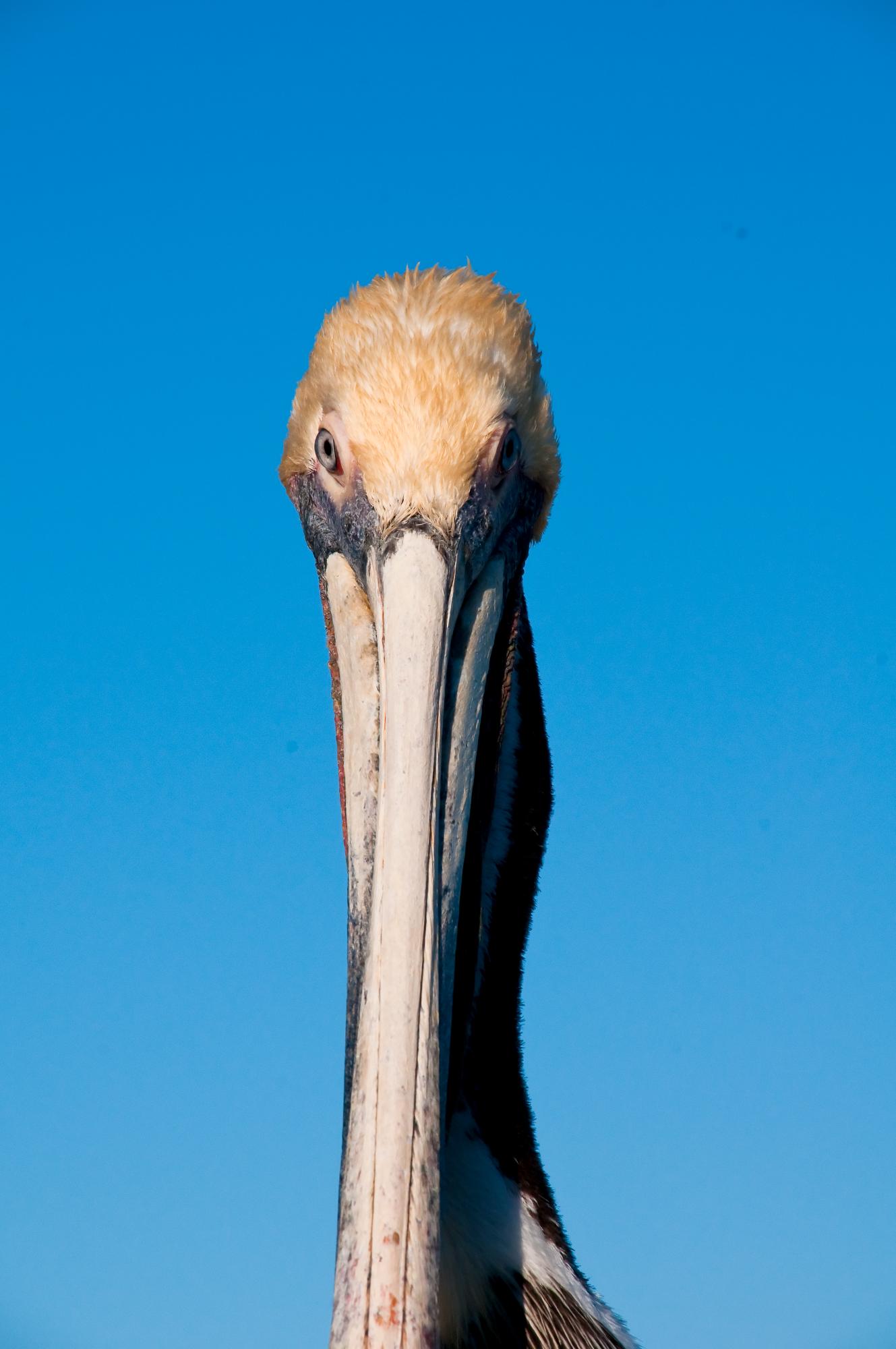
Here is a view of a pelican you don't usually see. A head on view of its enormous bill.
Santa Cruz, California • (Photo posted Saturday 27 March, 2010) • (Photo taken 16:55:17 Wednesday 10 March, 2010) • © 2010 Terry Costales  #Head_On
#Head_On
Add a comment or report a mistake
|
|
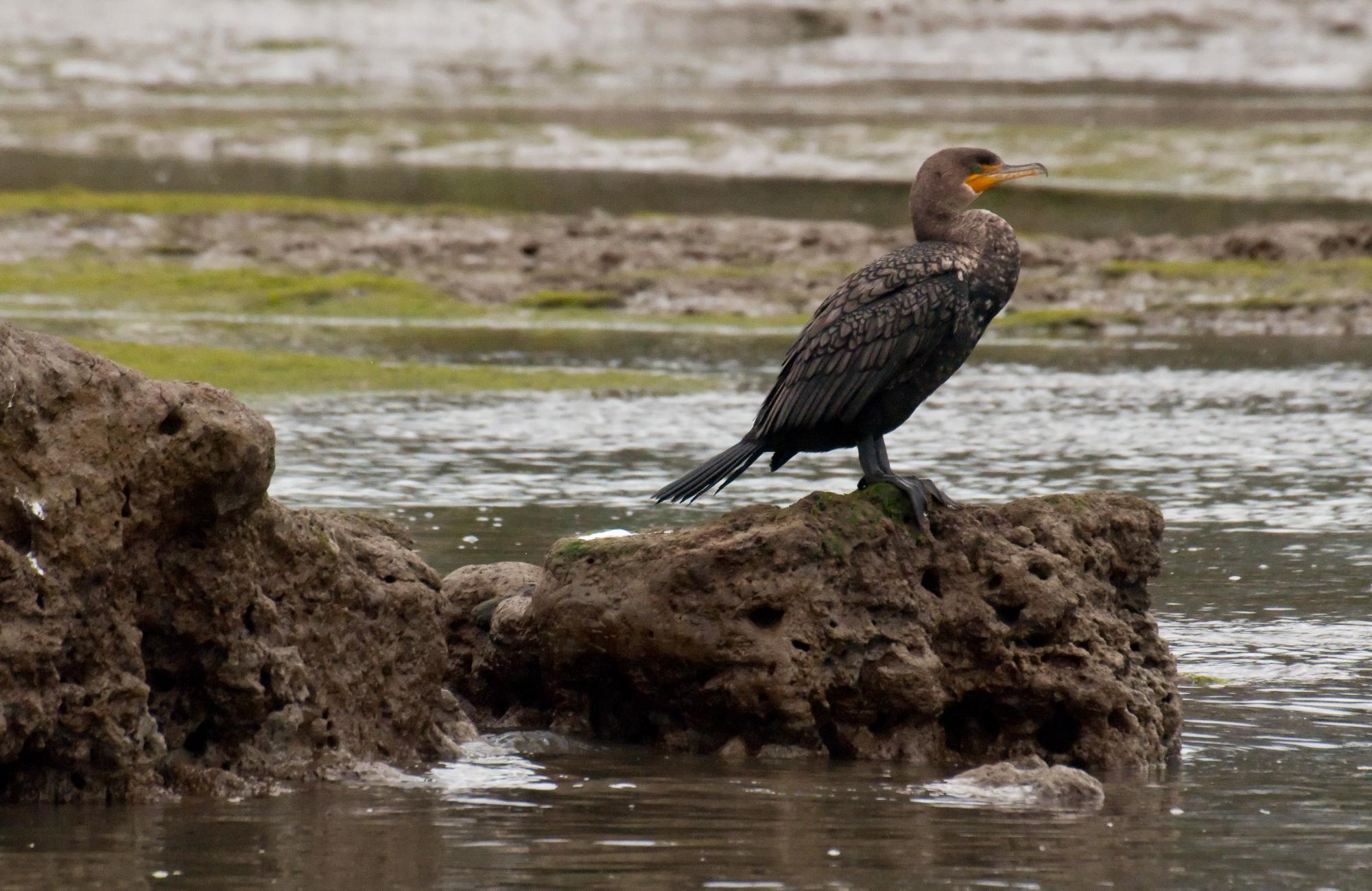
A handsome Double-crested Cormorant posed on a mossy rock for the photographer.
Elkhorn Slough, Moss Landing, California • (Photo posted Monday 29 March, 2010) • (Photo taken 11:14:53 Friday 12 March, 2010) • © 2010 Terry Costales  #Crested_Cormorant
#Crested_Cormorant
Add a comment or report a mistake
|
|
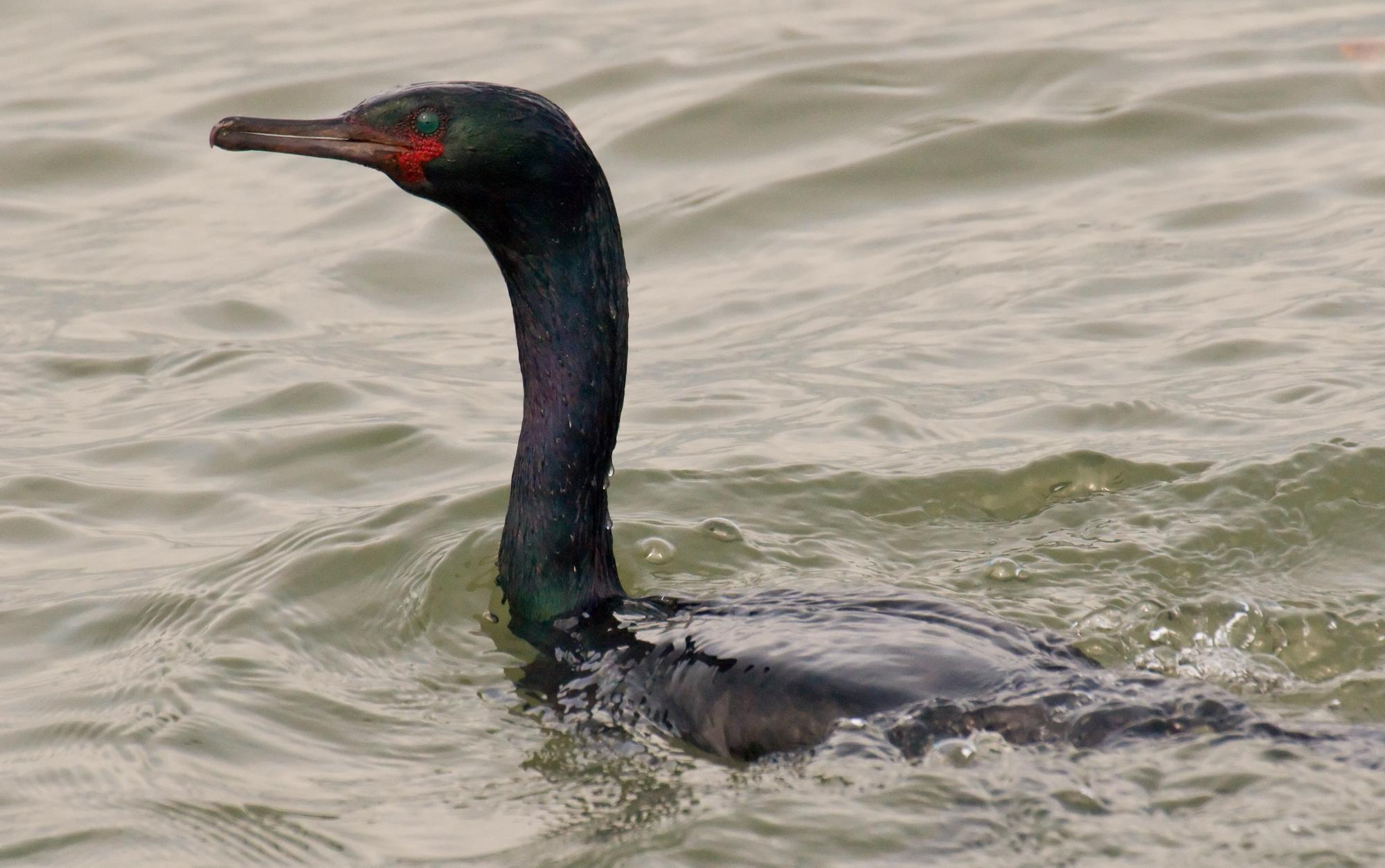
After a dive this Pelagic Cormorant surfaced much too close to the boat and immediately swam away. This photo captured its startled look.
Elkhorn Slough, Moss Landing, California • (Photo posted Wednesday 31 March, 2010) • (Photo taken 10:25:12 Friday 12 March, 2010) • © 2010 Terry Costales  #Cormorant_Surfaced
#Cormorant_Surfaced
Add a comment or report a mistake
|
|
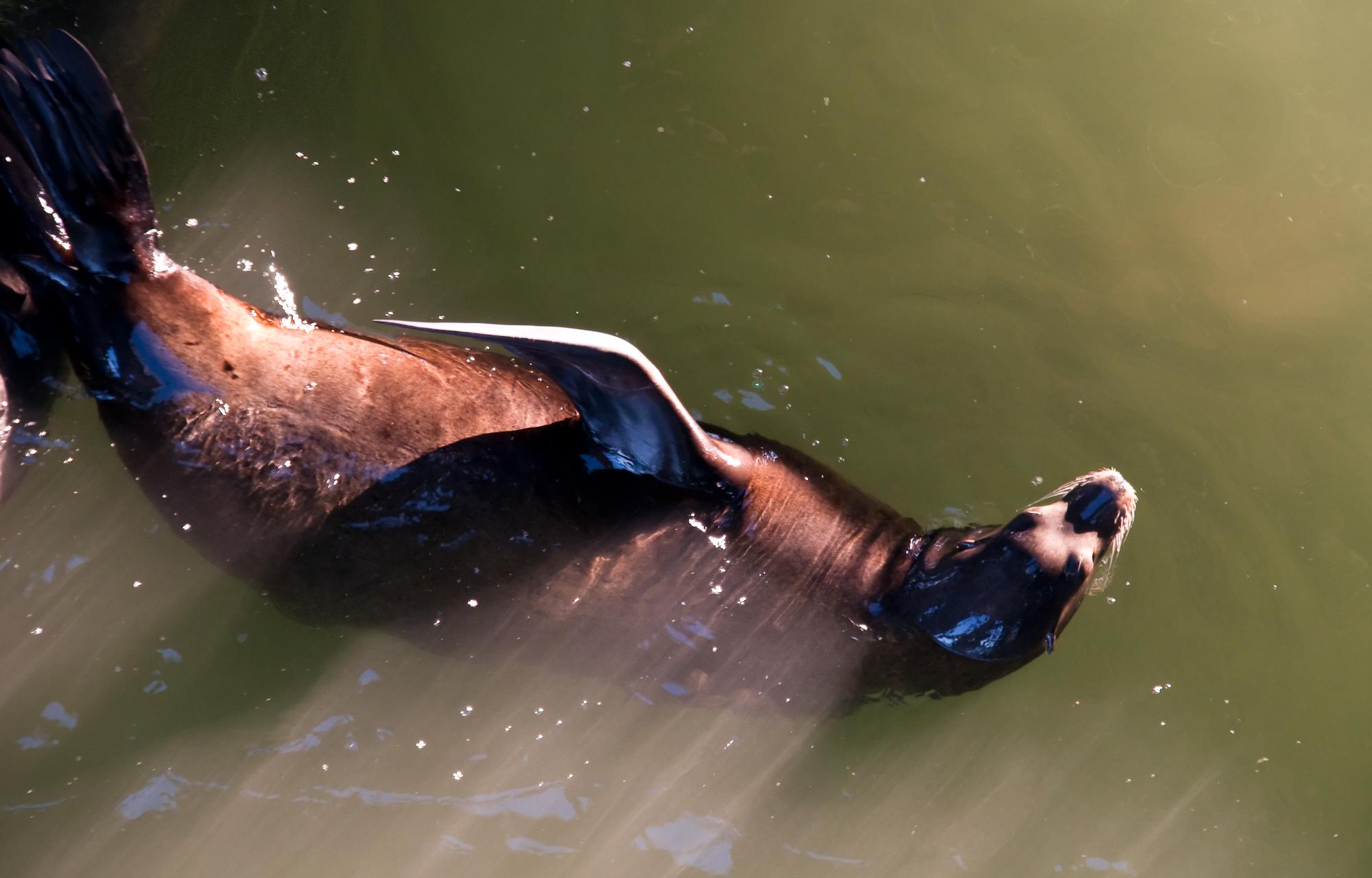
This photo shows a sea lion swimming in the late afternoon sunlight beneath the wharf in Santa Cruz. Lovely light on a lovely animal.
Santa Cruz, California • (Photo posted Friday 2 April, 2010) • (Photo taken 16:51:04 Friday 2 April, 2010) • © 2010 Terry Costales  #Lion_Swimming
#Lion_Swimming
Add a comment or report a mistake
|
|
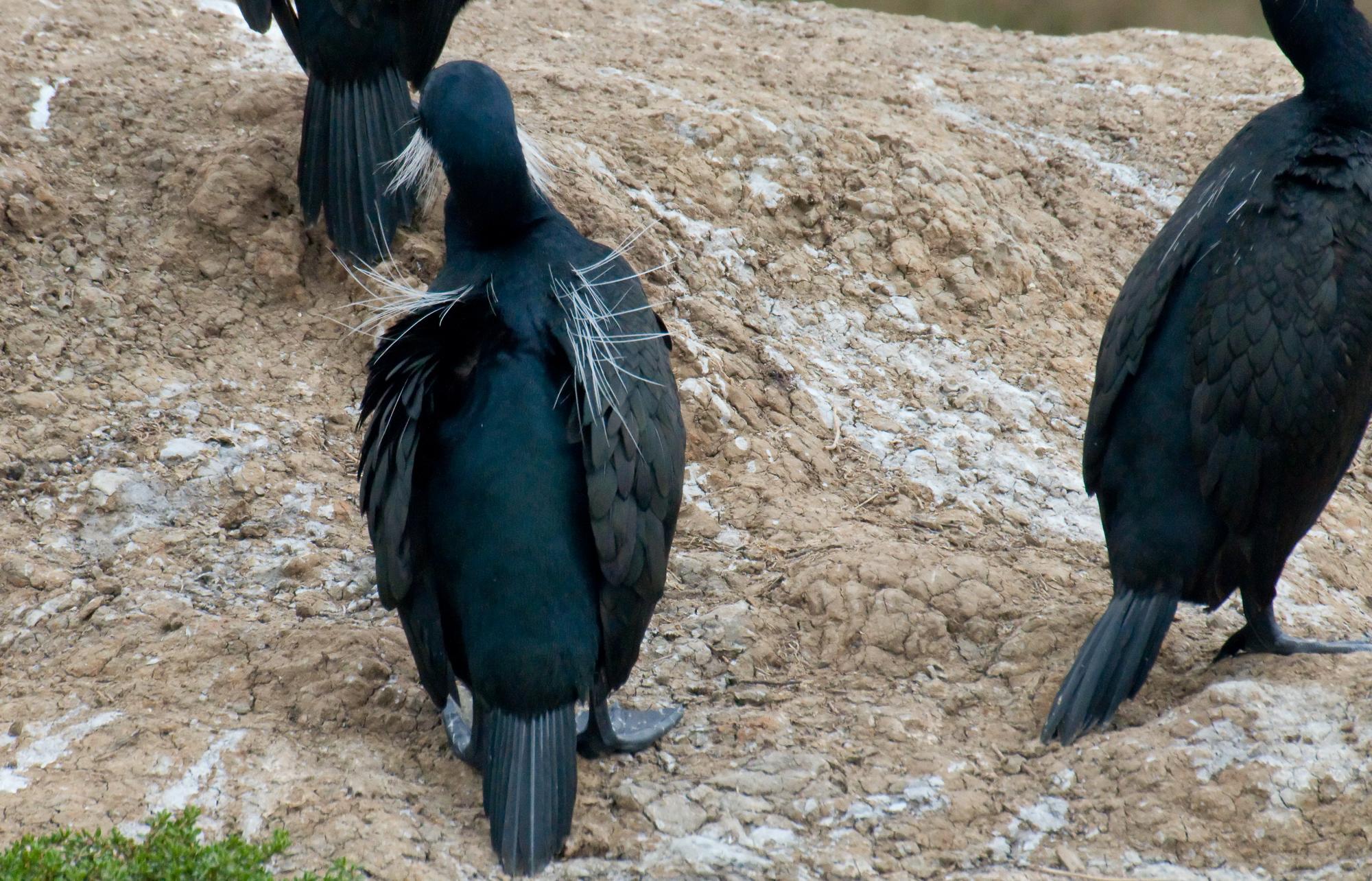 The white plumes that appear during the breeding season are easily seen in this photo of the Brandt's cormorant.
Elkhorn Slough, Moss Landing, California • (Photo posted Sunday 4 April, 2010) • (Photo taken 11:12:04 Friday 12 March, 2010) • © 2010 Terry Costales  #White_Plumes
#White_Plumes
Add a comment or report a mistake
|
|
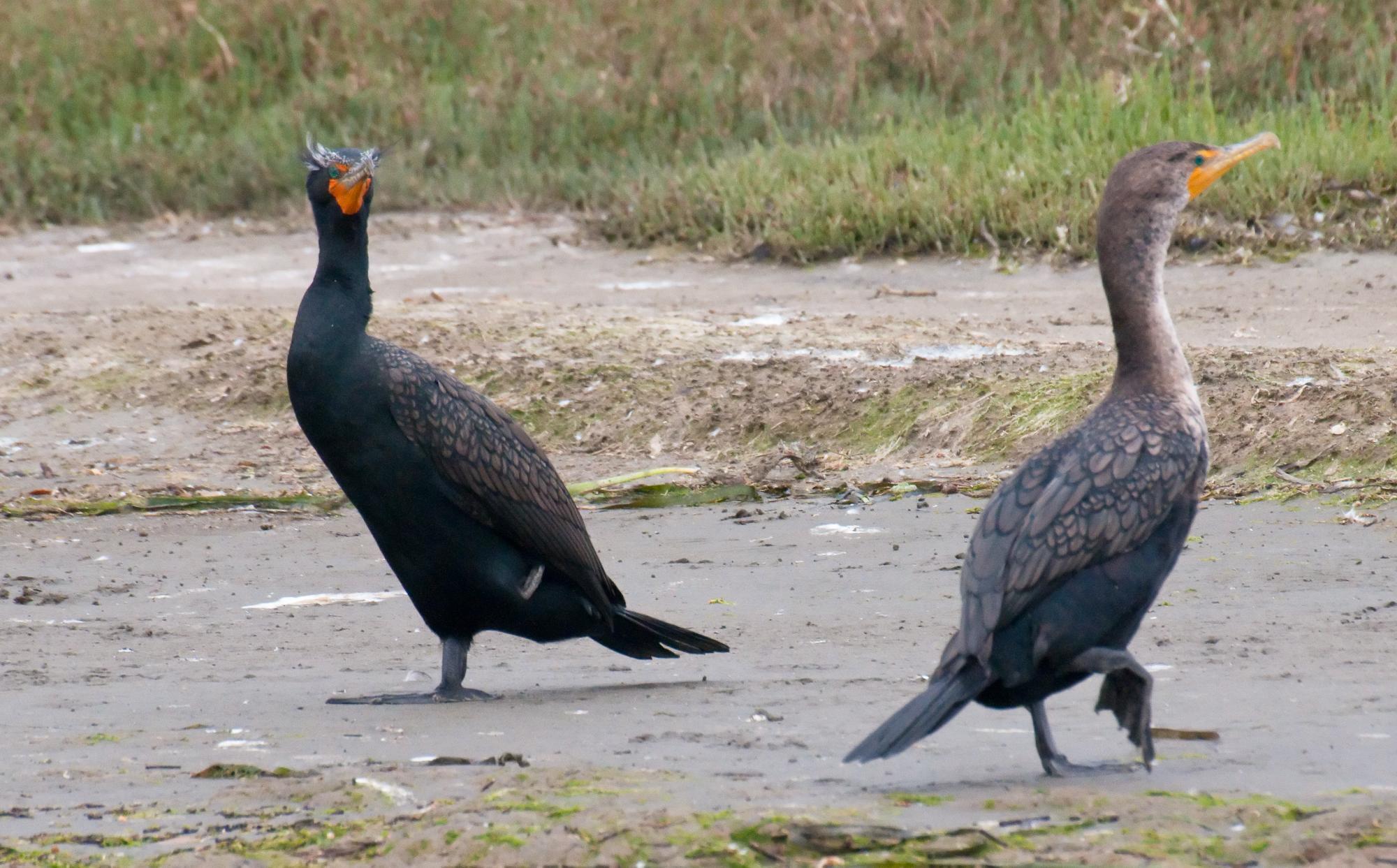 In this photo you can easily see the differences between the adult and the juvenile cormorant. The glossy black bird with prominent "eyebrows" is an adult in breeding plumage.
Elkhorn Slough, Moss Landing, California • (Photo posted Monday 5 April, 2010) • (Photo taken 11:11:32 Friday 12 March, 2010) • © 2010 Terry Costales  #Double-crested_Cormorants
#Double-crested_Cormorants
Add a comment or report a mistake
|
|
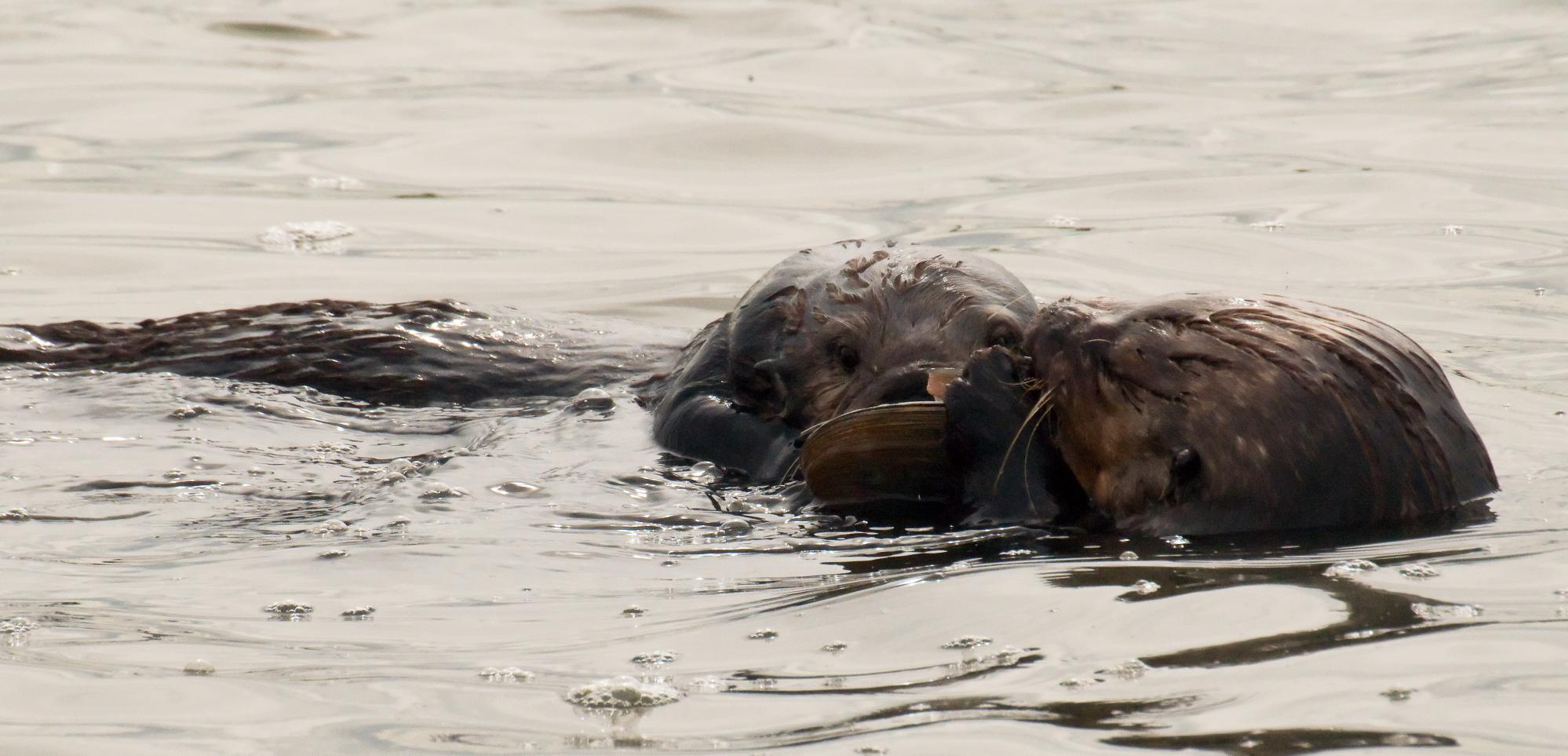 This is one otter trying to persuade another otter to share its meal. It wasn't very successful.
Elkhorn Slough, Moss Landing, California • (Photo posted Tuesday 13 April, 2010) • (Photo taken 10:43:46 Friday 12 March, 2010) • © 2010 Terry Costales  #Otter_Persuade
#Otter_Persuade
Add a comment or report a mistake
|
|
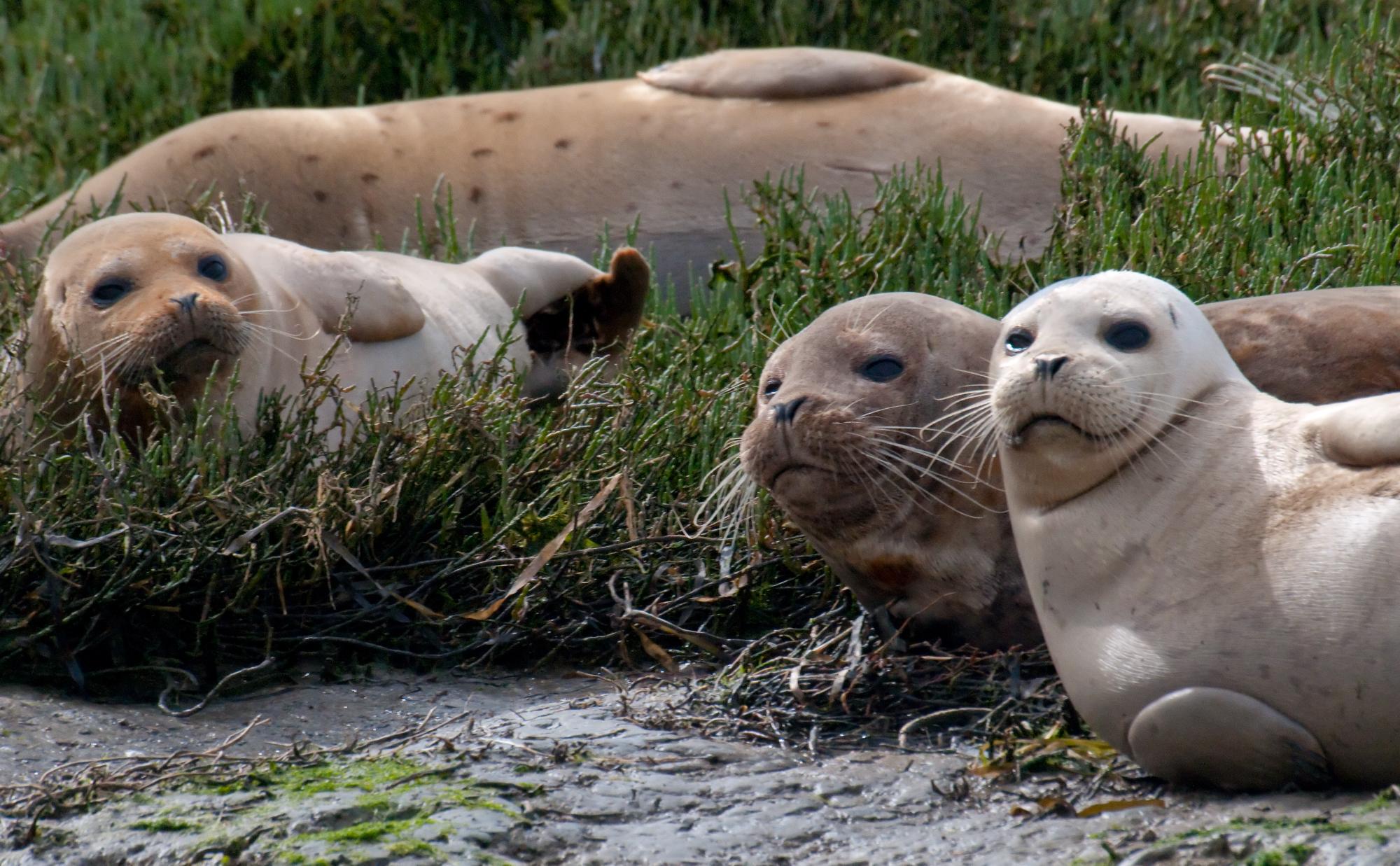
This group shot of harbor seals illustrates their cuteness and wide variations in colors.
Elkhorn Slough Safari, Moss Landing, California • (Photo posted Monday 26 April, 2010) • (Photo taken 10:19:06 Friday 12 March, 2010) • © 2010 Terry Costales  #Seal_Colors
#Seal_Colors
Add a comment or report a mistake
|
|
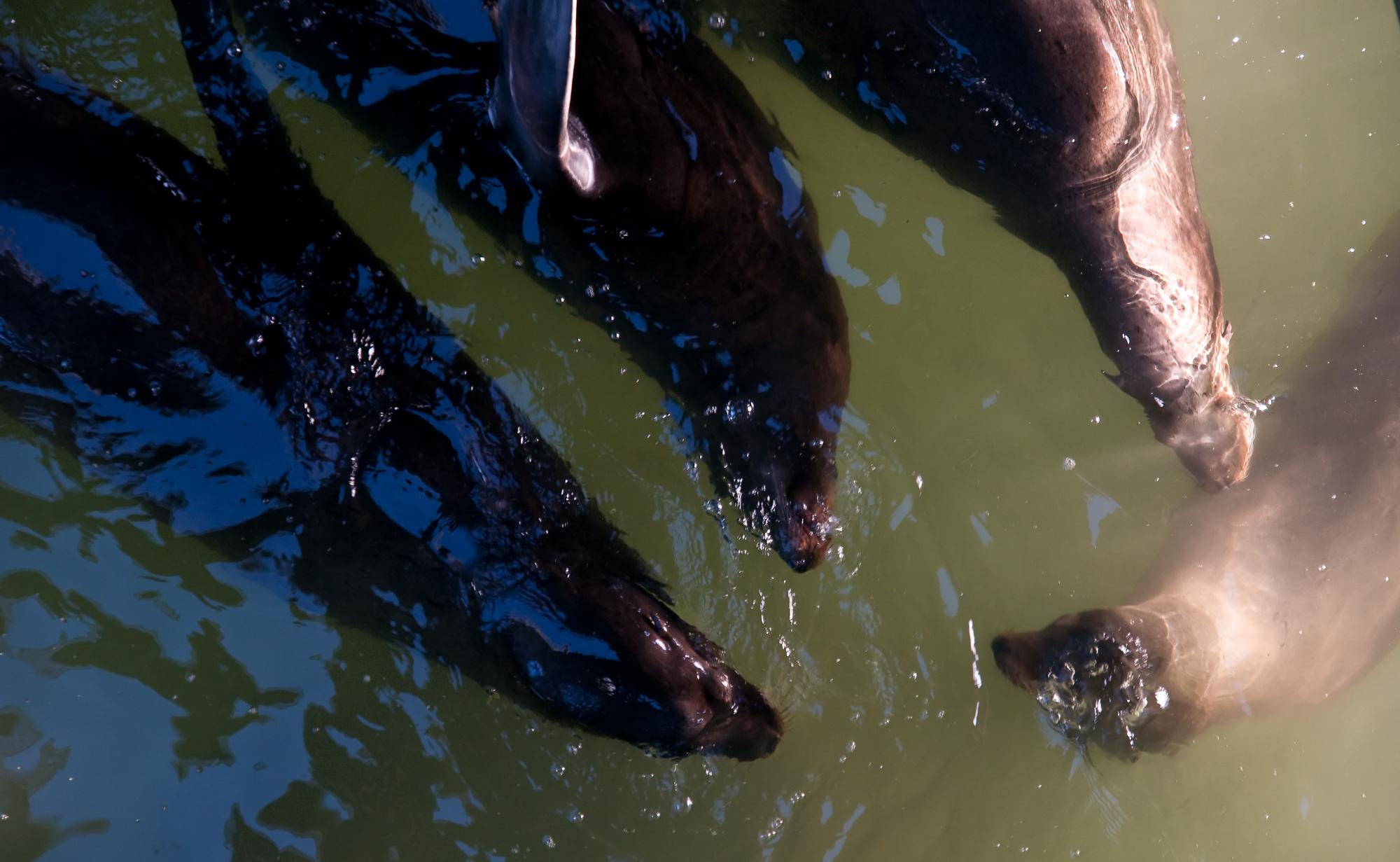
Sea Lions swam in and out of sunlight and shade beneath the wharf in Santa Cruz.
Santa Cruz, California • (Photo posted Tuesday 27 April, 2010) • (Photo taken 16:51:22 Wednesday 10 March, 2010) • © 2010 Terry Costales  #Under_Wharf
#Under_Wharf
Add a comment or report a mistake
|
|
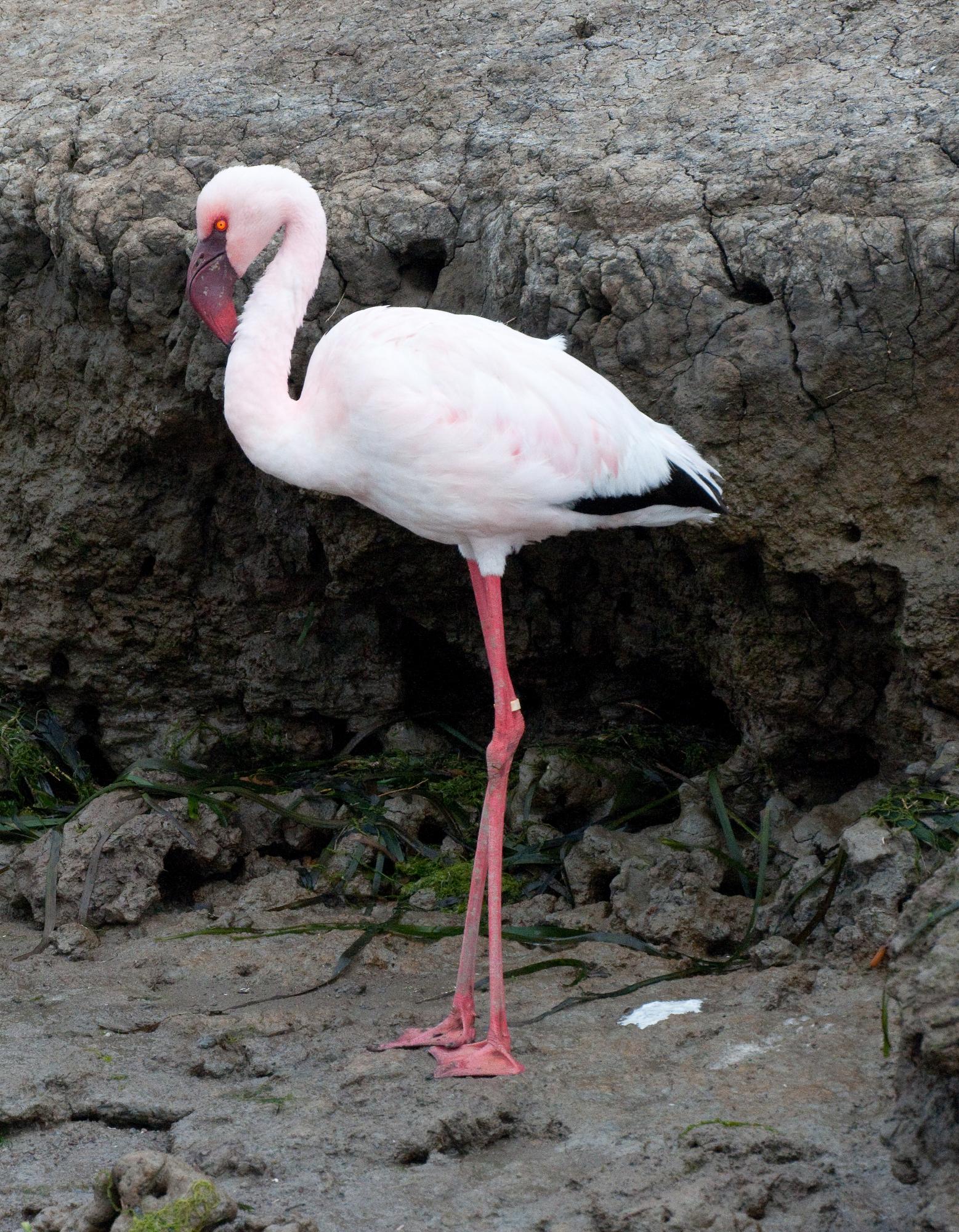
Having escaped from a collection somewhere this Flamingo showed up in Elkhorn Slough in January.
I had previously seen this type of Flamingo in zoos but this was the first time "in the wild". Elkhorn Slough, Moss Landing, California • (Photo posted Monday 3 May, 2010) • (Photo taken 11:11:58 Friday 12 March, 2010) • © 2010 Terry Costales  #Elkhorn_Slough
#Elkhorn_Slough
Add a comment or report a mistake
|
|
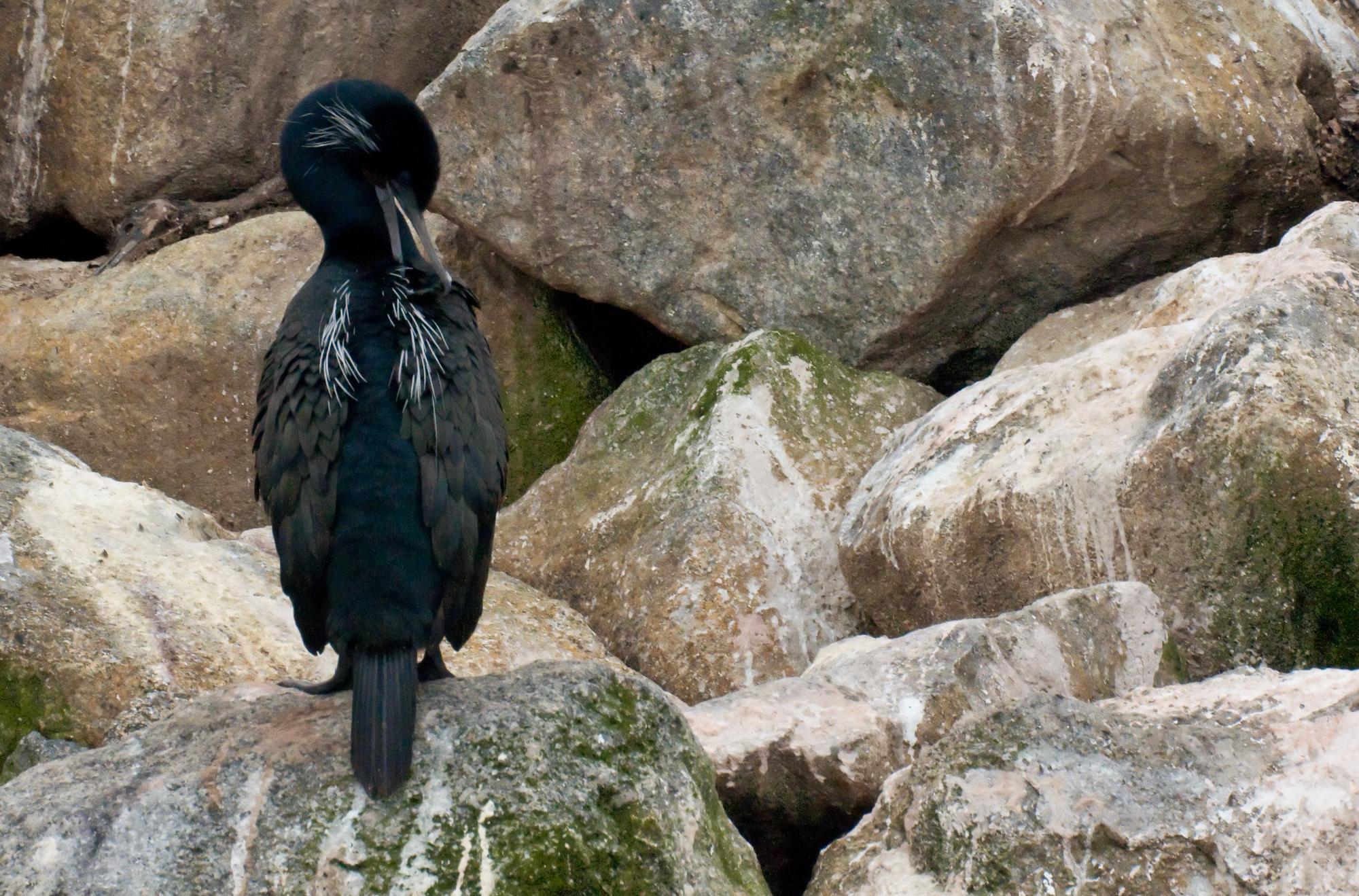
This photo of a Brandt's Cormorant preening shows the decorative white plumes they acquire during the breeding season.
Elkhorn Slough, Moss Landing, California • (Photo posted Saturday 8 May, 2010) • (Photo taken 09:54:42 Friday 12 March, 2010) • © 2010 Terry Costales  #Cormorant_Preening
#Cormorant_Preening
Add a comment or report a mistake
|
|
 Two Harbor Seal were of quite different fur colors but all the whiskers were blonde.
Elkhorn Slough Safari, Moss Landing, California • (Photo posted Sunday 9 May, 2010) • (Photo taken 10:19:14 Friday 12 March, 2010) • © 2010 Terry Costales  #Seal_Whiskers
#Seal_Whiskers
Add a comment or report a mistake
|
|
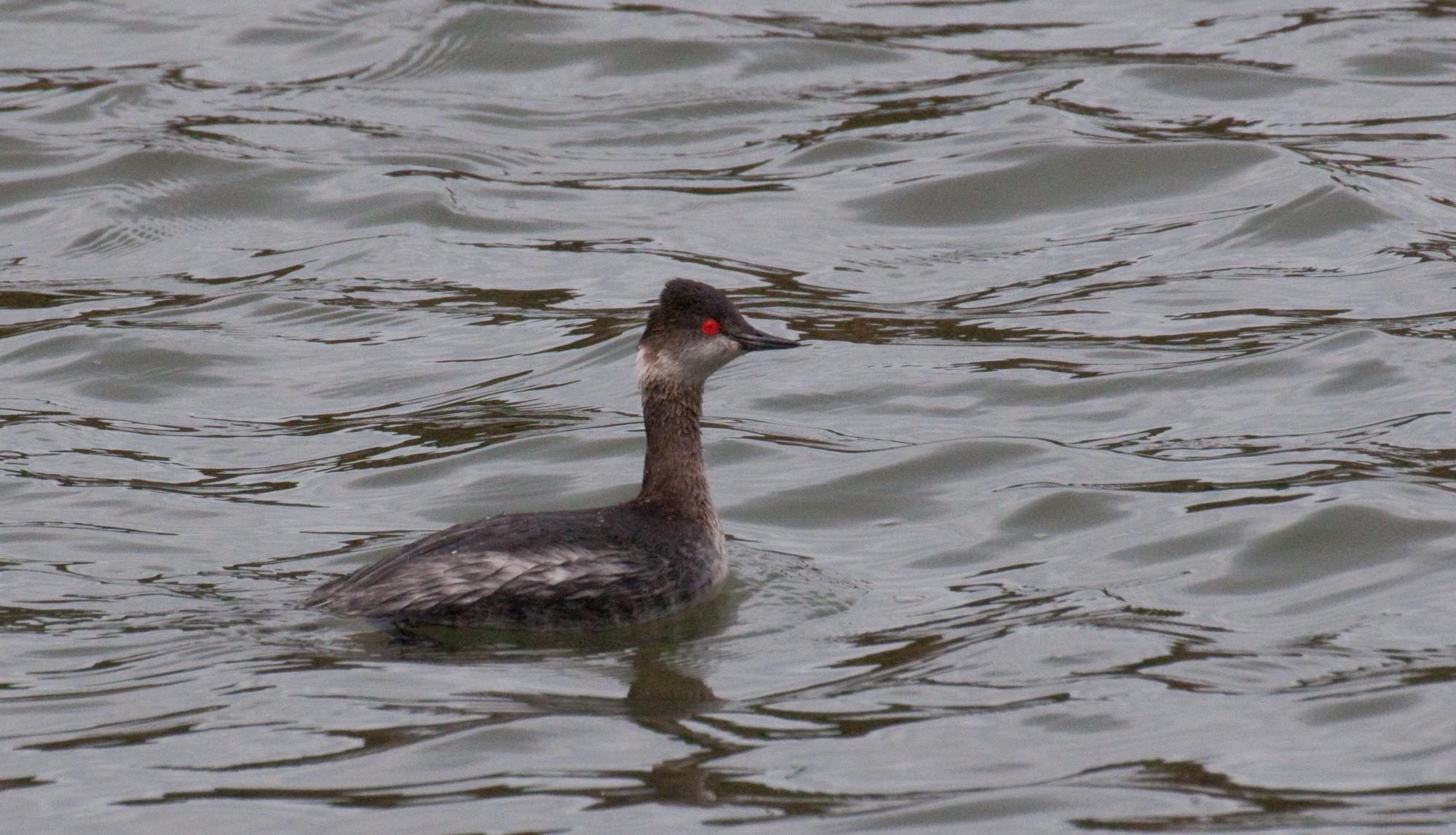
The Eared Grebe is a very small bird compared to the Western and Clark's Grebes. Only 13 inches long compared to the other bird's 25 inches. I hope to photograph one in breeding plumage someday because that look is quite different from their winter look seen here.
Elkhorn Slough, Moss Landing, California • (Photo posted Monday 10 May, 2010) • (Photo taken 10:02:28 Friday 12 March, 2010) • © 2010 Terry Costales  #Winter_Look
#Winter_Look
Add a comment or report a mistake
|
|
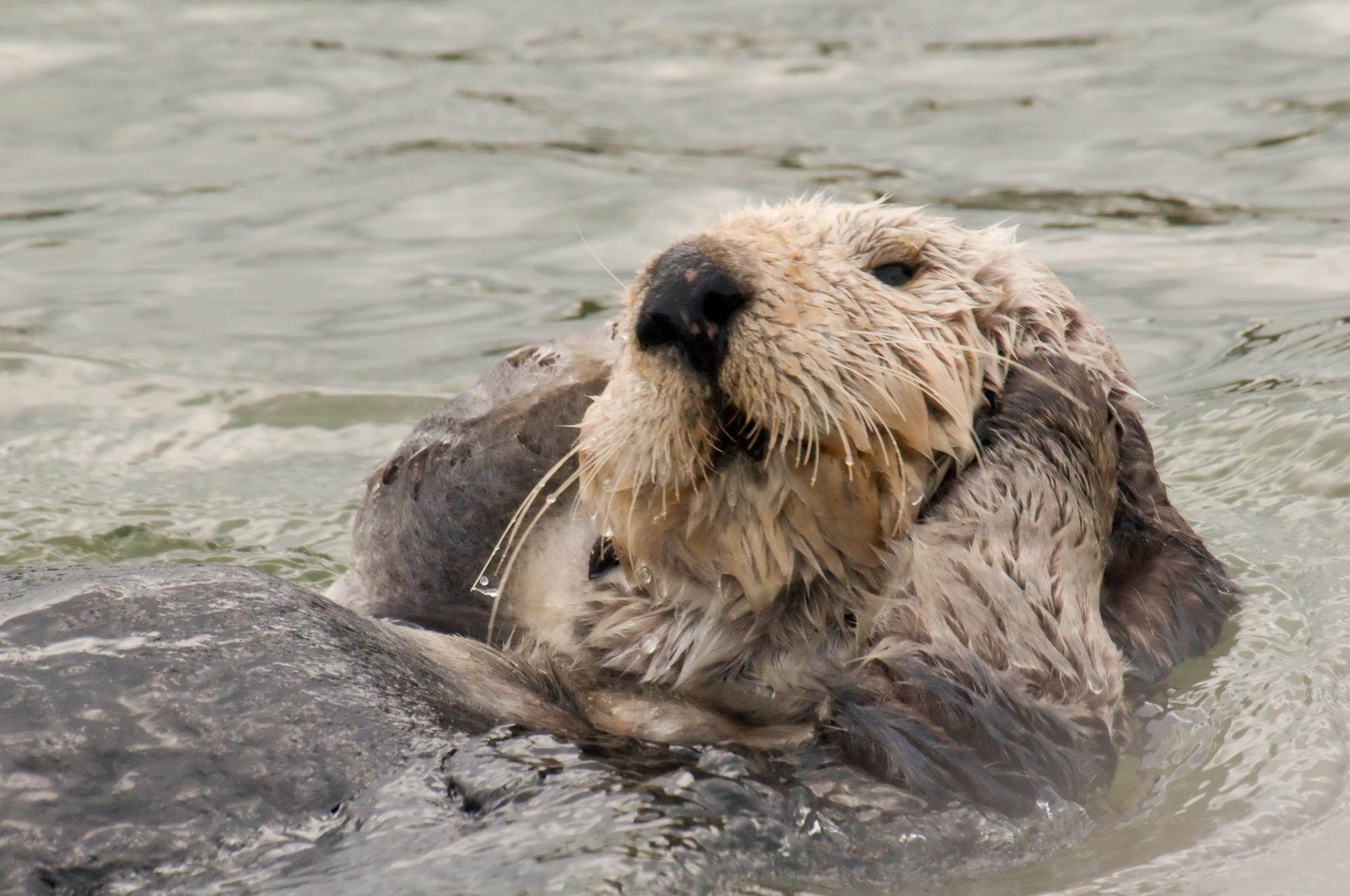
Sea Otters appeared to spend a great deal of their time grooming themselves. They use their bodies as tables, so have to keep food scraps washed off. While they clean, they also push and sometimes blow air bubbles into their fur. The extra air trapped in their fur contributes to their buoyancy and increases insulation.
Elkhorn Slough, Moss Landing, California • (Photo posted Tuesday 11 May, 2010) • (Photo taken 10:04:37 Friday 12 March, 2010) • © 2010 Terry Costales  #Traps_Air
#Traps_Air
Add a comment or report a mistake
|
|
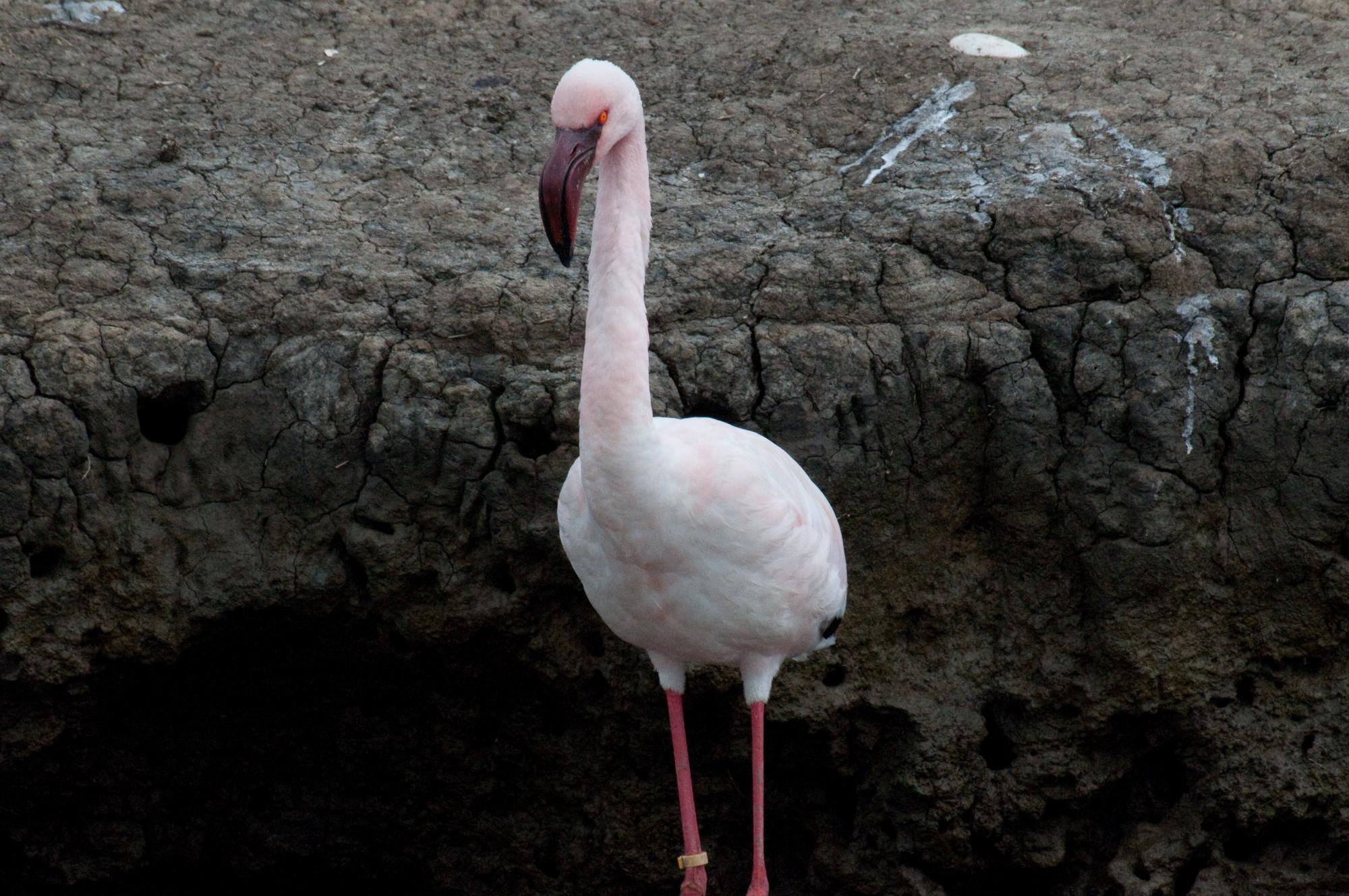
Here is the escaped flamingo of Elkhorn Slough. I realize it's the look of this species of flamingo, but doesn't this guy appear as if he's totally fed up with his job and can't take it anymore?
Elkhorn Slough, Moss Landing, California • (Photo posted Wednesday 12 May, 2010) • (Photo taken 11:12:07 Friday 12 March, 2010) • © 2010 Terry Costales  #Fed_Up
#Fed_Up
Add a comment or report a mistake
|
|
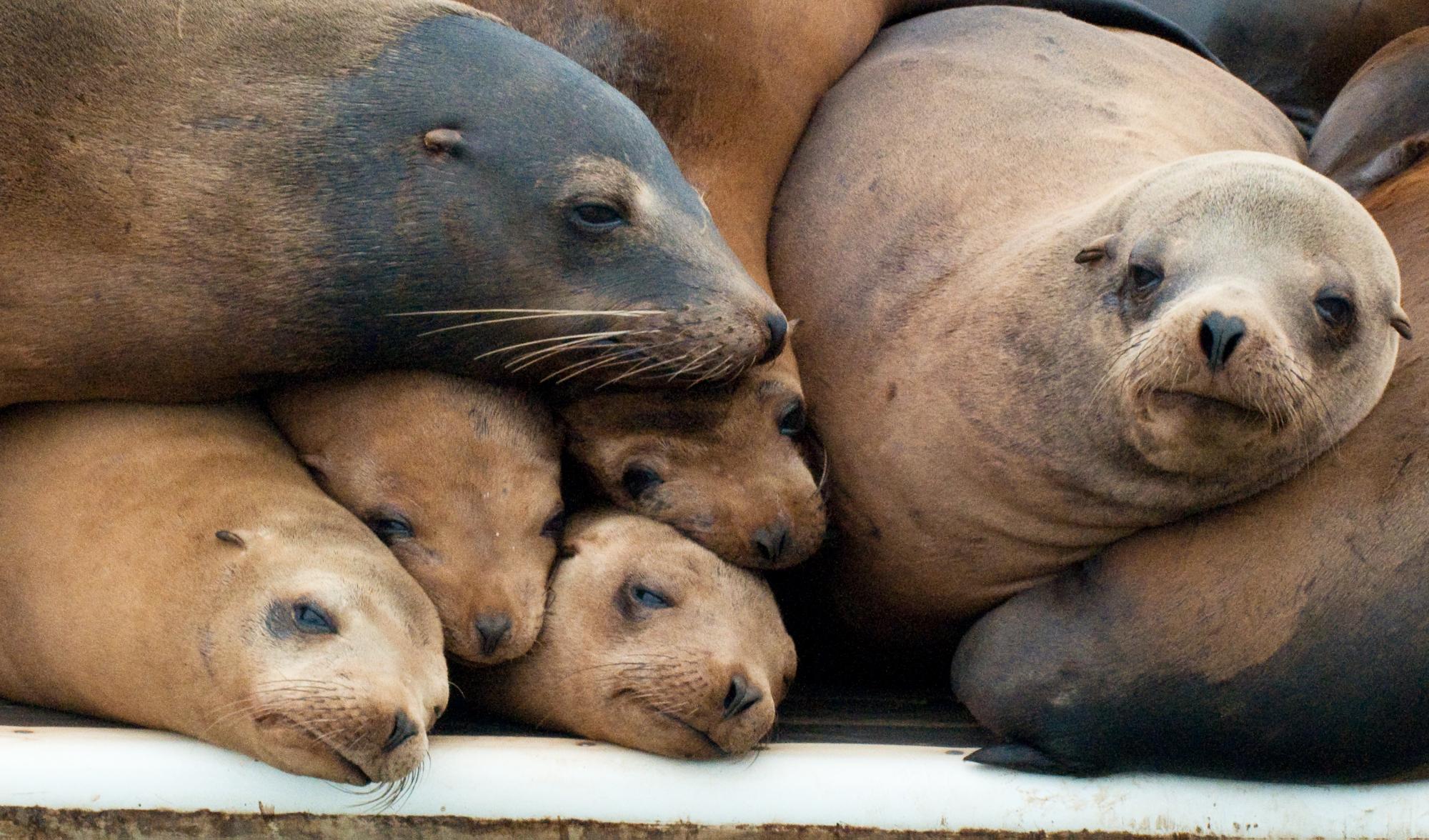 To our left as we exited the harbor and entered the slough, we saw an old pier covered with sea lions. We slowly motored past them. It was quite satisfying to be at their level and so close to them. I feel like I ended up with a family portrait instead of a wildlife photo.
Elkhorn Slough, Moss Landing, California • (Photo posted Thursday 13 May, 2010) • (Photo taken 10:07:08 Friday 12 March, 2010) • © 2010 Terry Costales  #Family_Portrait
#Family_Portrait
Add a comment or report a mistake
|
|

Here is the lesser flamingo which
Elkhorn Slough, Moss Landing, California • (Photo posted Friday 14 May, 2010) • (Photo taken 10:23:03 Friday 12 March, 2010) • © 2010 Terry Costales  #Still_There
#Still_There
Add a comment or report a mistake
|
|
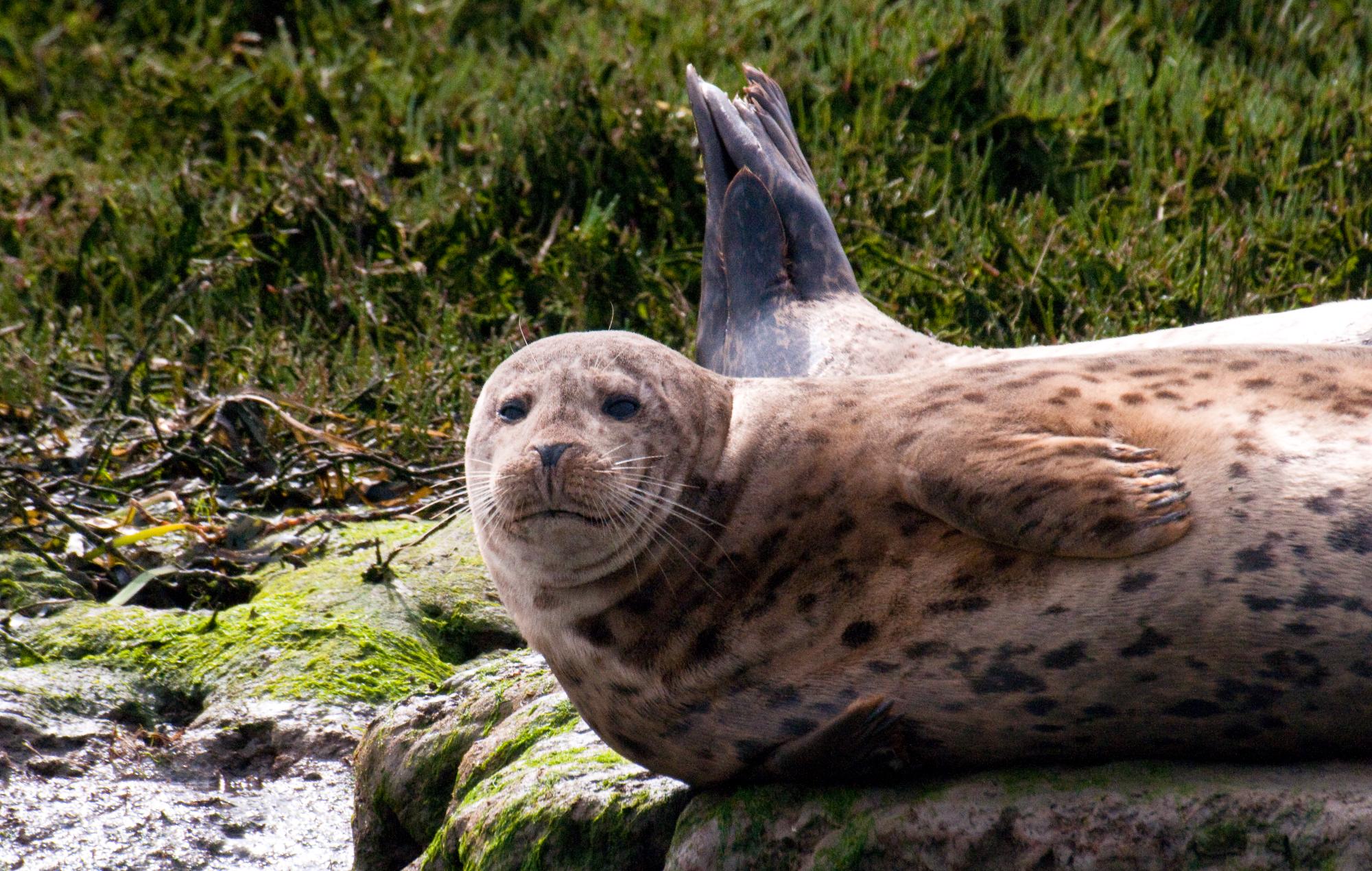 The Harbor Seal was very curious about us as we motored past, but not curious enough to actually move.
Elkhorn Slough Safari, Moss Landing, California • (Photo posted Saturday 15 May, 2010) • (Photo taken 10:19:14 Friday 12 March, 2010) • © 2010 Terry Costales  #About_Us
#About_Us
Add a comment or report a mistake
|
|
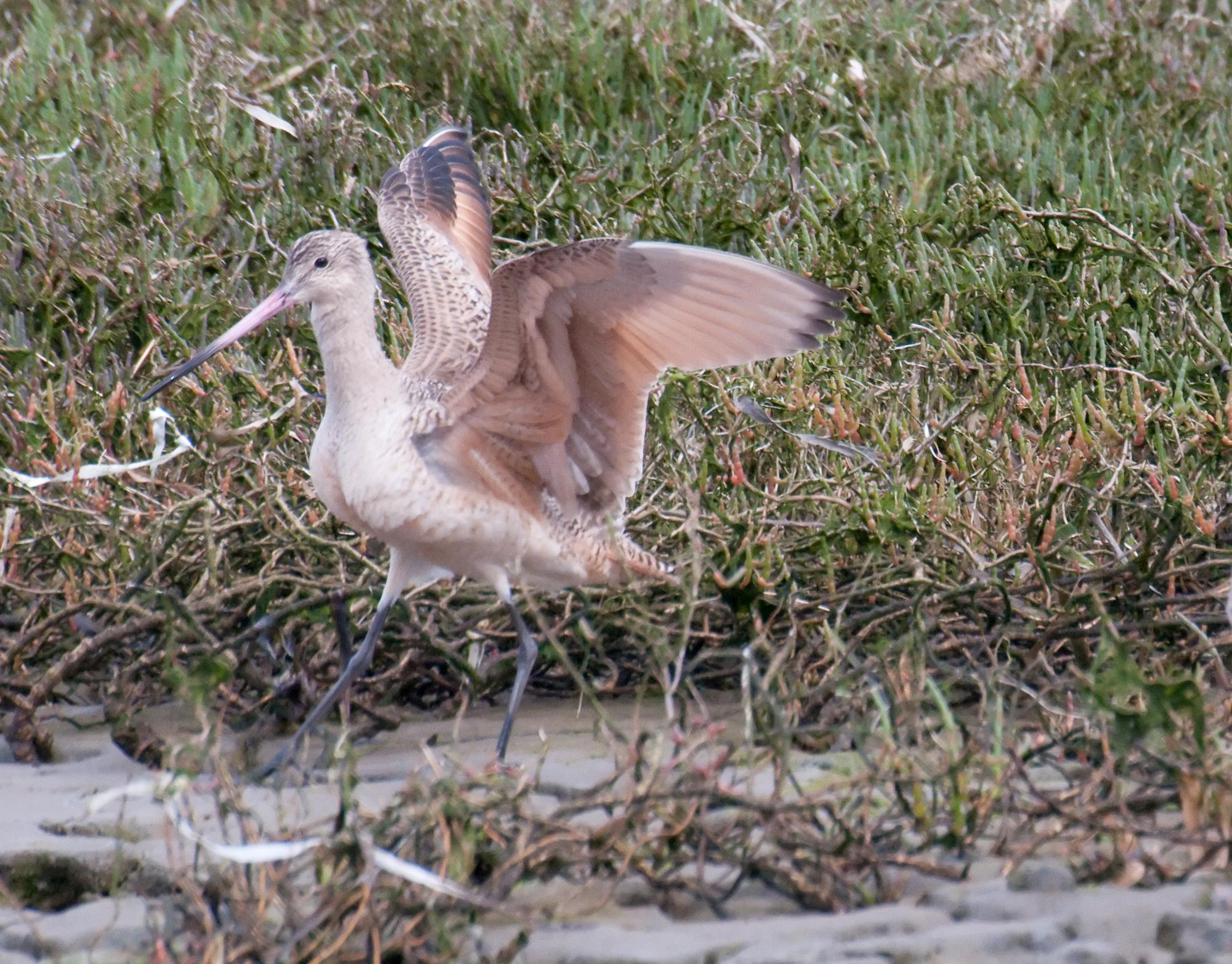
We saw many of these Marbled Godwits that day on the slough. This one is just about to take flight.
Elkhorn Slough, Moss Landing, California • (Photo posted Sunday 16 May, 2010) • (Photo taken 10:13:58 Friday 12 March, 2010) • © 2010 Terry Costales  #Elkhorn_Slough
#Elkhorn_Slough
Add a comment or report a mistake
|
|
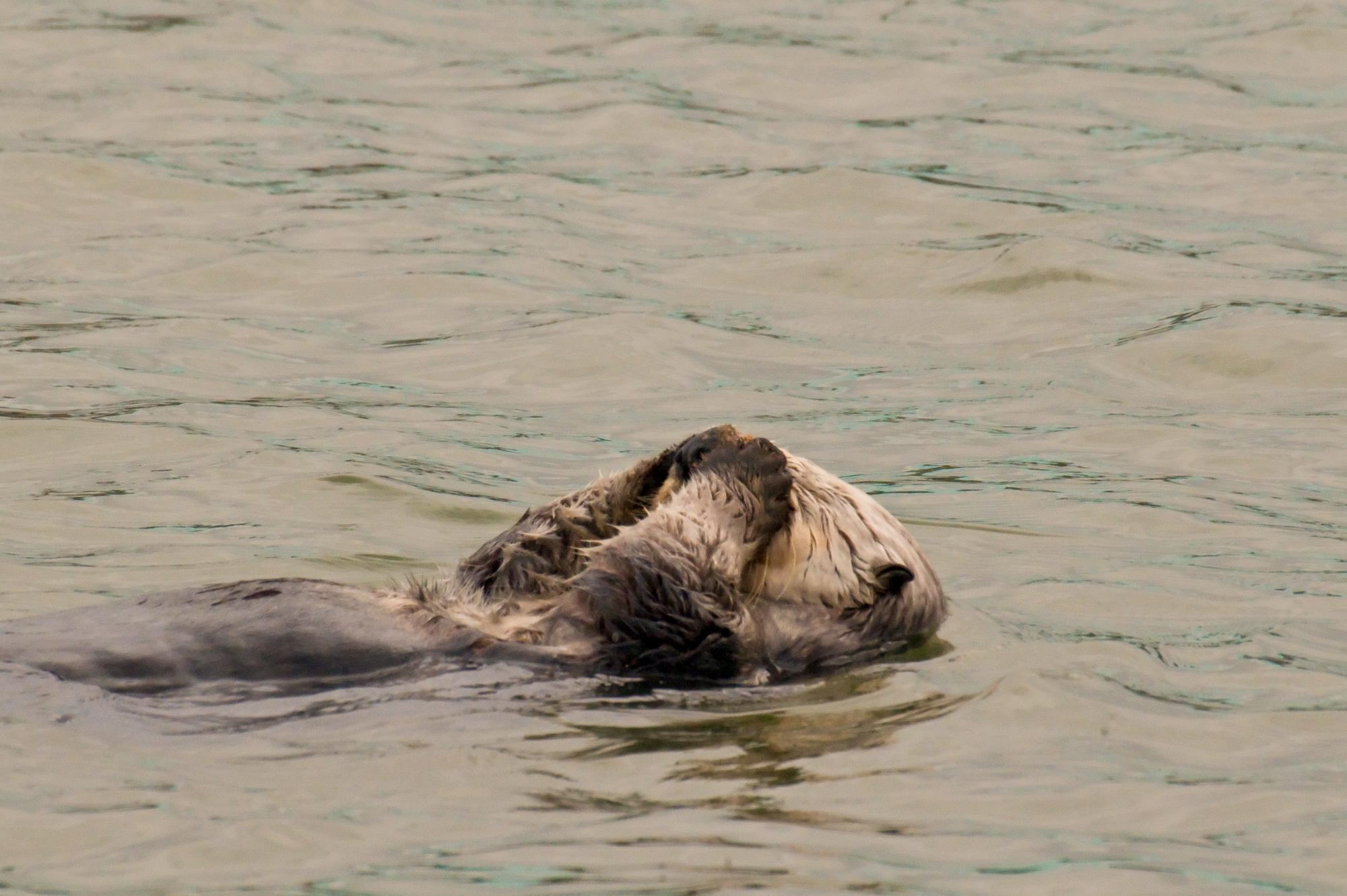 Here is another otter grooming or maybe he is thinking "oh, not another boatload of paparazzi!"
Elkhorn Slough, Moss Landing, California • (Photo posted Monday 17 May, 2010) • (Photo taken 10:03:19 Friday 12 March, 2010) • © 2010 Terry Costales  #Otter_Paparazzi
#Otter_Paparazzi
Add a comment or report a mistake
|
|
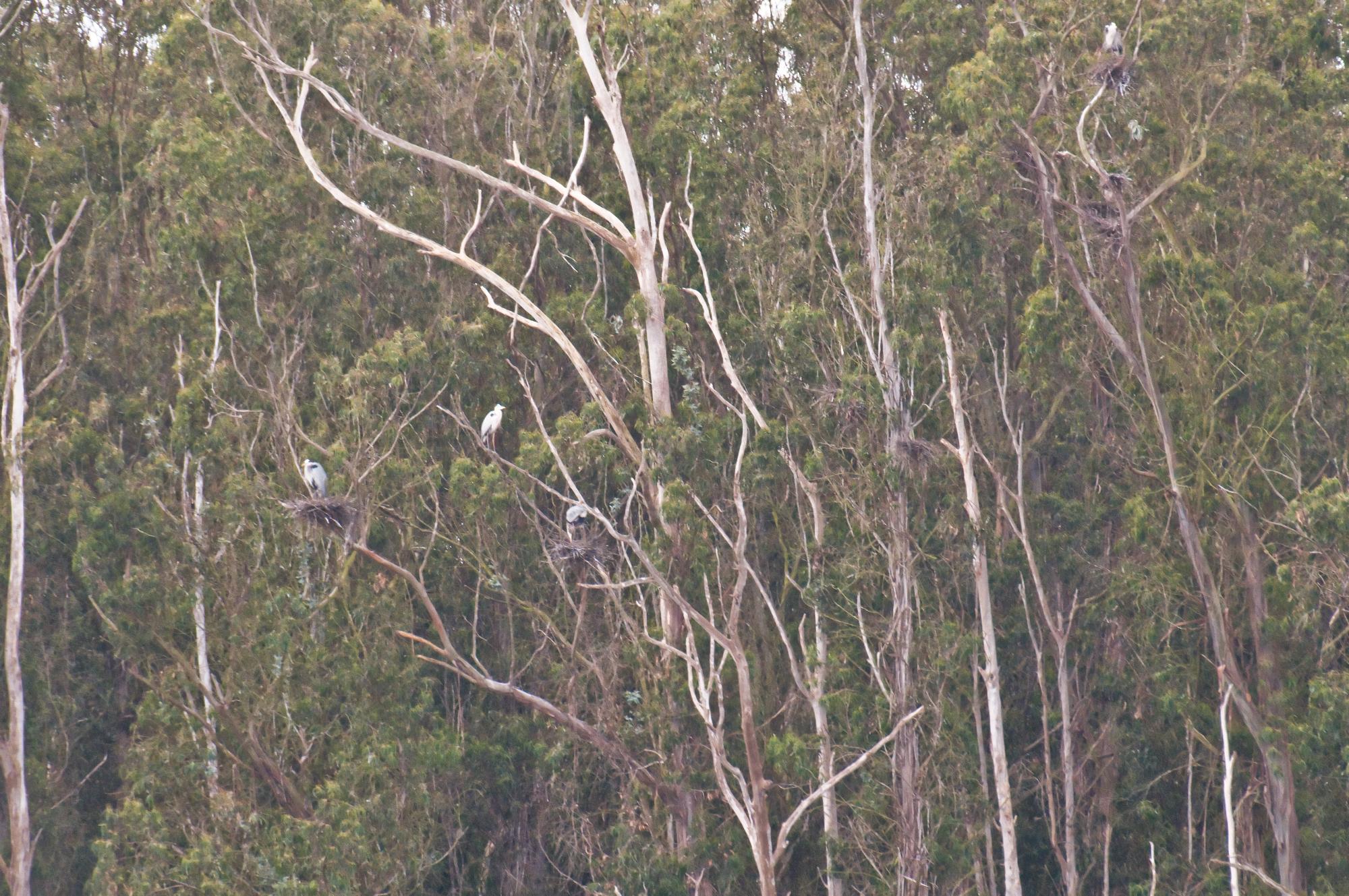
Across the slough and in the tops of a grove of distant trees was a colony of nesting Great Blue Herons. Four adult herons and many more nests were visible.
Elkhorn Slough, Moss Landing, California • (Photo posted Tuesday 18 May, 2010) • (Photo taken 10:33:12 Friday 12 March, 2010) • © 2010 Terry Costales  #Elkhorn_Slough
#Elkhorn_Slough
Add a comment or report a mistake
|
|
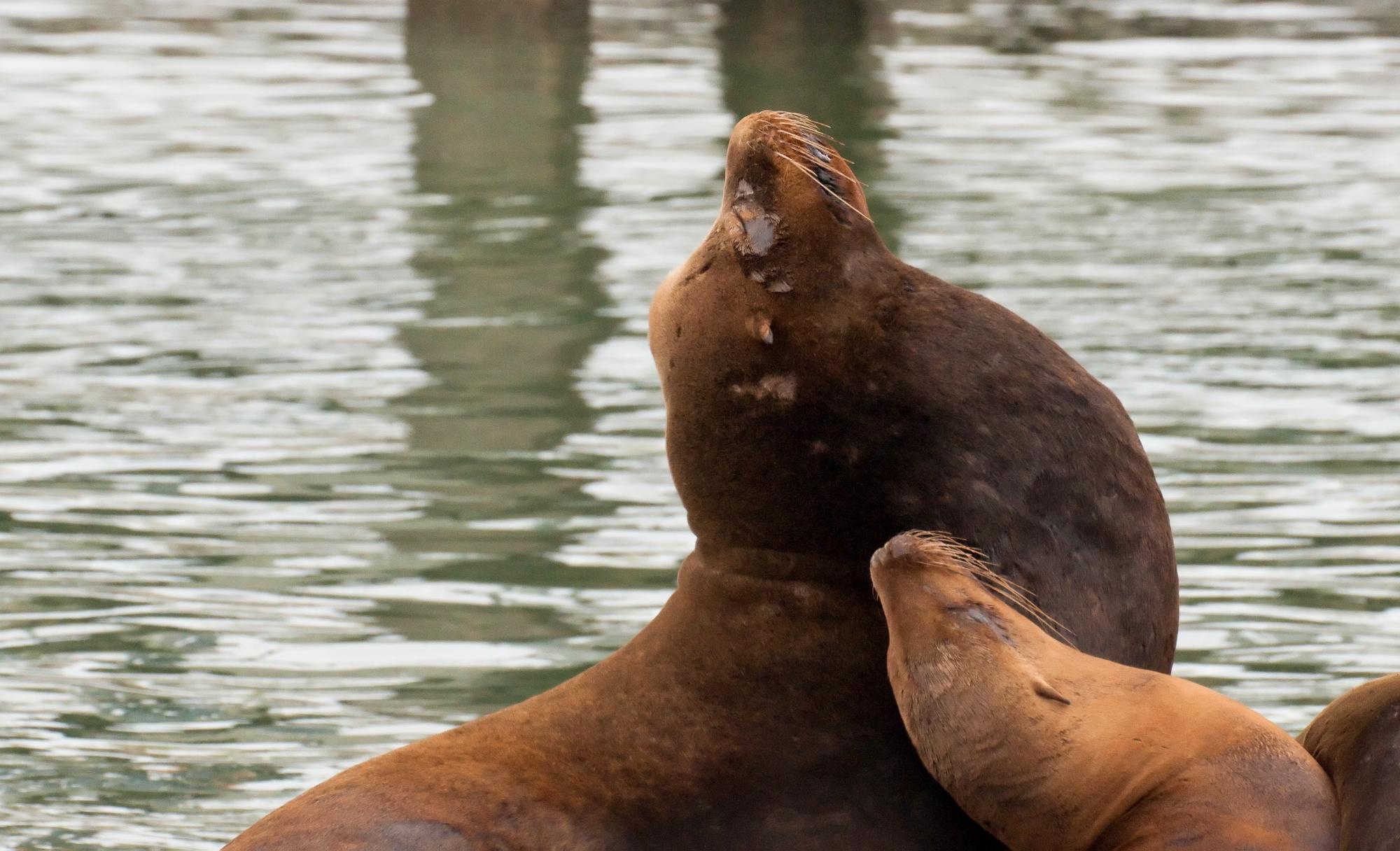
A very large male sea lion with a much smaller female.
Elkhorn Slough, Moss Landing, California • (Photo posted Wednesday 19 May, 2010) • (Photo taken 10:06:39 Friday 12 March, 2010) • © 2010 Terry Costales  #Elkhorn_Slough
#Elkhorn_Slough
Add a comment or report a mistake
|
|
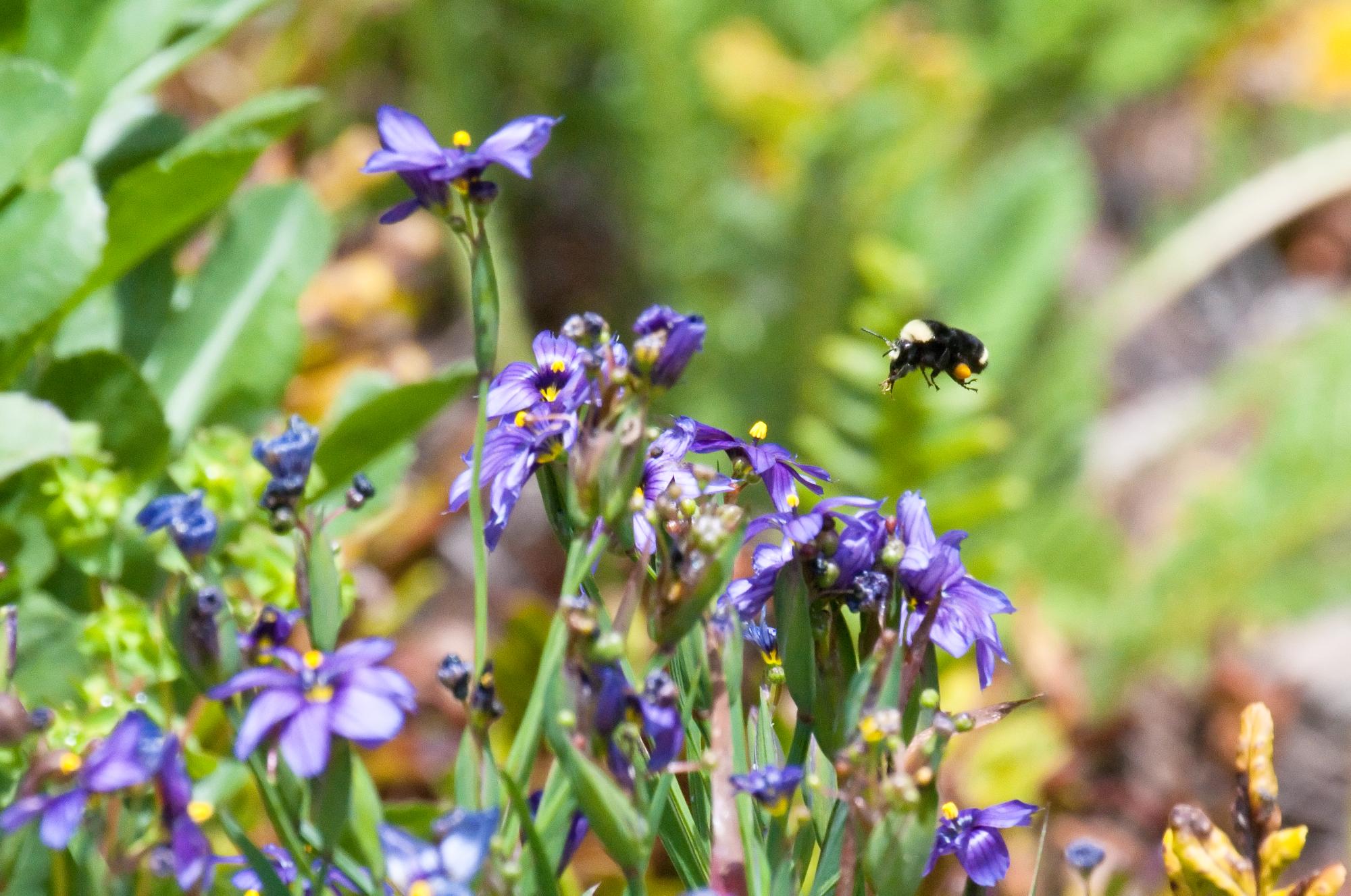
I have always wanted to photograph a bumblebee Nature composed this shot perfectly, I just cropped a little off the right side. The amazing thing to me is that it is in focus! Tilden Botanical Garden, Berkeley, California • (Photo posted Thursday 20 May, 2010) • (Photo taken 12:28:44 Tuesday 18, May 2010) • © 2010 Terry Costales  #20100520_Bumblebee
#20100520_Bumblebee
Add a comment or report a mistake
|
|
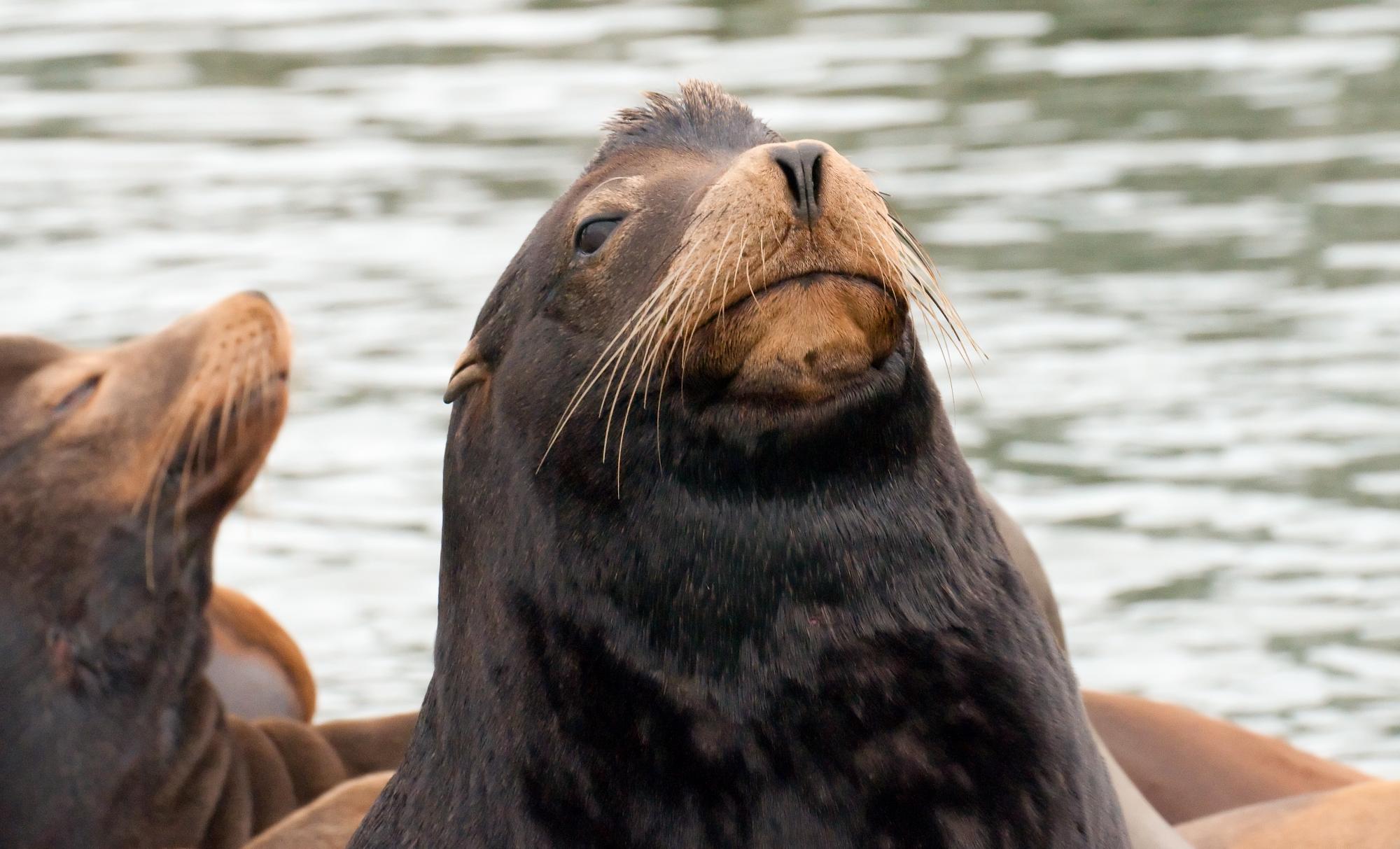
Close up of a male sea lion. According to Wiki, "Zalophus californianus" means "Californian big-head" because a male grows a crest of bone on top of his head that causes a bulging forehead.
Elkhorn Slough, Moss Landing, California • (Photo posted Friday 21 May, 2010) • (Photo taken 10:06:24 Friday 12 March, 2010) • © 2010 Terry Costales  #Close_Up
#Close_Up
Add a comment or report a mistake
|
|
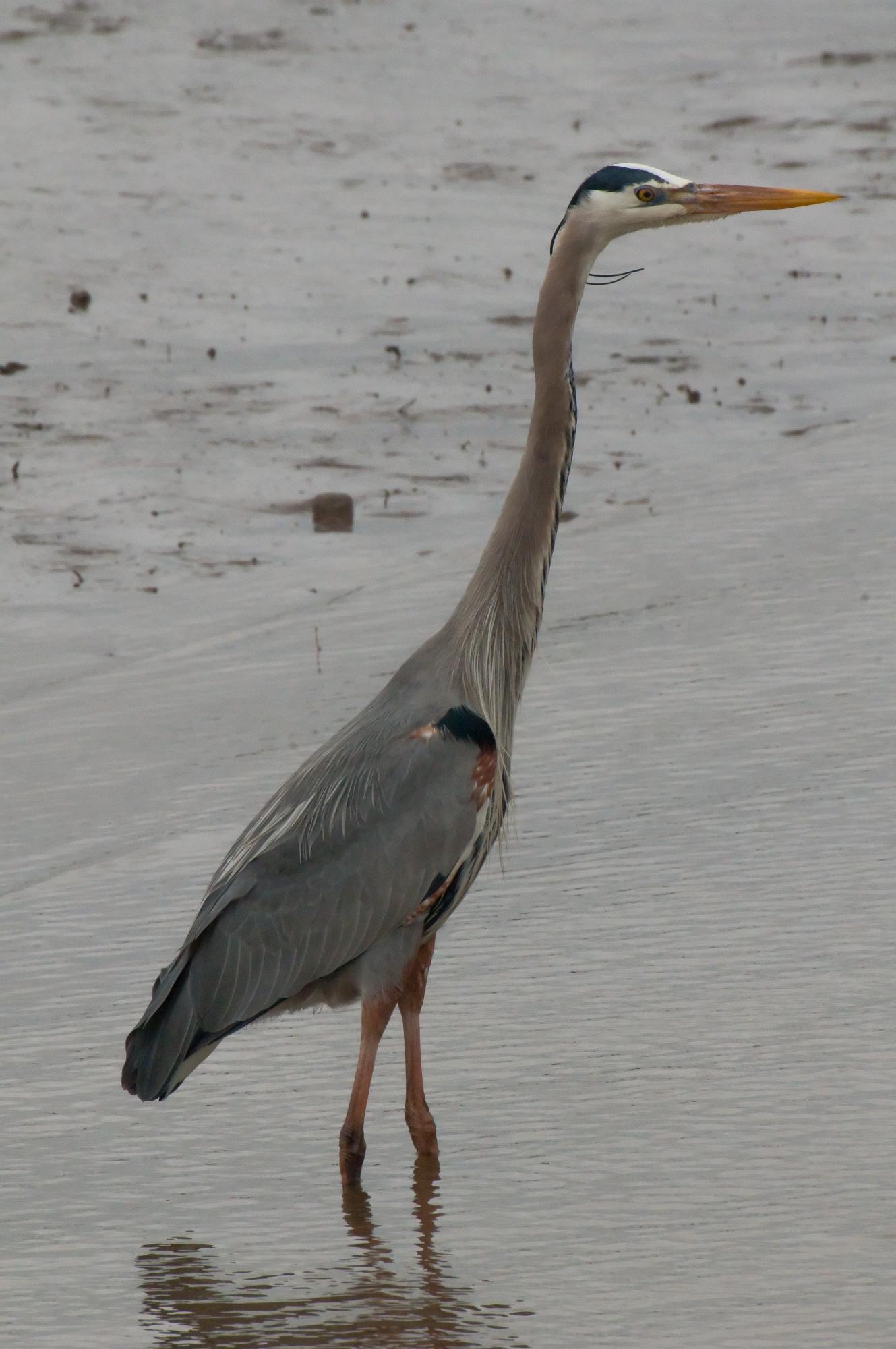
After the boat trip on Elkhorn Slough, we stopped by nearby Moss Landing State Beach and saw this marvelous Great Blue Heron.
It may have been a member of the breeding colony we saw from the earlier boat trip.
Elkhorn Slough, Moss Landing, California • (Photo posted Friday 21 May, 2010) • (Photo taken 11:59:15 Friday 12 March, 2010) • © 2010 Terry Costales  #Moss_Landing
#Moss_Landing
Add a comment or report a mistake
|
|
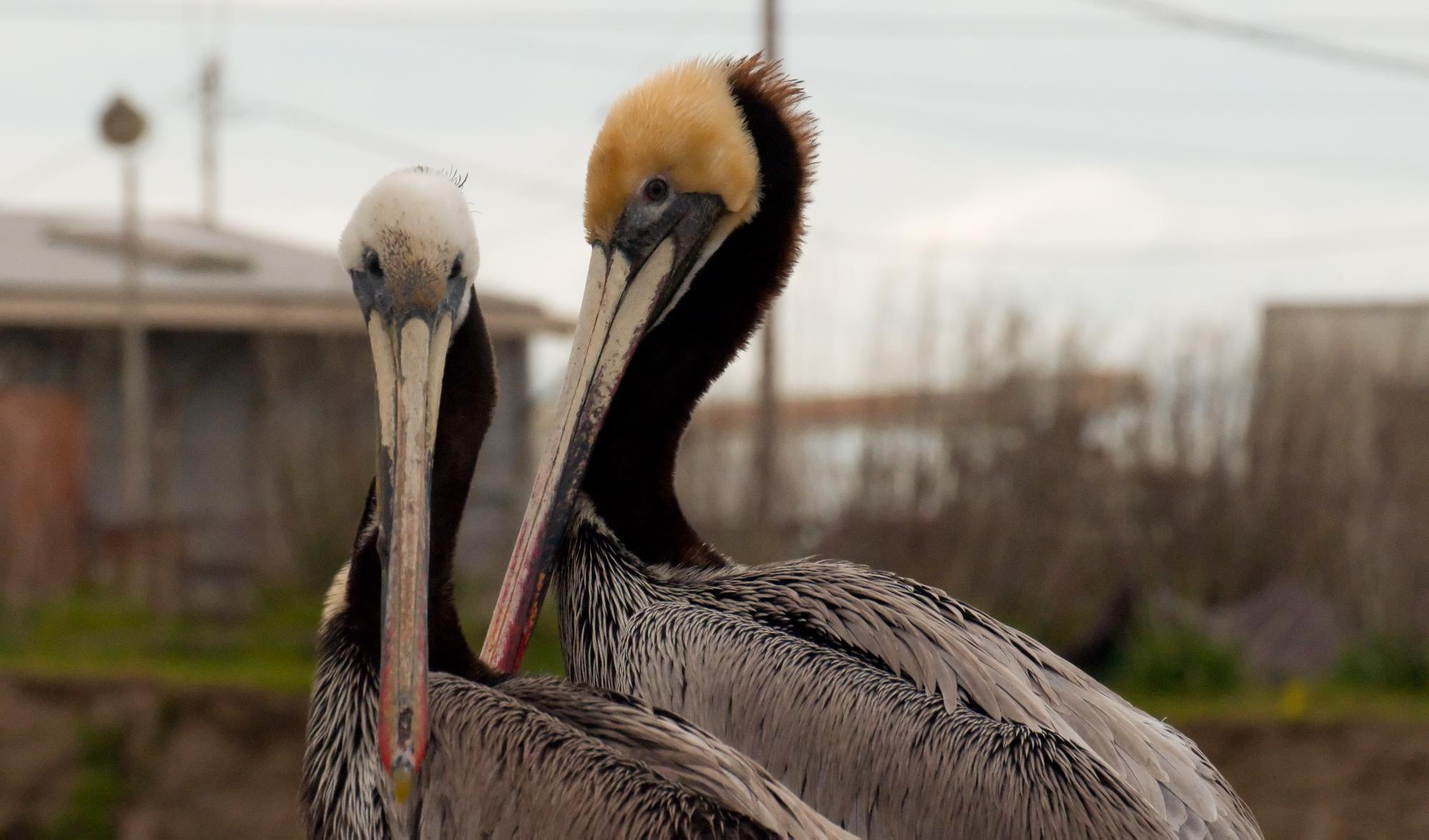 These two pelicans were one pair of dozens loitering around the marina, all waiting for a fishy opportunity. The one on the left was an immature bird which had not grown into its adult plumage.
Elkhorn Slough, Moss Landing, California • (Photo posted Saturday 22 May, 2010) • (Photo taken 09:54:28 Friday 12 March, 2010) • © 2010 Terry Costales  #Moss_Landing
#Moss_Landing
Add a comment or report a mistake
|
|
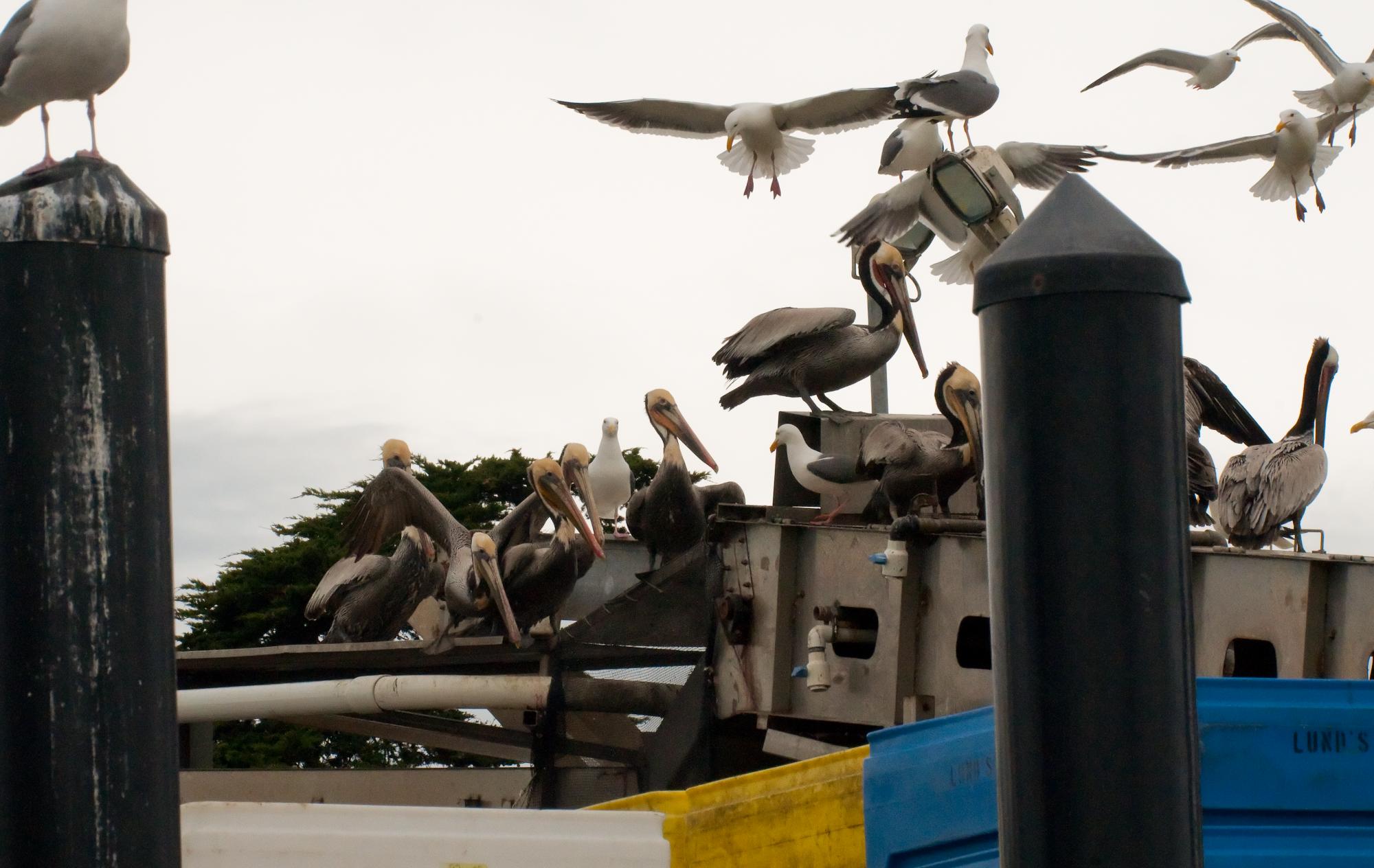 A large group of pelicans were perched on the fish processing equipment.
Elkhorn Slough, Moss Landing, California • (Photo posted Saturday 22 May, 2010) • (Photo taken 09:49:27 Friday 12 March, 2010) • © 2010 Terry Costales  #Fishing_Equipment
#Fishing_Equipment
Add a comment or report a mistake
|
|
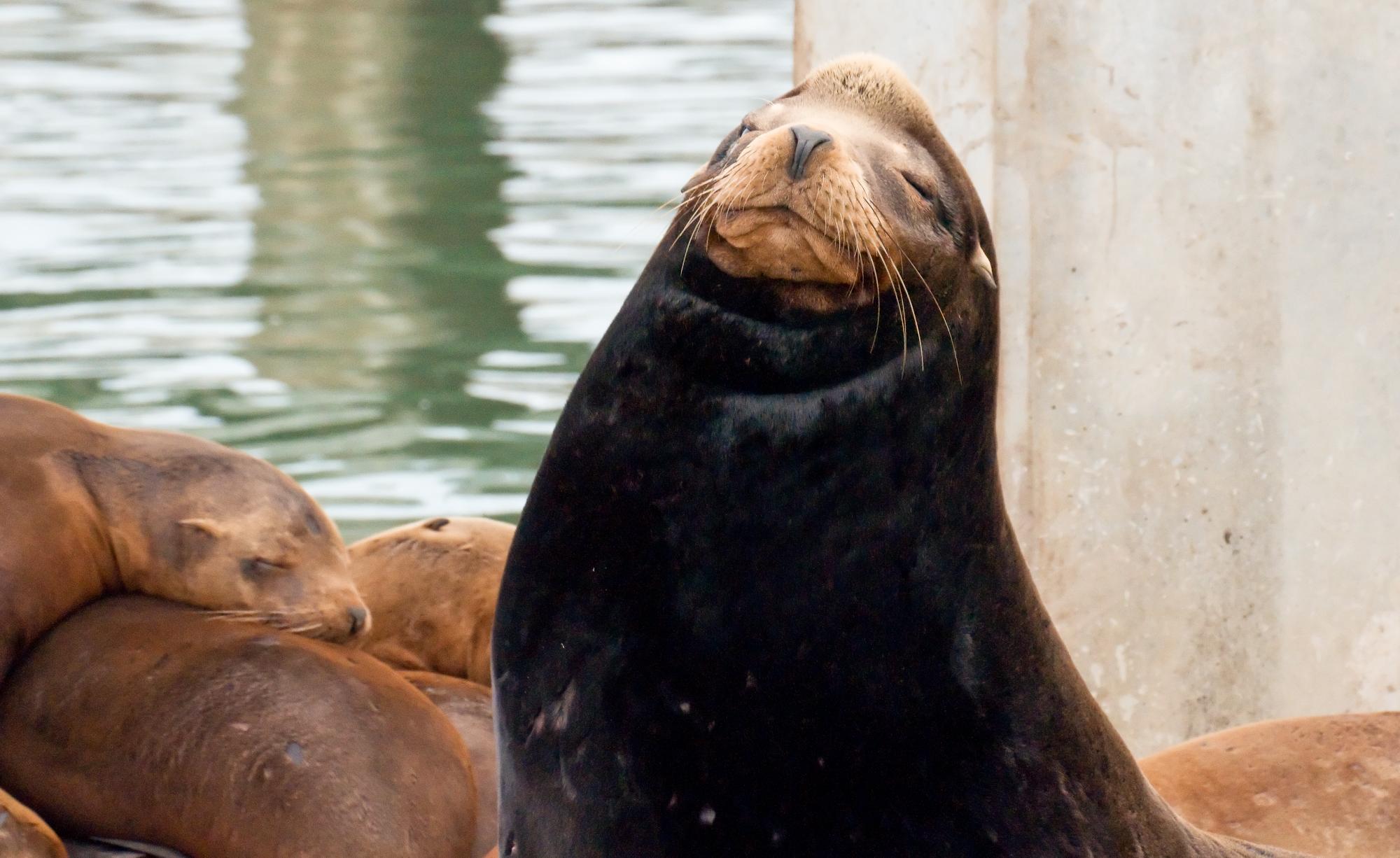 Portrait of a large male sea lion sleepily surveying his domain.
Elkhorn Slough, Moss Landing, California • (Photo posted Sunday 23 May, 2010) • (Photo taken 10:06:43 Friday 12 March, 2010) • © 2010 Terry Costales  #Lion_Sleepy
#Lion_Sleepy
Add a comment or report a mistake
|
|
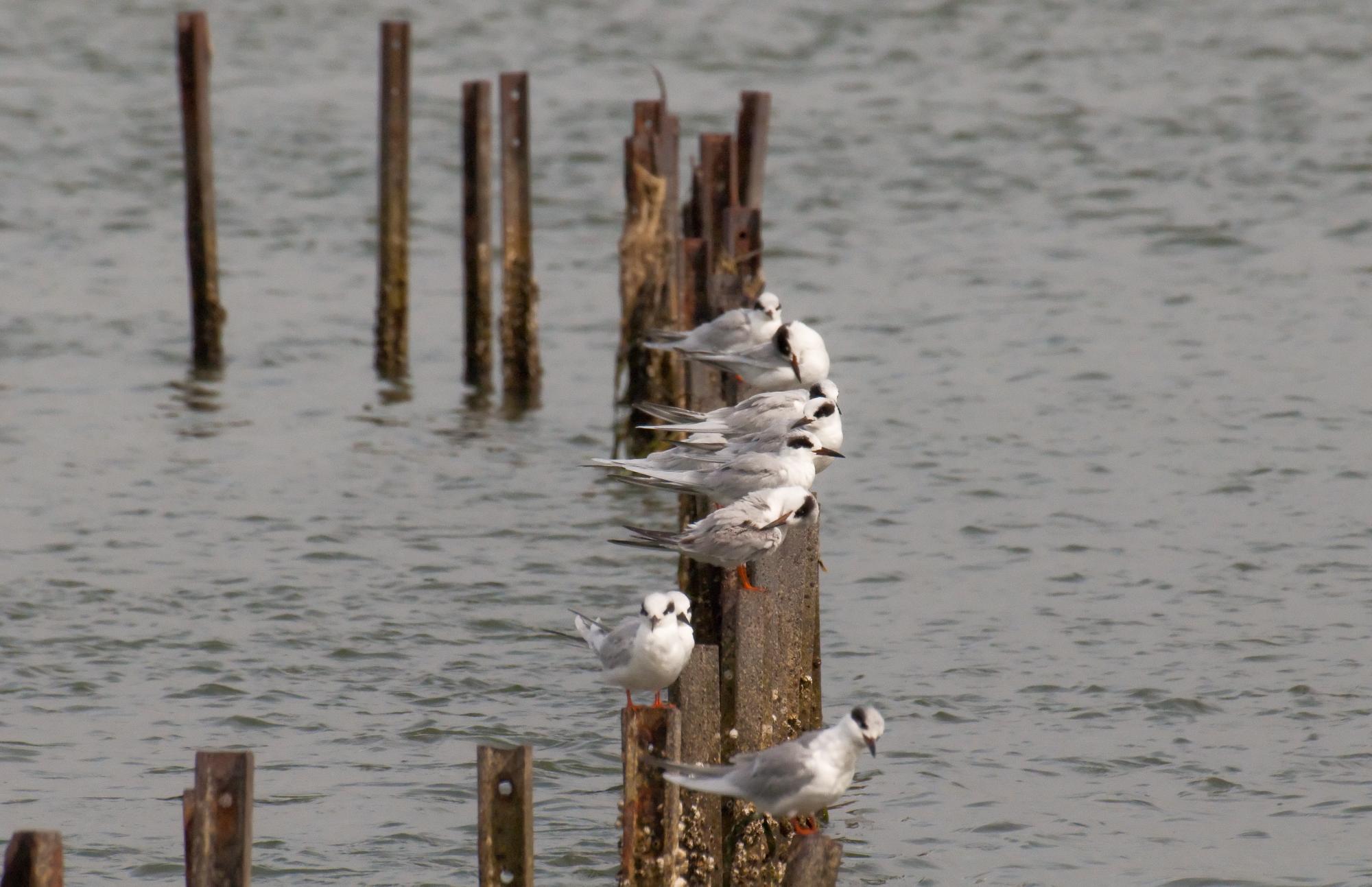
A row of Forster Terns perched on the partial remains of a sunken ship.
Elkhorn Slough, Moss Landing, California • (Photo posted Sunday 23 May, 2010) • (Photo taken 10:26:48 Friday 12 March, 2010) • © 2010 Terry Costales  #Sunken_Ship
#Sunken_Ship
Add a comment or report a mistake
|
|
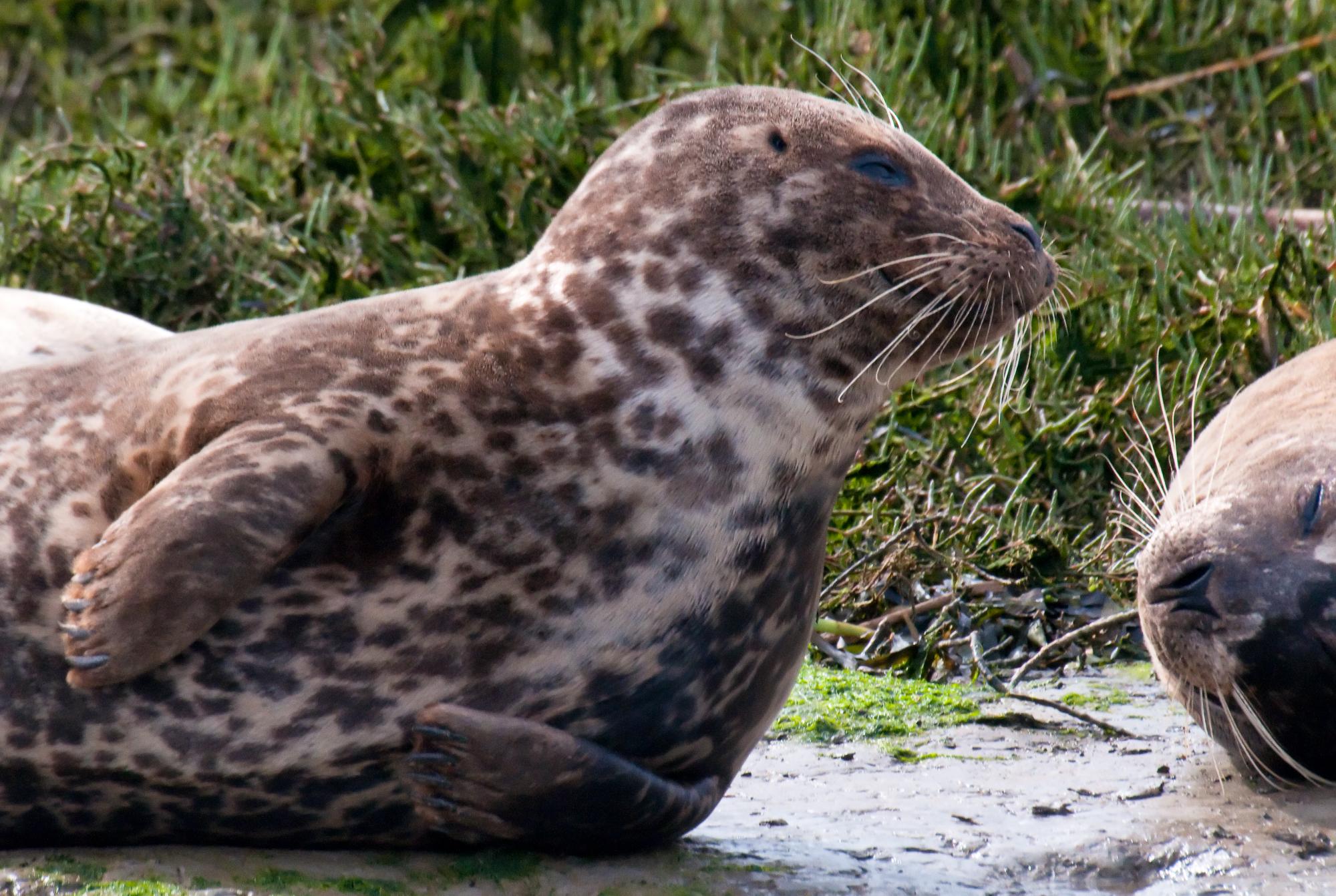 I love the pattern of this seal's fur, but I would never entertain the idea of taking it away from her to use for myself.
Elkhorn Slough Safari, Moss Landing, California • (Photo posted Monday 24 May, 2010) • (Photo taken 10:19:44 Friday 12 March, 2010) • © 2010 Terry Costales  #Seal_Fur
#Seal_Fur
Add a comment or report a mistake
|
|
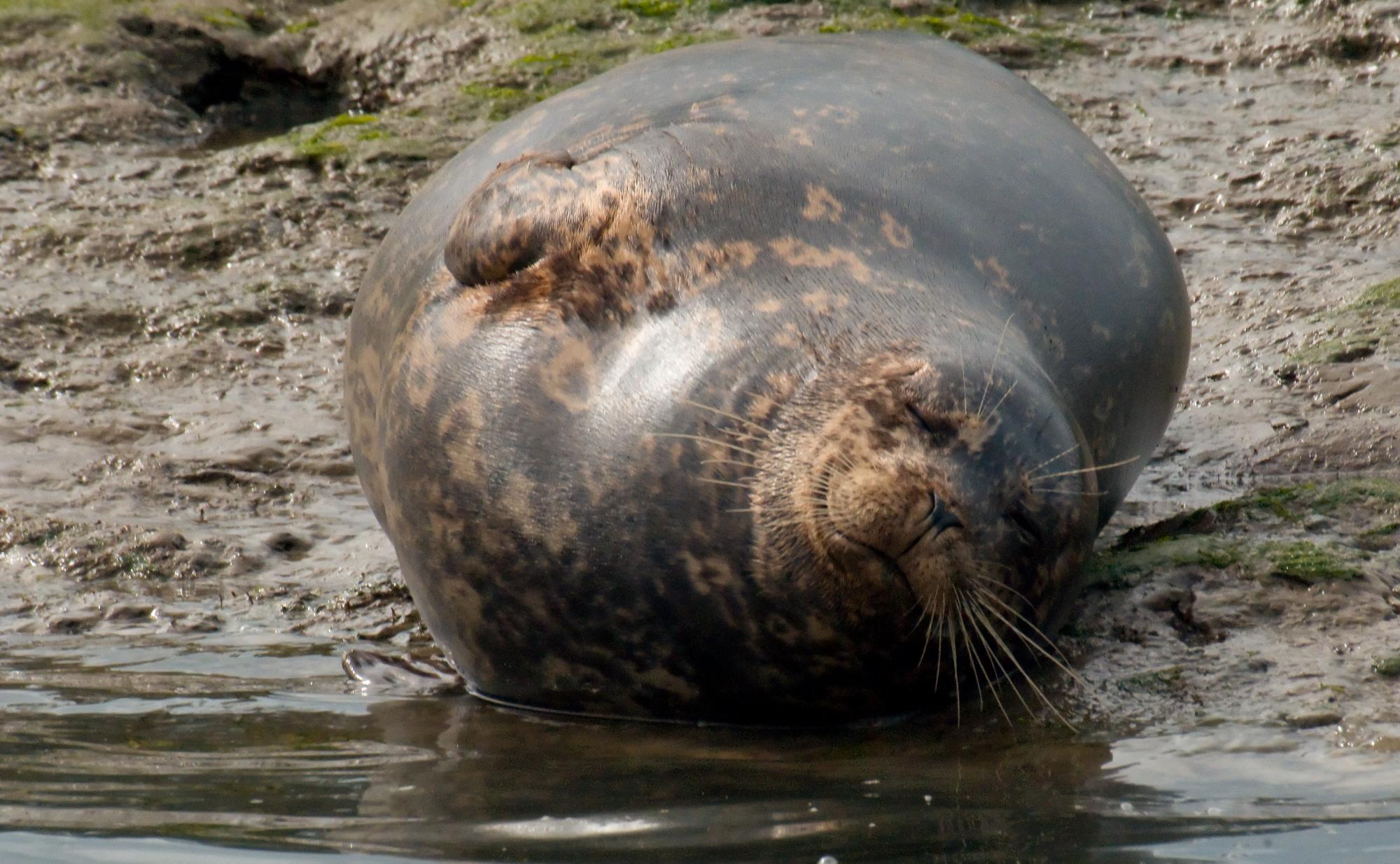 A very pregnant Harbor Seal looking quite pleased with herself.
Elkhorn Slough Safari, Moss Landing, California • (Photo posted Monday 24 May, 2010) • (Photo taken 10:19:54 Friday 12 March, 2010) • © 2010 Terry Costales  #Harbor_Seal
#Harbor_Seal
Add a comment or report a mistake
|
|
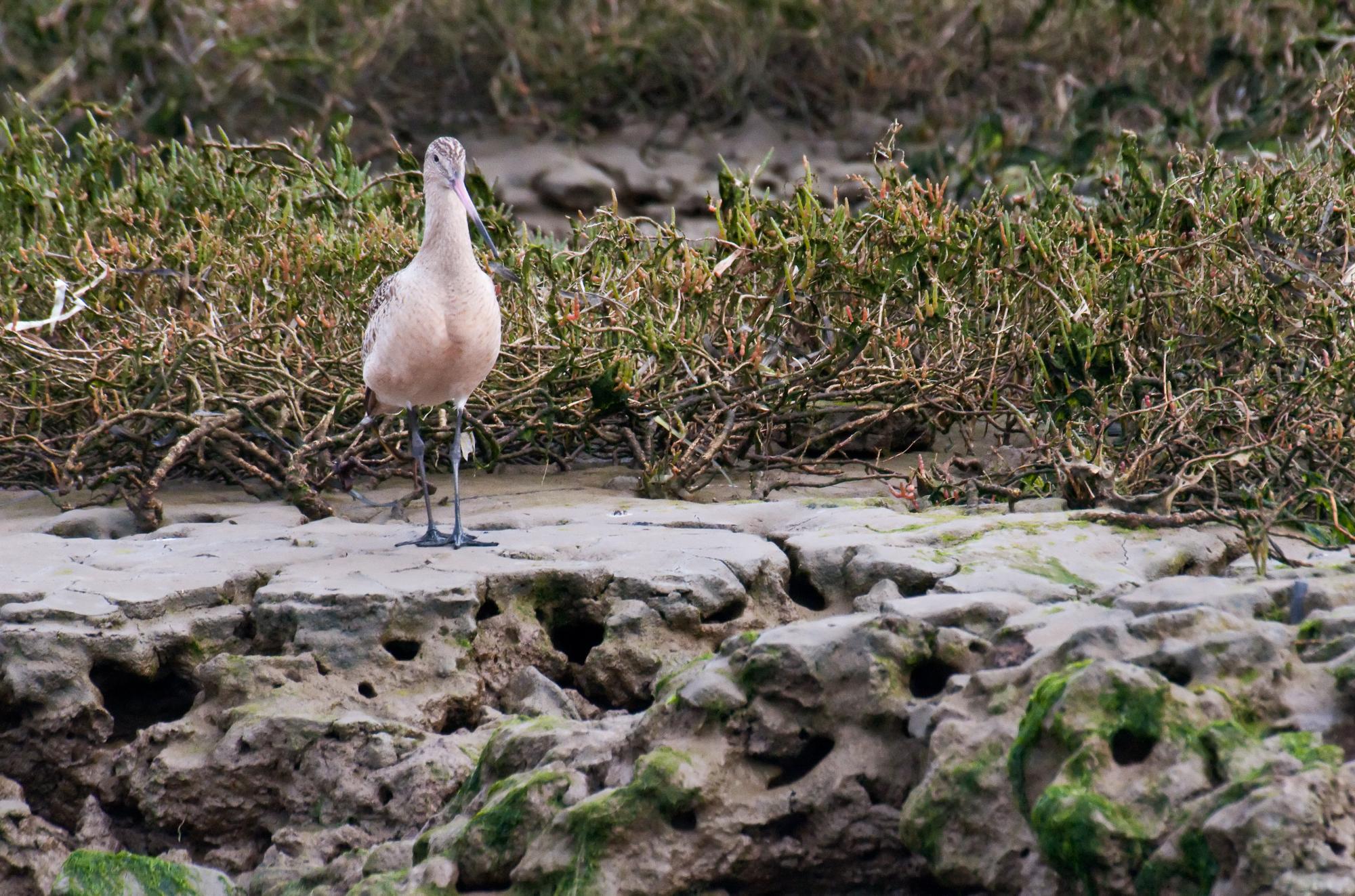
A Marbled Godwit stood on the shore of the slough and displayed its classy black legs. Elkhorn Slough, Moss Landing, California • (Photo posted Tuesday 25 May, 2010) • (Photo taken 10:14:25 Friday 12 March, 2010) • © 2010 Terry Costales  #Its_Legs
#Its_Legs
Add a comment or report a mistake
|
|
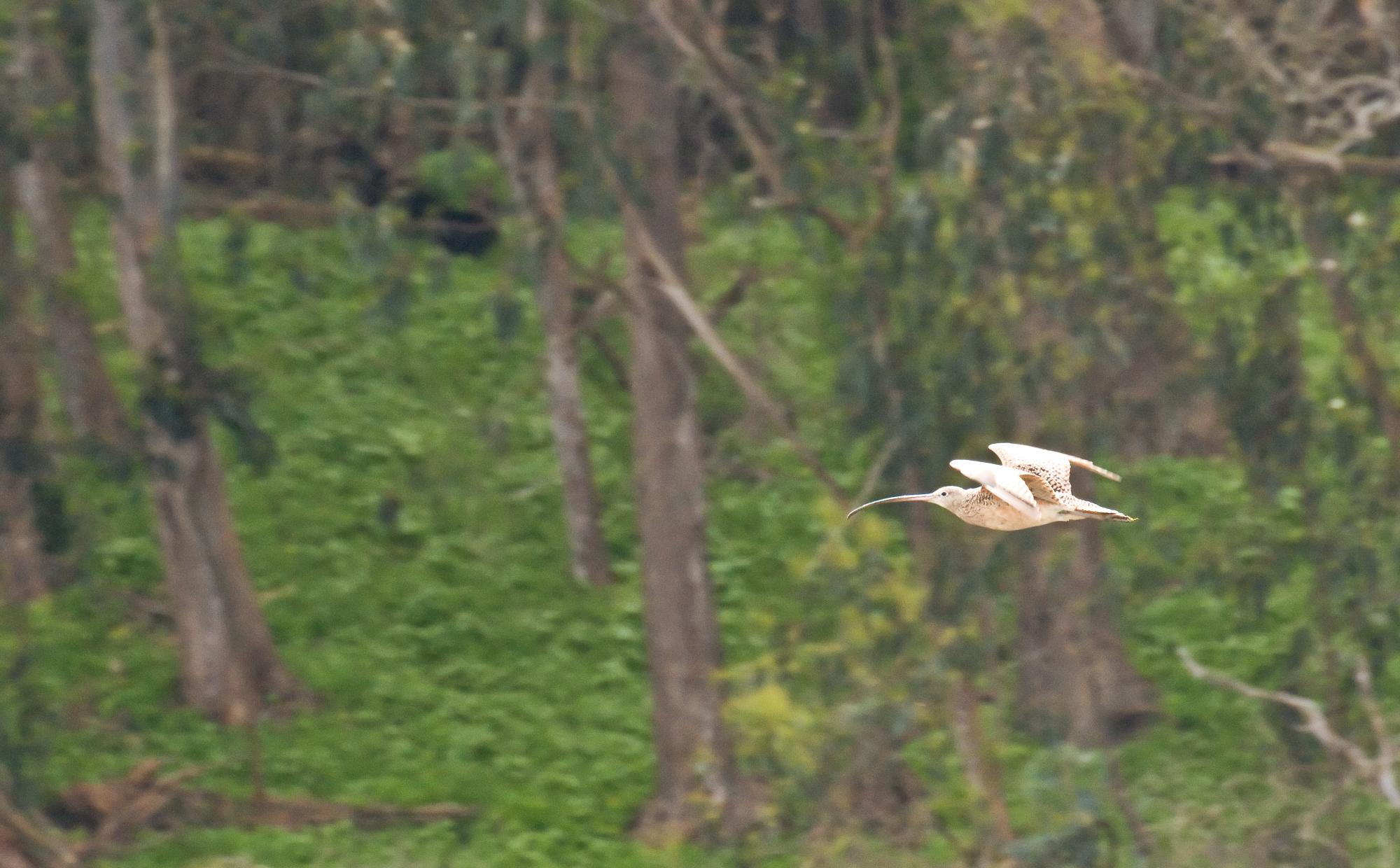
This photo of a Whimbrel flying illustrates the unique shape of its bill.
Elkhorn Slough, Moss Landing, California • (Photo posted Tuesday 25 May, 2010) • (Photo taken 10:21:004 Friday 12 March, 2010) • © 2010 Terry Costales  #Elkhorn_Slough
#Elkhorn_Slough
Add a comment or report a mistake
|
|
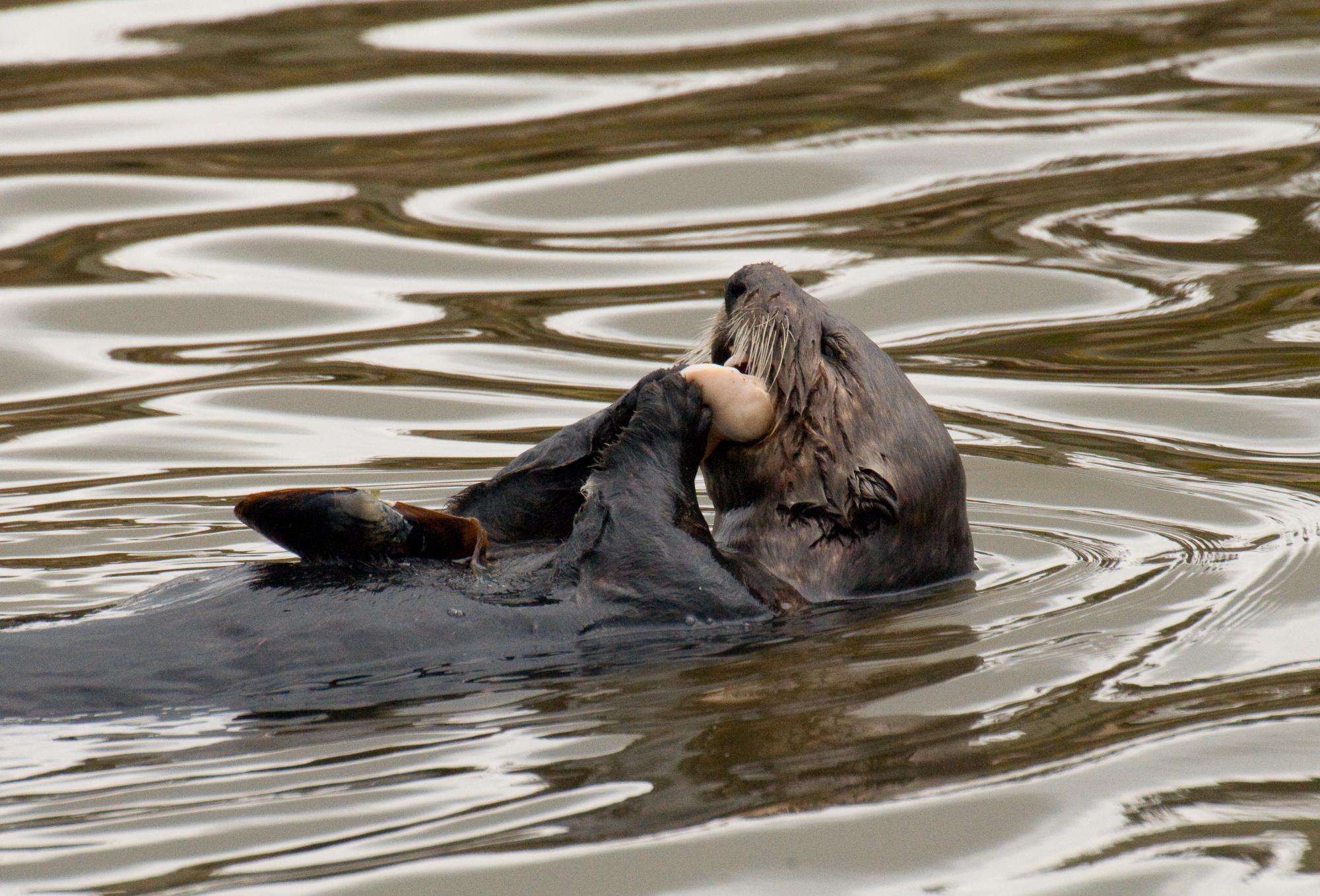 The otter balanced his "plate" on his stomach while enjoying that last little morsel. Elkhorn Slough, Moss Landing, California • (Photo posted Wednesday 26 May, 2010) • (Photo taken 11:21:01 Friday 12 March, 2010) • © 2010 Terry Costales  #On_Stomach
#On_Stomach
Add a comment or report a mistake
|
|
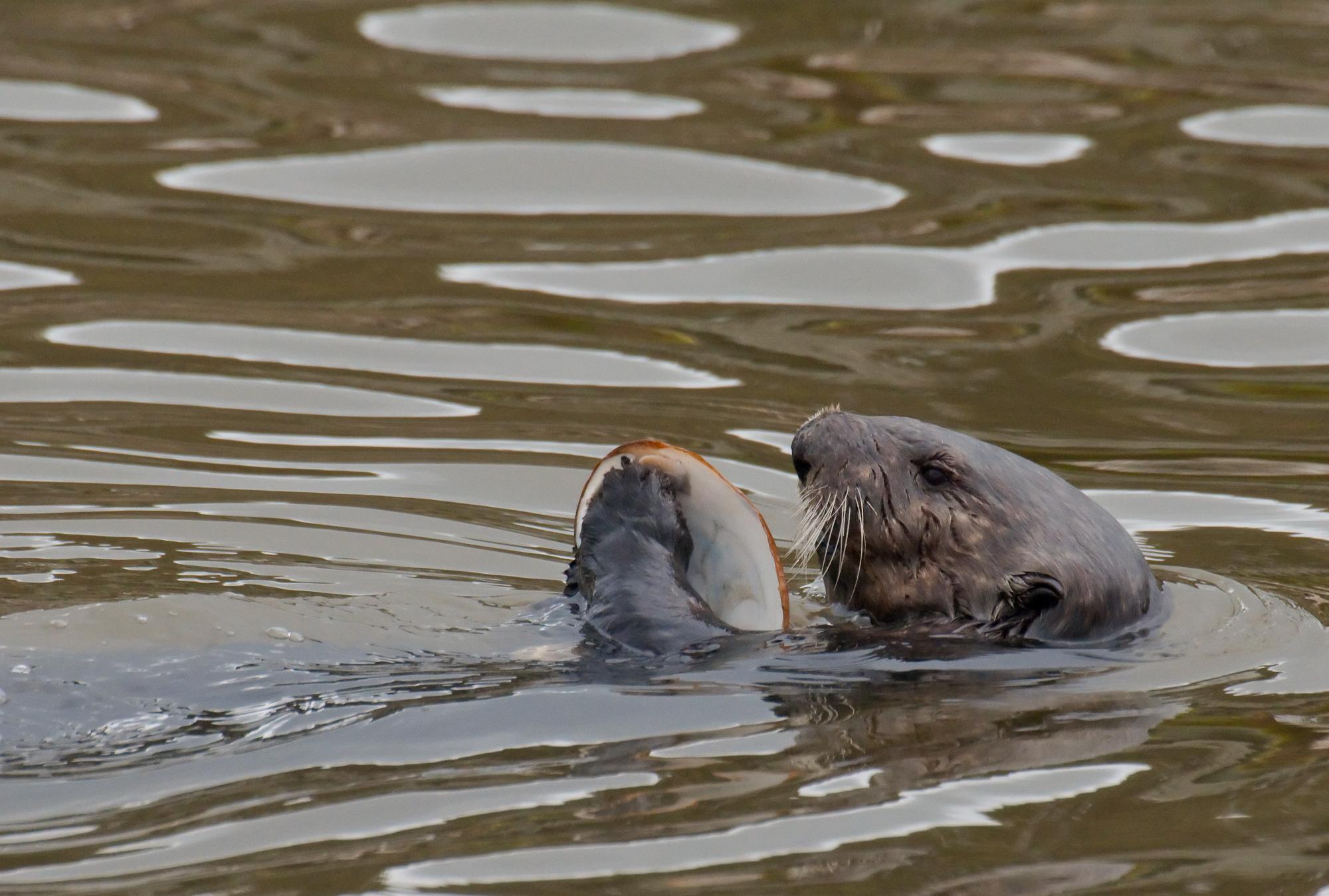 A shell was almost the size of the otter's head, but was no match for its appetite.
Elkhorn Slough, Moss Landing, California • (Photo posted Wednesday 26 May, 2010) • (Photo taken 10:47:58 Friday 12 March, 2010) • © 2010 Terry Costales  #Large_Shell
#Large_Shell
Add a comment or report a mistake
|
|
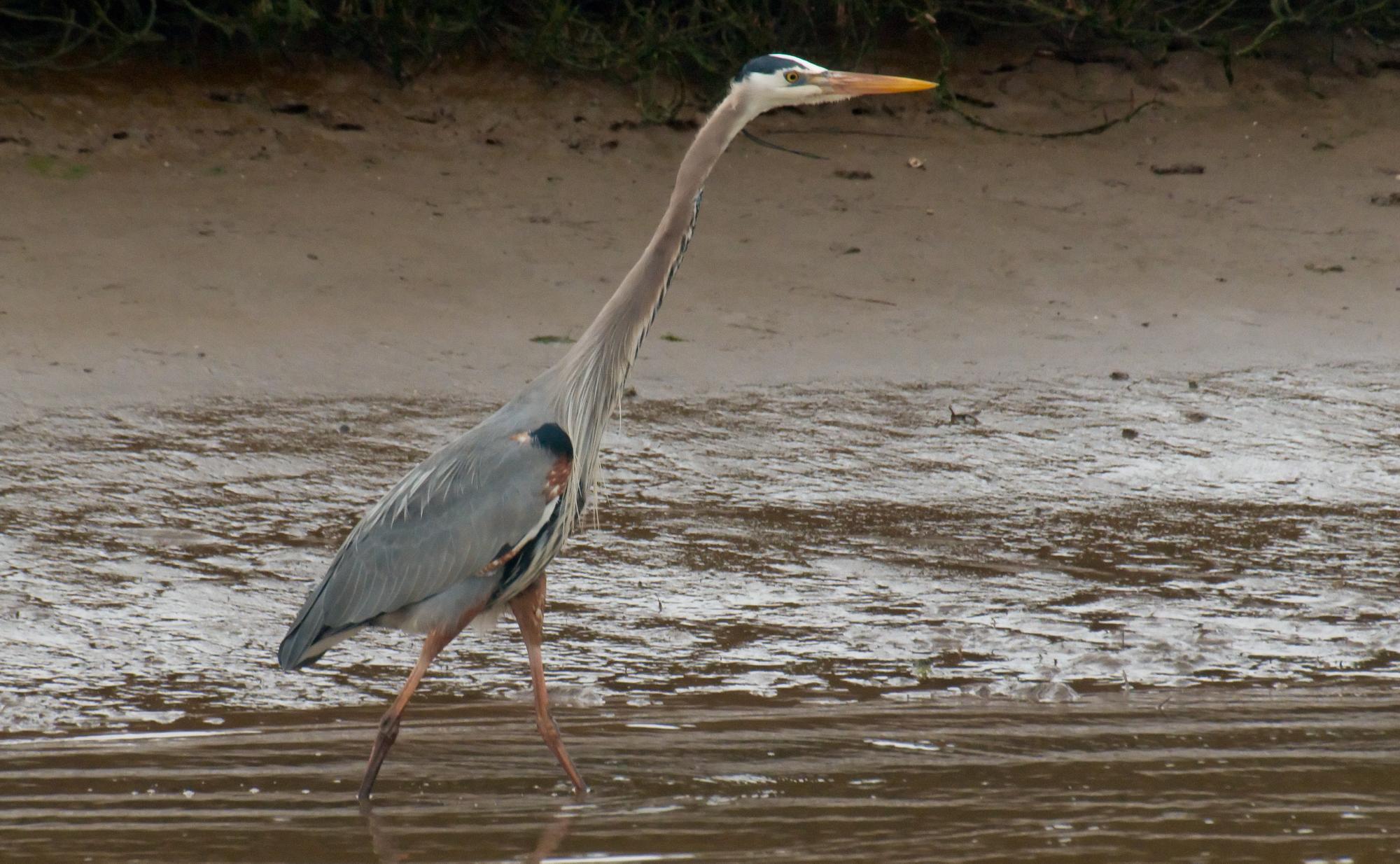 A Great Blue Heron waded in shallow water in search of food.
Moss Landing State Beach, California • (Photo posted Thursday 27 May, 2010) • (Photo taken 11:59:15 Friday 12 March, 2010) • © 2010 Terry Costales  #Heron_Waded
#Heron_Waded
Add a comment or report a mistake
|
|
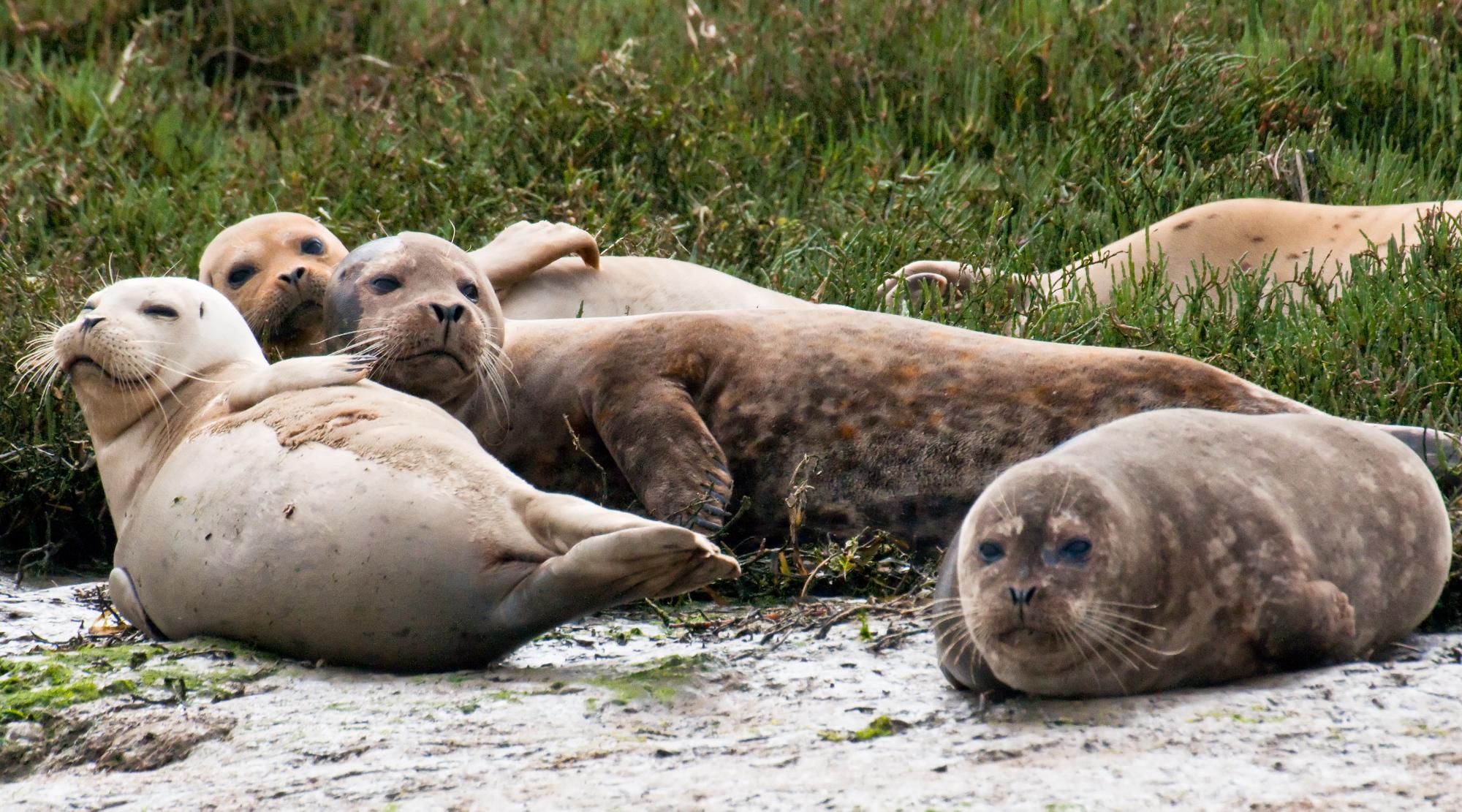 I know they are wild animals with big teeth and claws but jeez, don't they look cuddly?!
Elkhorn Slough Safari, Moss Landing, California • (Photo posted Sunday 30 May, 2010) • (Photo taken 10:18:50 Friday 12 March, 2010) • © 2010 Terry Costales  #Big_Teeth
#Big_Teeth
Add a comment or report a mistake
|
|
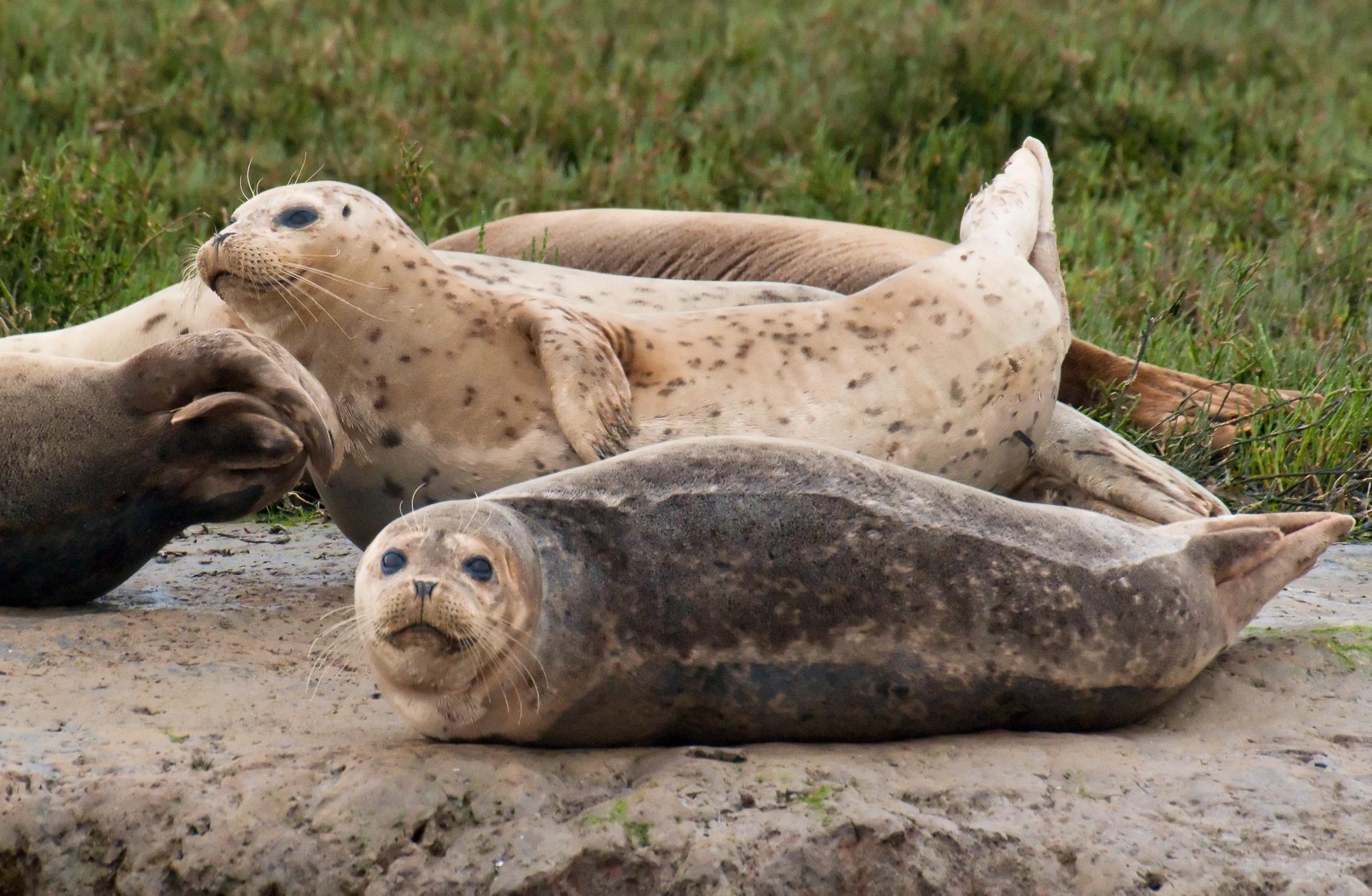 I was able to get nice close-ups of the harbor seals because I used a telephoto lens. If the boat had come this close they would have been disturbed and swum away.
Elkhorn Slough Safari, Moss Landing, California • (Photo posted Monday 31 May, 2010) • (Photo taken 11:13:52 Friday 12 March, 2010) • © 2010 Terry Costales  #Up_Close
#Up_Close
Add a comment or report a mistake
|
|
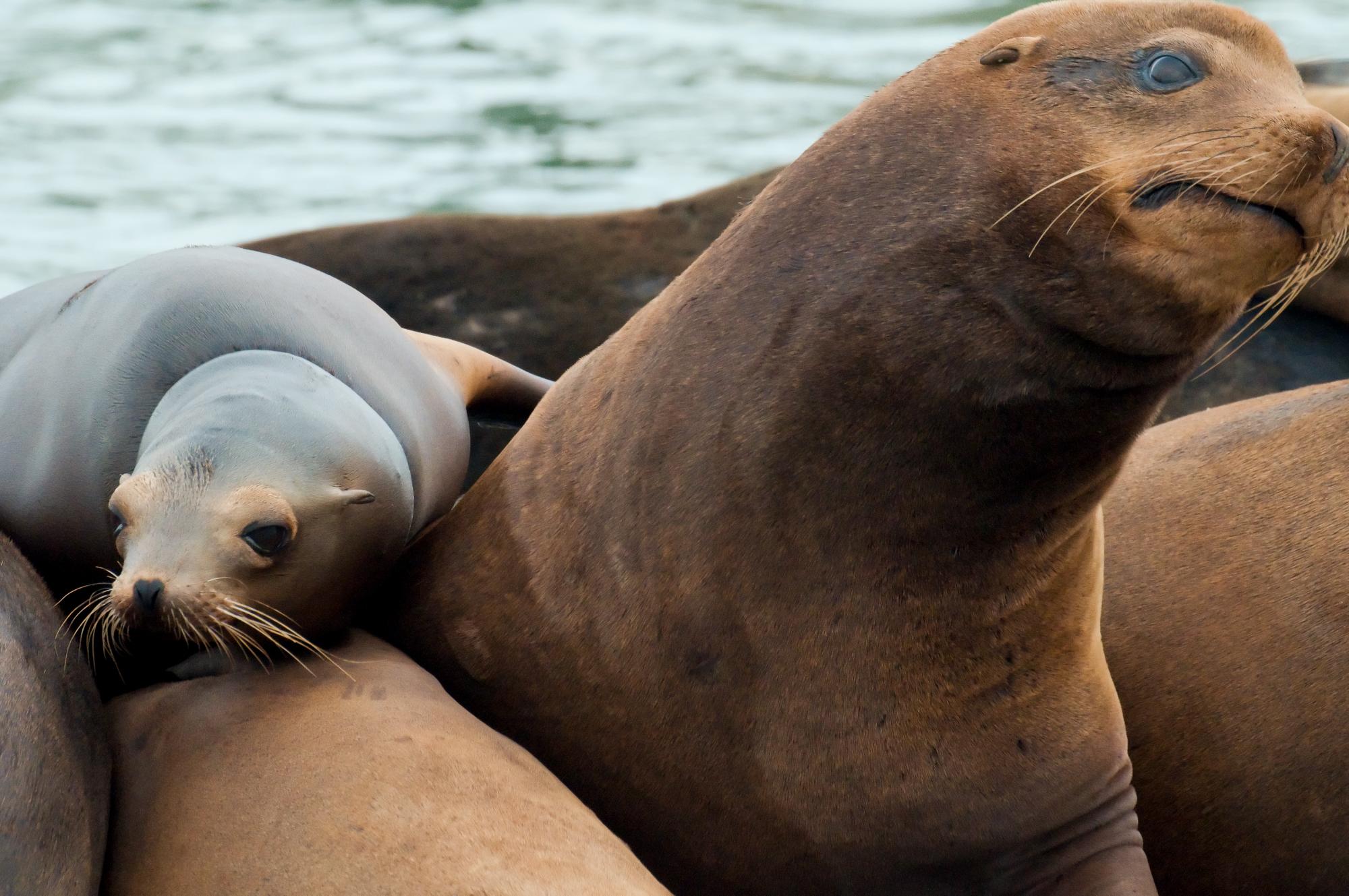 More of the endless variation of facial expressions you can always find in sea lions.
Elkhorn Slough, Moss Landing, California • (Photo posted Tuesday 1 June, 2010) • (Photo taken 10:06:30 Friday 12 March, 2010) • © 2010 Terry Costales  #Lion_Expressions
#Lion_Expressions
Add a comment or report a mistake
|
|
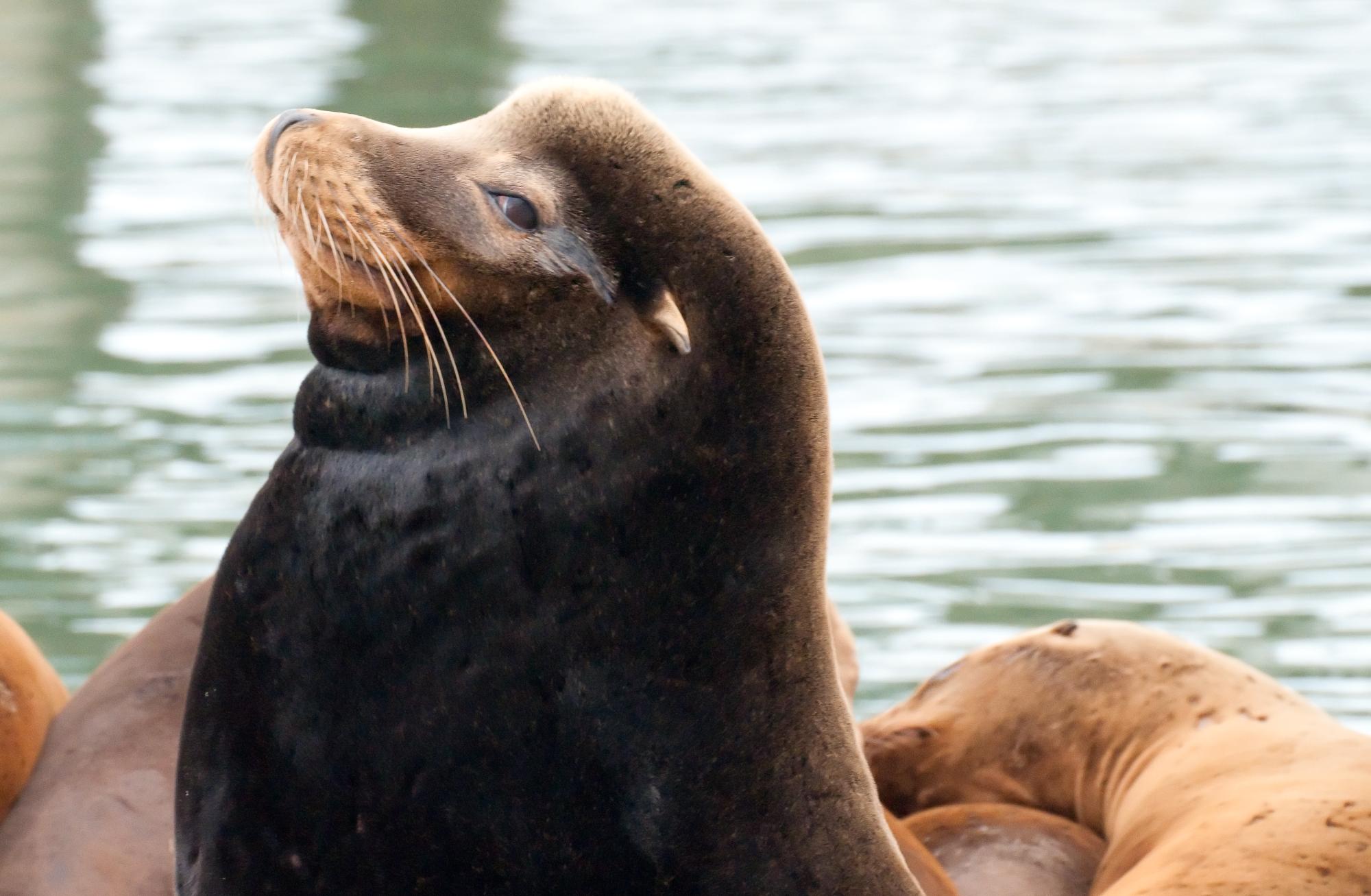 King of the mountain and he knows it.
Elkhorn Slough, Moss Landing, California • (Photo posted Tuesday 1 June, 2010) • (Photo taken 10:06:405 Friday 12 March, 2010) • © 2010 Terry Costales  #Of_Mountain
#Of_Mountain
Add a comment or report a mistake
|
|
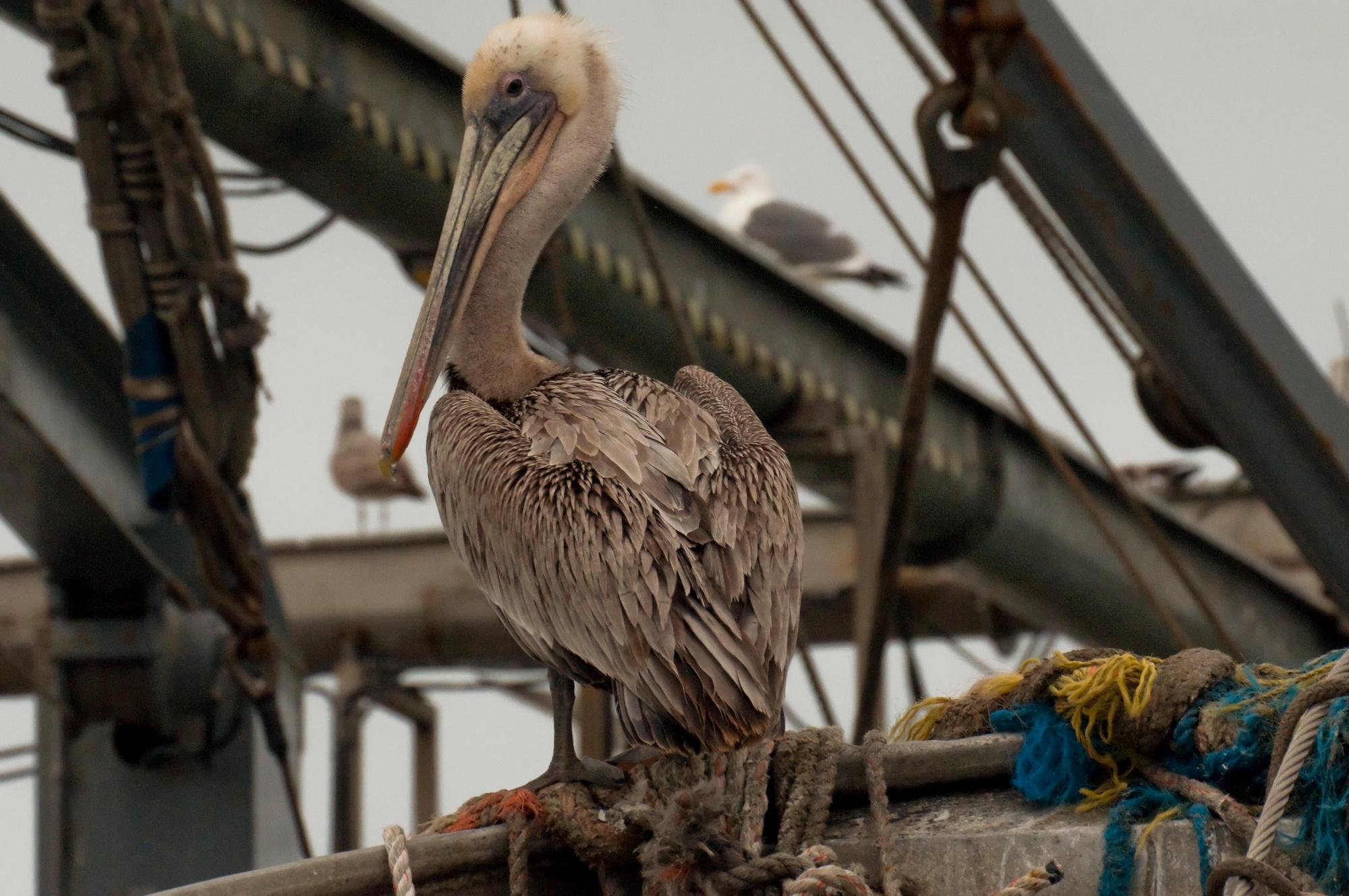 Pelican posed aboard an old fishing boat.
Elkhorn Slough, Moss Landing, California • (Photo posted Wednesday 2 June, 2010) • (Photo taken 011:25:24 Friday 12 March, 2010) • © 2010 Terry Costales  #Fishing_Boat
#Fishing_Boat
Add a comment or report a mistake
|
|
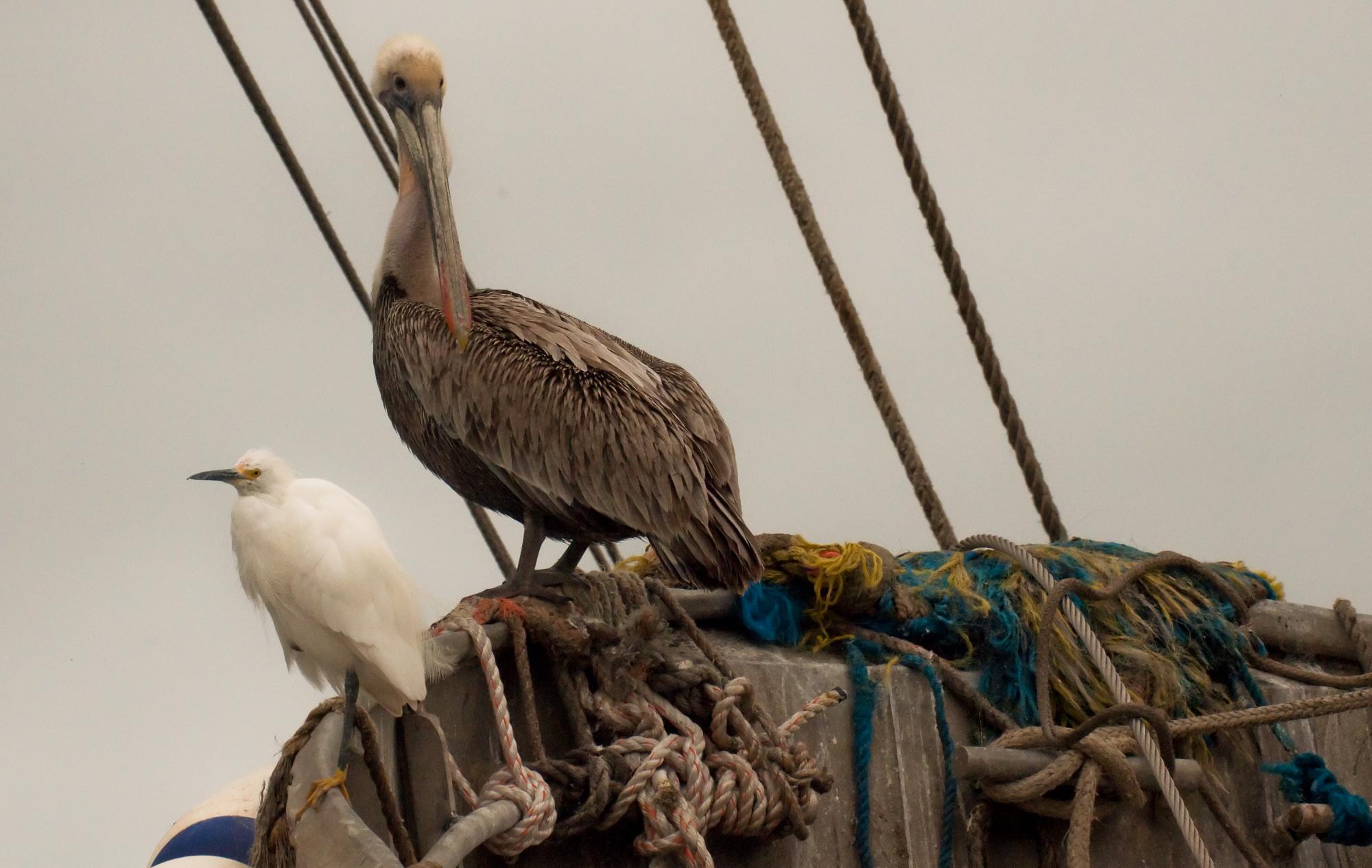 A Pelican and Snowy Egret perched on the edge of an old vessel. The frayed ropes added a colorful touch.
Elkhorn Slough, Moss Landing, California • (Photo posted Thursday 3 June, 2010) • (Photo taken 09:49:27 Friday 12 March, 2010) • © 2010 Terry Costales  #Snowy_Egret
#Snowy_Egret
Add a comment or report a mistake
|
|
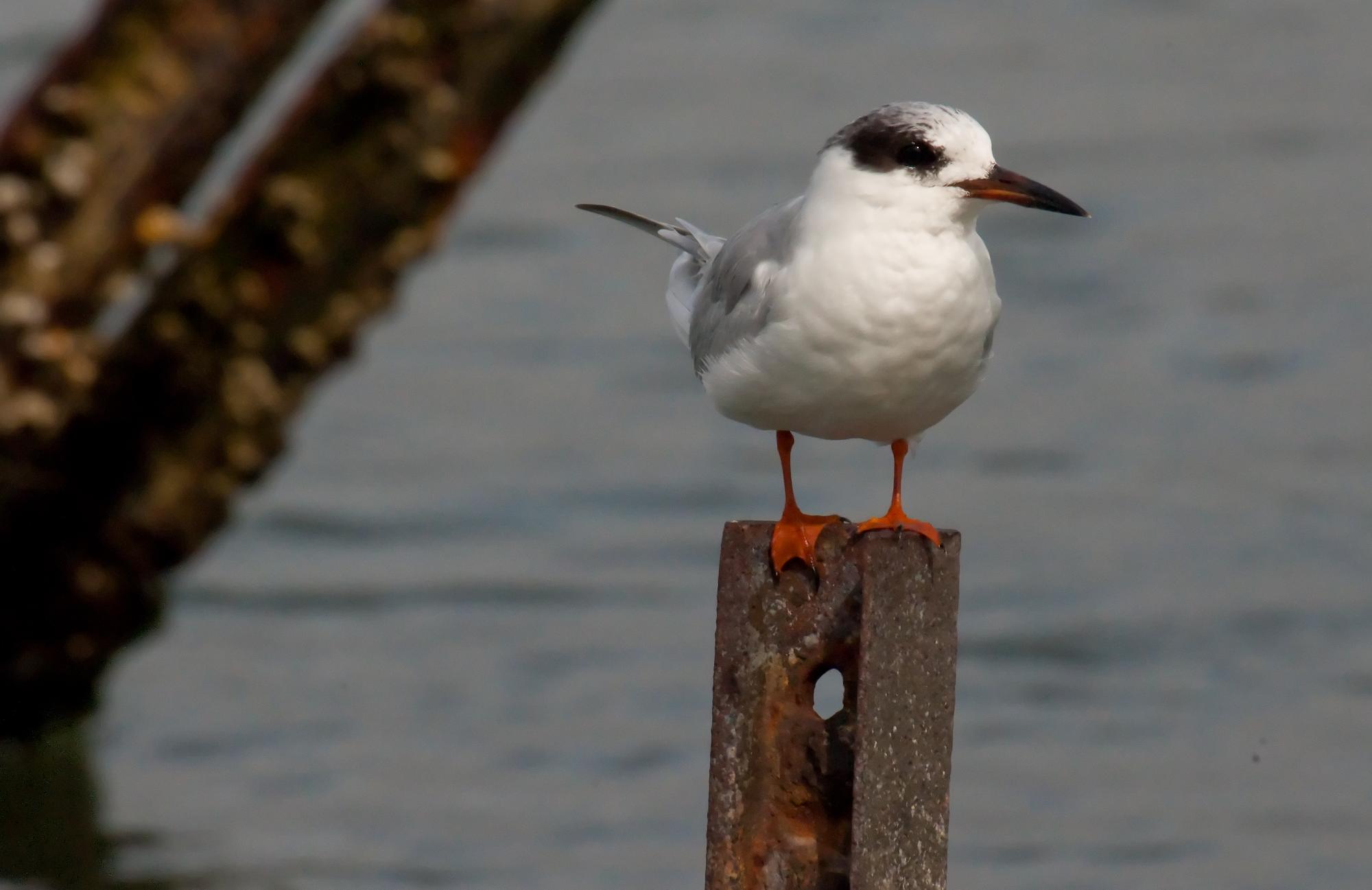
It was satisfying to get a close-up of this wonderful diving bird.
Elkhorn Slough, Moss Landing, California • (Photo posted Thursday 3 June, 2010) • (Photo taken 10:27:05 Friday 12 March, 2010) • © 2010 Terry Costales  #Elkhorn_Slough
#Elkhorn_Slough
Add a comment or report a mistake
|
|
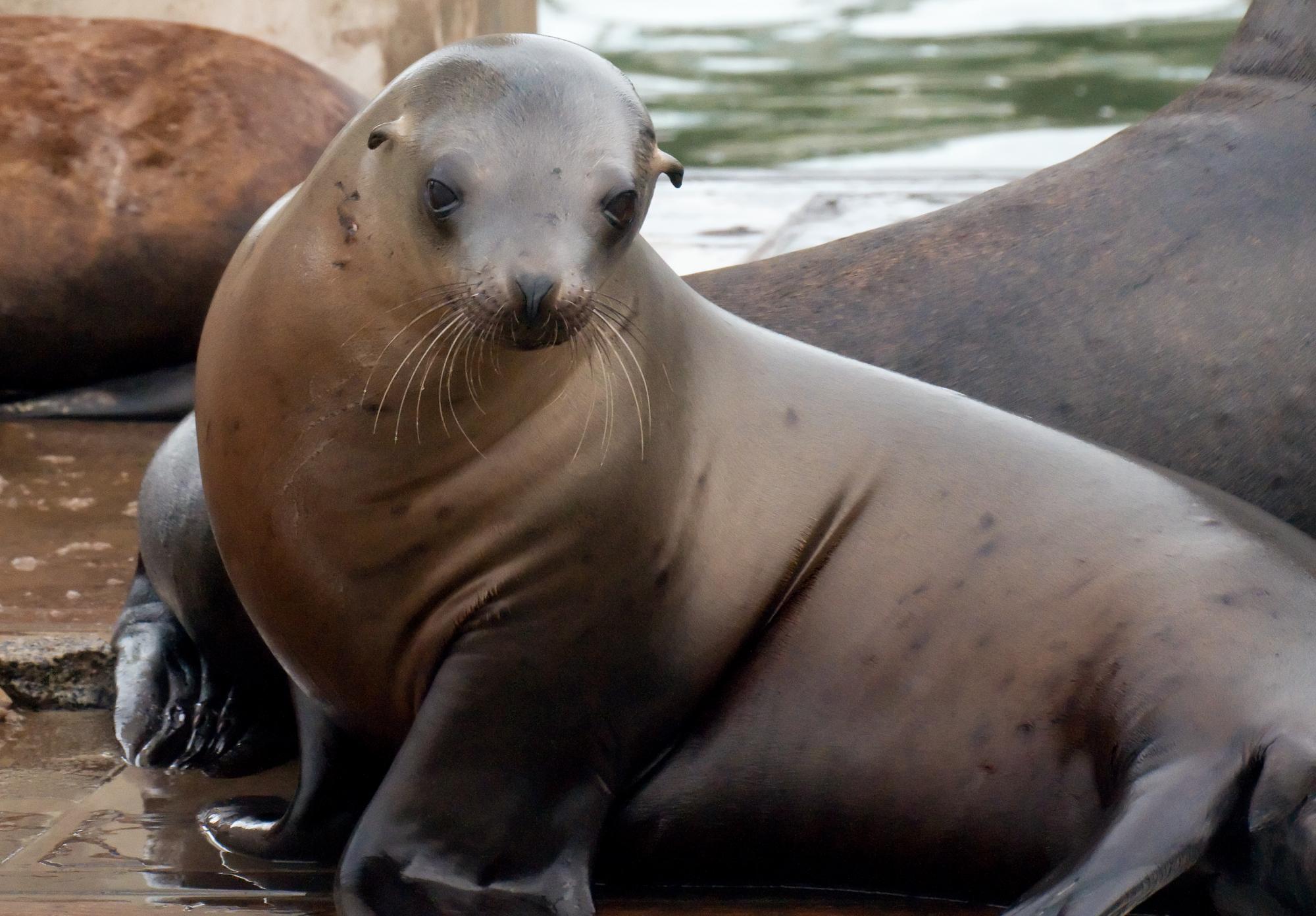 A female sea lion tried to appear very demure.
Elkhorn Slough, Moss Landing, California • (Photo posted Friday 4 June, 2010) • (Photo taken 10:06:05 Friday 12 March, 2010) • © 2010 Terry Costales  #Sea_Lion
#Sea_Lion
Add a comment or report a mistake
|
|
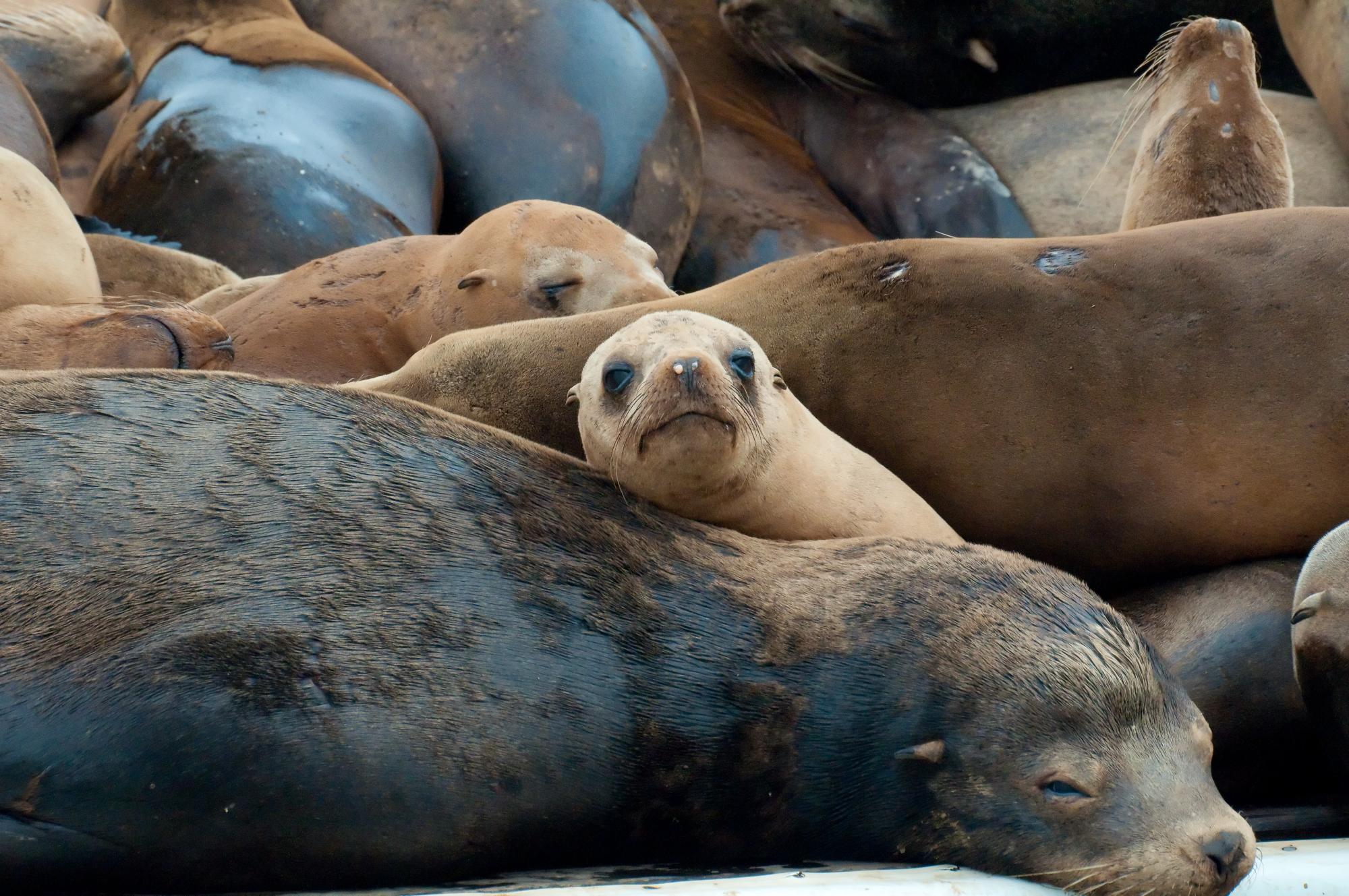 A very young sea lion was sleepily curious about his observers.
Elkhorn Slough, Moss Landing, California • (Photo posted Friday 4 June, 2010) • (Photo taken 10:06:05 Friday 12 March, 2010) • © 2010 Terry Costales  #Sea_Lion
#Sea_Lion
Add a comment or report a mistake
|
|
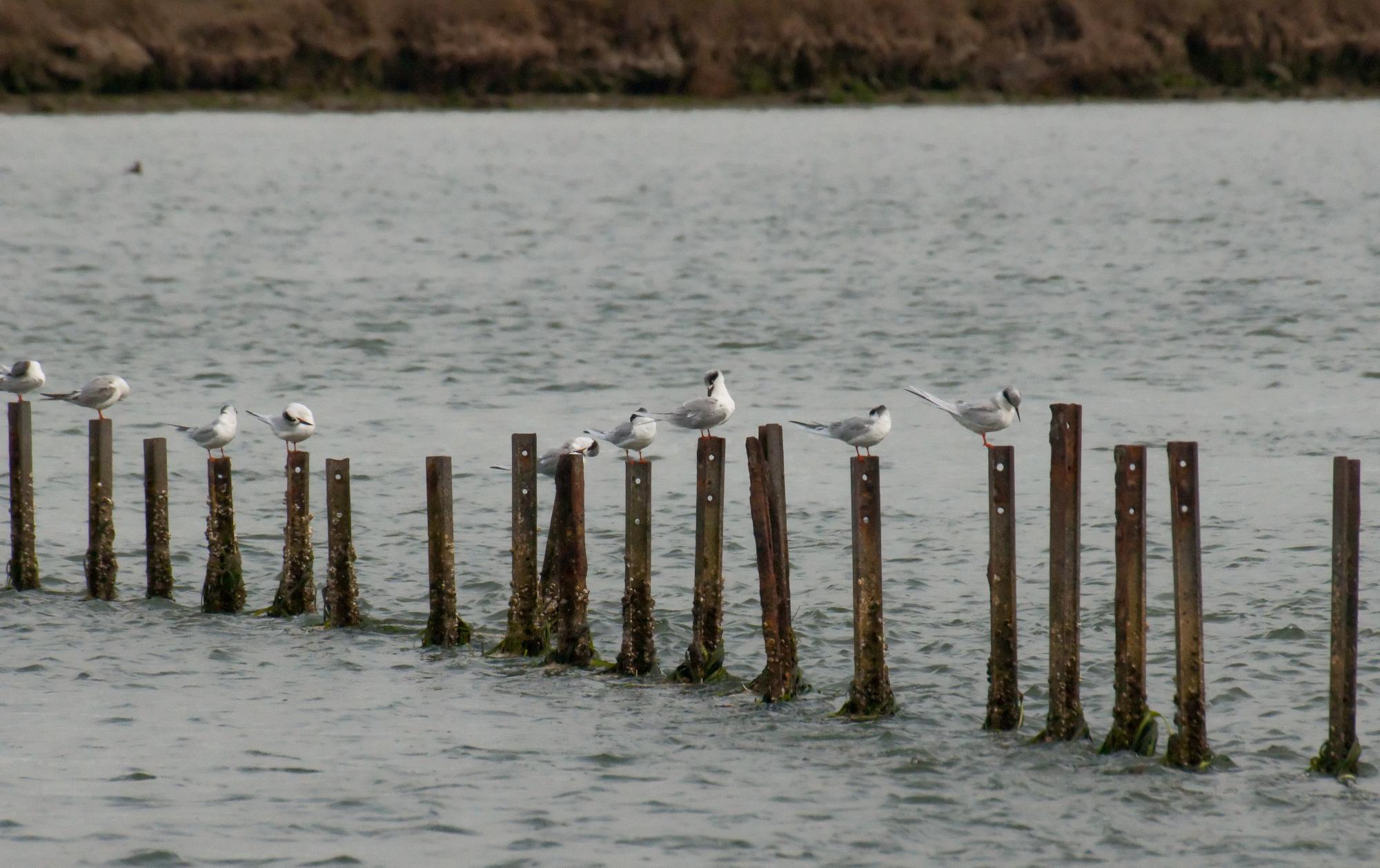 Skeletal ship ribs now supported a row of windswept terns.
Elkhorn Slough, Moss Landing, California • (Photo posted Sunday 6 June, 2010) • (Photo taken 10:26:06 Friday 12 March, 2010) • © 2010 Terry Costales  #Ship_Ribs
#Ship_Ribs
Add a comment or report a mistake
|
|
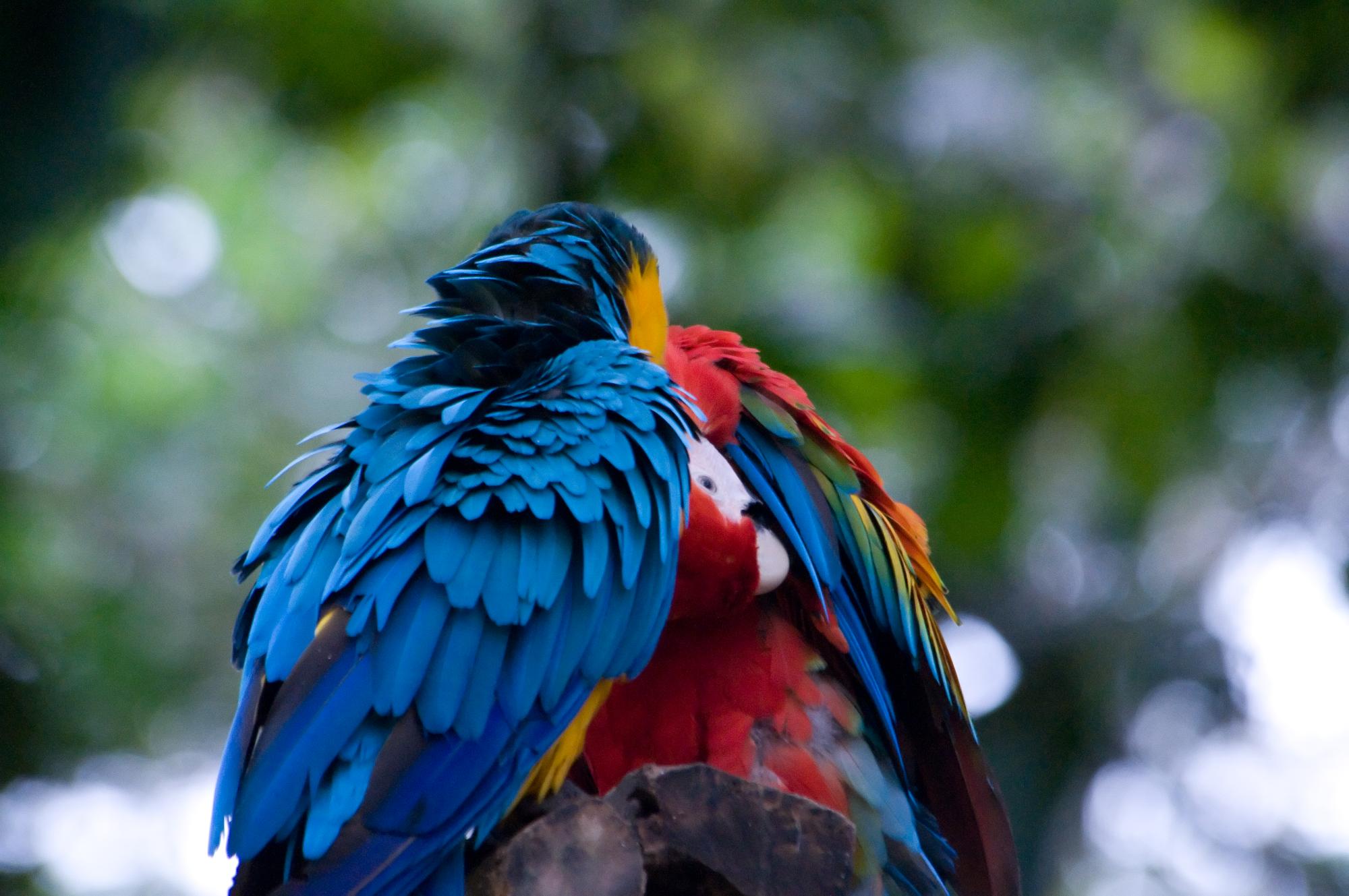 Two Macaws preening one another. A very intimate, gentle moment in a birds' life.
Jungle Expeditions Hotel, Marañon River, Peru • (Photo posted Friday 1 January, 2010) • (Photo taken 10:46:12 Thursday April 9, 2009) • © 2010 Terry Costales 
#20100101.jpg Add a comment or report a mistake
|
|
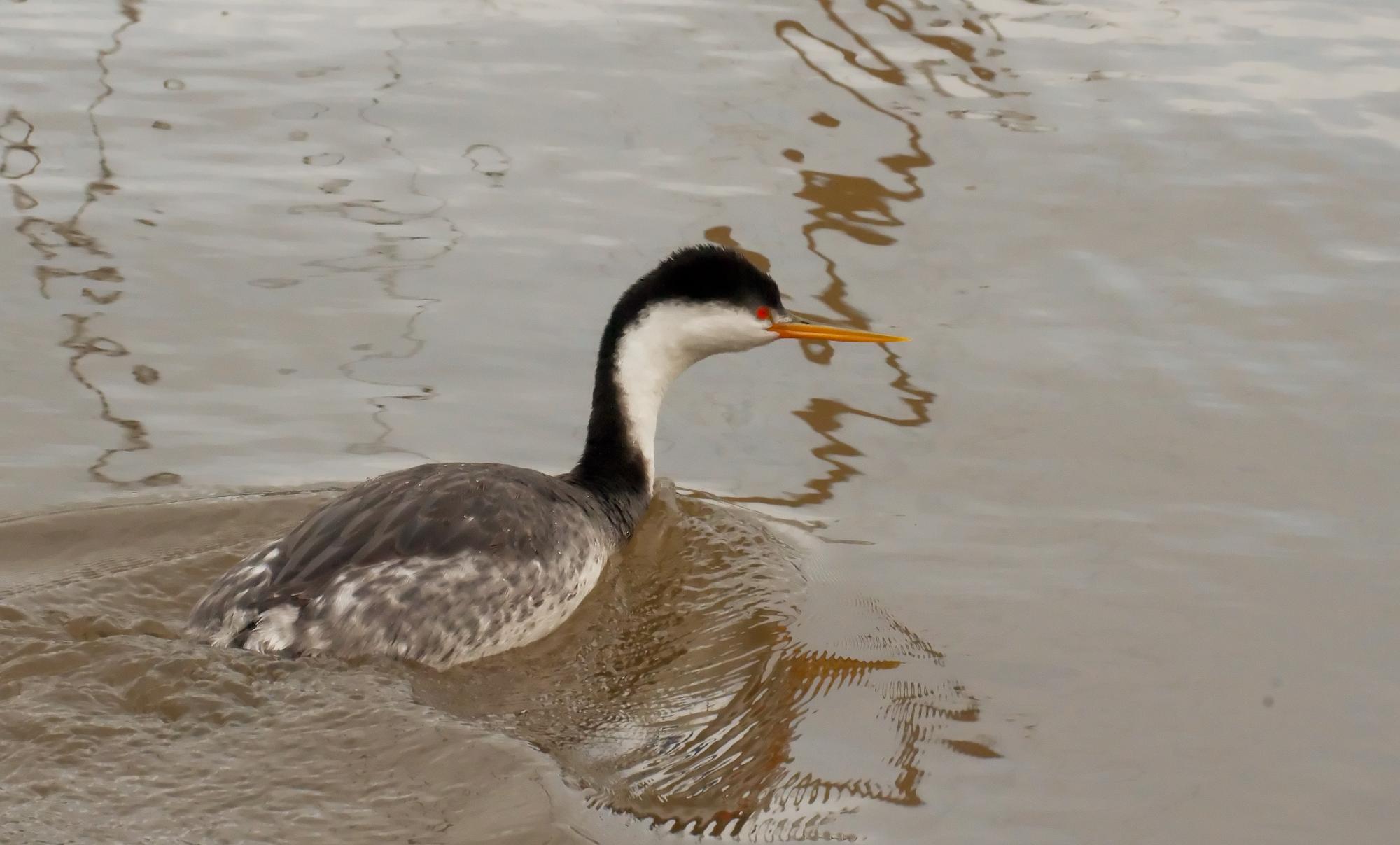
Here is a Western Grebe ready to dive for fish.
Elkhorn Slough, Moss Landing, California • (Photo posted Monday 7 June, 2010) • (Photo taken 09:44:14 Friday 12 March, 2010) • © 2010 Terry Costales  #To_Dive
#To_Dive
Add a comment or report a mistake
|
|
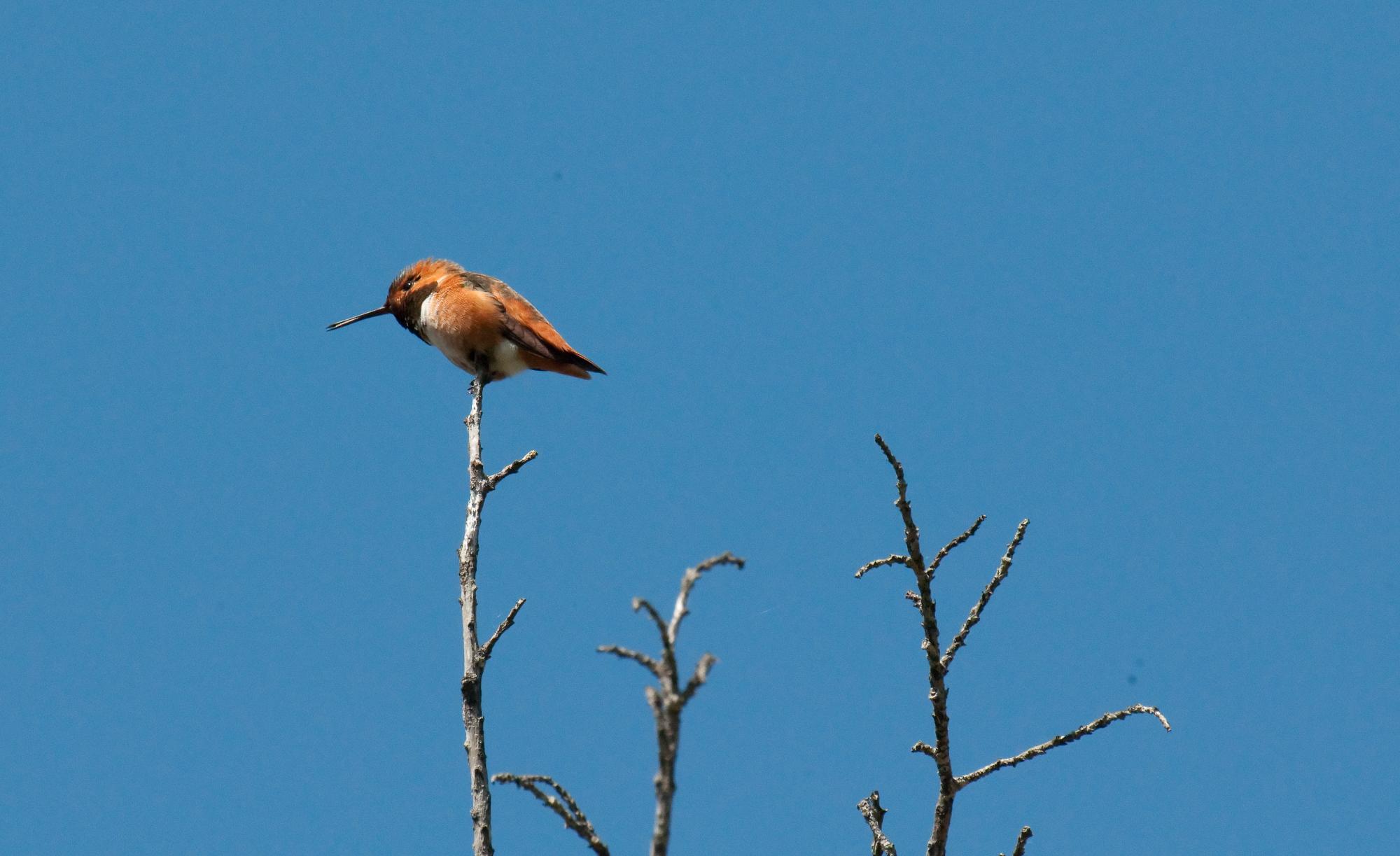
A tiny bronze hummingbird stopped to pose on the tip of a branch and I thanked him.
Santa Cruz, California • (Photo posted Tuesday 8 June, 2010) • (Photo taken 12:45:29 Thursday 1 March, 2010) • © 2010 Terry Costales  #Santa_Cruz
#Santa_Cruz
Add a comment or report a mistake
|
|
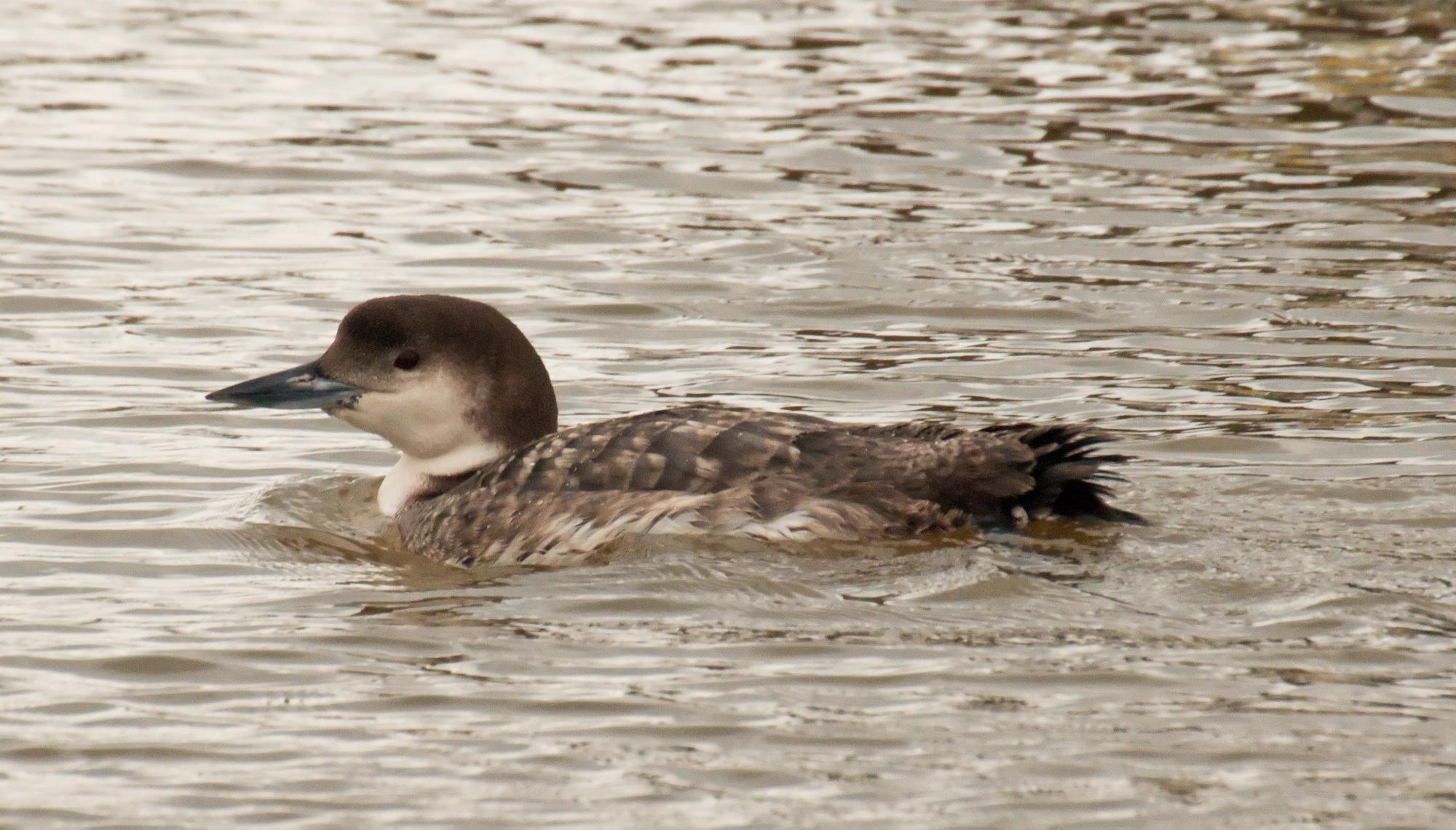
The loons that day seemed to stay well away from our boat. I was only able to get close enough for this one photo. This is a Common Loon in winter plumage.
Elkhorn Slough, Moss Landing, California • (Photo posted Tuesday 8 June, 2010) • (Photo taken 09:46:38 Friday 12 March, 2010) • © 2010 Terry Costales  #Elkhorn_Slough
#Elkhorn_Slough
Add a comment or report a mistake
|
|

Towhees are the robin-sized birds that scoot away under shrubbery before you can get a close look at them. Unless you are a bird stalker (I mean photographer) with much patience.
Natural Bridges Park, Santa Cruz, California • (Photo posted Wednesday 9 June, 2010) • (Photo taken 10:51:05 Thursday 11 March, 2010) • © 2010 Terry Costales  #Santa_Cruz
#Santa_Cruz
Add a comment or report a mistake
|
|
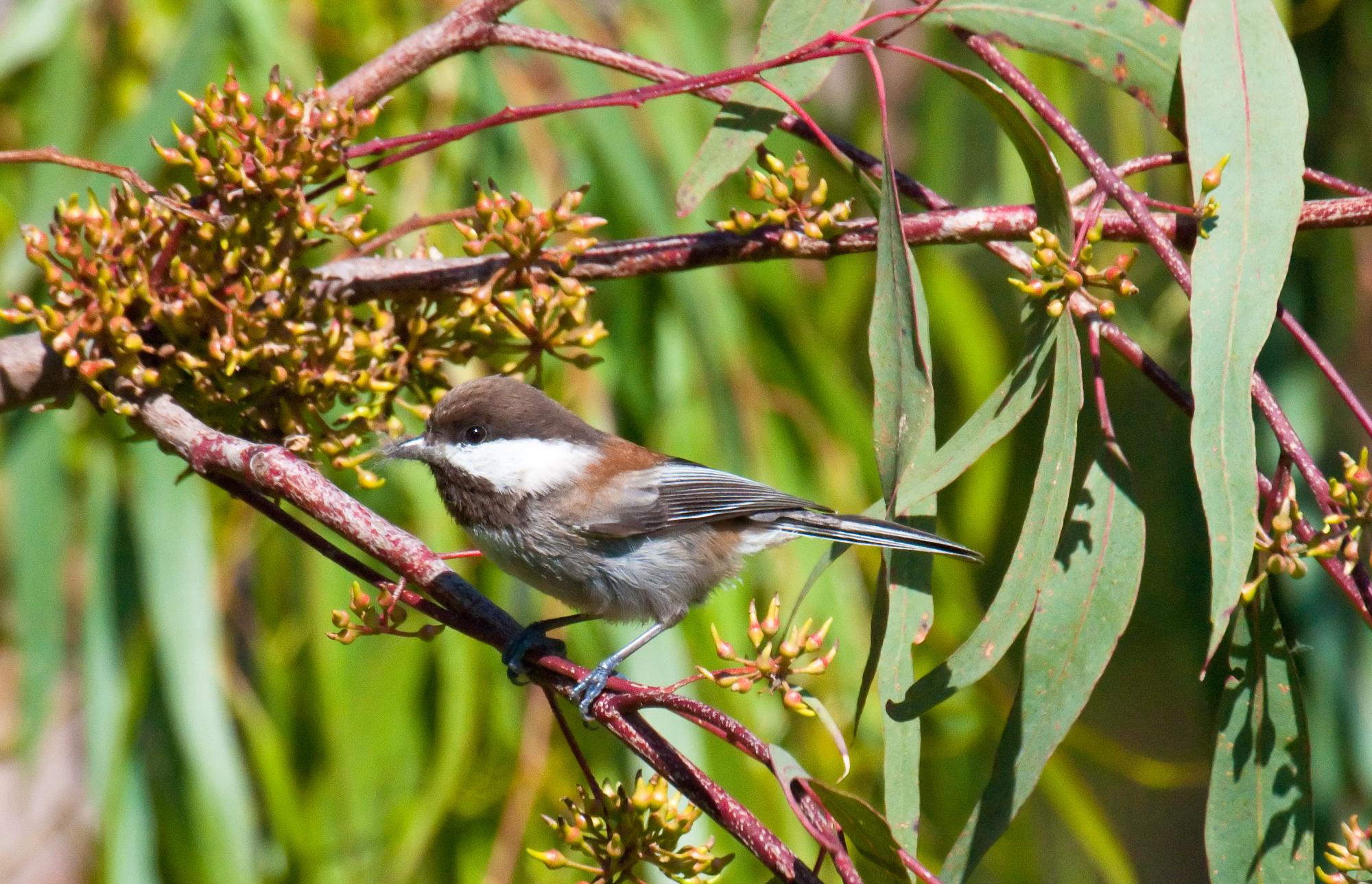
This photo shows a chickadee that had gathered some fuzzy material for its nest. Chickadees are quite active birds who don't usually pose as nicely as this one did for me. It actually held still for more than three seconds.
Natural Bridges Park, Santa Cruz, California • (Photo posted Wednesday 9 June, 2010) • (Photo taken 12:45:29 Thursday 11 March, 2010) • © 2010 Terry Costales  #3_Seconds
#3_Seconds
Add a comment or report a mistake
|
|
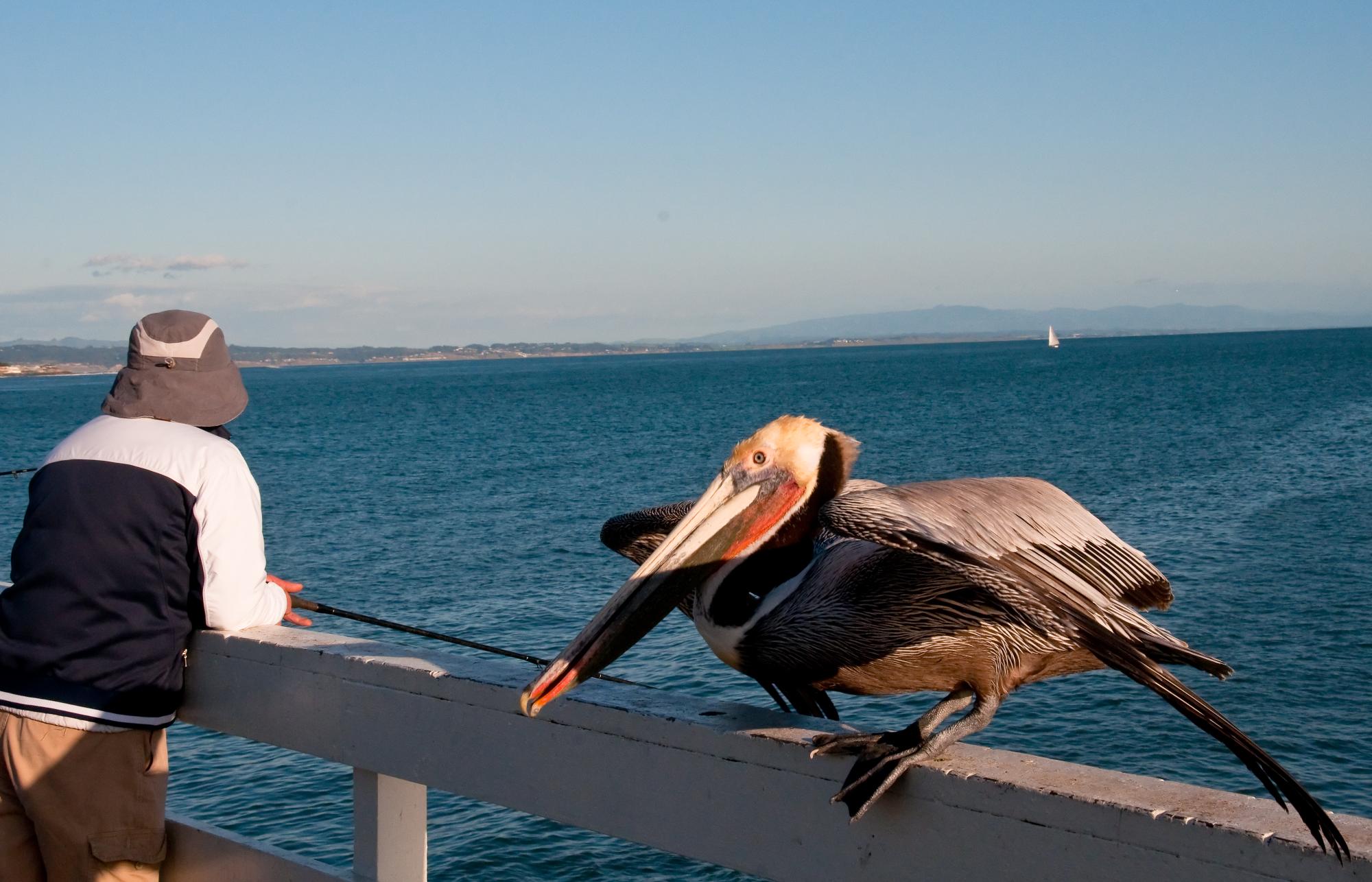 The fisherman hadn't noticed that a pelican had just landed next to him on the pier.
Santa Cruz, California • (Photo posted Thursday 10 June, 2010) • (Photo taken 16:54:42 Wednesday 10 March, 2010) • © 2010 Terry Costales  #By_fisherman
#By_fisherman
Add a comment or report a mistake
|
|
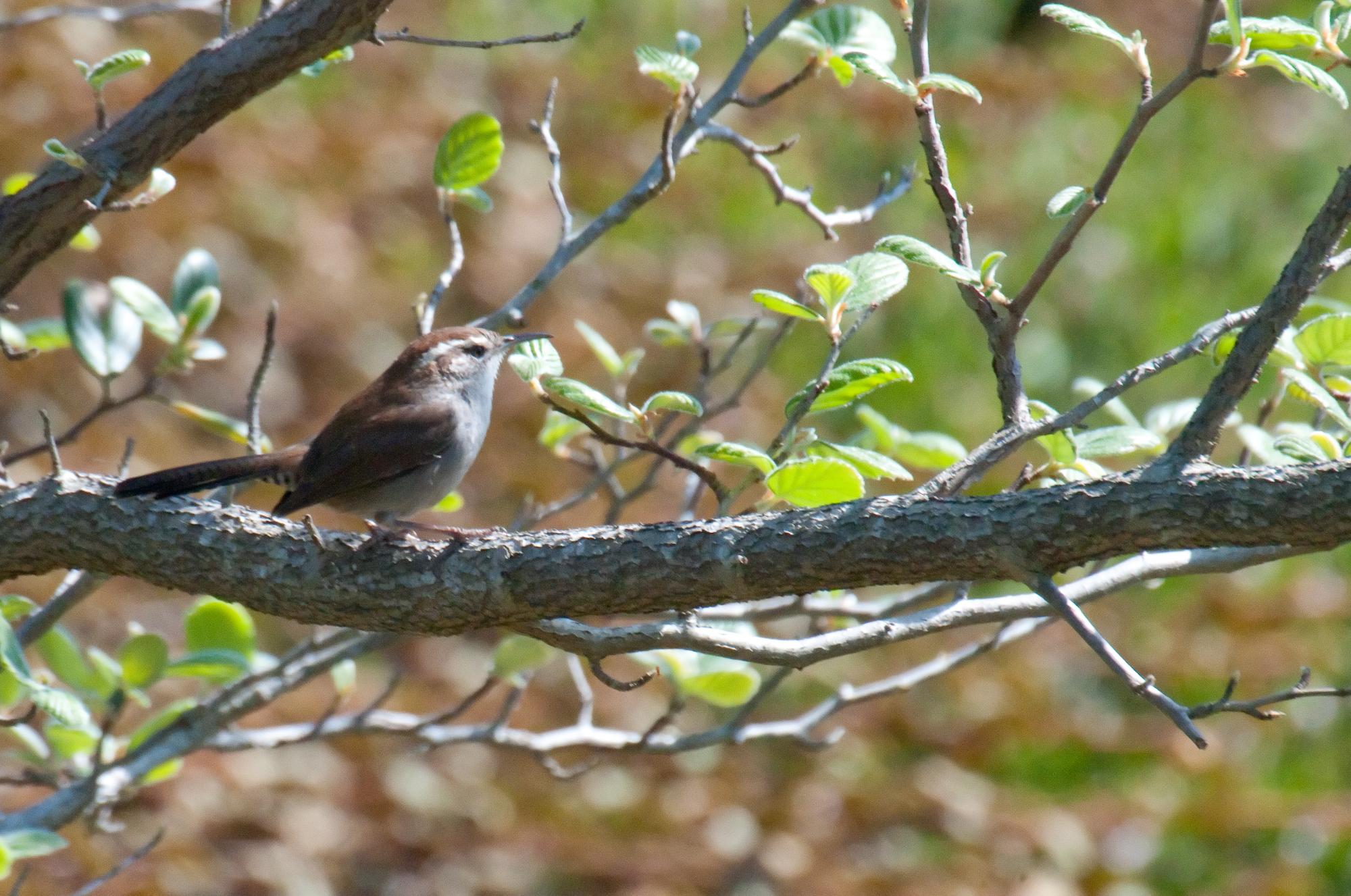
Bewick is pronounced Buick, like the car. This wren is thriving in the nation's parklands and adds its voice to nature's concert.
Natural Bridges Park, Santa Cruz, California • (Photo posted Friday 11 June, 2010) • (Photo taken 13:47:16 Thursday 11 March, 2010) • © 2010 Terry Costales  #Santa_Cruz
#Santa_Cruz
Add a comment or report a mistake
|
|
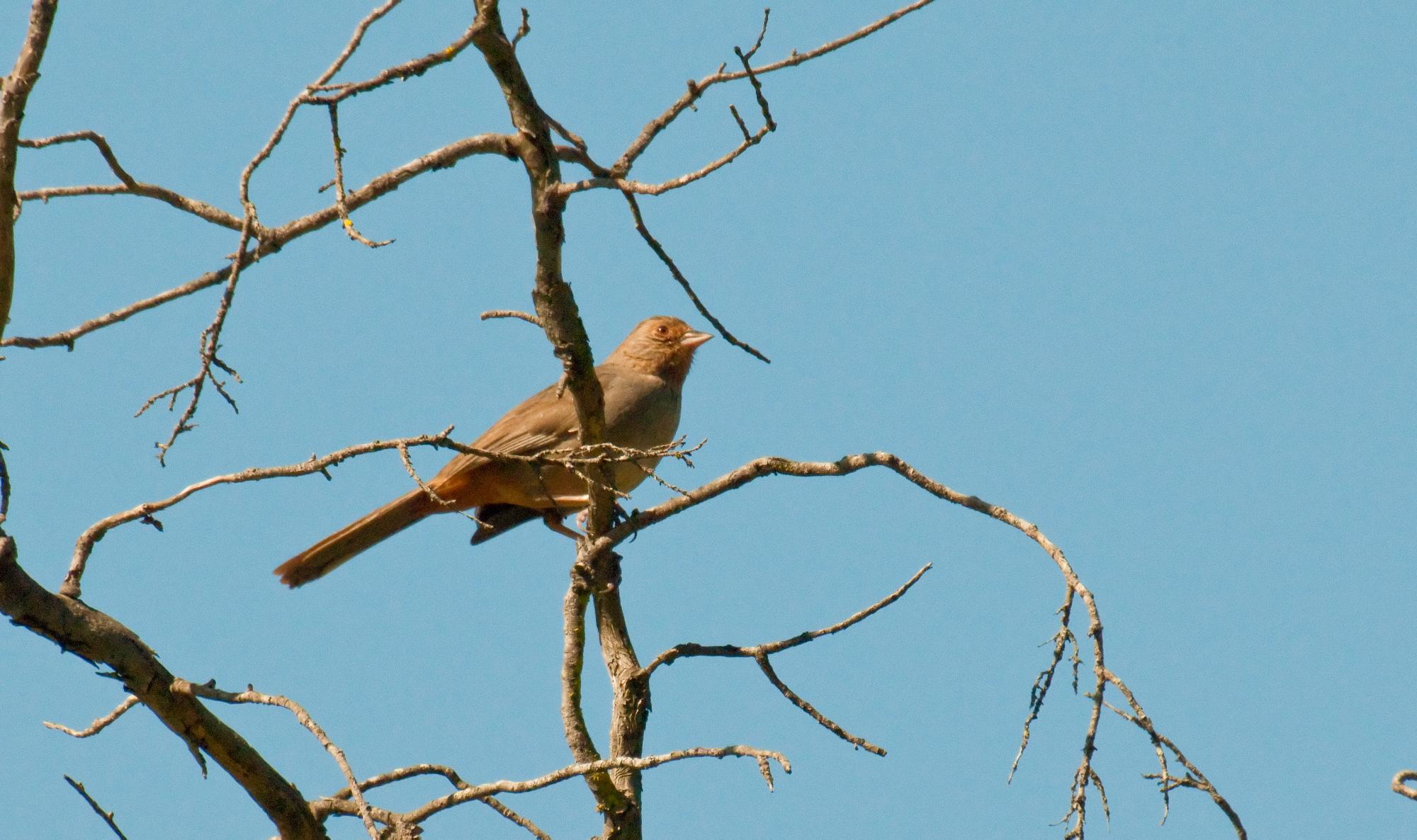 Towhees are not often seen in trees, because they love to forage in leaf litter under bushes and at the edges of paths.
Natural Bridges Park, Santa Cruz, California • (Photo posted Friday 11 June, 2010) • (Photo taken 10:51:05 Thursday 11 March, 2010) • © 2010 Terry Costales  #A_Tree
#A_Tree
Add a comment or report a mistake
|
|
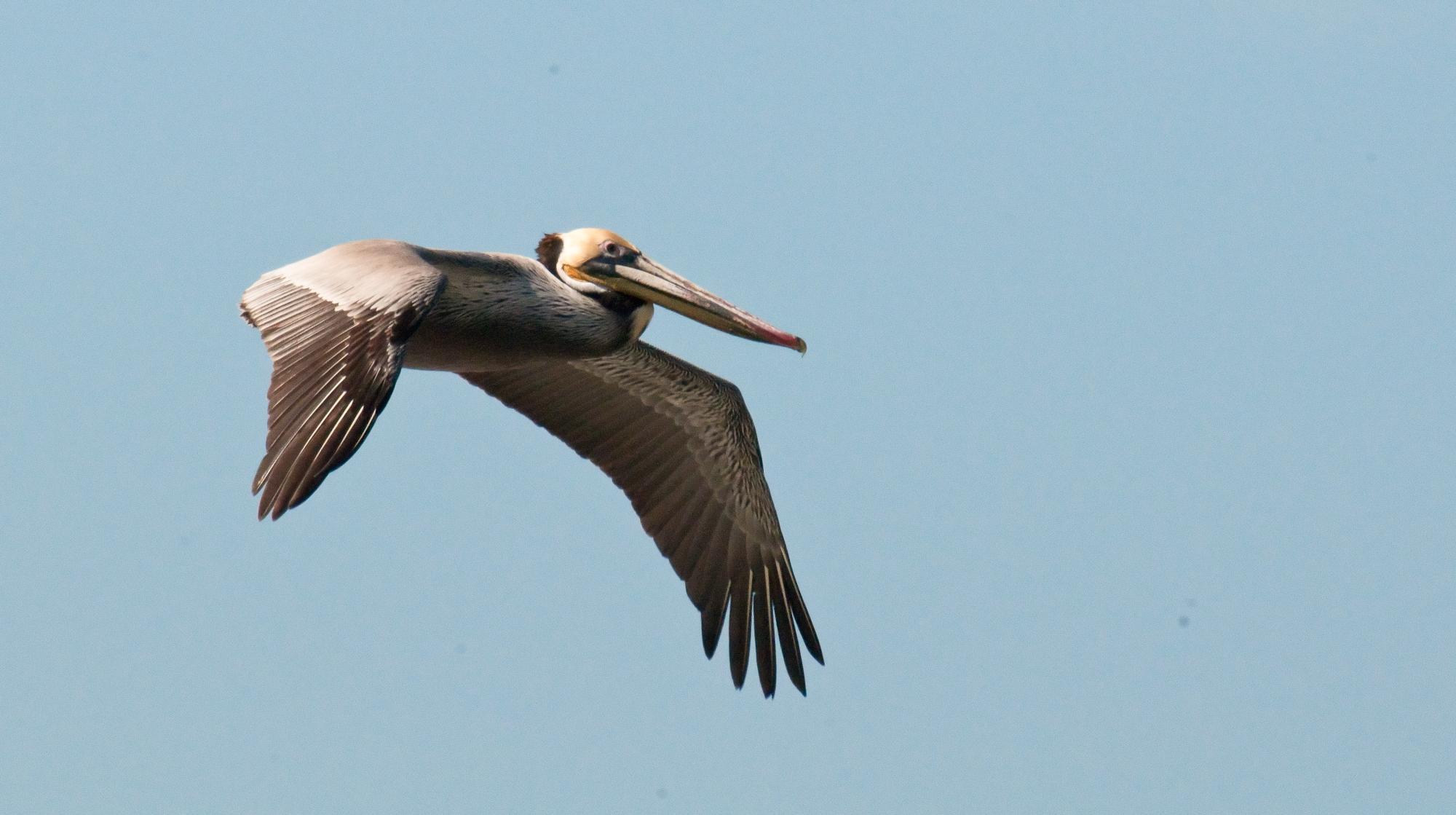 It surprises me that a big bird like a Pelican can fly so effortlessly.
Natural Bridges Park, Santa Cruz, California • (Photo posted Saturday 12 June, 2010) • (Photo taken 11:13:40 Wednesday 11 March, 2010) • © 2010 Terry Costales  #Can_Fly
#Can_Fly
Add a comment or report a mistake
|
|
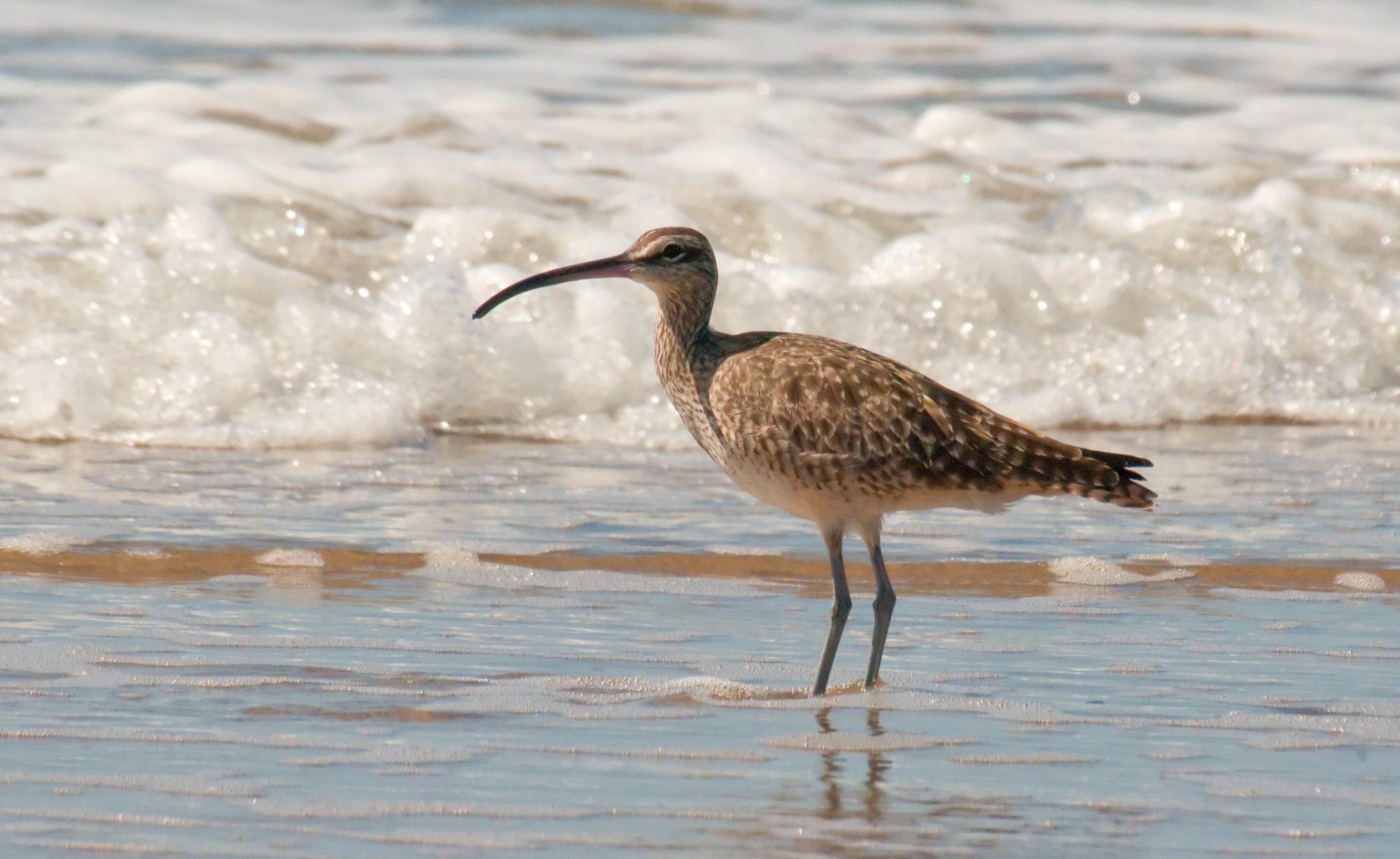
Natural Bridges Park was sunny and bright that day, which brought out the colors of the birds and water. In contrast, he following day was overcast with afternoon rain.
Natural Bridges Park, Santa Cruz, California • (Photo posted Saturday 12 June, 2010) • (Photo taken 11:14:42 Thursday 11 March, 2010) • © 2010 Terry Costales  #Santa_Cruz
#Santa_Cruz
Add a comment or report a mistake
|
|
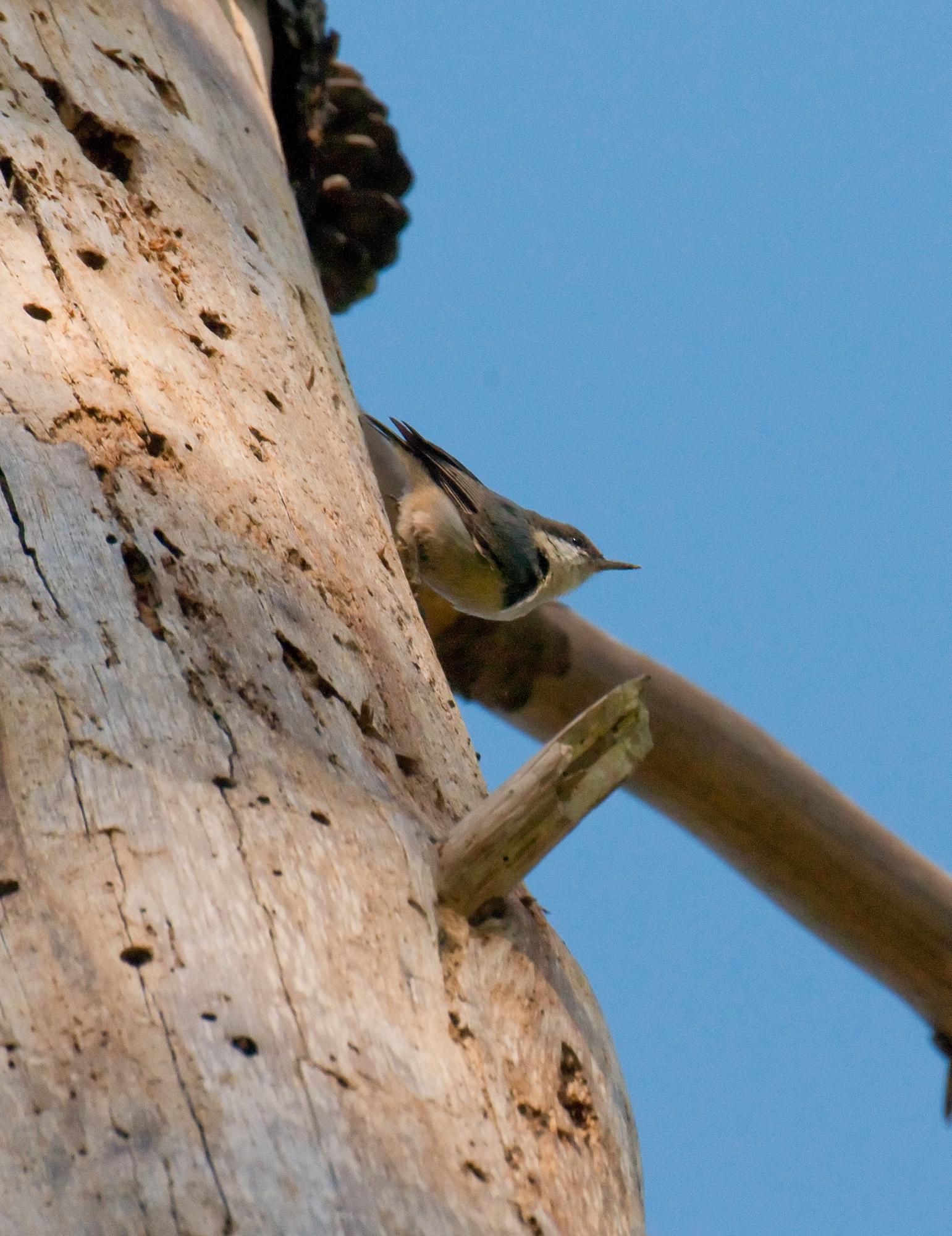
This tiny bird was poking around the holes in a dead tree. It was far away but I did manage to get a couple of shots.
Natural Bridges Park, Santa Cruz, California • (Photo posted Sunday 13 June, 2010) • (Photo taken 10:32:50 Thursday 11 March, 2010) • © 2010 Terry Costales  #Pygmy_Nuthatch
#Pygmy_Nuthatch
Add a comment or report a mistake
|
|
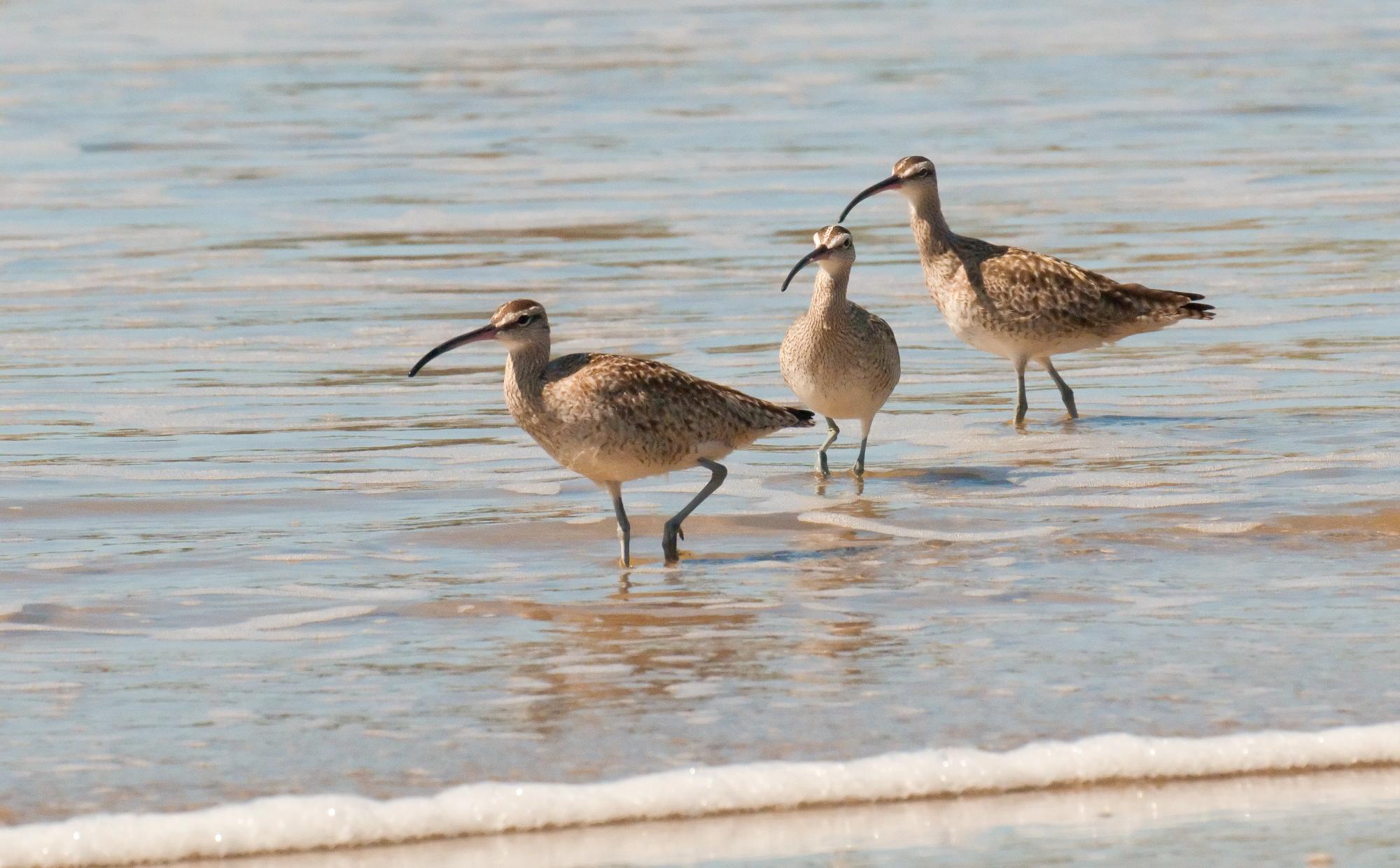
This photo of whimbrels shows their head markings quite well.
Natural Bridges Park, Santa Cruz, California (Photo posted Sunday 13 June, 2010) • (Photo taken 11:12:50 Thursday 11 March, 2010) • © 2010 Terry Costales  #Head_Markings
#Head_Markings
Add a comment or report a mistake
|
|
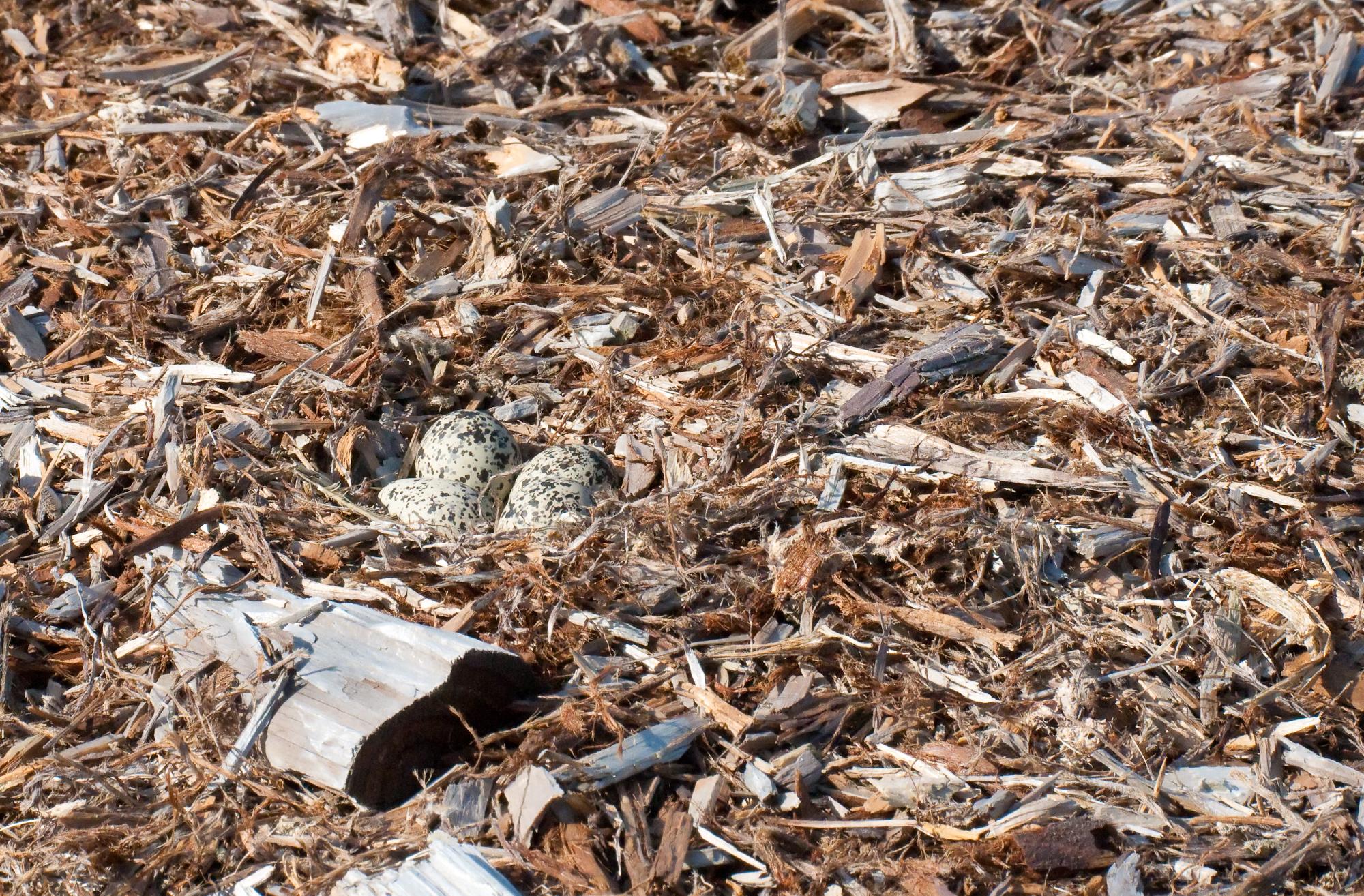
This was the second killdeer nest I'd found.
Middle Harbor Park, Oakland, California • (Photo posted Monday 14 June, 2010) • (Photo taken 15:10:46 Sunday 14 March, 2010) • © 2010 Terry Costales  #Harbor_Park
#Harbor_Park
Add a comment or report a mistake
|
|
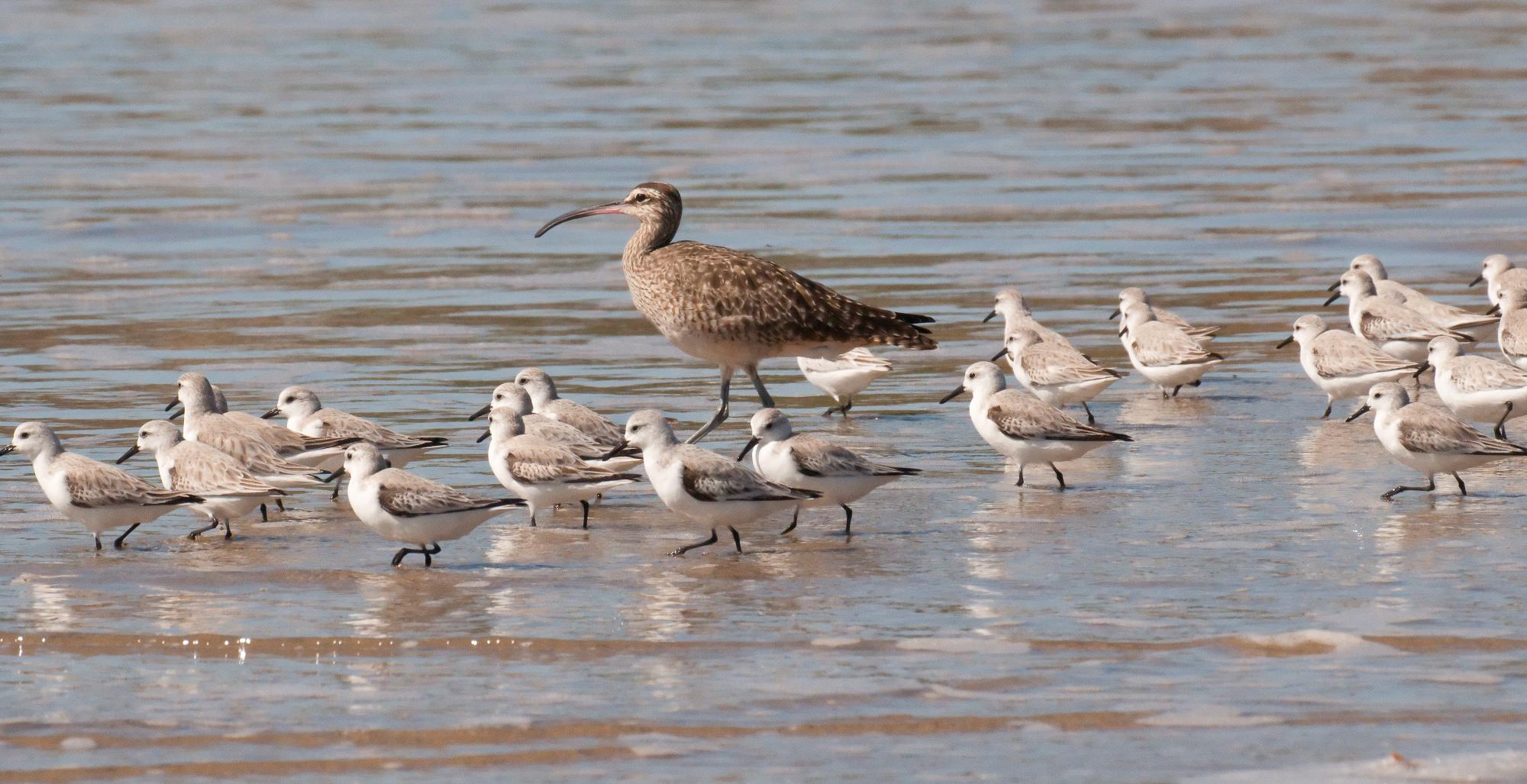 The sandpipers illustrate the adage that "birds of a feather flock together" and the whimbrel shows that, yes, we all can just get along.
Natural Bridges Park, Santa Cruz, California • (Photo posted Monday 14 June, 2010) • (Photo taken 11:12:53 Thursday 11 March, 2010) • © 2010 Terry Costales  #With_Sandpipers
#With_Sandpipers
Add a comment or report a mistake
|
|
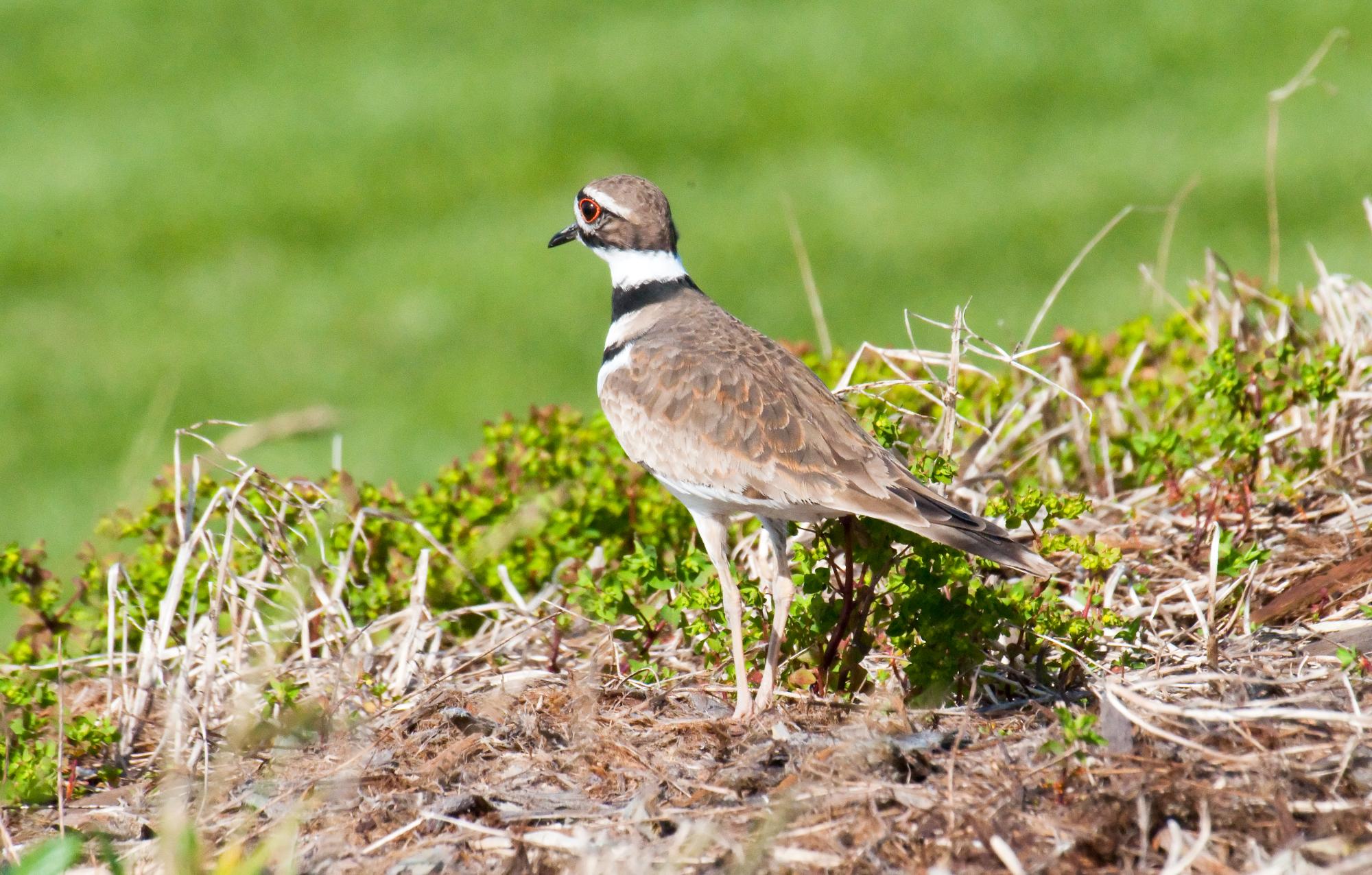
This killdeer
Middle Harbor Park, Oakland, California • (Photo posted Tuesday 15 June, 2010) • (Photo taken 15:11:44 Sunday 14 March, 2010) • © 2010 Terry Costales  #Being_Hurt
#Being_Hurt
Add a comment or report a mistake
|
|
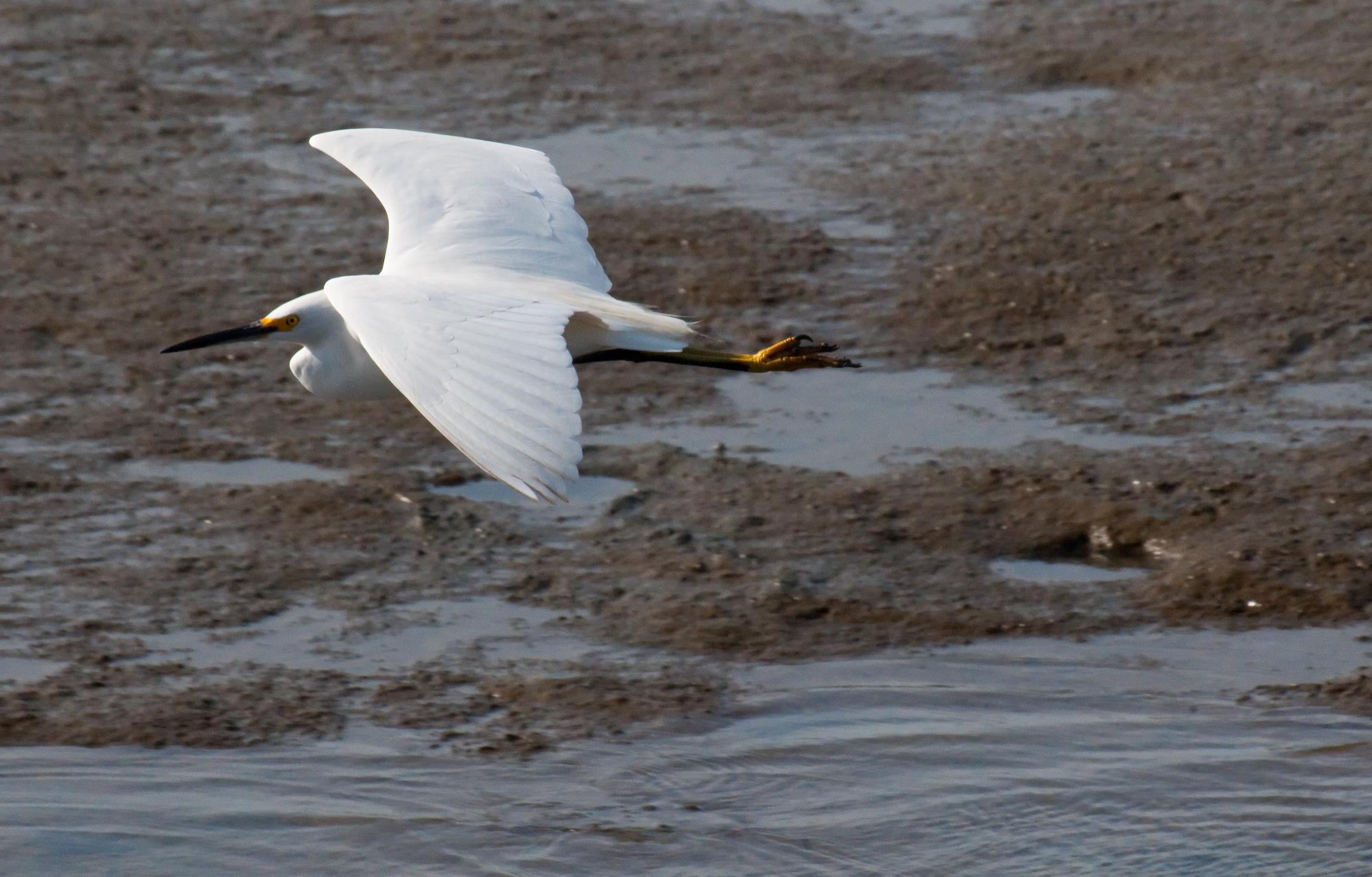
A snowy egret in flight is the poetry of nature.
Middle Harbor Park, Oakland, California • (Photo posted Tuesday 15 June, 2010) • (Photo taken 15:23:54 Sunday 14 March, 2010) • © 2010 Terry Costales  #In_Flight
#In_Flight
Add a comment or report a mistake
|
|
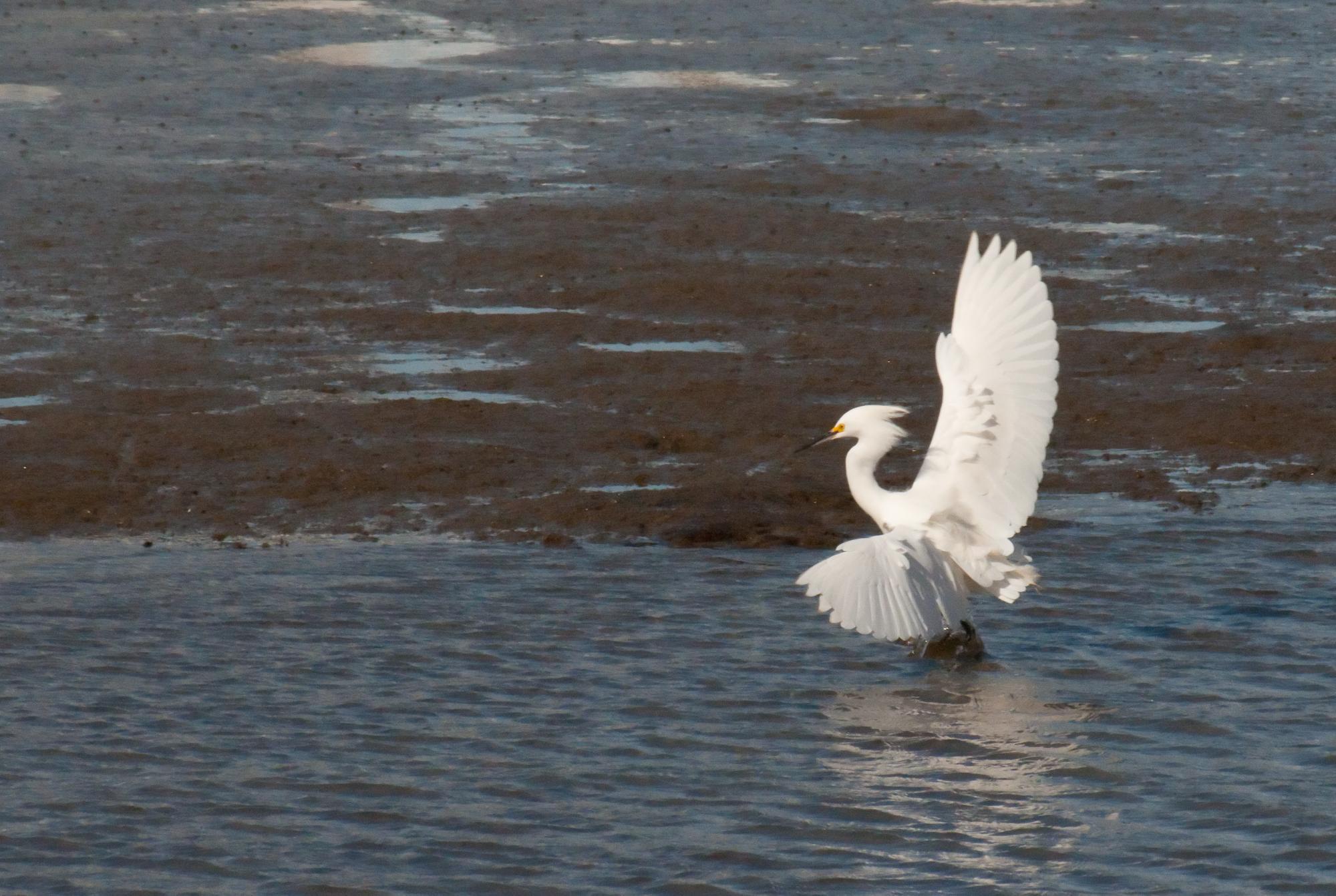 A snowy egret mid landing appeared to dance.
Middle Harbor Park, Oakland, California • (Photo posted Wednesday 16 June, 2010) • (Photo taken 15:23:54 Sunday 14 March, 2010) • © 2010 Terry Costales  #Mid_Landing
#Mid_Landing
Add a comment or report a mistake
|
|
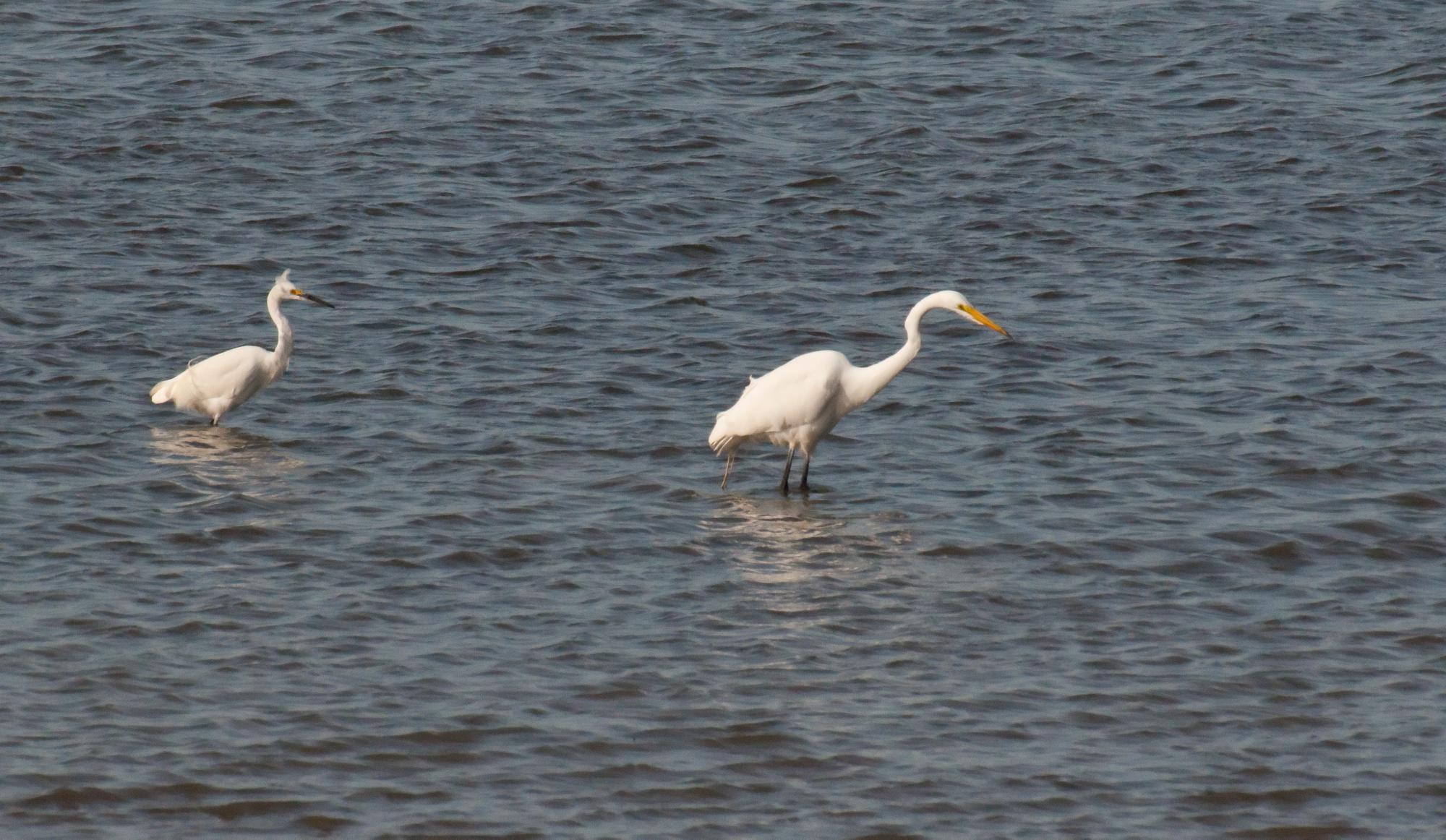 The larger Great Egret was stalked by the smaller Snowy Egret.
Middle Harbor Park, Oakland, California • (Photo posted Wednesday 16 June, 2010) • (Photo taken 15:39:54 Sunday 14 March, 2010) • © 2010 Terry Costales  #Great_Egret
#Great_Egret
Add a comment or report a mistake
|
|
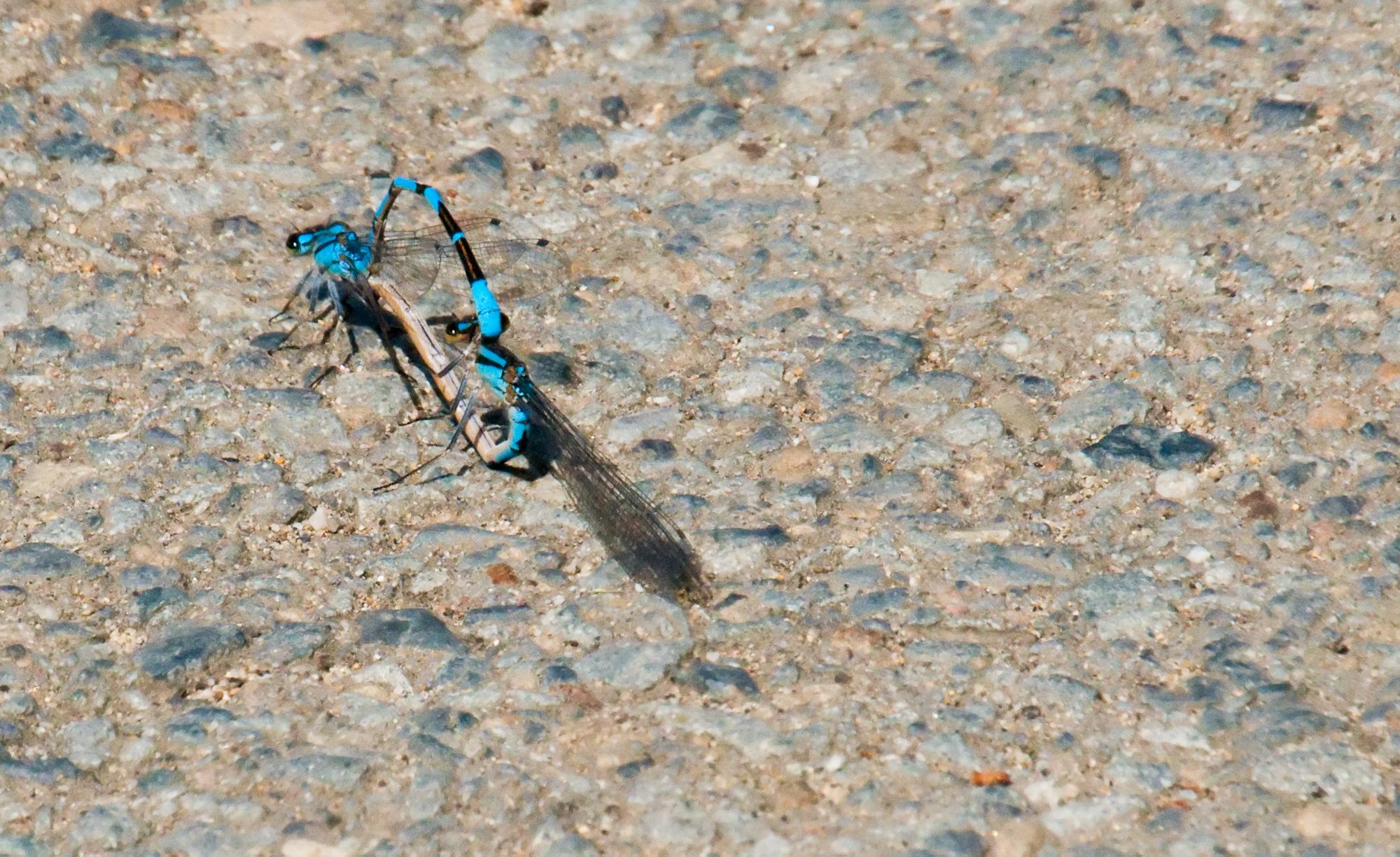
These conjoined damselflies are a mated pair and stay connected like this until the eggs are laid. Both damselflies seen here are bright blue so this may be a "gay" pairing as documented in National Geographic.
Lake Merced, San Francisco, California • (Photo posted Thursday 17 June, 2010) • (Photo taken 11:11:41 Sunday 28 March, 2010) • © 2010 Terry Costales  #Blue_Damsefly
#Blue_Damsefly
Add a comment or report a mistake
|
|
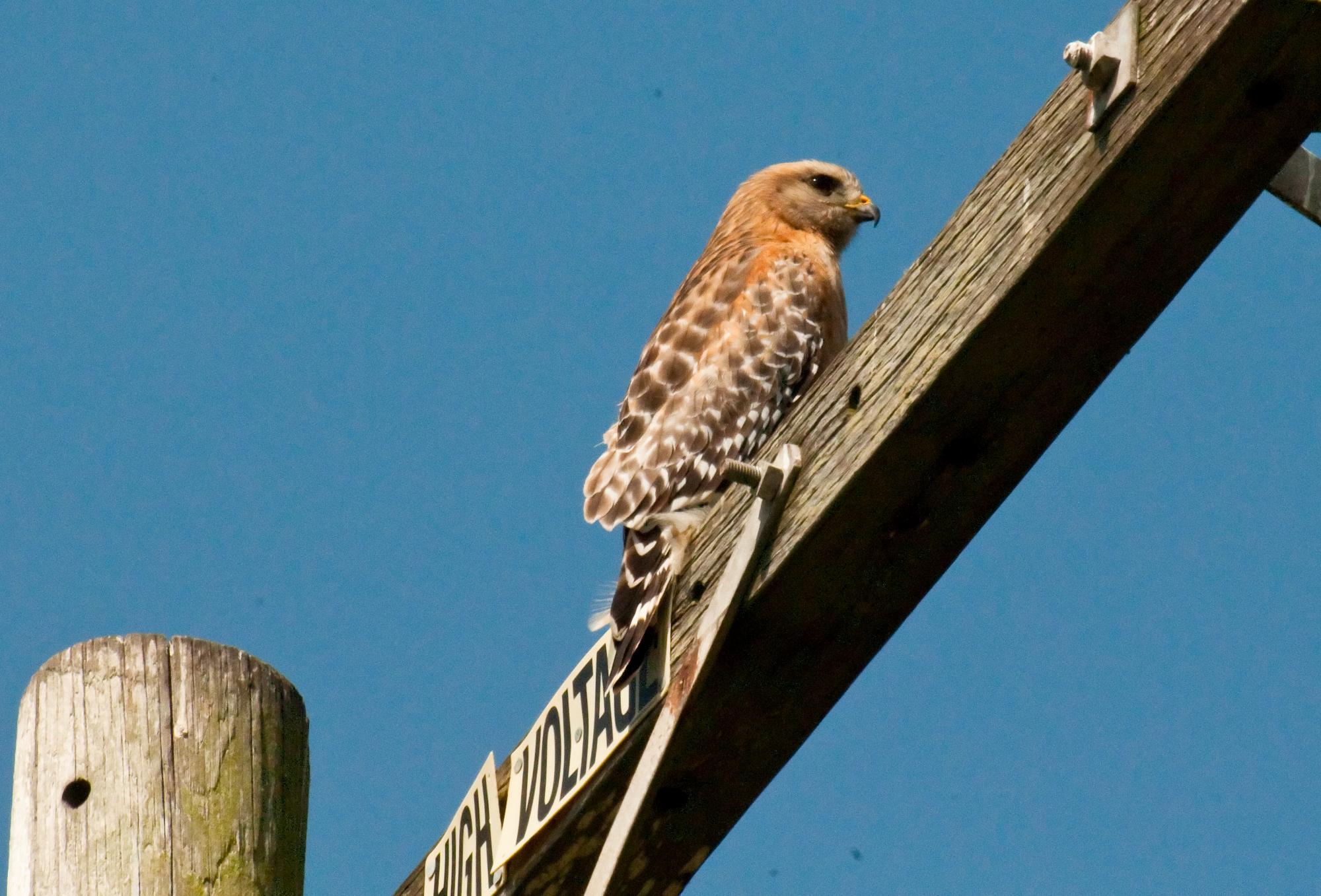
A Red-shouldered Hawk showed off his very red shoulders while atop a high voltage power pole.
Lake Merced, San Francisco, California • (Photo posted Thursday 17 June, 2010) • (Photo taken 10:57:08 Sunday 28 March, 2010) • © 2010 Terry Costales  #On_Powereline
#On_Powereline
Add a comment or report a mistake
|
|
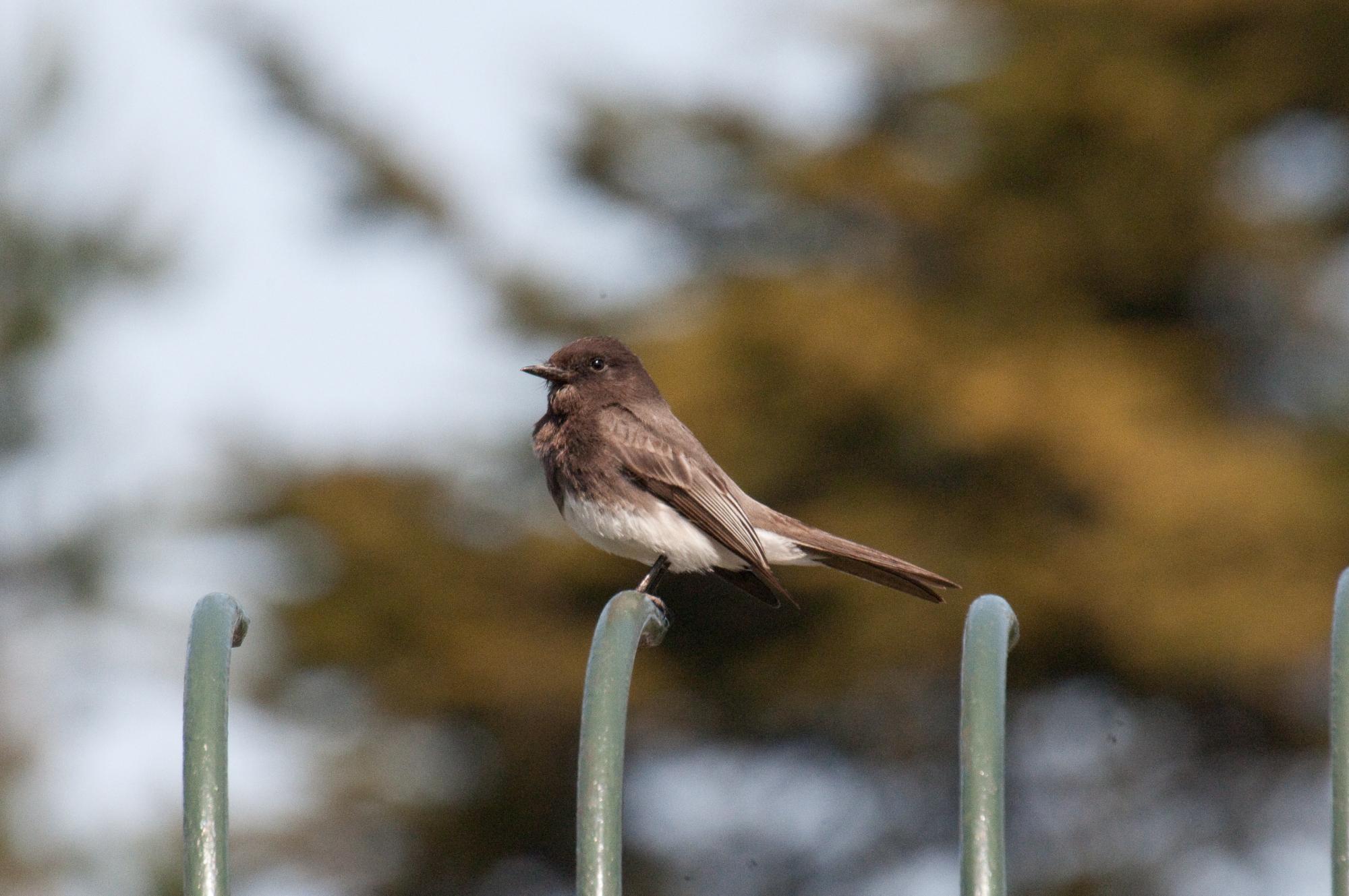 Phoebes are one of my favorite birds because they seem so positive about life. I know I embue them with that attitude, but it's what I see.
Shown here is a Phoebe perched on a gate.
Lake Merced, San Francisco, California • (Photo posted Friday 18 June, 2010) • (Photo taken 11:13:09 Sunday 28 March, 2010) • © 2010 Terry Costales  #A_Gate
#A_Gate
Add a comment or report a mistake
|
|
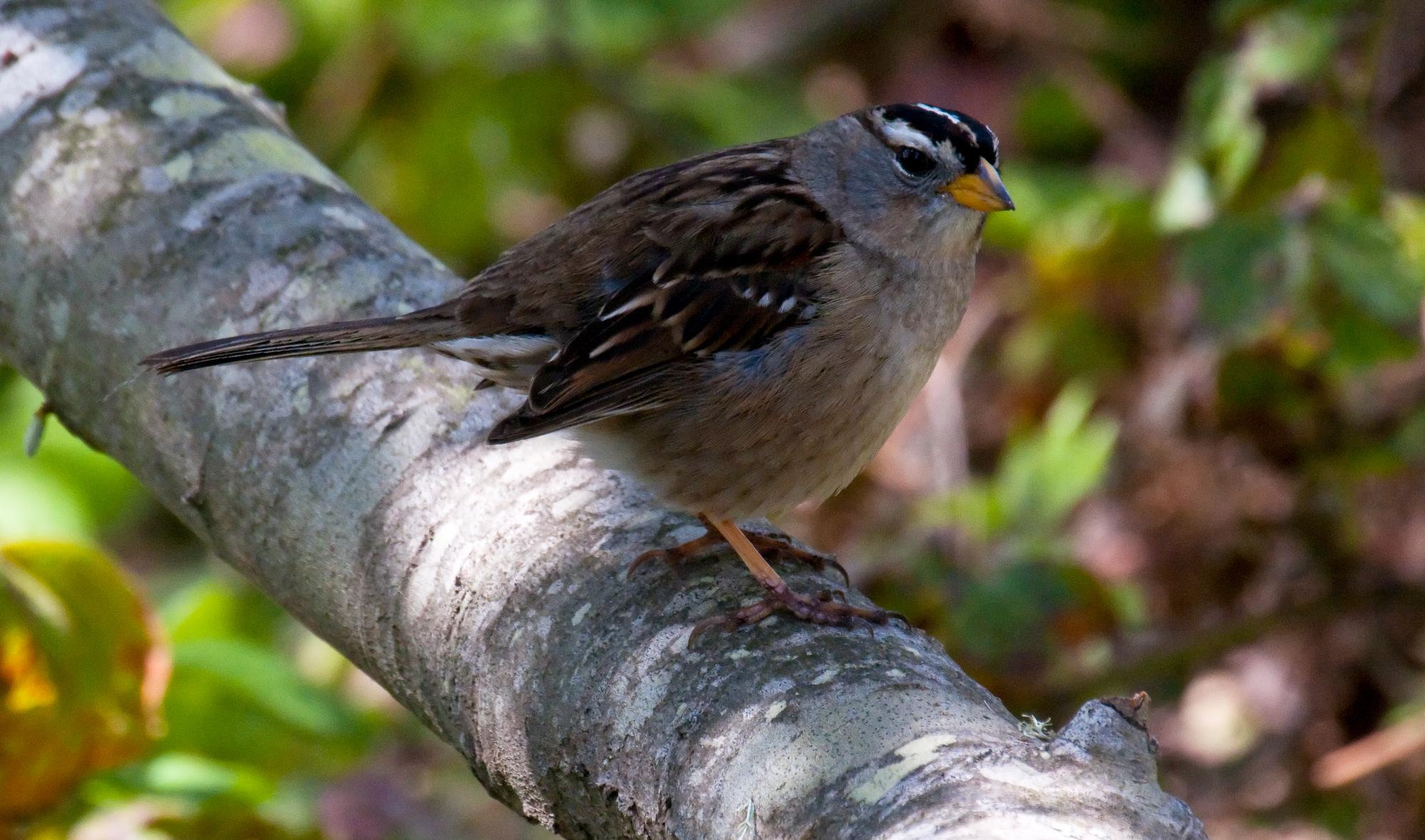
I just love it when a bird comes close enough and holds still enough to get a good shot like this!
Lake Merced, San Francisco, California • (Photo posted Friday 18 June, 2010) • (Photo taken 11:17:17 Sunday 28 March, 2010) • © 2010 Terry Costales  #Crowned_Sparrow
#Crowned_Sparrow
Add a comment or report a mistake
|
|
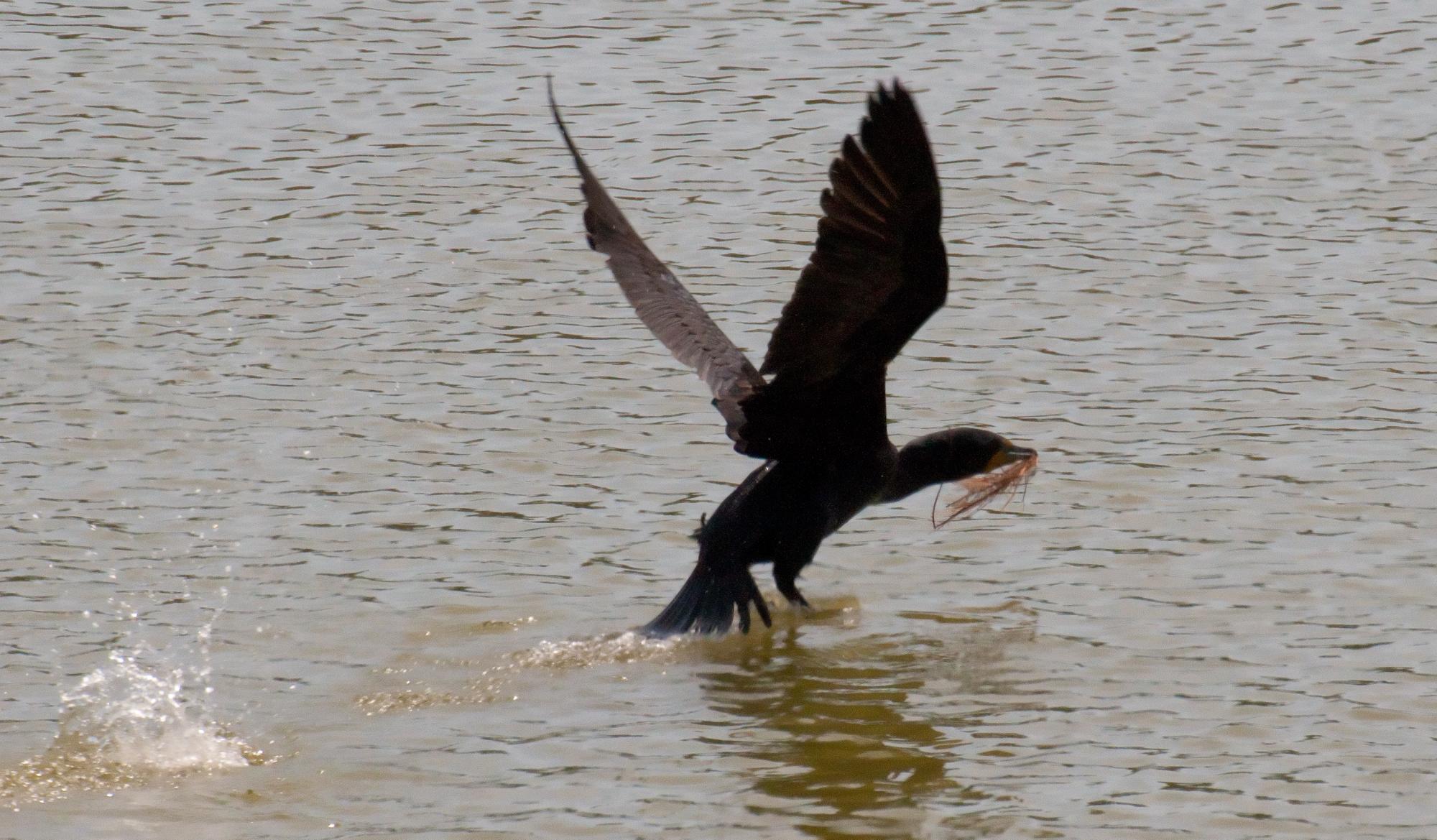 This cormorant scooped up a beakful of water plants to build its nest and then flew off.
Lake Merced, Harding Park  #Scooped_Plants
#Scooped_Plants
Add a comment or report a mistake
|
|
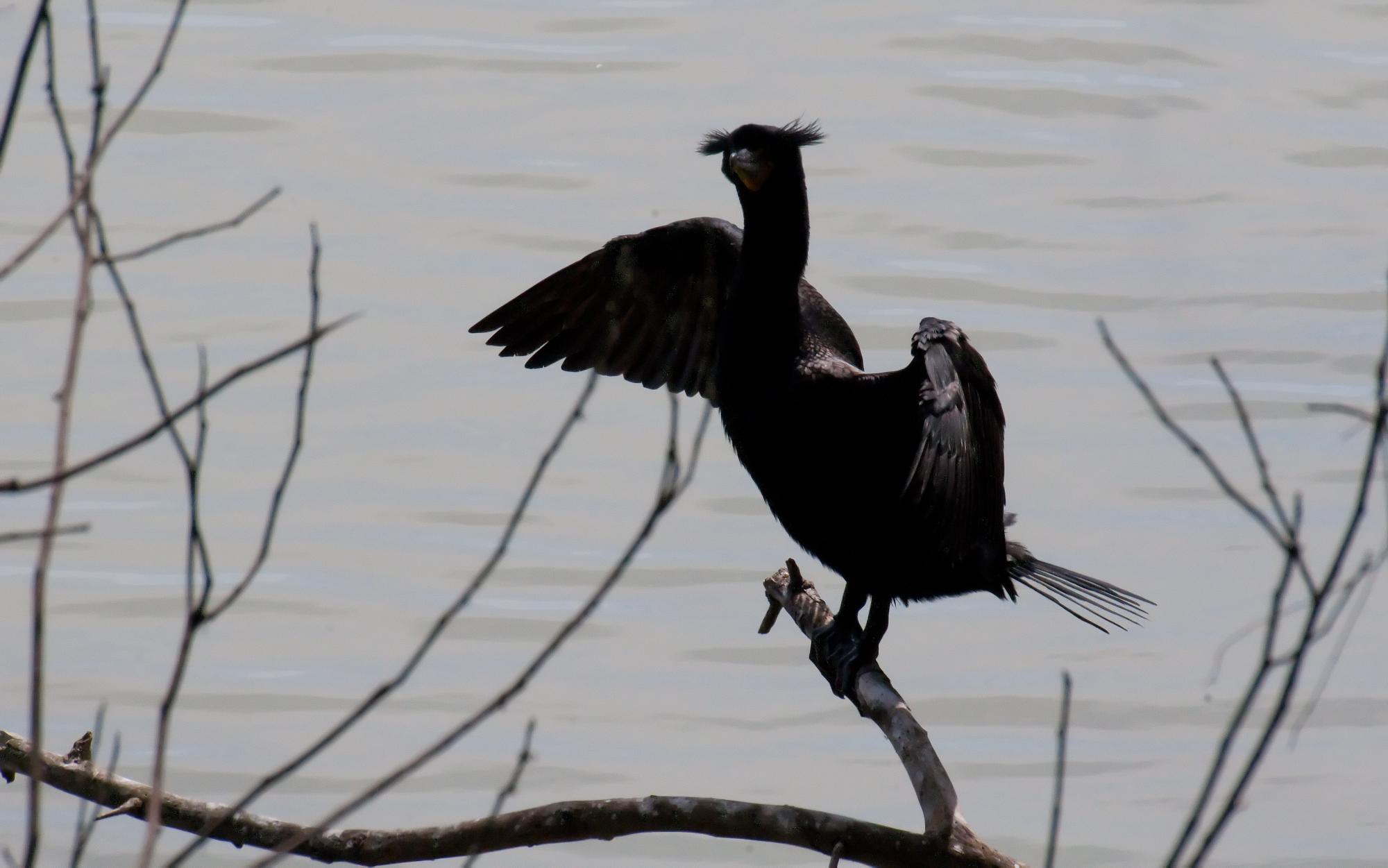
This silhouette clearly shows the double crests that gave this cormorant its name.
Lake Merced, Harding Park  #Cormorant_Silhouette
#Cormorant_Silhouette
Add a comment or report a mistake
|
|
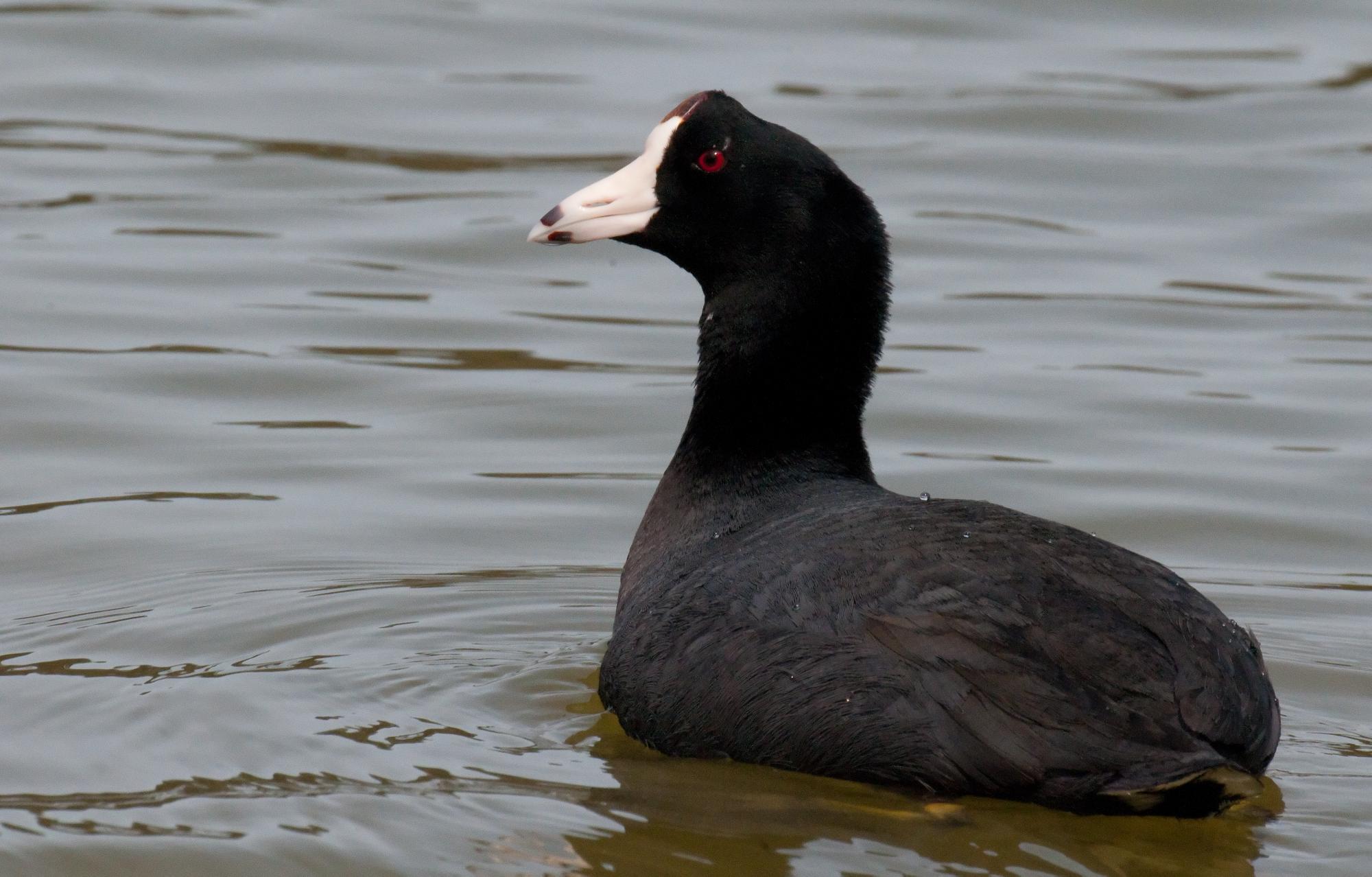 A close-up of the lovely coot.
Lake Merced, Harding Park  #Close_Up
#Close_Up
Add a comment or report a mistake
|
|
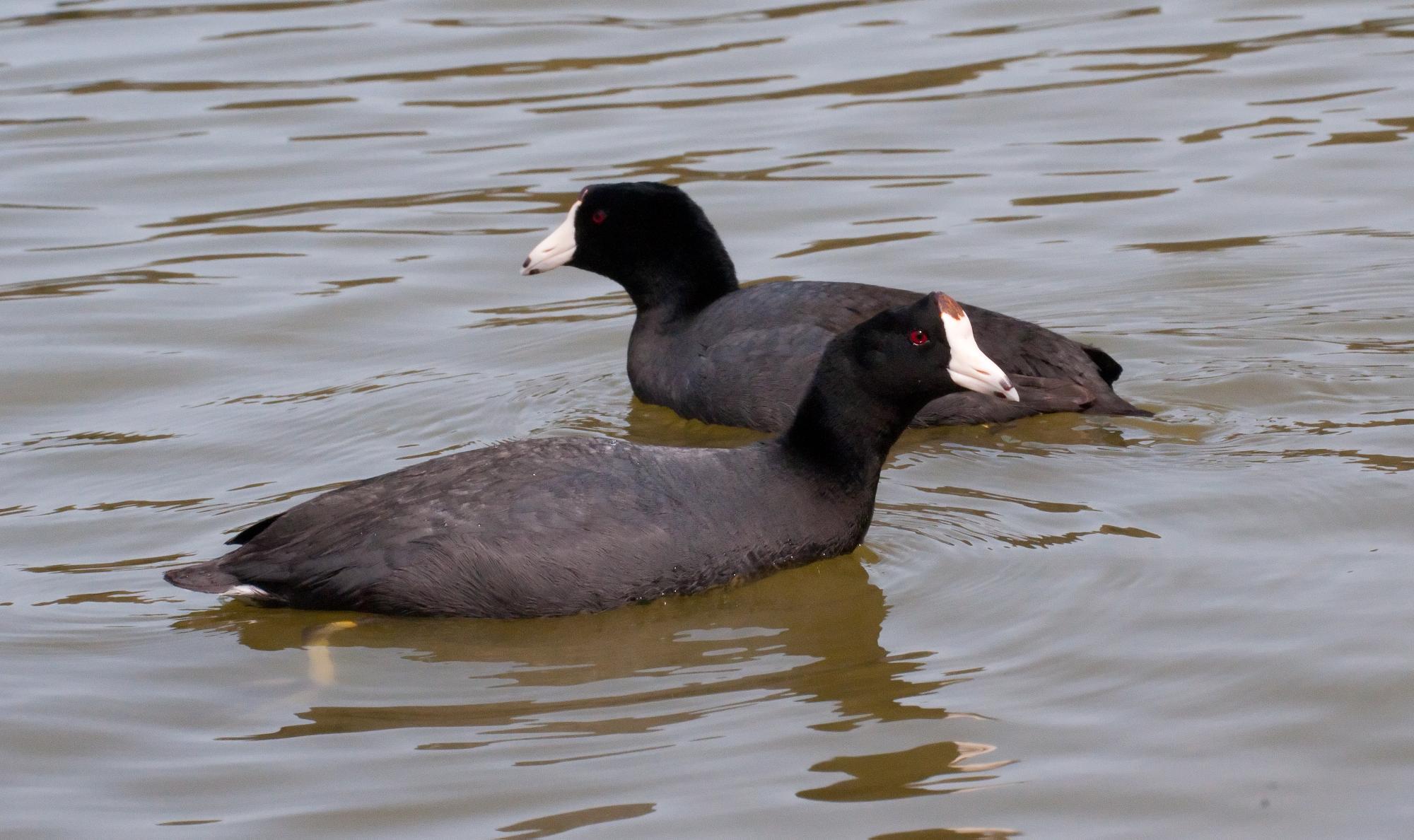
The coot
Lake Merced, Harding Park  #American_Coots
#American_Coots
Add a comment or report a mistake
|
|
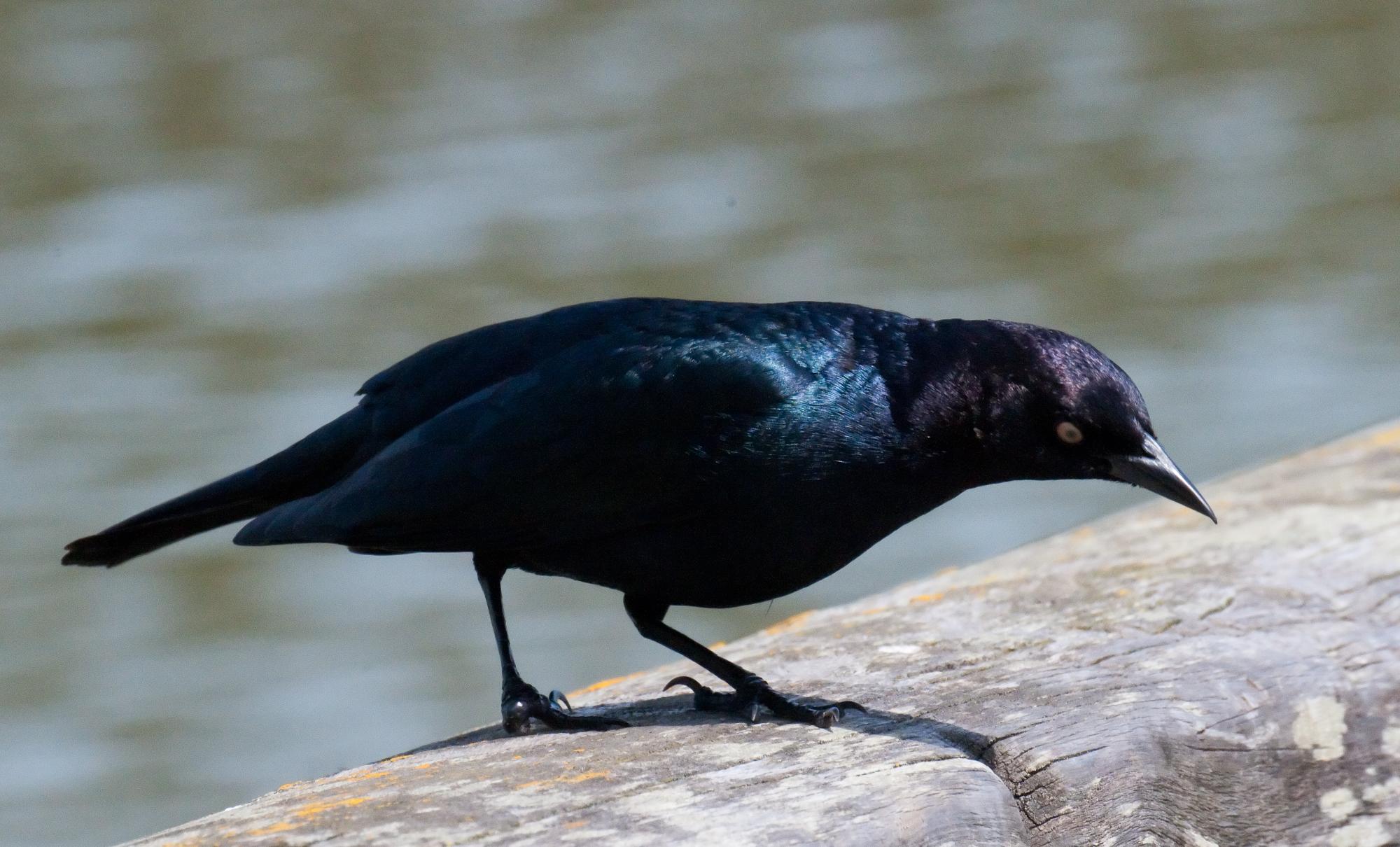 A male Brewer's blackbird was showing off its glorious purple sheen.
Lake Merced, Harding Park  #Shows_Off
#Shows_Off
Add a comment or report a mistake
|
|
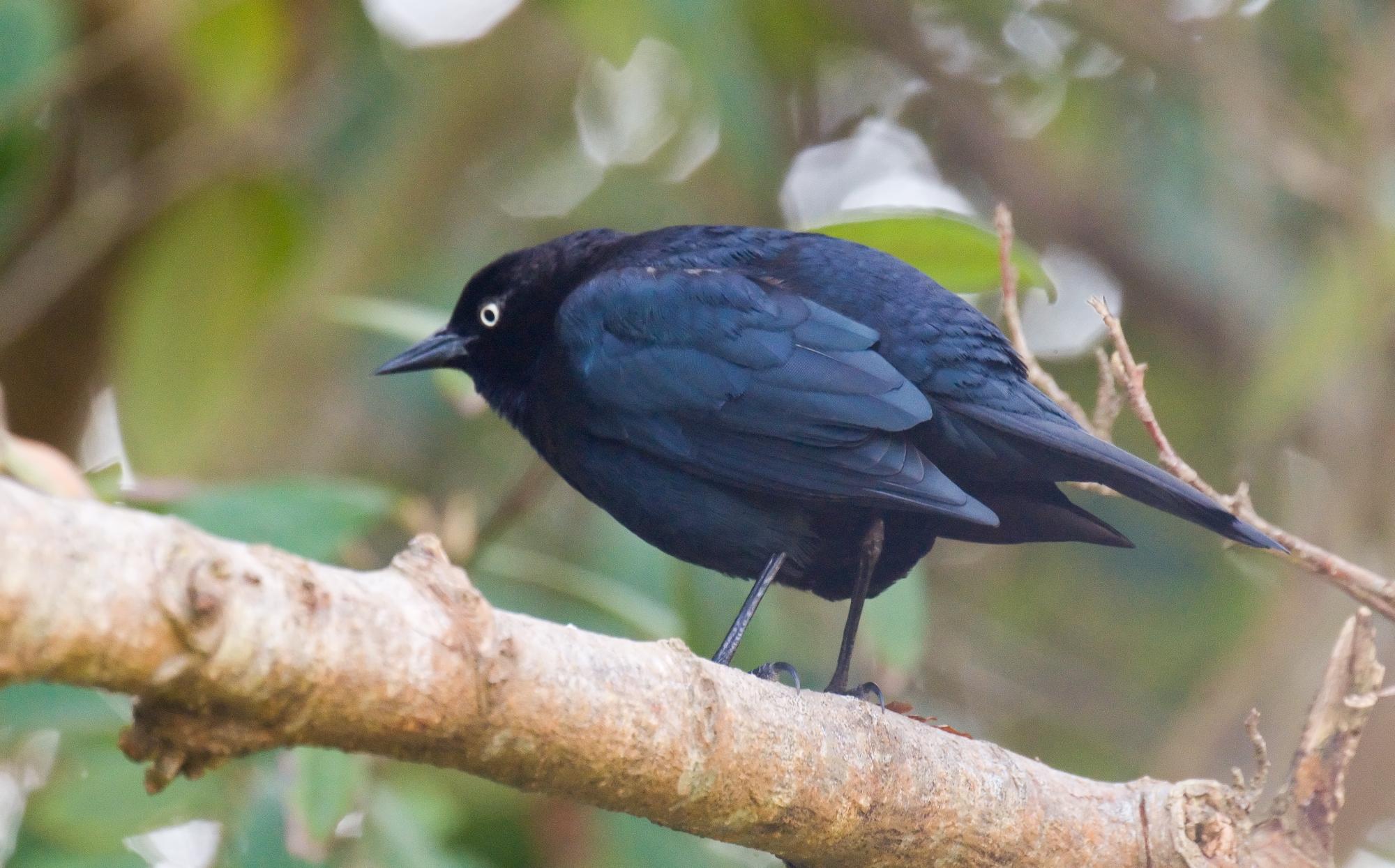
A handsome male blackbird perched on a branch.
Lake Merced, Harding Park  #Brewers_Blackbird
#Brewers_Blackbird
Add a comment or report a mistake
|
|
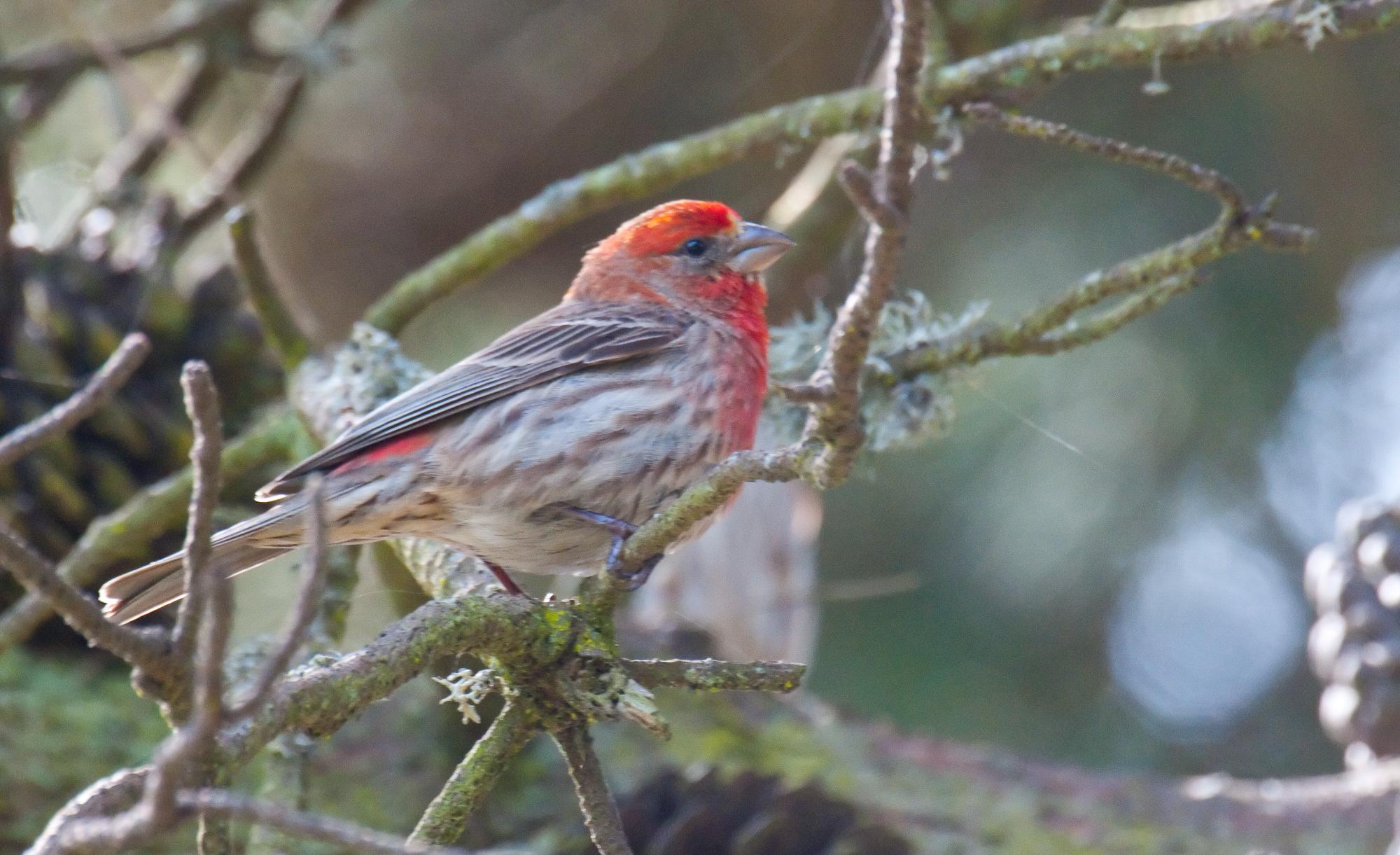
A very common bird but one I've rarely photographed. The red color of this house finch indicated he was male. The female, by contrast, is quite plain with no coloration.
Lake Merced, Harding Park  #Is_Colorful
#Is_Colorful
Add a comment or report a mistake
|
|
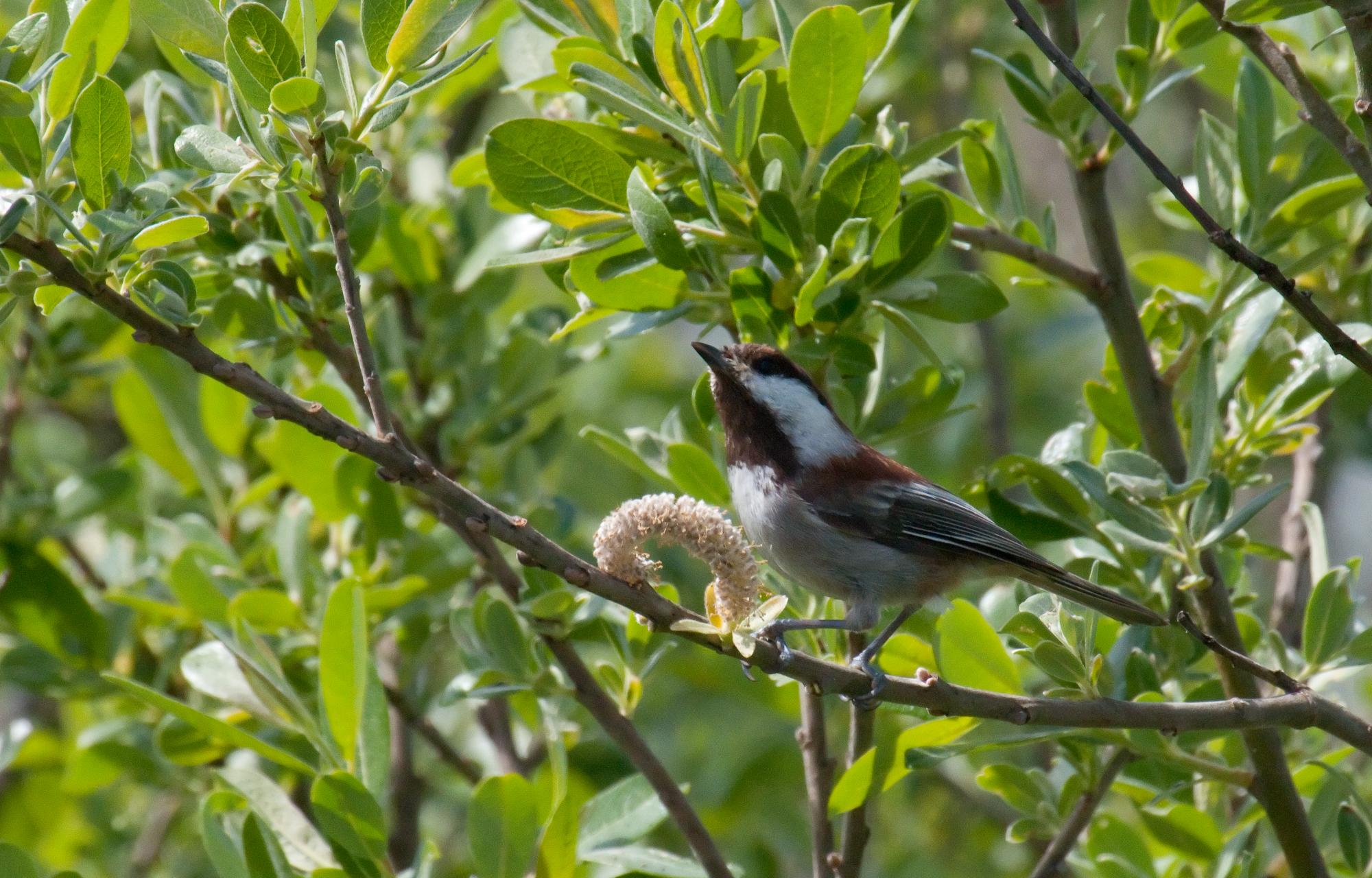
Pretty, noisy and never stays still for long. That's the chickadee.
Lake Merced, Harding Park  #The_Chickadee
#The_Chickadee
Add a comment or report a mistake
|
|
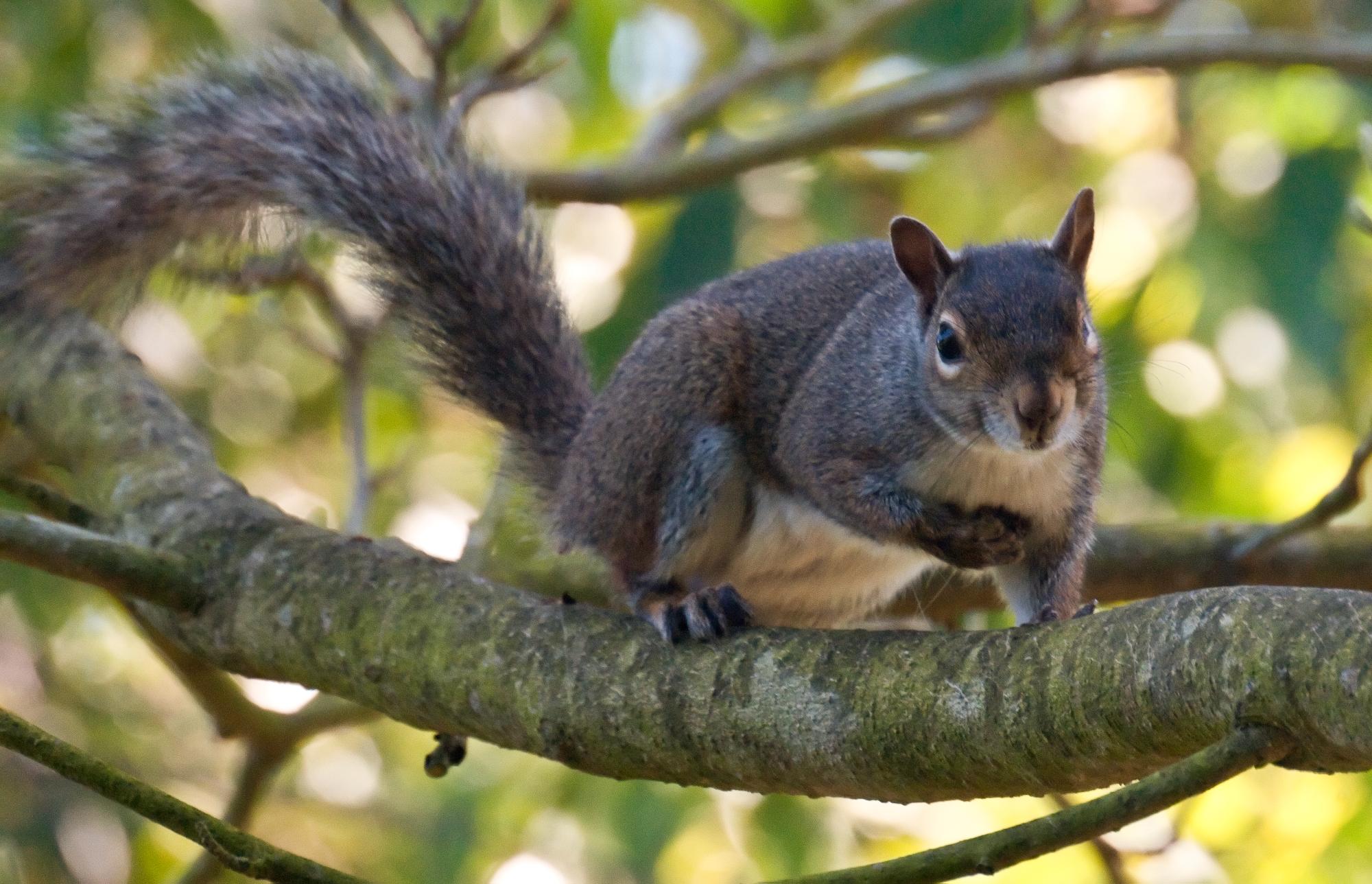
Gray Squirrels
Strybing Arboretum  #Gray_Squirrel
#Gray_Squirrel
Add a comment or report a mistake
|
|
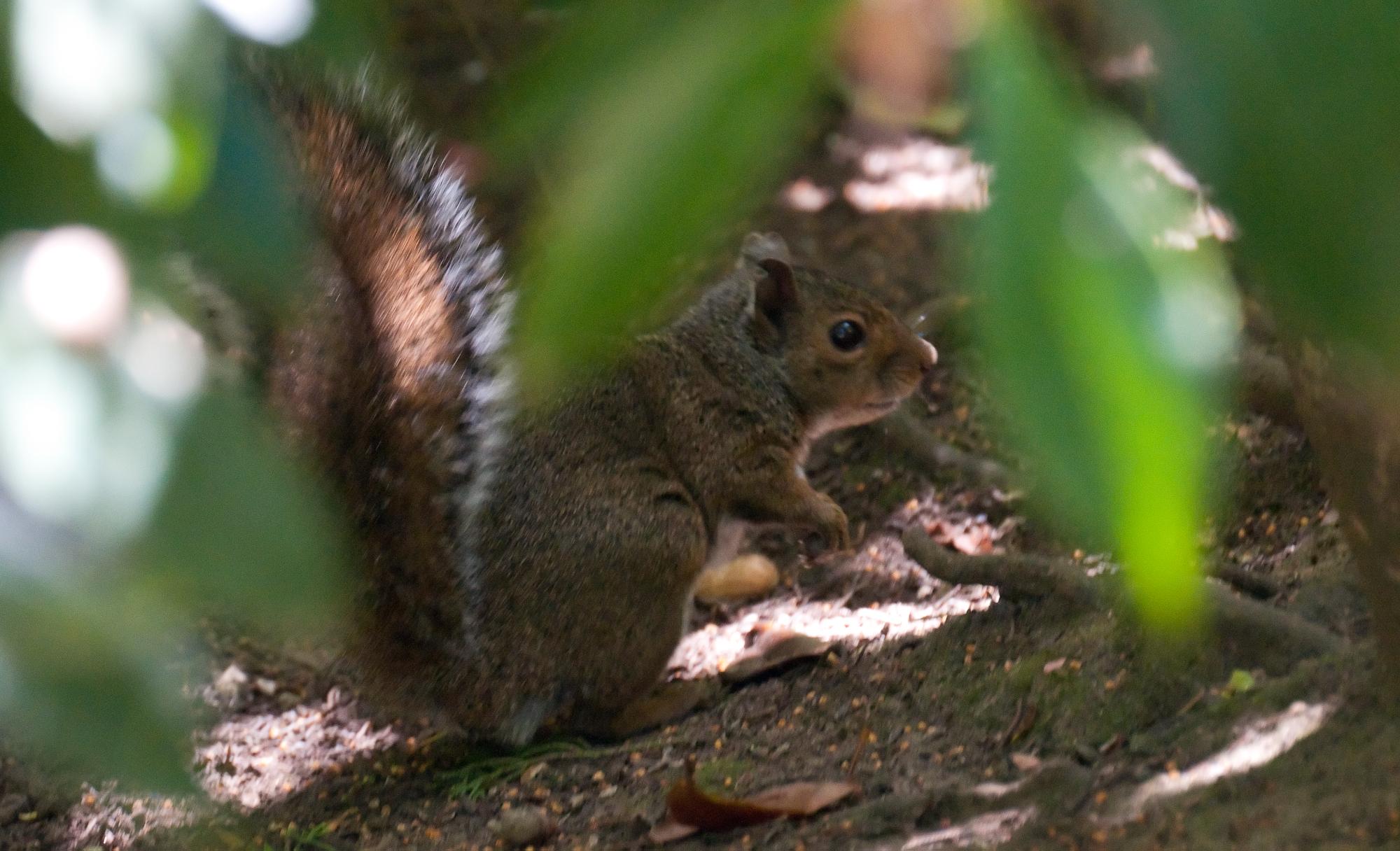 A Western Squirrel scavenging on the ground, glimpsed through the foliage. A nice sun-dappled look.
Strybing Arboretum  #Sun_Dappled
#Sun_Dappled
Add a comment or report a mistake
|
|
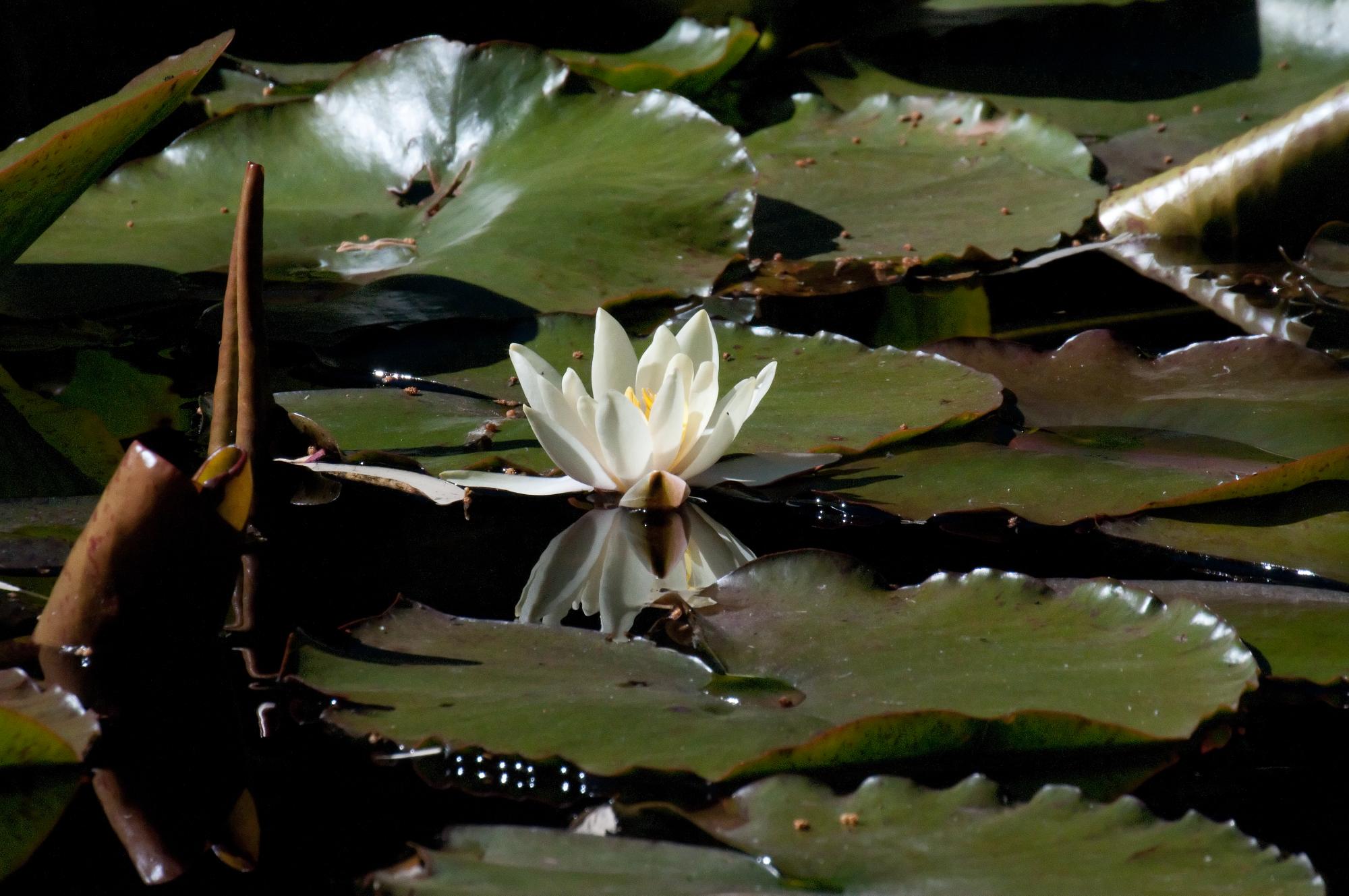
As we left that day we passed a nice pond with water lilies. A gorgeous flower but without the iconic frog.
Strybing Arboretum  #Lilly_Pad
#Lilly_Pad
Add a comment or report a mistake
|
|
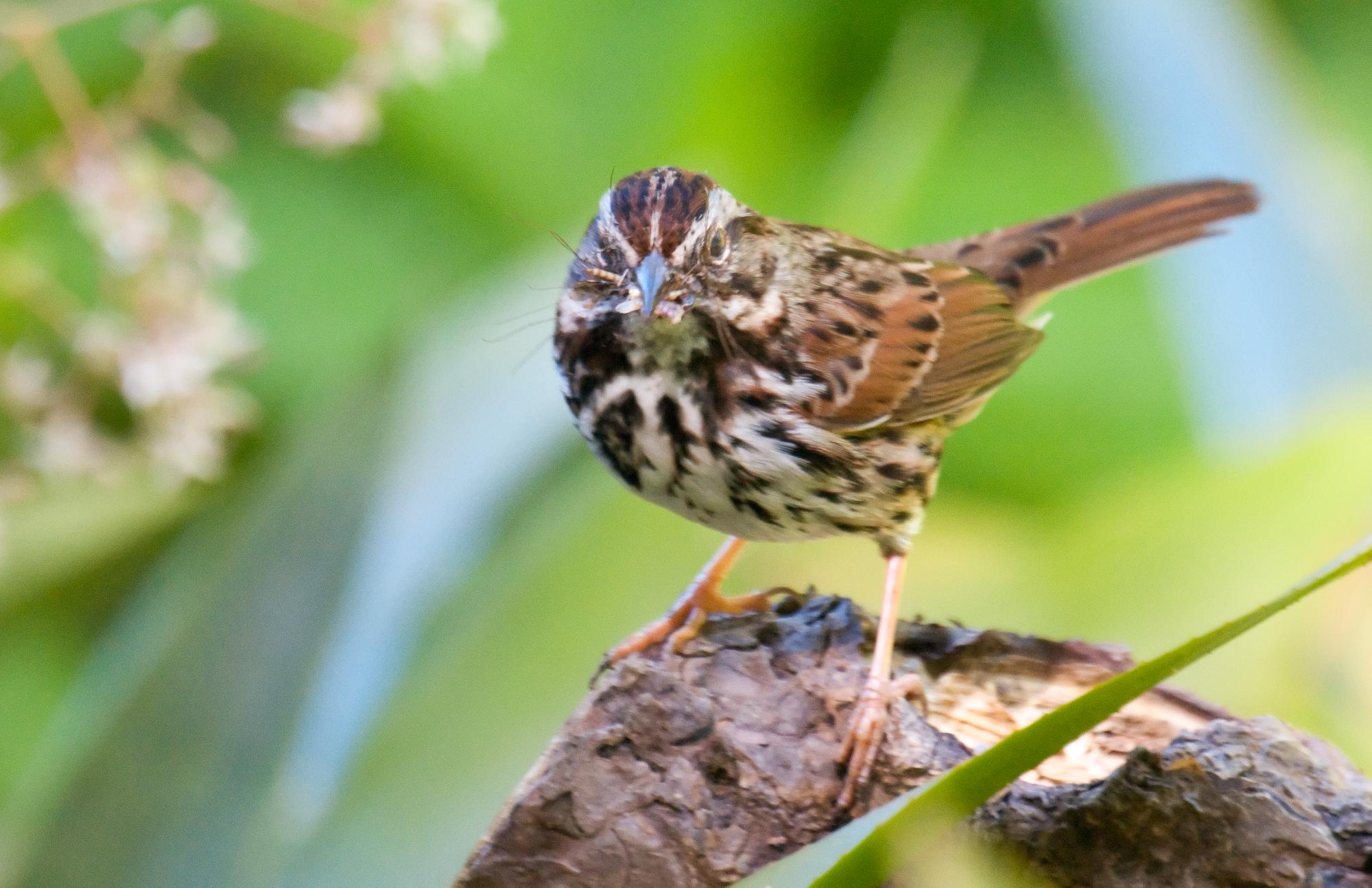
A tiny charmer with a beakful of lunch.
Strybing Arboretum  #With_Beakful
#With_Beakful
Add a comment or report a mistake
|
|
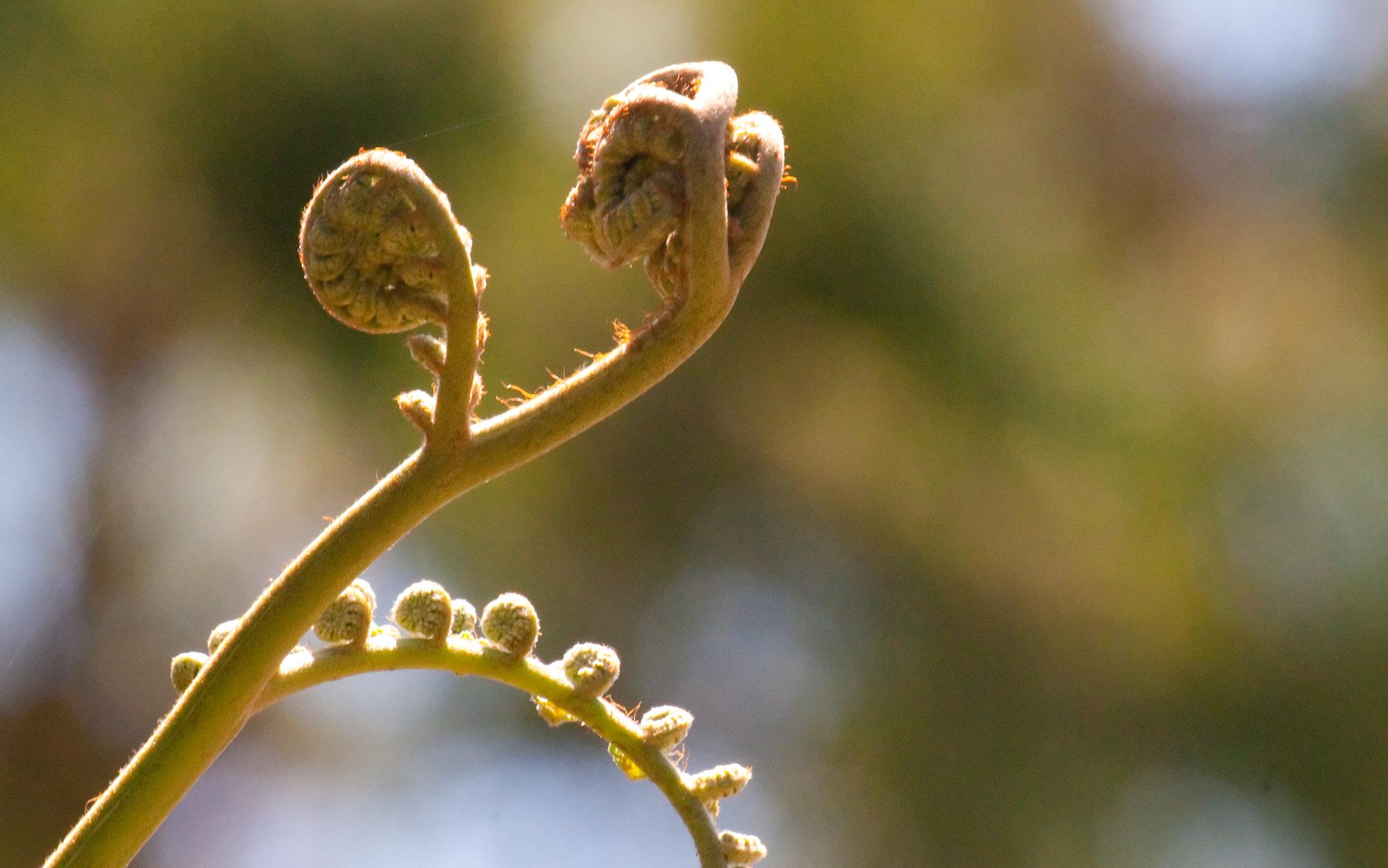
This was neither a talon nor a mutated squid tentacle. It was the just the frond of a fern about to unroll. The actual plant was at least seven feet tall.
Strybing Arboretum  #20100625_Fern
#20100625_Fern
Add a comment or report a mistake
|
|
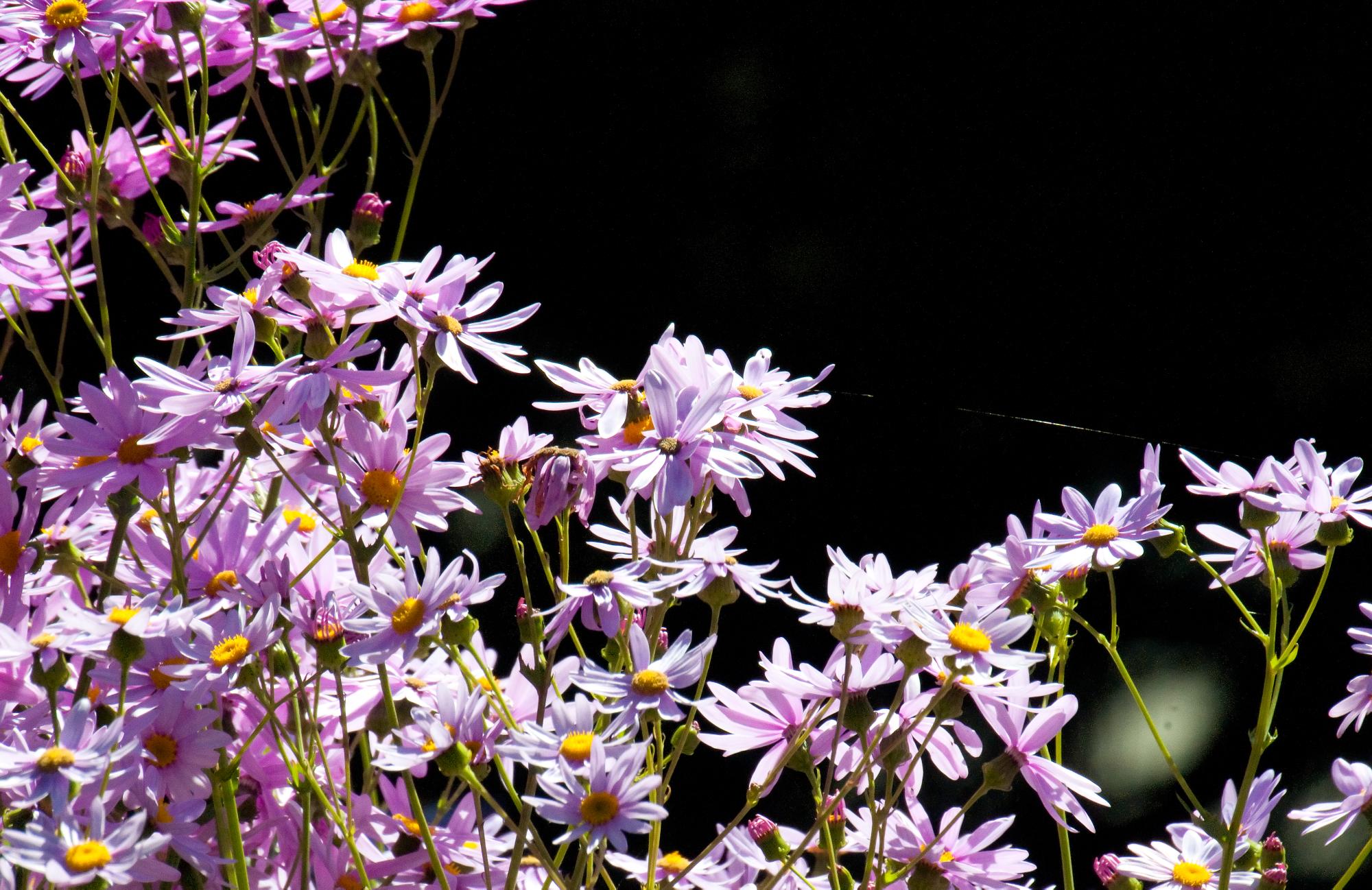
The arboretum gardeners really knew what they were doing. These Swan River Daisies were bloomed in wild profusion.
Strybing Arboretum  #River_Daisy
#River_Daisy
Add a comment or report a mistake
|
|
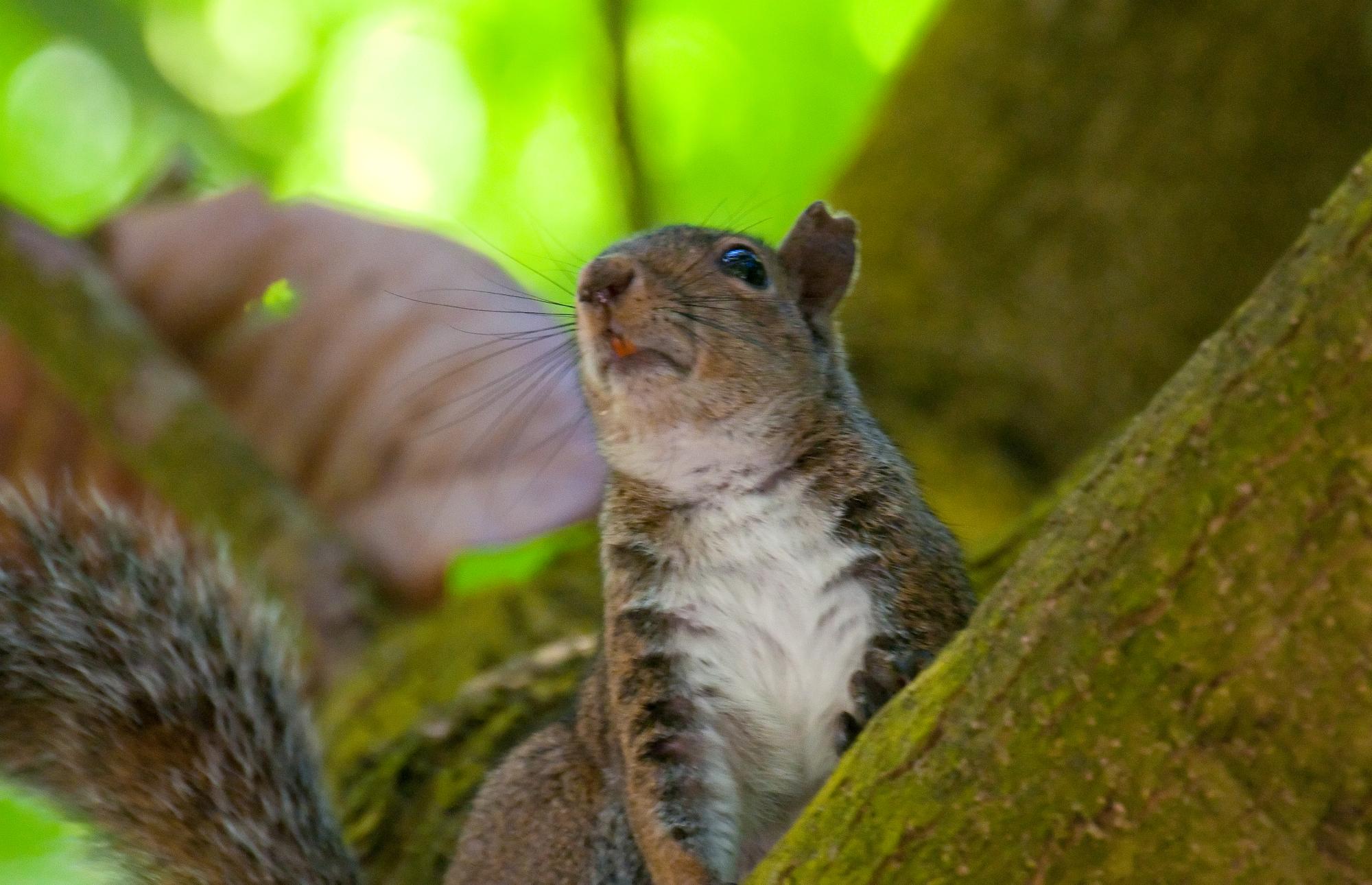 I believe we San Franciscans should campaign for better dental care for Our squirrels. Maybe we can get it on the next ballot.
Strybing Arboretum  #Squirrel_Teeth
#Squirrel_Teeth
Add a comment or report a mistake
|
|
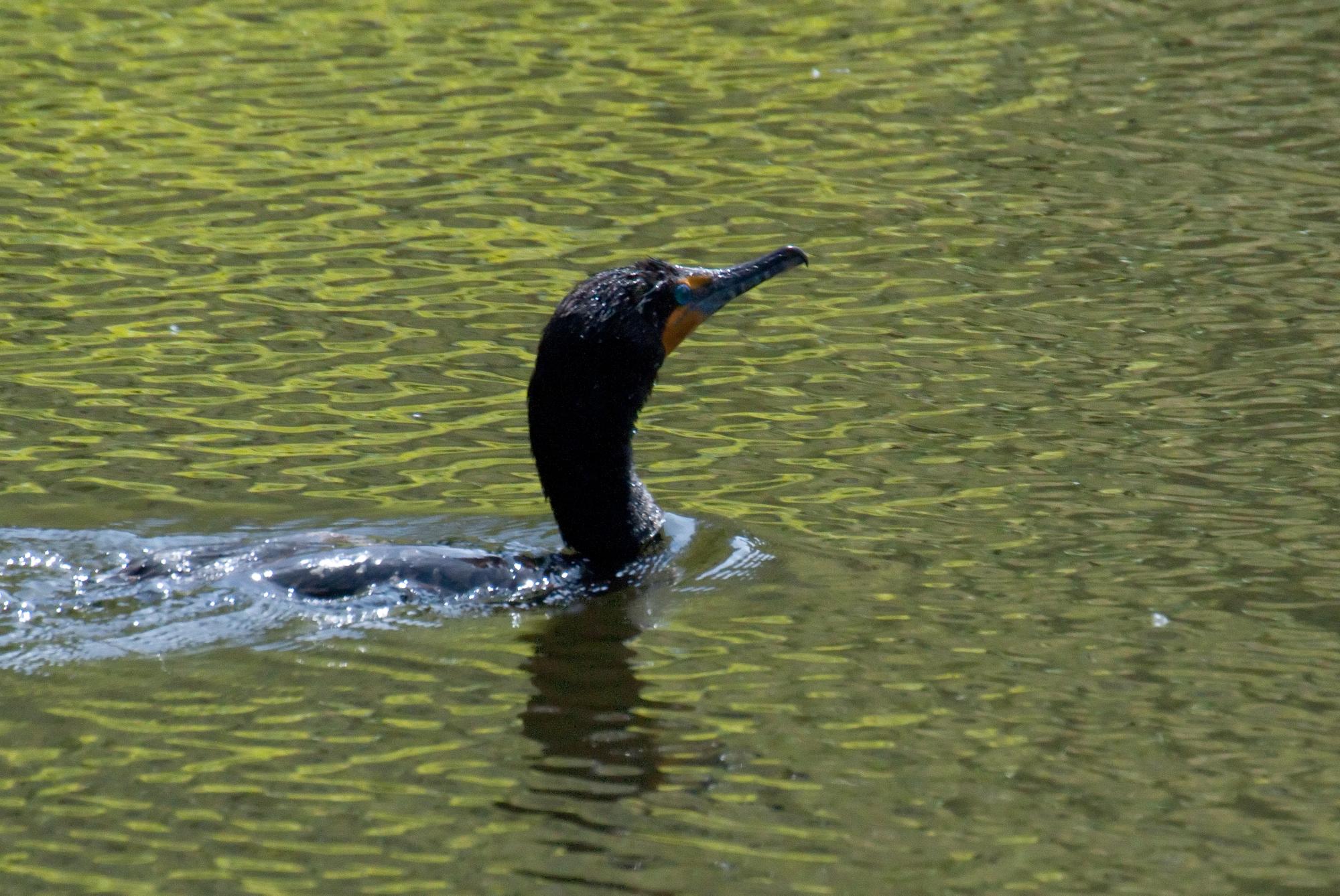
This cormorant appeared to swim in green water but the green was actually a reflection of trees.
Lake Anza, Berkeley, California • (Photo posted Saturday 26 June, 2010) • (Photo taken 13:02:44 Wednesday 12 May, 2010) • © 2010 Terry Costales  #Green_Water
#Green_Water
Add a comment or report a mistake
|
|
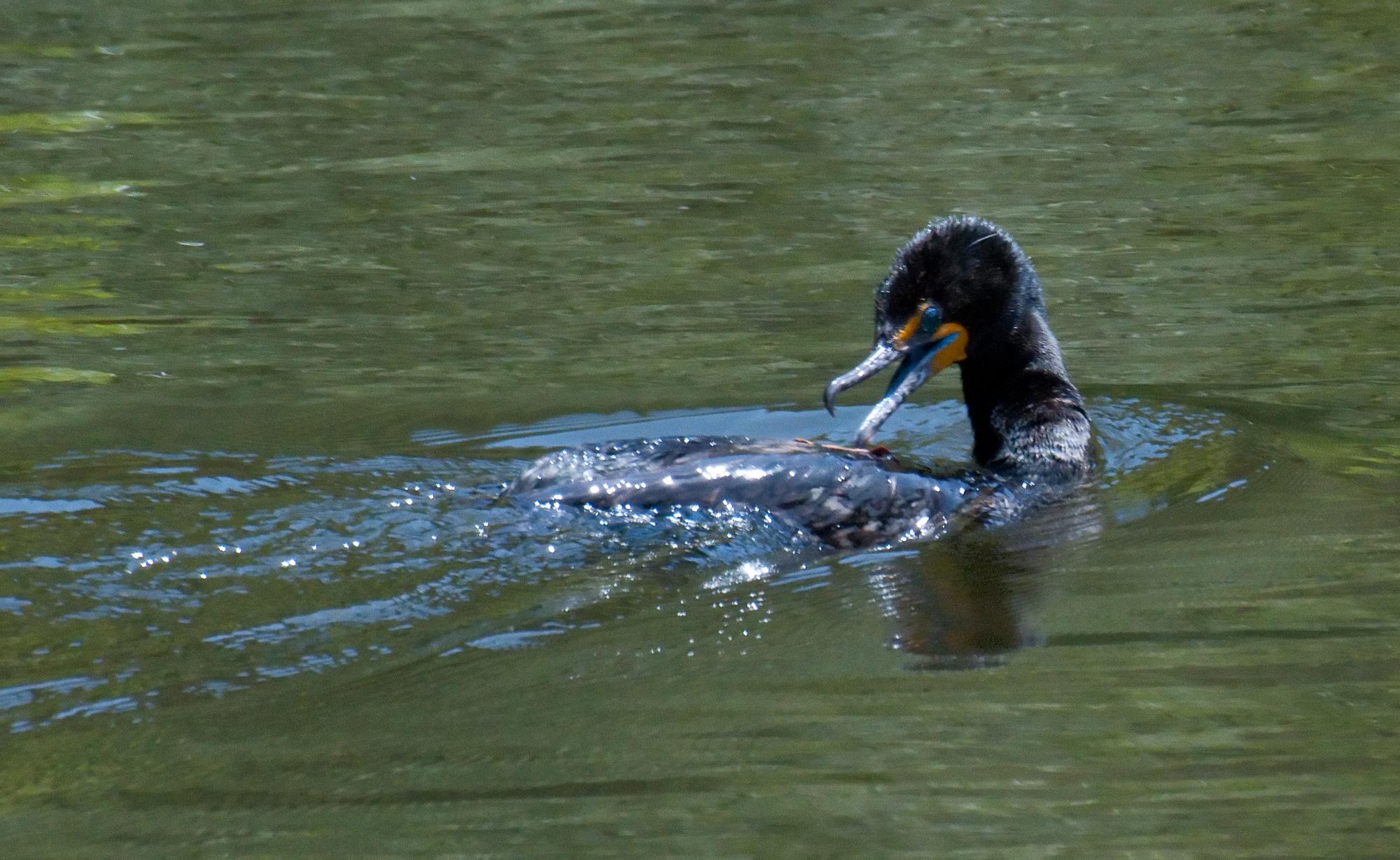 A cormorant was about to remove a leaf that had fallen onto its back.
Lake Anza, Berkeley, California • (Photo posted Saturday 26 June, 2010) • (Photo taken 13:02:44 Wednesday 12 May, 2010) • © 2010 Terry Costales  #On_Back
#On_Back
Add a comment or report a mistake
|
|
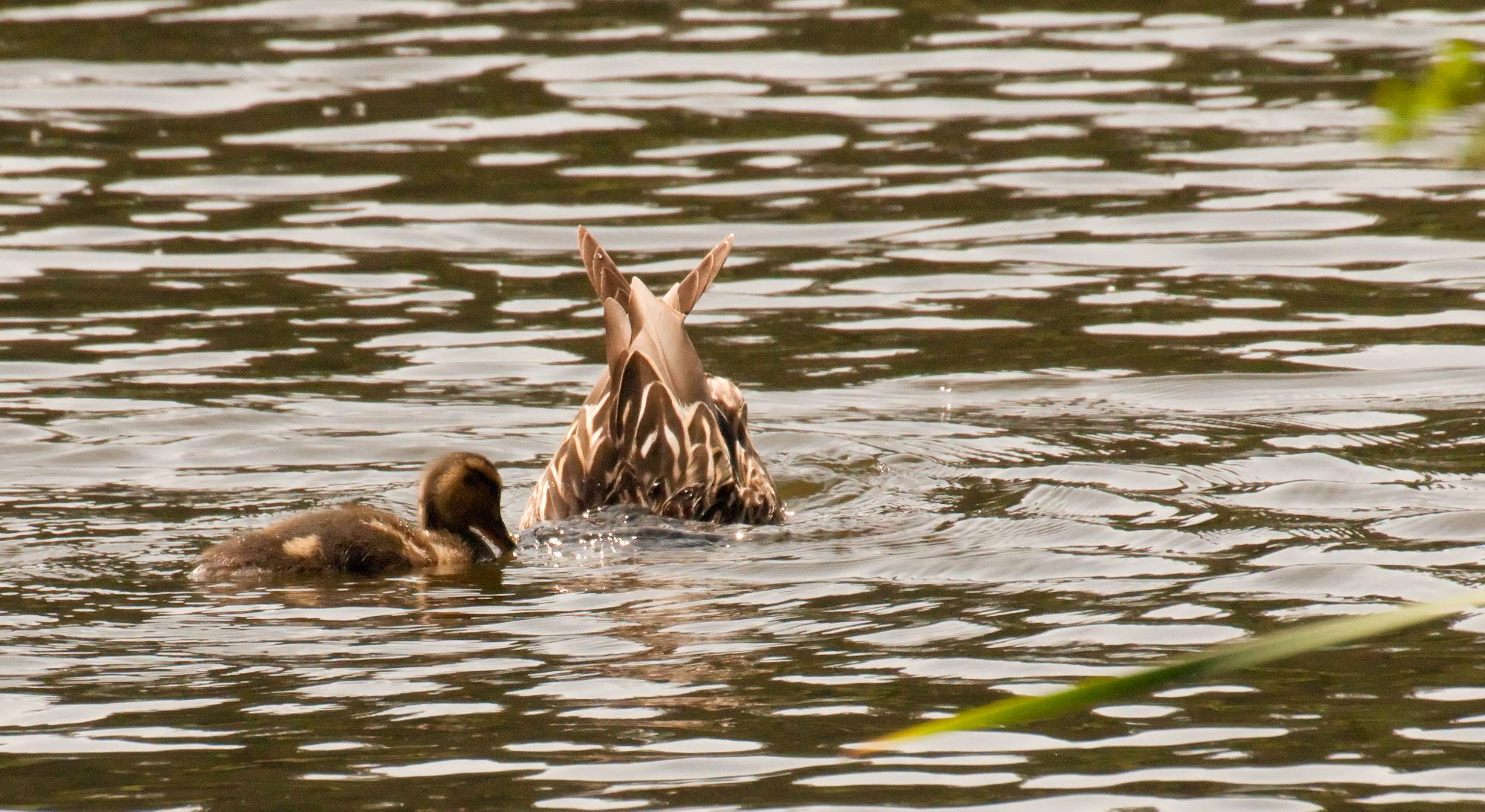 A mallard duckling observes Mom's dabbling technique.
Lake Anza, Berkeley, California • (Photo posted Sunday 27 June, 2010) • (Photo taken 13:05:12 Wednesday 12 May, 2010) • © 2010 Terry Costales  #Demos_Dabbling
#Demos_Dabbling
Add a comment or report a mistake
|
|
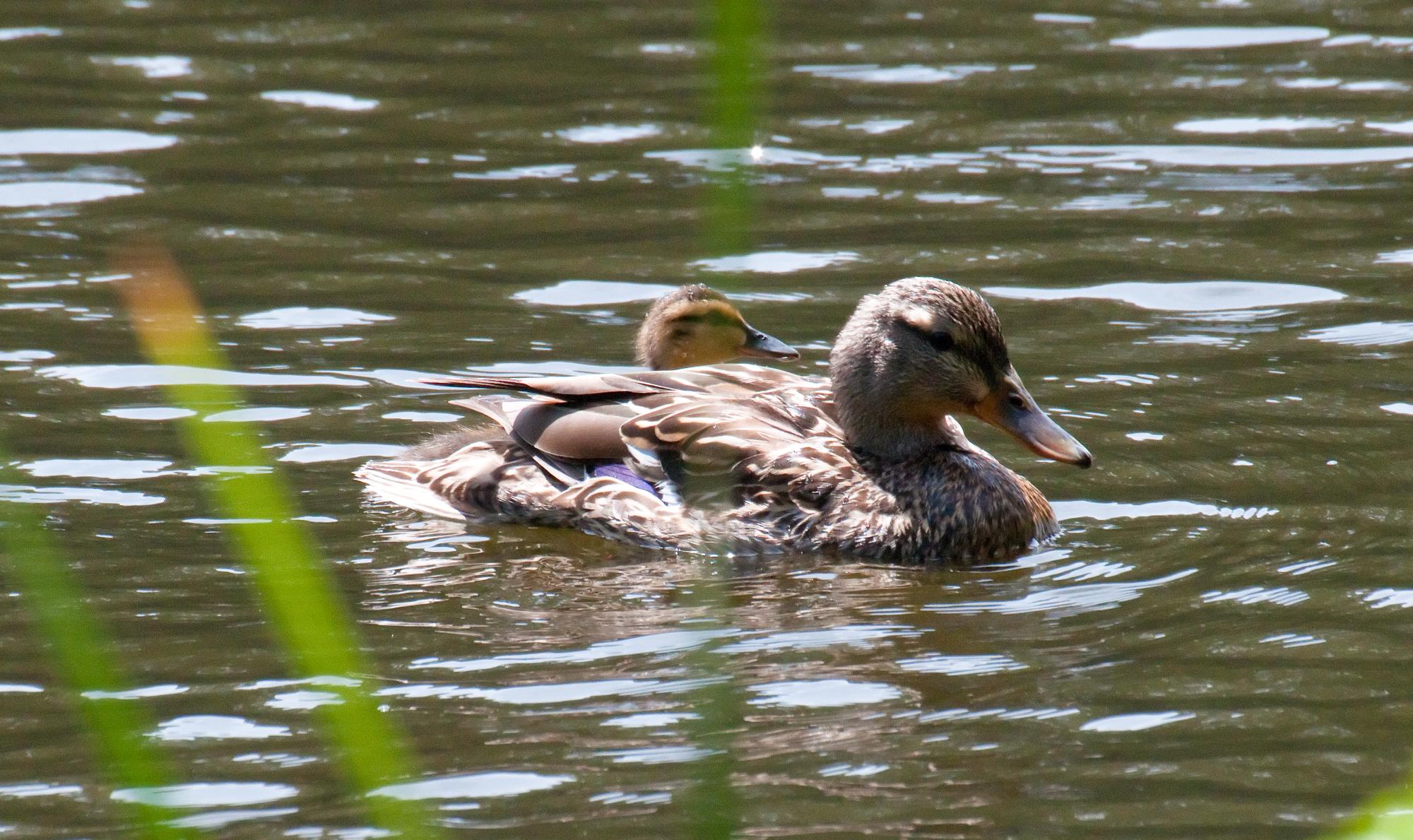
Here is a mallard hen with her one chick.
Lake Anza, Berkeley, California • (Photo posted Sunday 27 June, 2010) • (Photo taken 13:04:54 Wednesday 12 May, 2010) • © 2010 Terry Costales  #With_Chick
#With_Chick
Add a comment or report a mistake
|
|
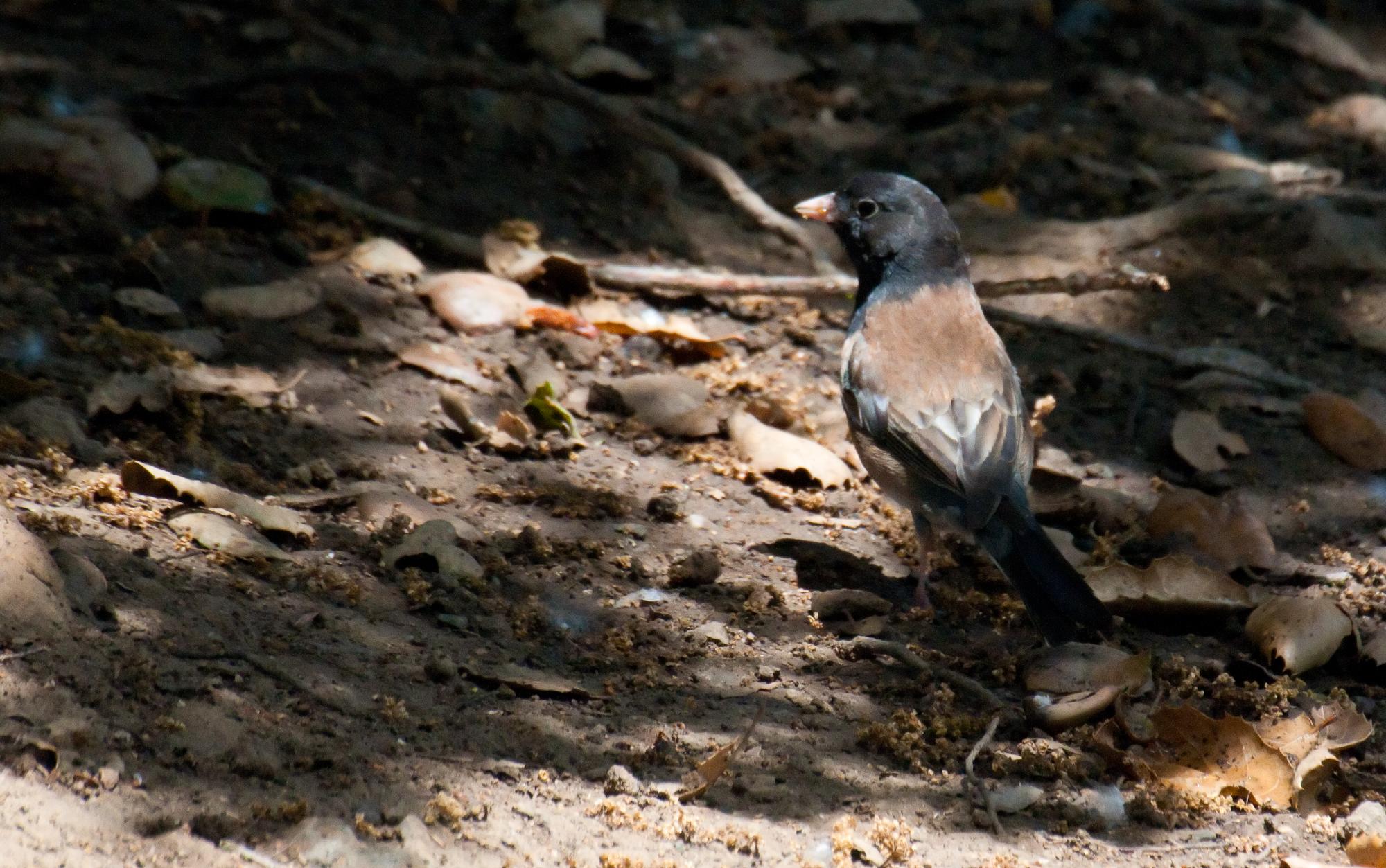
I grew up to know this bird as the Oregon Junco with it's rufous flanks and black hood. Then I later learned it is really a Dark-eyed Junco
Here is a little guy foraging in the typical junco fashion, giving me a pretty sun-dappled photo.
 #Oregon_Junco
#Oregon_Junco
Add a comment or report a mistake
|
|
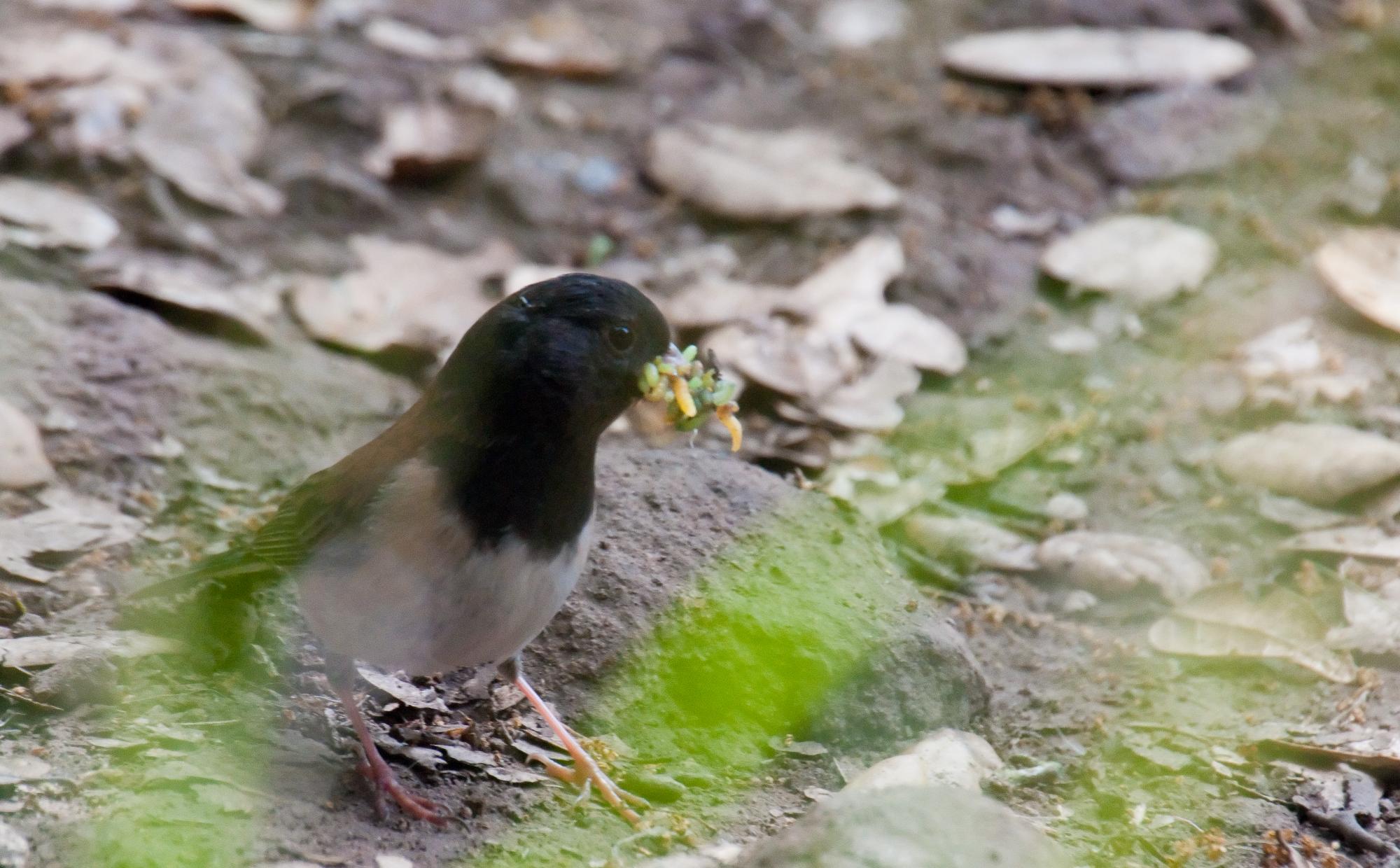
A bird with young to feed has a full time job and in this case a very full beak.
Lake Anza, Berkeley, California • (Photo posted Tuesday 29 June, 2010) • (Photo taken 13:19:48 Wednesday 12 May, 2010) • © 2010 Terry Costales  #Full_Beak
#Full_Beak
Add a comment or report a mistake
|
|
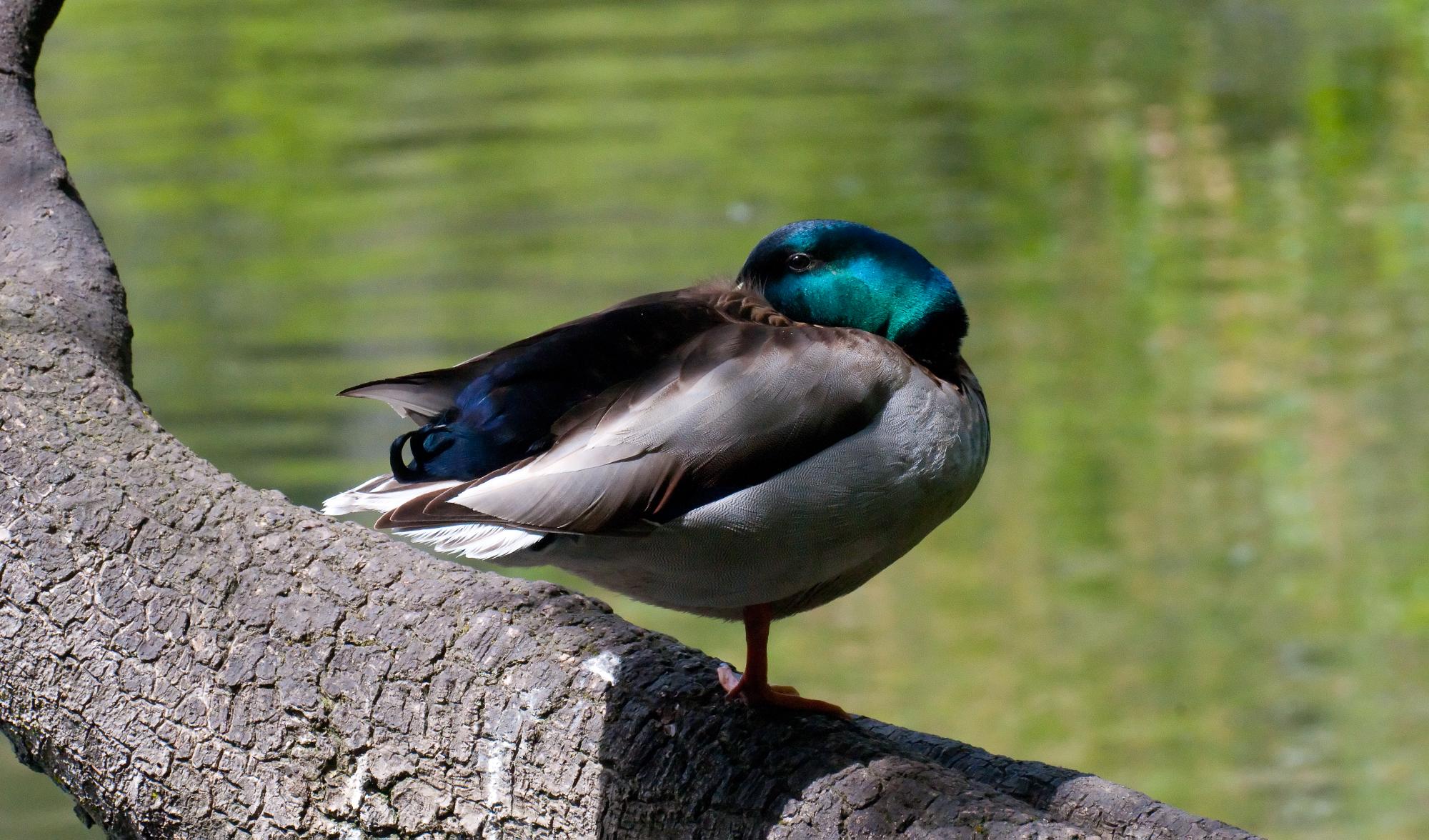 A male mallard posed on a large tree limb that extended out over the water. The sunlight made his iridescent colors show well.
Lake Anza, Berkeley, California • (Photo posted Wednesday 30 June, 2010) • (Photo taken 13:31:49 Wednesday 12 May, 2010) • © 2010 Terry Costales  #Iridescent_Colors
#Iridescent_Colors
Add a comment or report a mistake
|
|
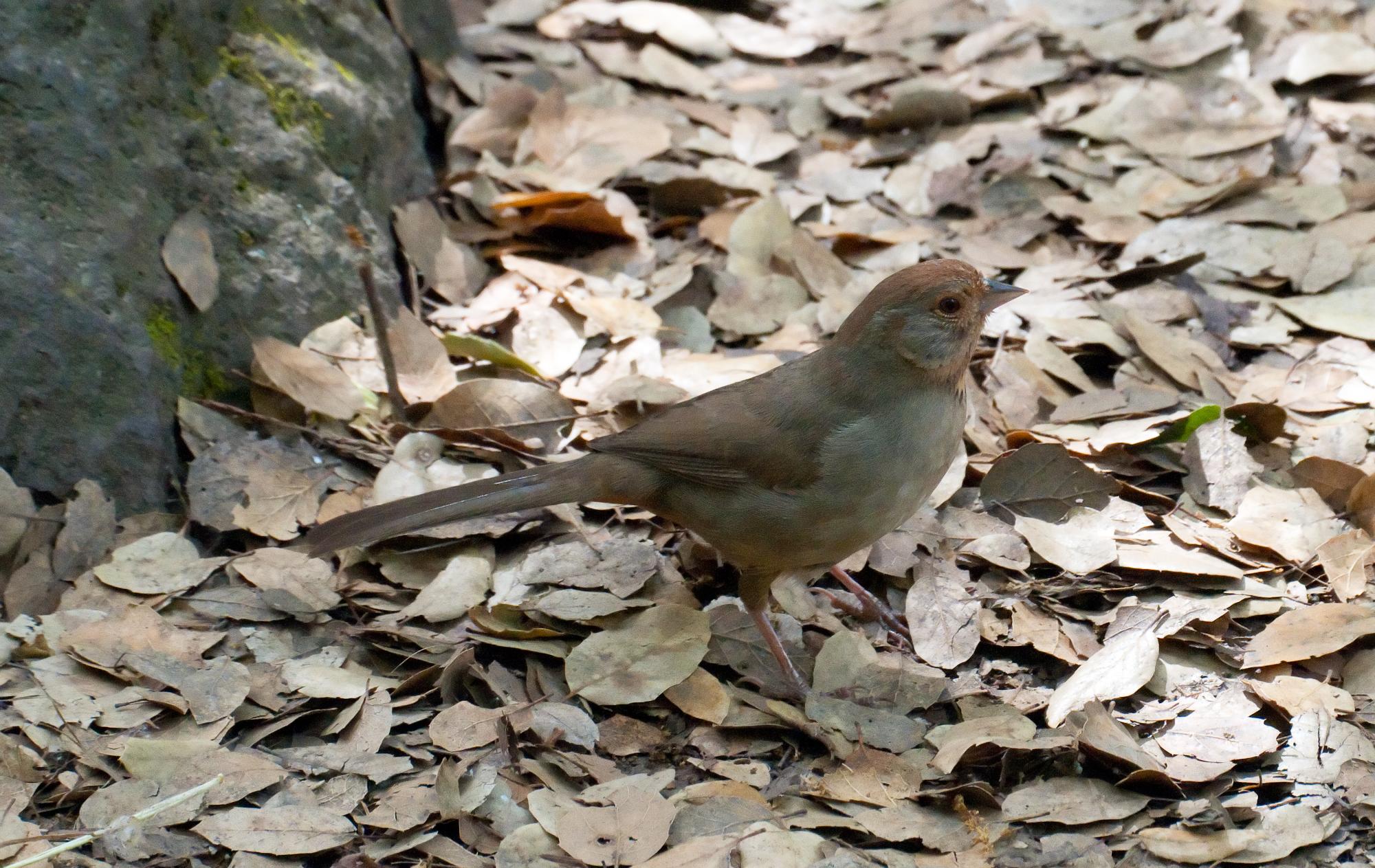
The typical Towhee is very shy and will scuttle away as soon as anyone approaches. This Towhee however, allowed me to get quite close and seemed unpreturbed by me or other visitors to the park.
Jewel Lake, Tilden Park, Berkeley, California • (Photo posted Friday 2 July, 2010) • (Photo taken 14:26:05 Wednesday 12 May, 2010) • © 2010 Terry Costales  #Approachable_Towhee
#Approachable_Towhee
Add a comment or report a mistake
|
|
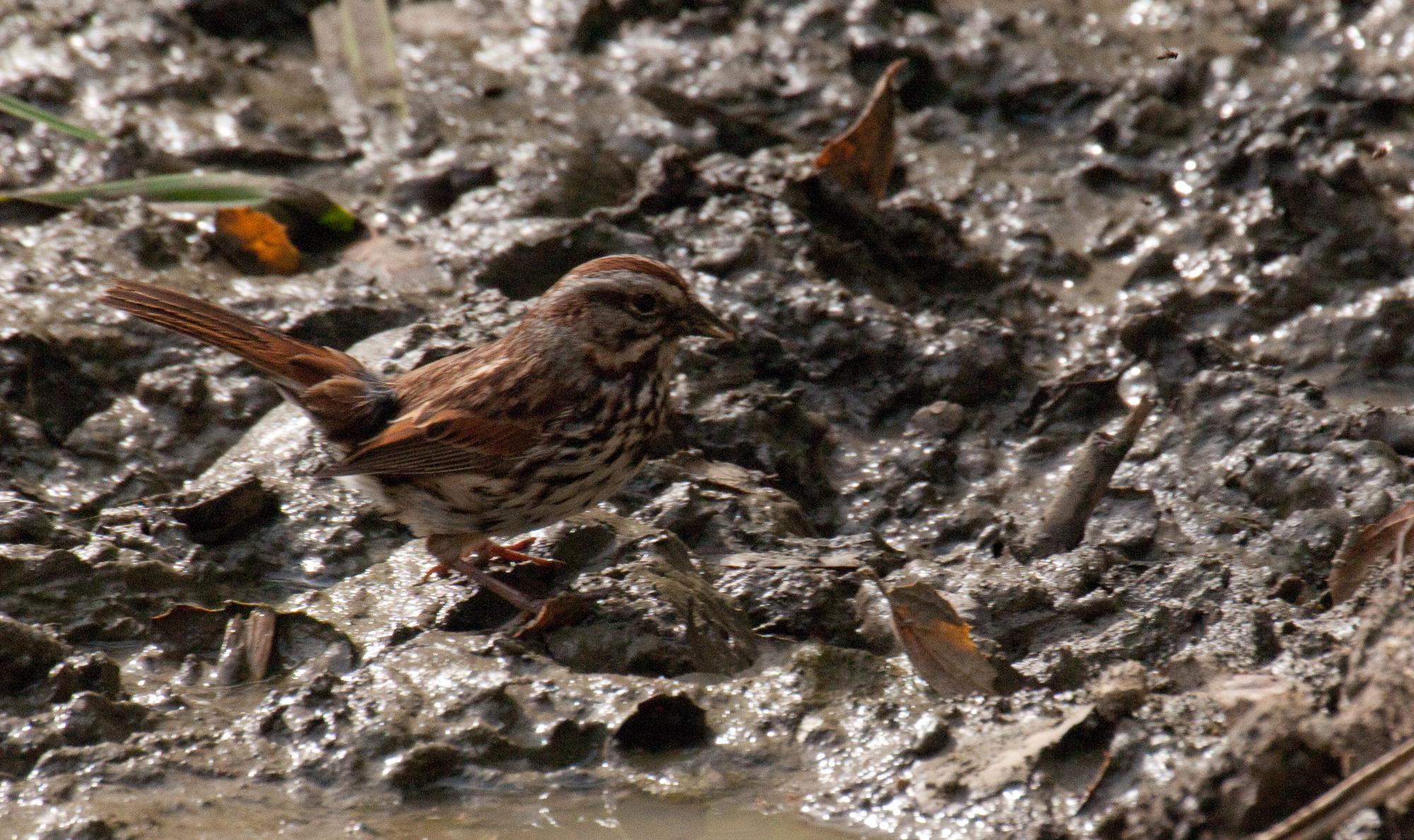
A song sparrow found a place to drink.
Jewel Lake, Tilden Park, Berkeley, California • (Photo posted Friday 2 July, 2010) • (Photo taken 15:14:04 Wednesday 12 May, 2010) • © 2010 Terry Costales  #To_Drink
#To_Drink
Add a comment or report a mistake
|
|
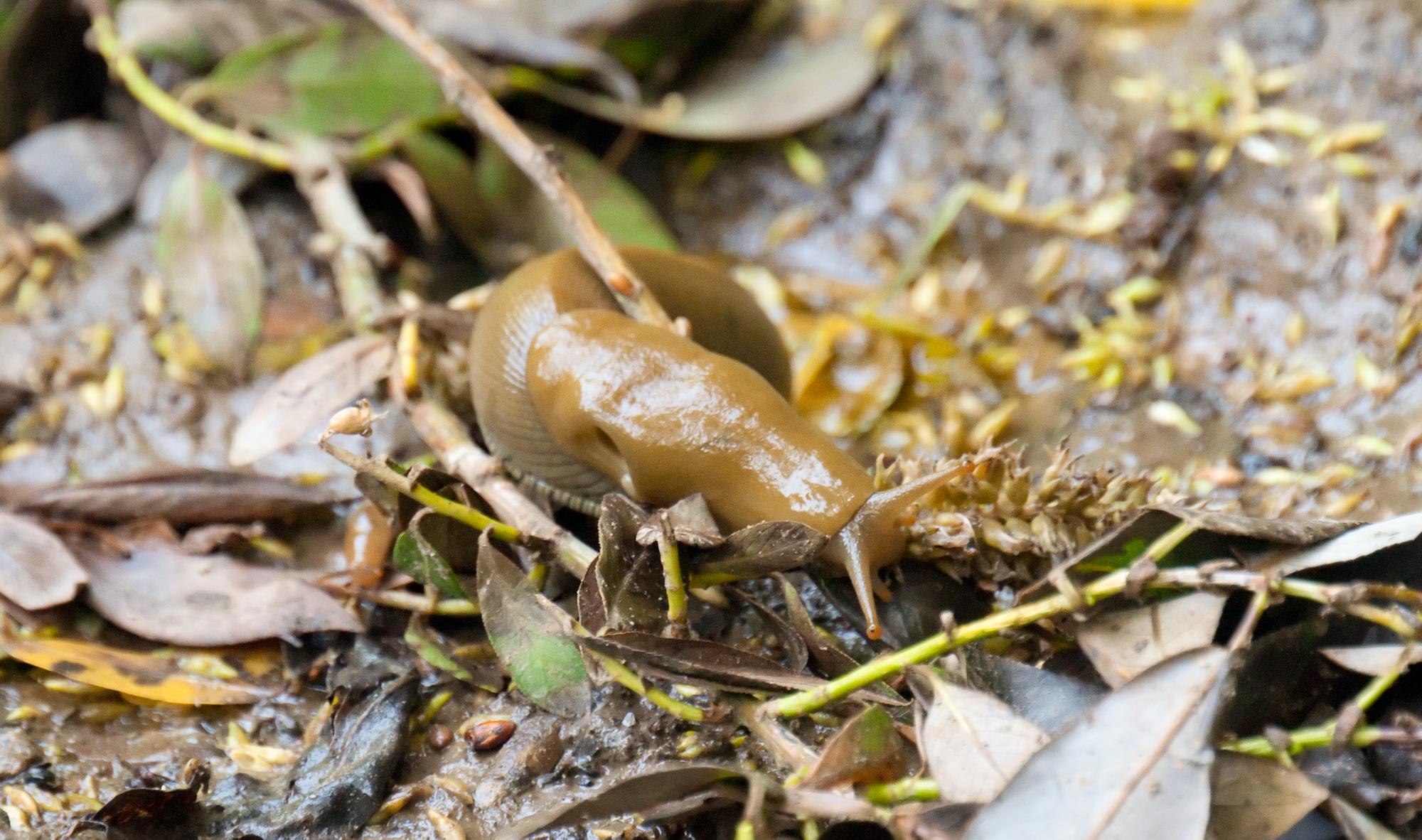
I almost didn't see this well camouflaged and slow moving slug. He and I are both happy I didn't step on him.
The Banana Slug is also famous for its role in sports. It is the official mascot of University of California at Santa Cruz.
Jewel Lake, Tilden Park, Berkeley, California • (Photo posted Sunday 4 July, 2010) • (Photo taken 14:28:29 Wednesday 12 May, 2010) • © 2010 Terry Costales  #Tilden_Park
#Tilden_Park
Add a comment or report a mistake
|
|

Four turtles sunned themselves just across the pond in the weak afternoon sunshine.
Jewel Lake, Tilden Park, Berkeley, California • (Photo posted Sunday 4 July, 2010) • (Photo taken 14:28:29 Wednesday 12 May, 2010) • © 2010 Terry Costales  #Tilden_Park
#Tilden_Park
Add a comment or report a mistake
|
|
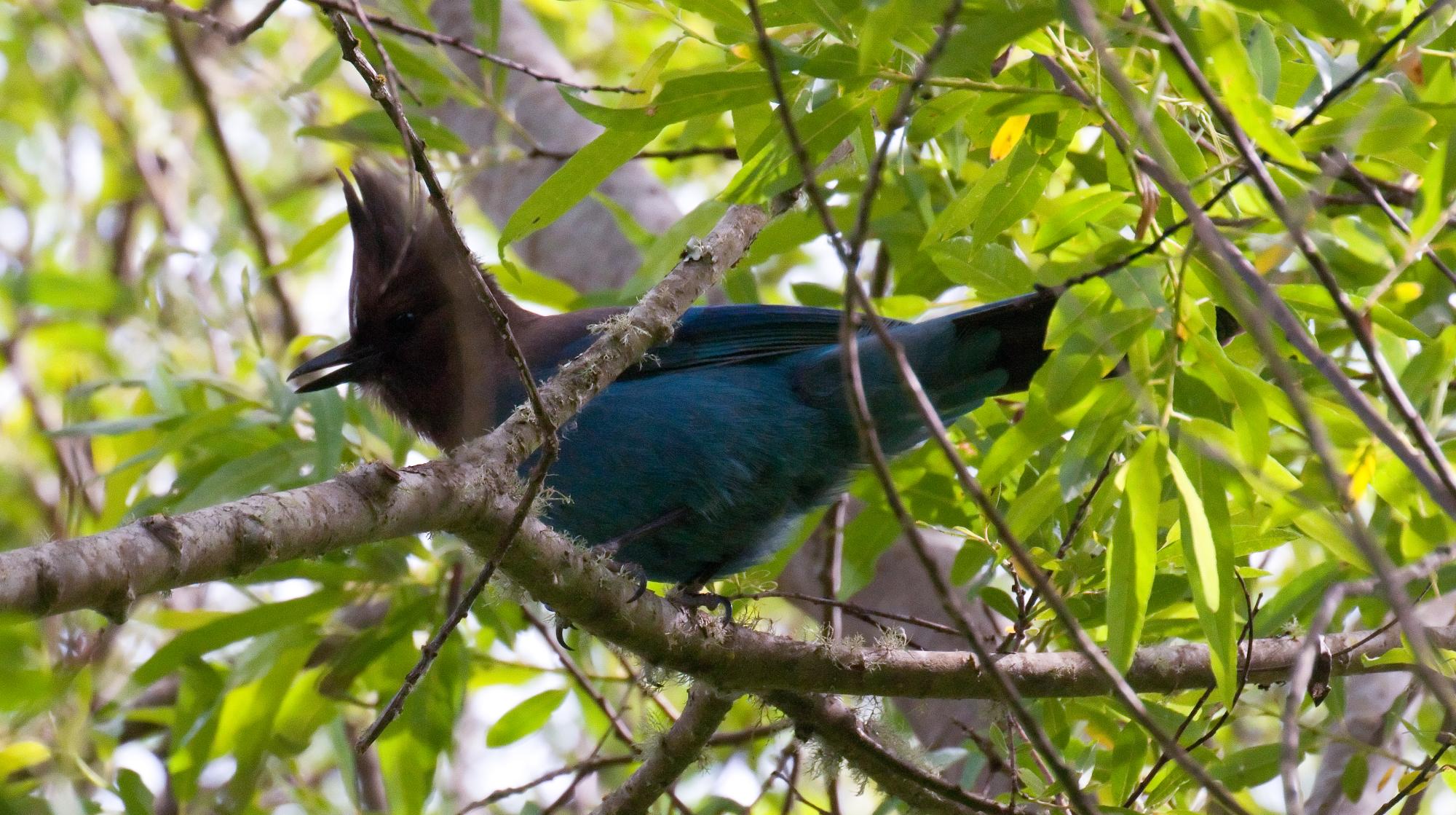
As we left Jewel Lake we were escorted out by a loud scolding Stellar's Jay. He was quite insistent that we had overstayed our welcome.
Jewel Lake, Tilden Park, Berkeley, California • (Photo posted Monday 5 July, 2010) • (Photo taken 14:28:29 Wednesday 12 May, 2010) • © 2010 Terry Costales  #Tilden_Park
#Tilden_Park
Add a comment or report a mistake
|
|
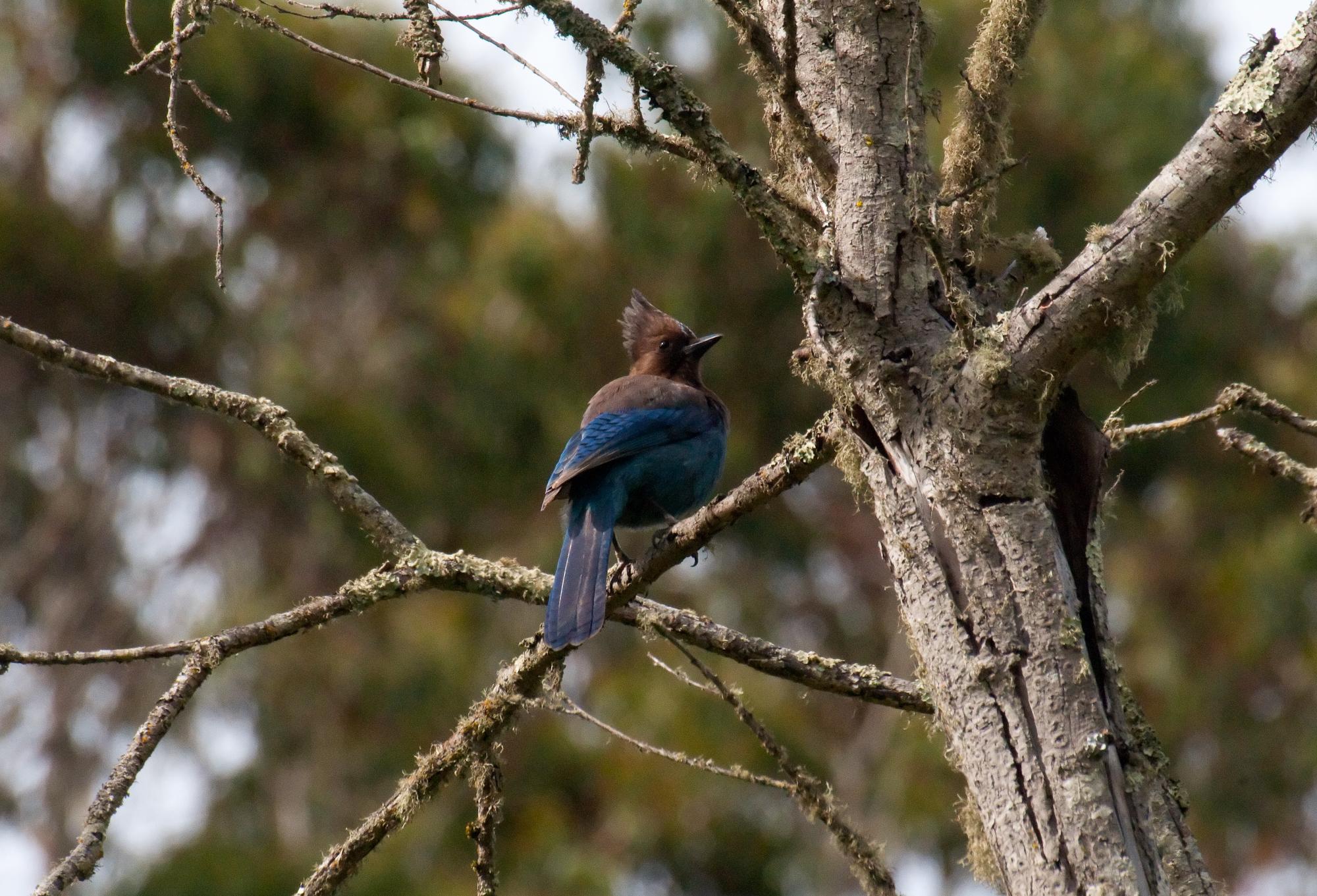 After "evicting" us from its part of the park, the jay watched and made sure we were actually leaving.
Jewel Lake, Tilden Park, Berkeley, California • (Photo posted Monday 5 July, 2010) • (Photo taken 15:33:39 Wednesday 12 May, 2010) • © 2010 Terry Costales  #Watched_Us
#Watched_Us
Add a comment or report a mistake
|
|
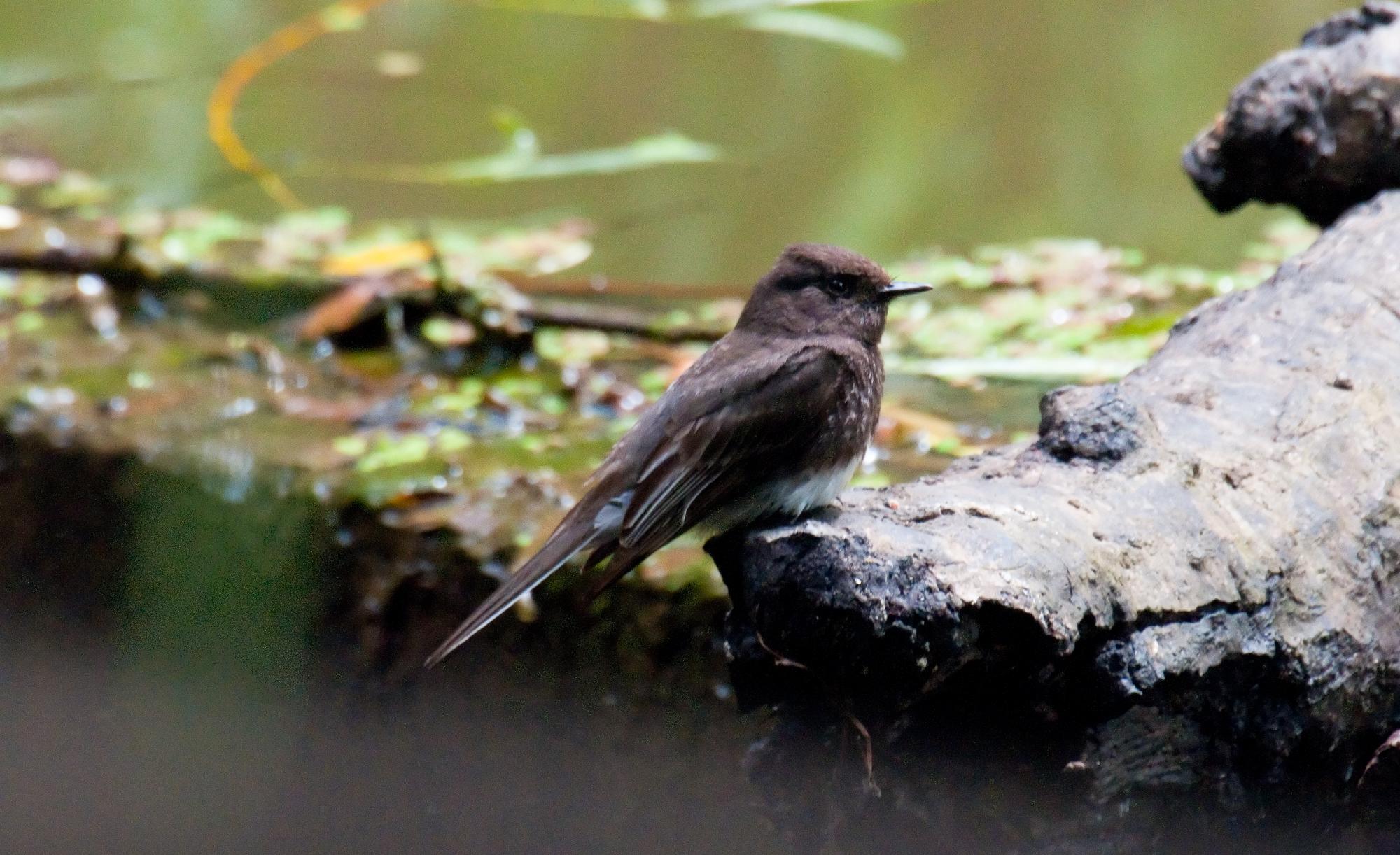
Two Phoebes were very active near Jewel Lake's shore. This nesting pair would each catch insects, pose on the spillway and then fly to feed their nesting young.
Jewel Lake, Tilden Park, Berkeley, California • (Photo posted Tuesday 6 July, 2010) • (Photo taken 10:20:21 Tuesday 18 May, 2010) • © 2010 Terry Costales  #Tilden_Park
#Tilden_Park
Add a comment or report a mistake
|
|
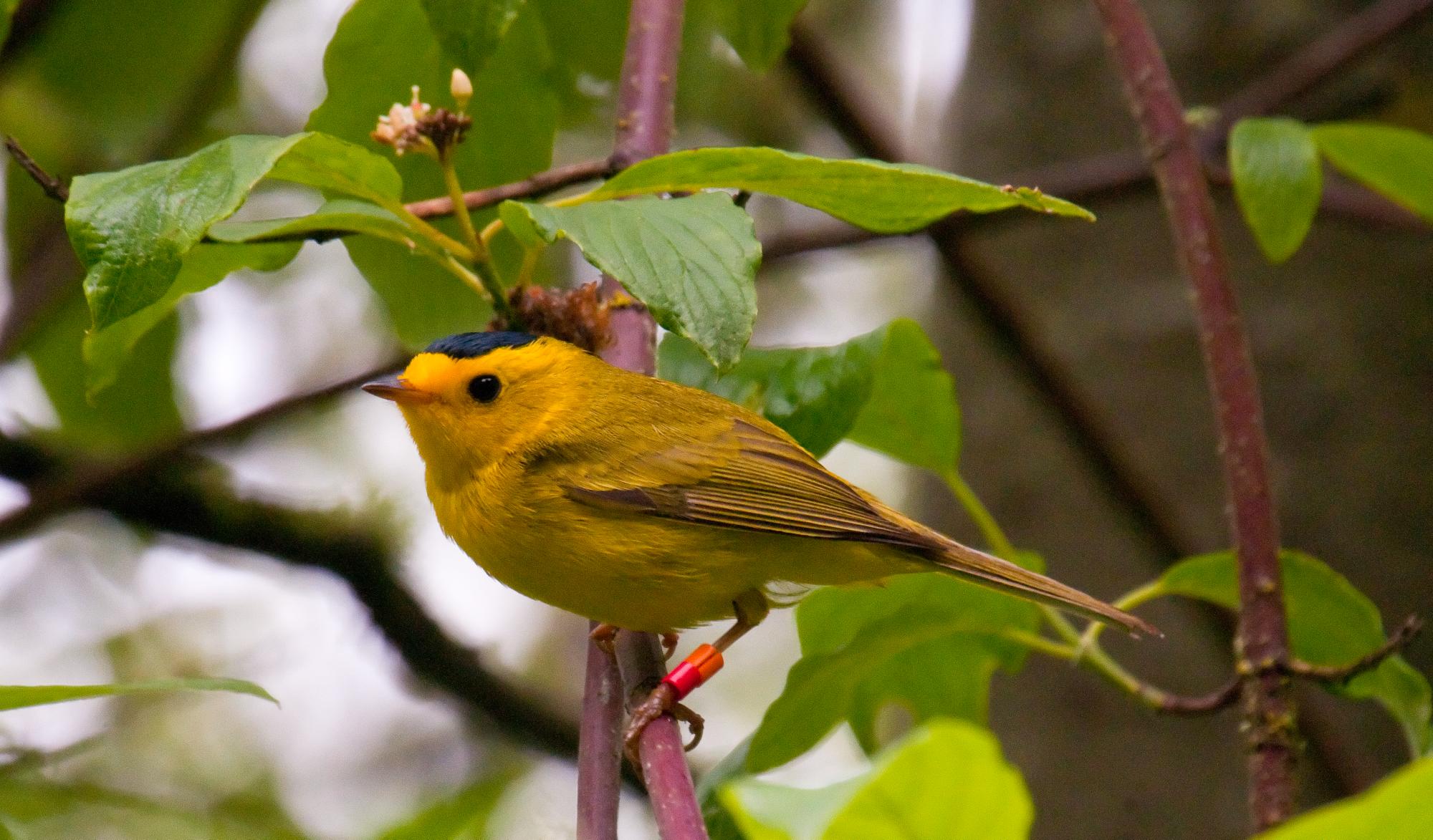
Wilson's Warblers are numerous in California, yet this was the first one I had ever seen. Of course, since seeing my first, I now suddenly seem to find them on every outing.
Jewel Lake, Tilden Park, Berkeley, California • (Photo posted Tuesday 6 July, 2010) • (Photo taken 09:38:02 Tuesday 18 May, 2010) • © 2010 Terry Costales  #Tilden_Park
#Tilden_Park
Add a comment or report a mistake
|
|
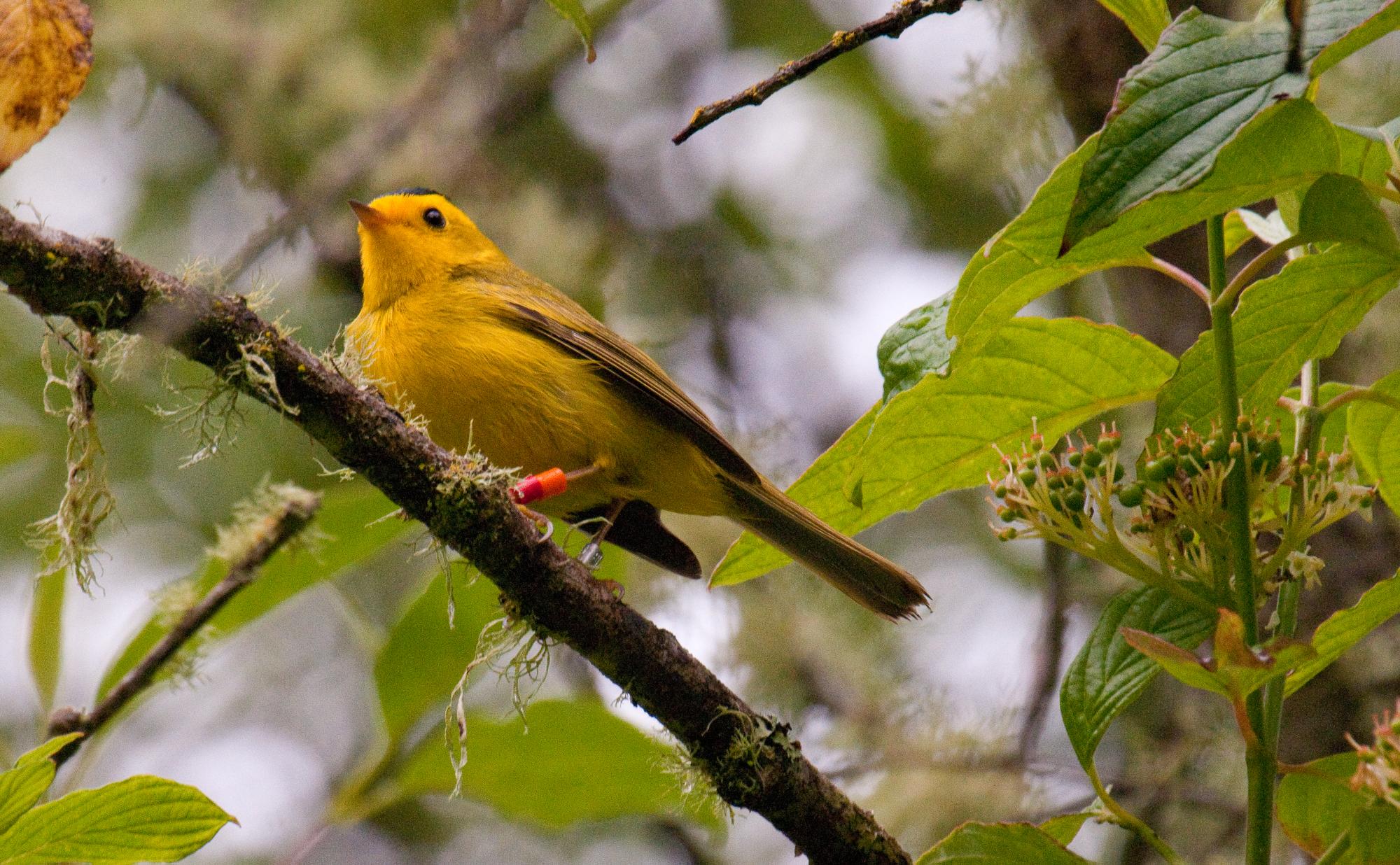
The Wilson's Warbler from yesterdays posting,
Jewel Lake  #Wilsons_Warbler
#Wilsons_Warbler
Add a comment or report a mistake
|
|
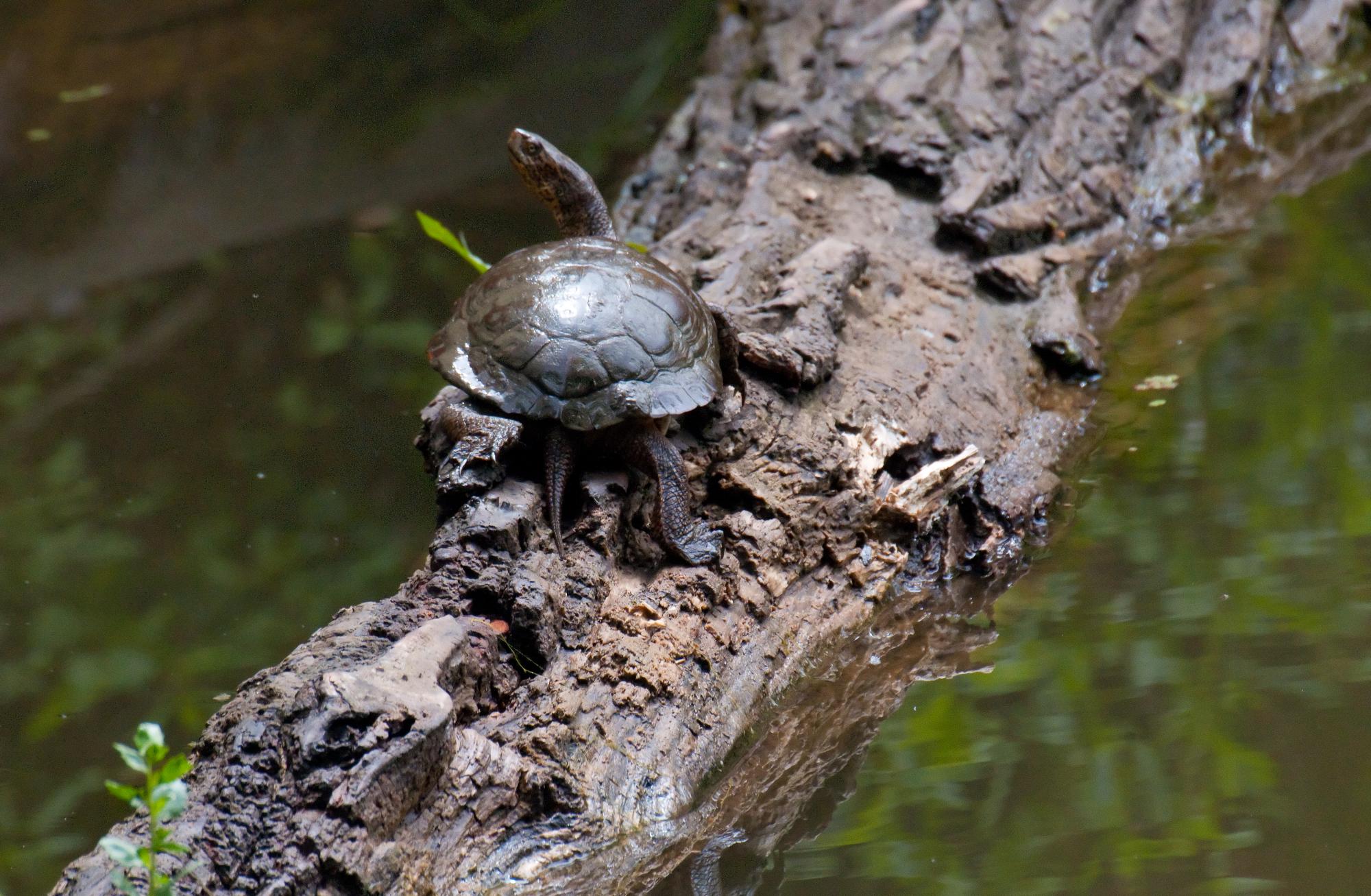 A solitary pond turtle suns itself on a log.
Jewel Lake  #Tilden_Park
#Tilden_Park
Add a comment or report a mistake
|
|
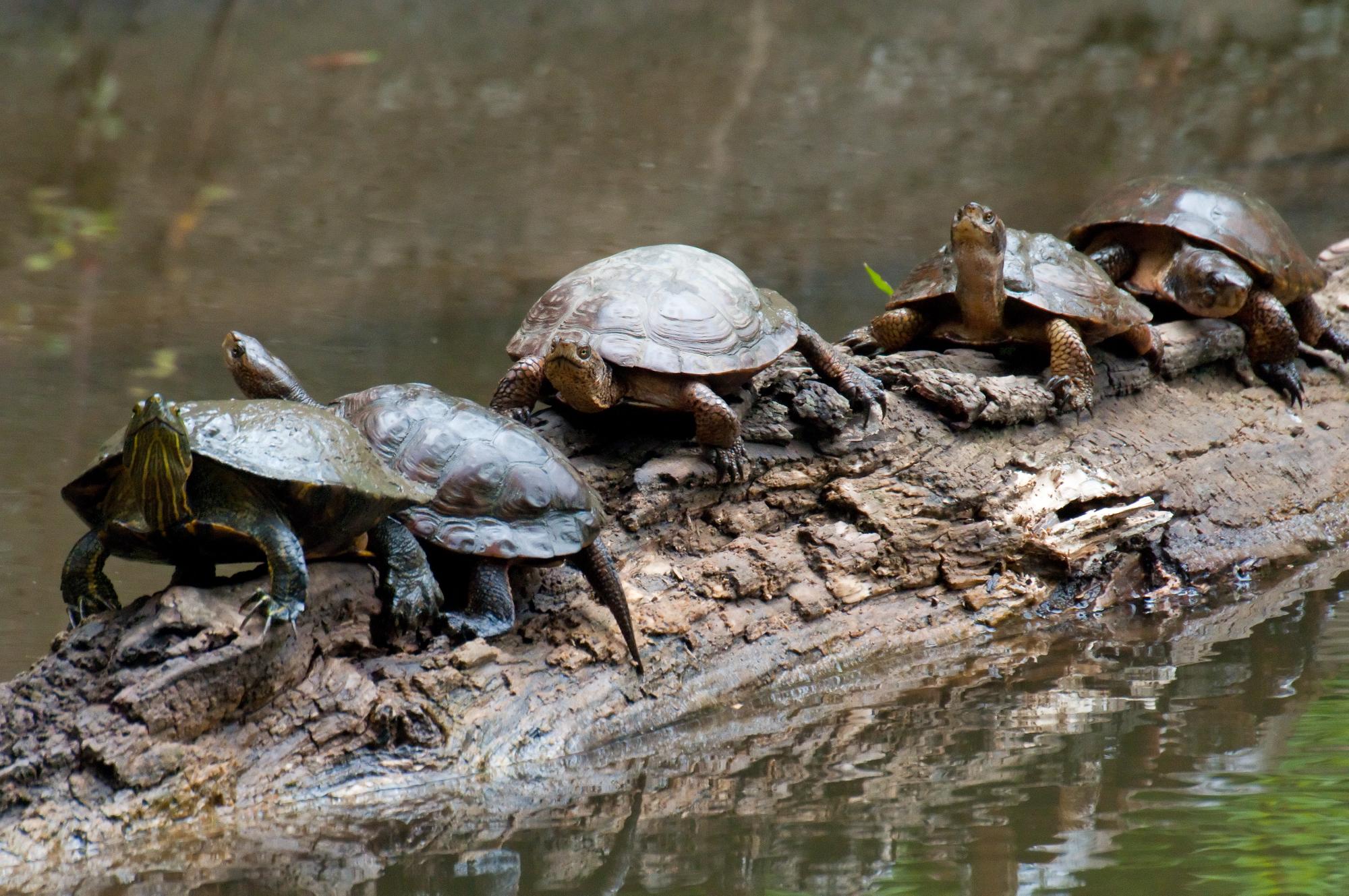
Western Pond Turtles
Red-eared Sliders are an invasive species native to the Southern US. After they became common household pets they started showing up in Western states as well. Released in the wild they were "able to hybridize with native turtles damaging the integrity of the native species and introducing new pathogens to native animals."
Jewel Lake  #Red_Slider
#Red_Slider
Add a comment or report a mistake
|
|
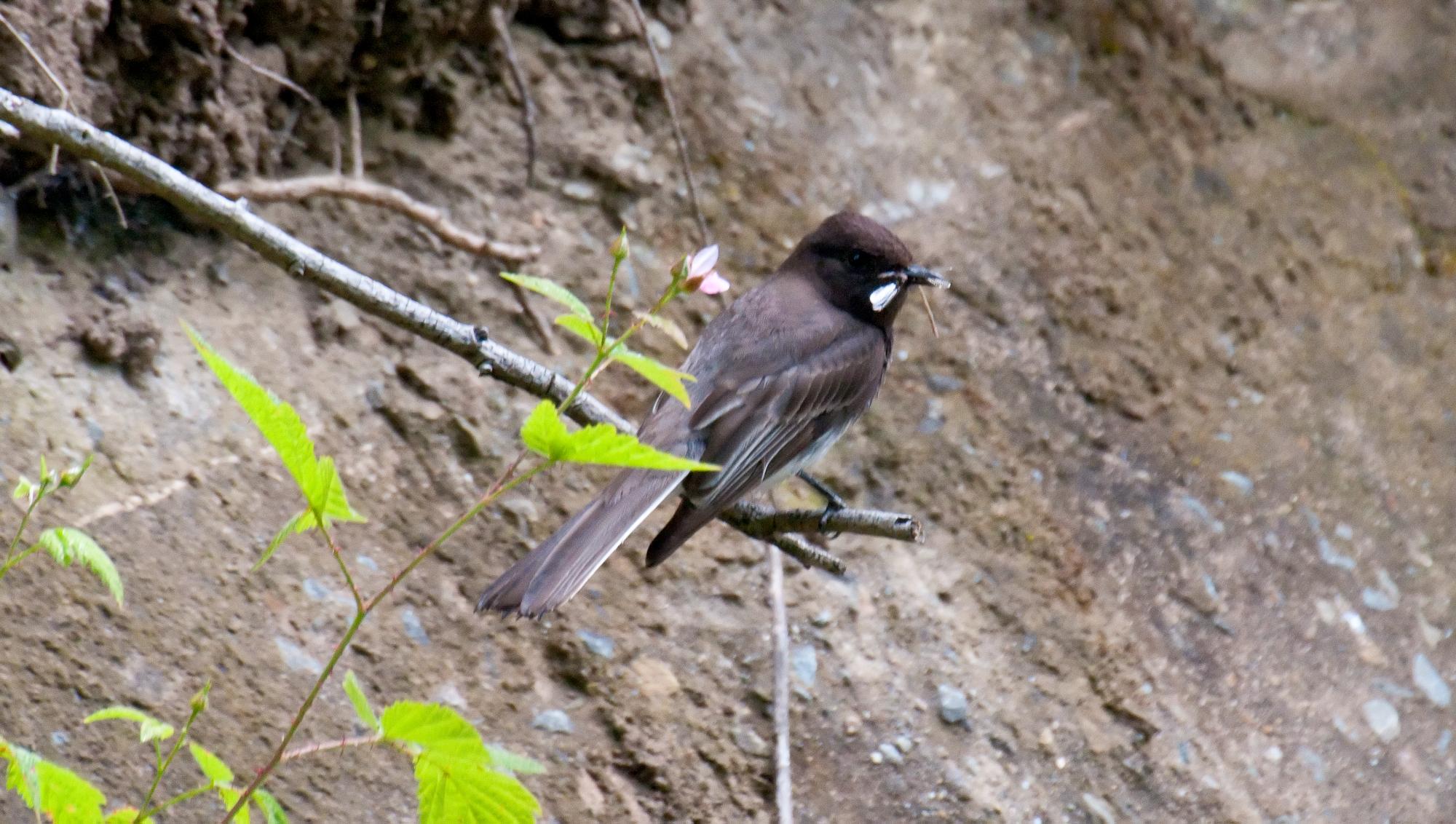 A Black Phoebe about to deliver lunch to it's young.
Jewel Lake  #Delivers_Lunch
#Delivers_Lunch
Add a comment or report a mistake
|
|
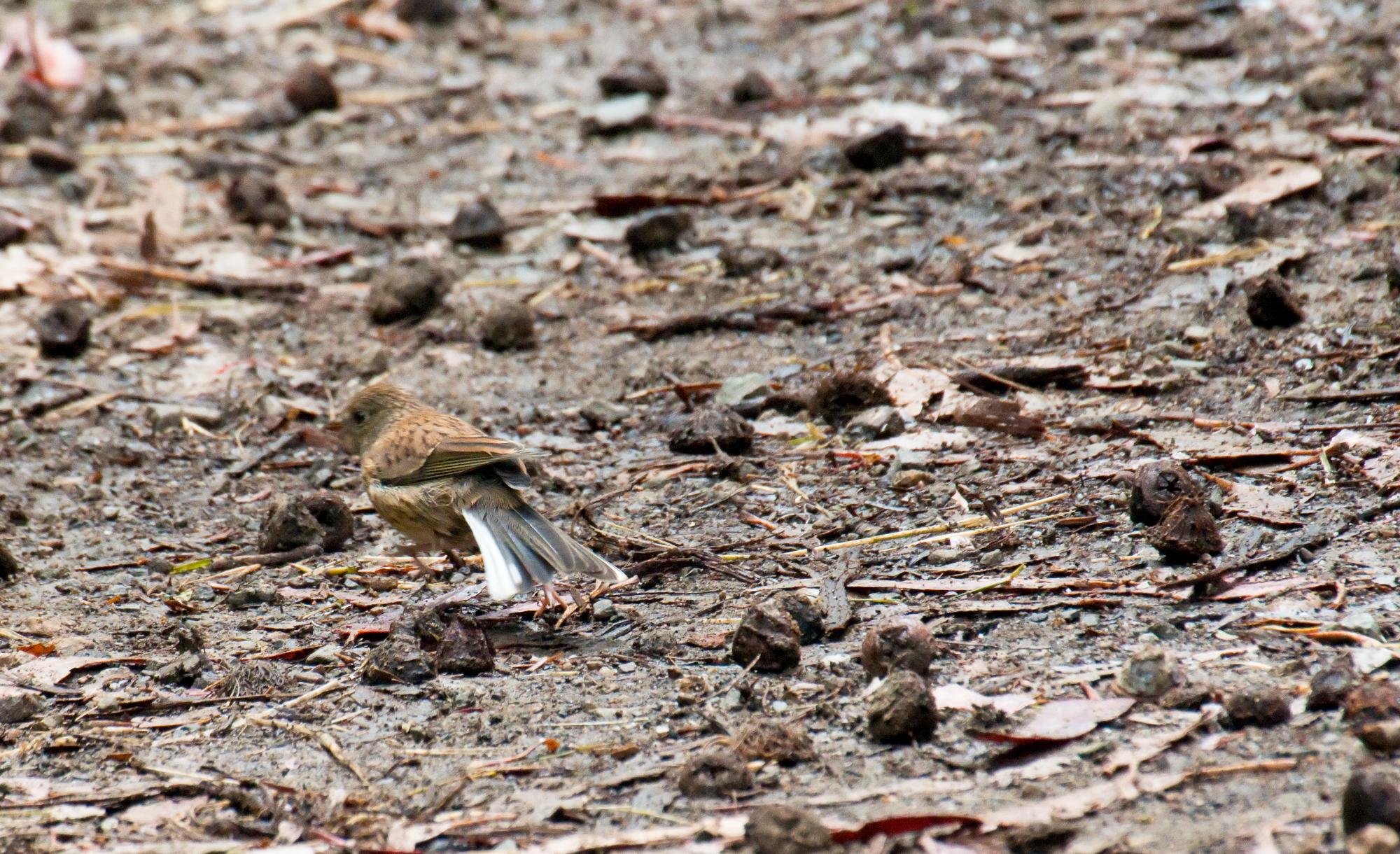
The white markings on the tail of a female Oregon Junco are only visible in flight. Or, in this case, just before take-off.
Jewel Lake  #Tail_Markings
#Tail_Markings
Add a comment or report a mistake
|
|
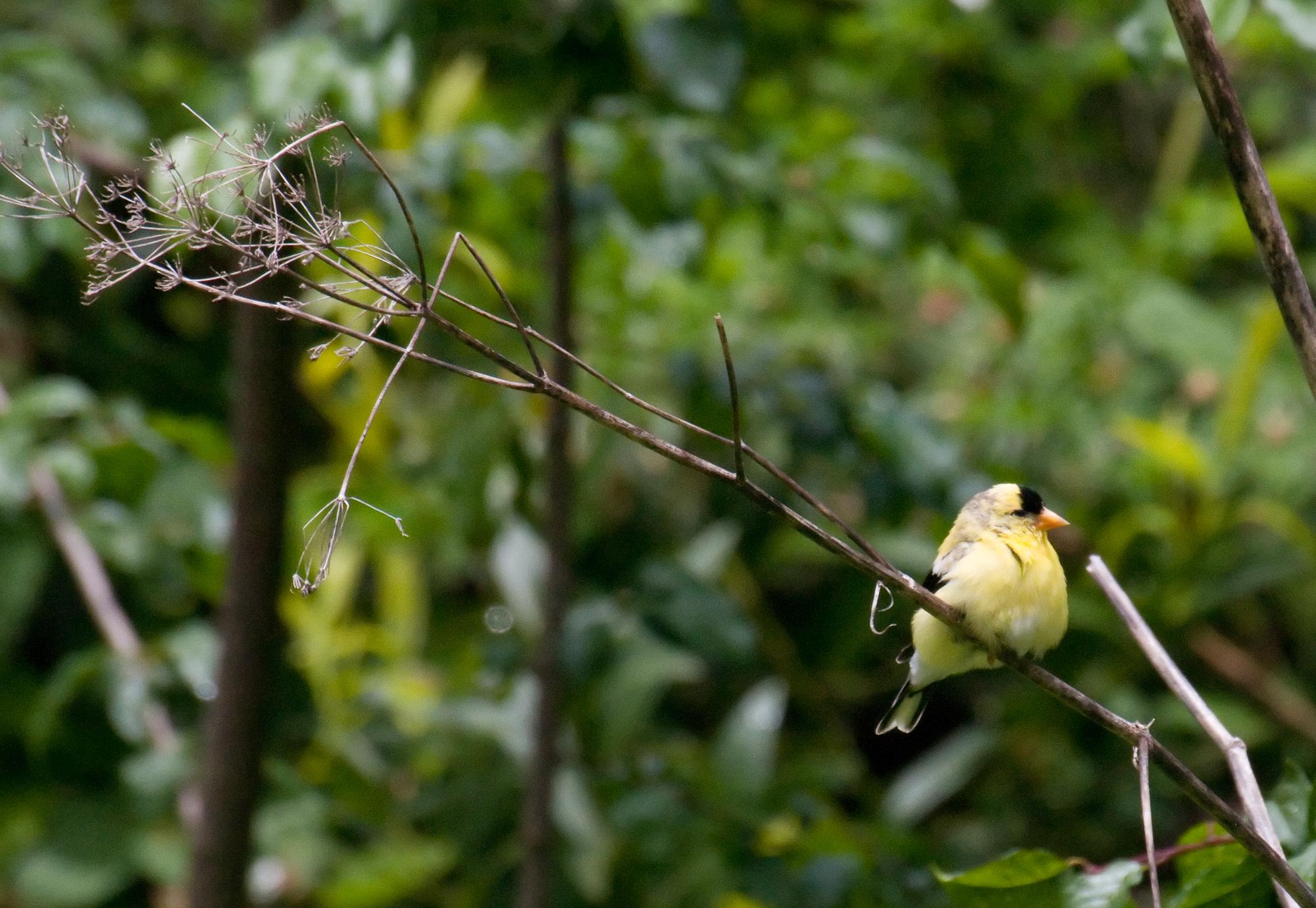
This male goldfinch was in transitional plumage, moving from non-breeding into breeding colors. He also appeared to be molting a bit, as goldfinches do twice a year.
Tilden Park Ponyrides  #Tilden_Park
#Tilden_Park
Add a comment or report a mistake
|
|
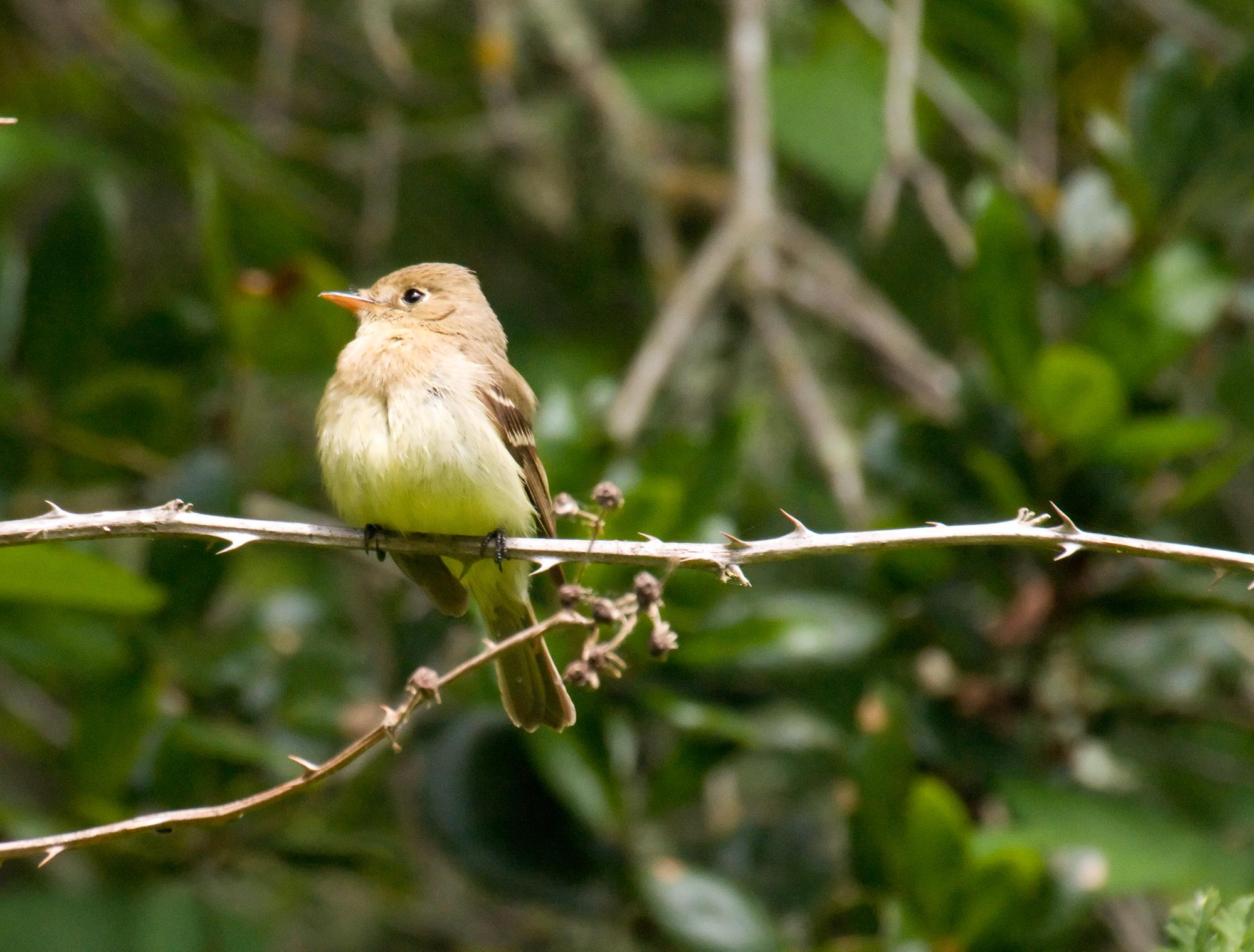
This Pacific-slope Flycatcher
Tilden Park Ponyrides, Berkeley, California • (Photo posted Sunday 11 July, 2010) • (Photo taken 11:27:43 Tuesday 18 May, 2010) • © 2010 Terry Costales  #Tilden_Park
#Tilden_Park
Add a comment or report a mistake
|
|
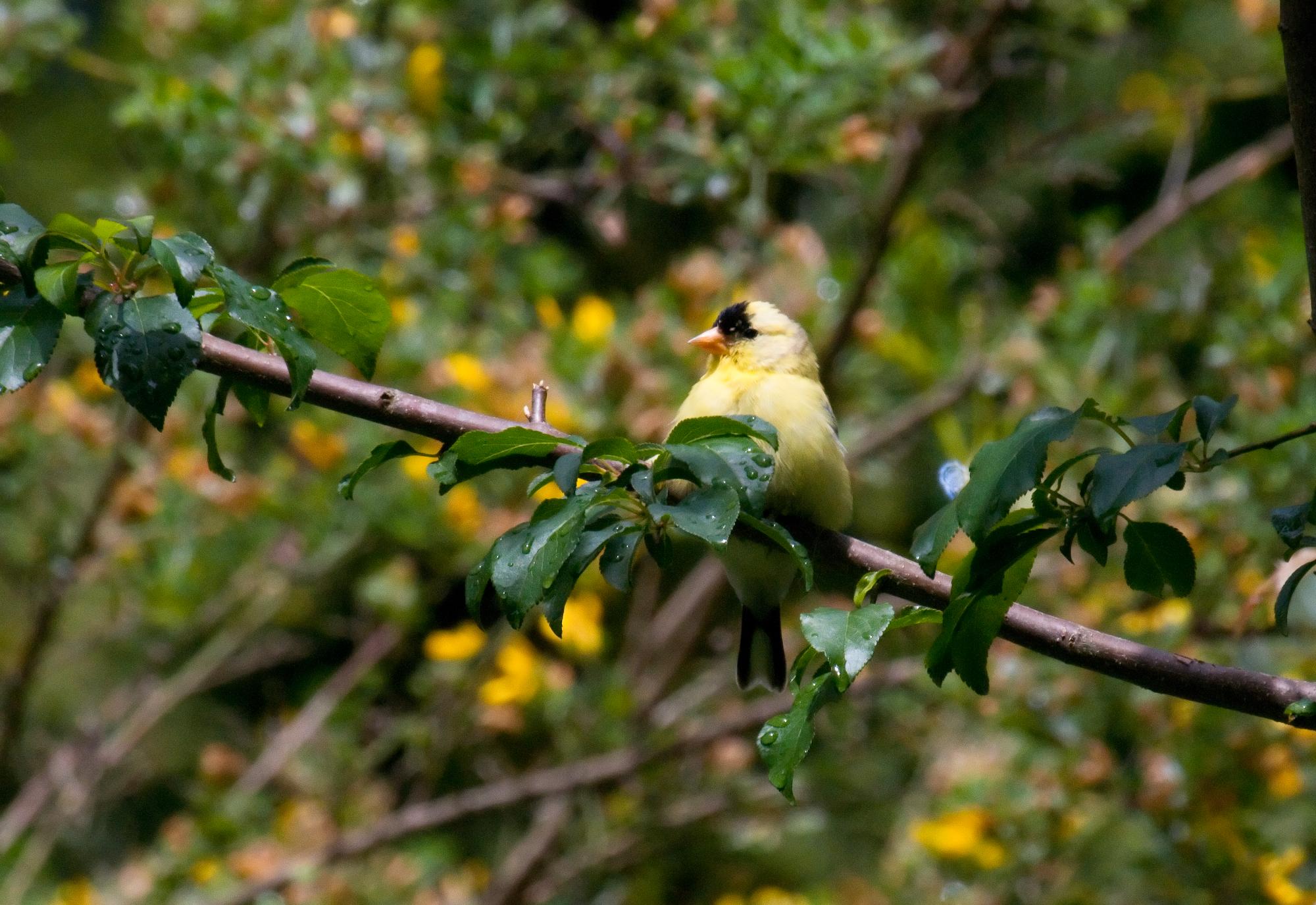 A male American Goldfinch coming into breeding plumage.
Tilden Park Ponyrides  #Tilden_Park
#Tilden_Park
Add a comment or report a mistake
|
|
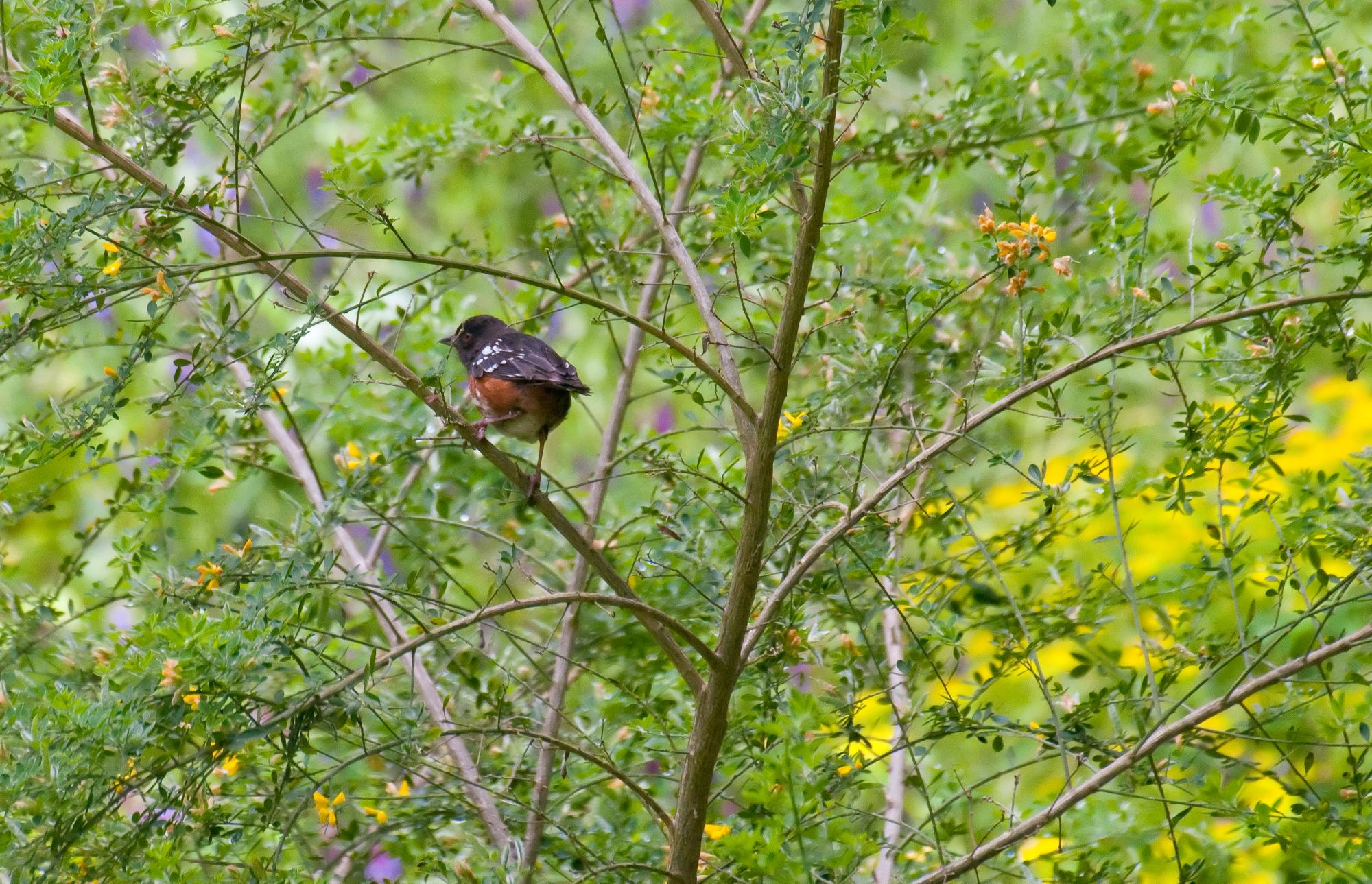
Usually, a spotted towhee is seen in the underbrush. In the spring however, the male spends a great deal of time in the trees singing to attract a mate.
Tilden Park Ponyrides  #Tilden_Park
#Tilden_Park
Add a comment or report a mistake
|
|
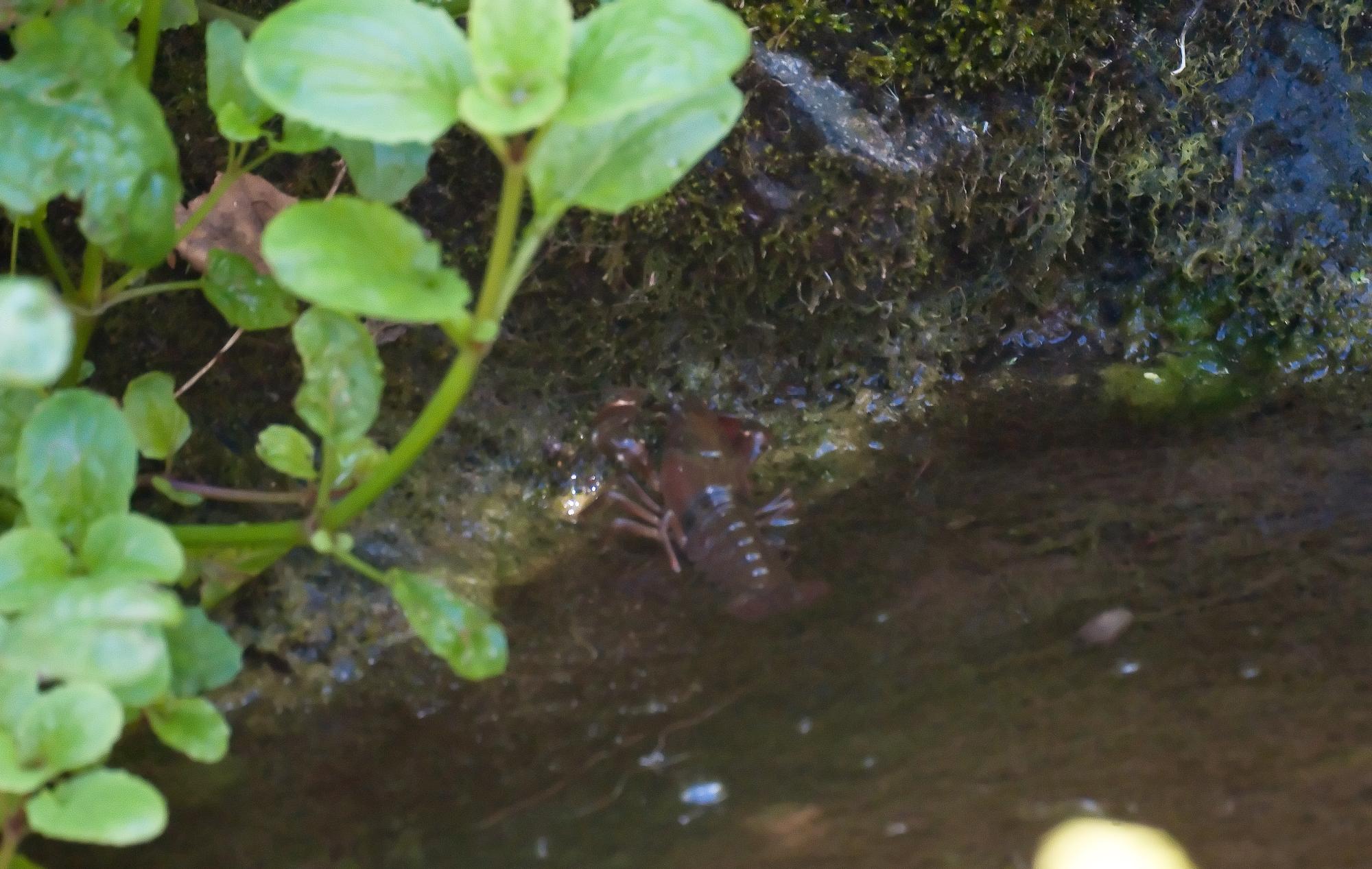
A crayfish was unexpectedly sighted in the Botanical Gardens. When I was a kid we called it a crawdad.
Botanical Gardens, Tilden Park, Berkeley, California • (Photo posted Tuesday 13 July, 2010) • (Photo taken 12:41:42 Tuesday 18, May 2010) • © 2010 Terry Costales  #Botanical_Gardens
#Botanical_Gardens
Add a comment or report a mistake
|
|

As we headed to the car I captured this last glimpse of an Oregon Junco just before he disappeared over the rooftop.
Tilden Botanical Garden, Berkeley, California • (Photo posted Thursday 15 July, 2010) • (Photo taken 12:28:44 Tuesday 18, May 2010) • © 2010 Terry Costales  #Botanical_Gardens
#Botanical_Gardens
Add a comment or report a mistake
|
|
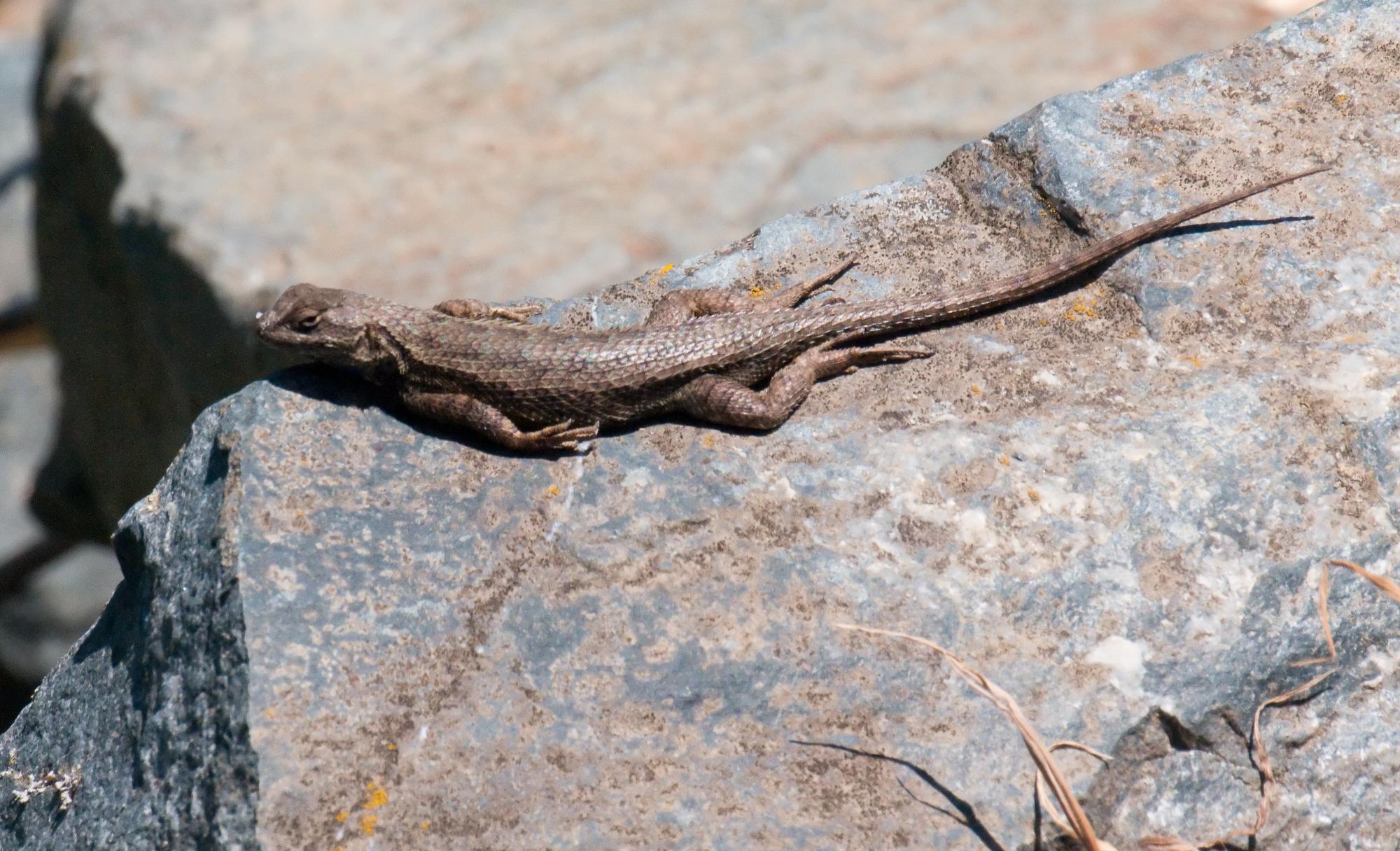
I saw many lizards that day. This one was recharging his "solar batteries". When I was a kid we called this type of lizard a blue-belly.
Sherman Island, California • (Photo posted Friday 16 July, 2010) • (Photo taken 11:13:44 Friday 23 May, 2010) • © 2010 Terry Costales  #Island_CA
#Island_CA
Add a comment or report a mistake
|
|
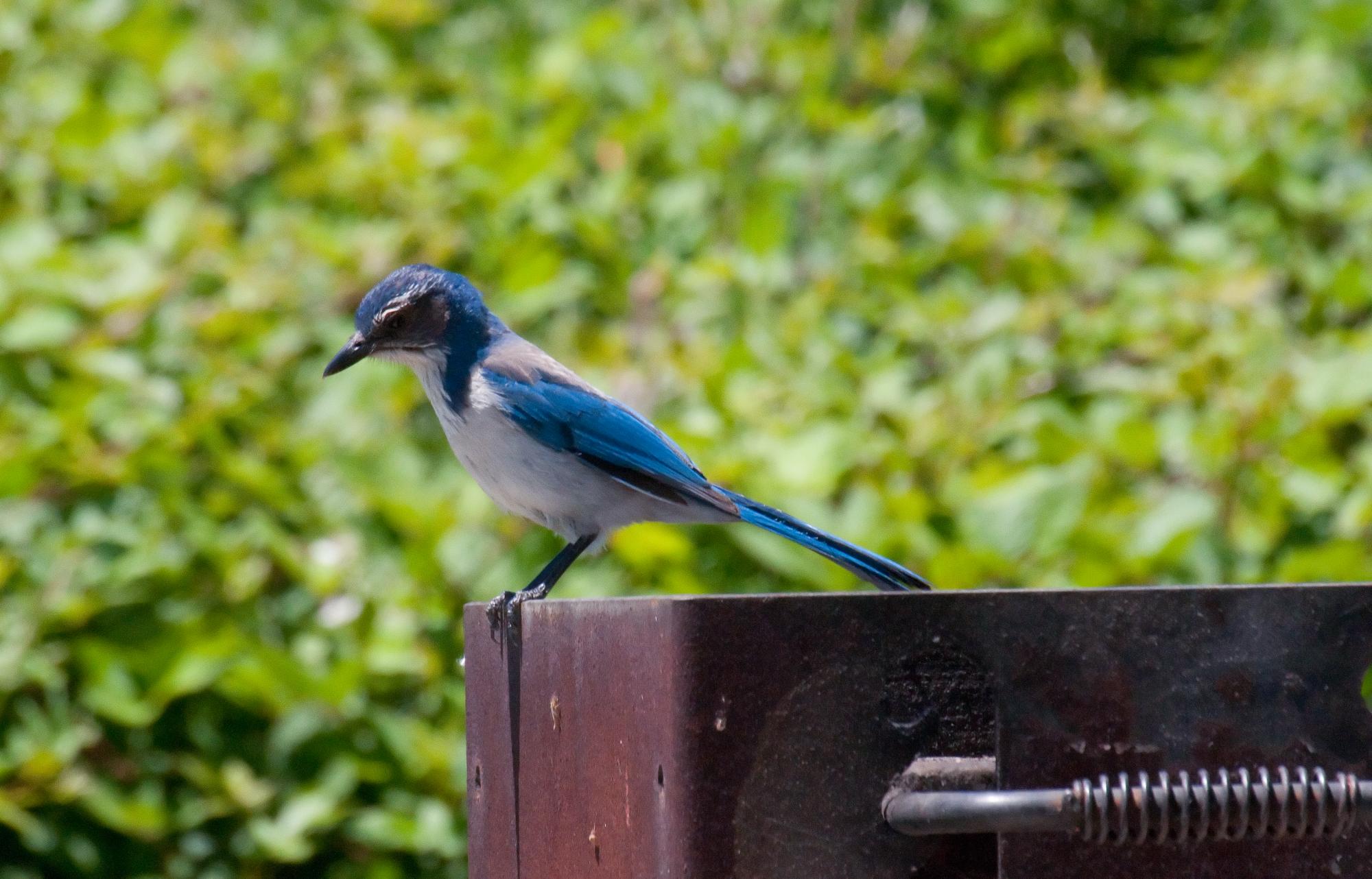
A Scrub Jay on a barbecue searched for food.
Sherman Island, California • (Photo posted Saturday 17 July, 2010) • (Photo taken 11:43:20 Friday 23 May, 2010) • © 2010 Terry Costales  #Island_California
#Island_California
Add a comment or report a mistake
|
|
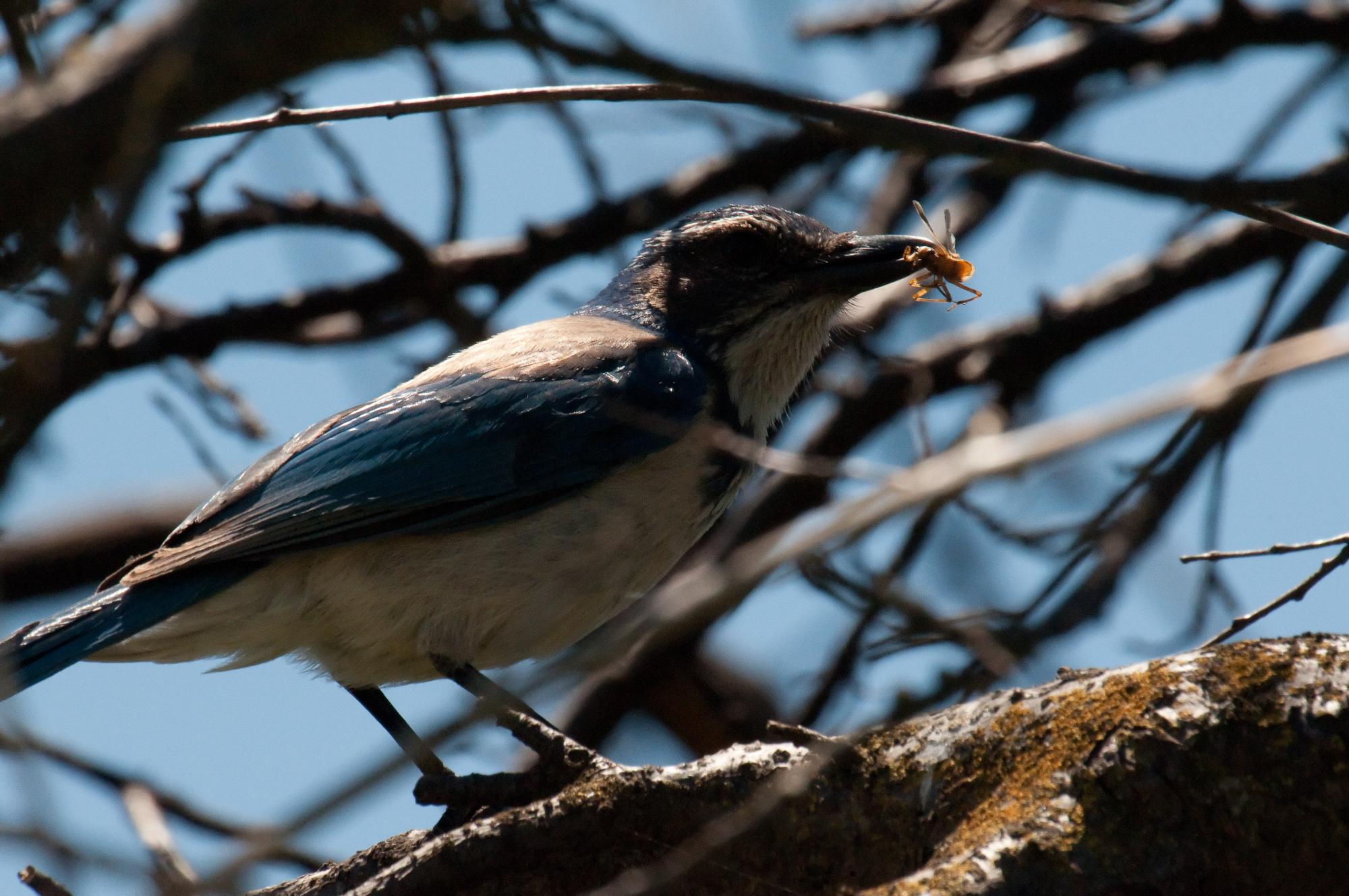 A Scrub Jay in a tree with a very large bug!
Sherman Island, California • (Photo posted Sunday 18 July, 2010) • (Photo taken 11:44:04 Friday 23 May, 2010) • © 2010 Terry Costales  #Island_California
#Island_California
Add a comment or report a mistake
|
|
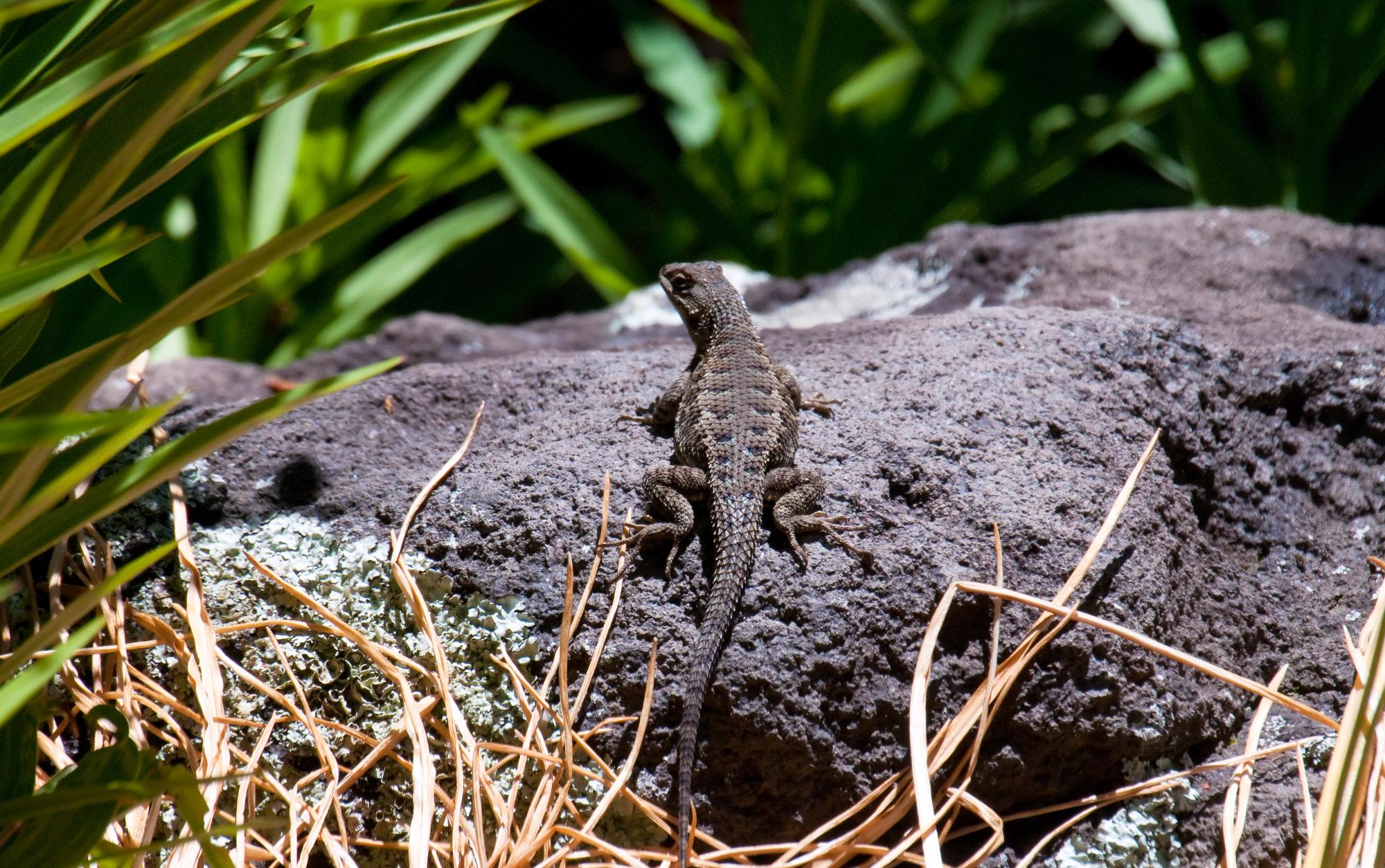
The same type of lizard I saw on Sherman Island
Tilden Park, Berkeley, California • (Photo posted Monday 19 July, 2010) • (Photo taken 12:08:02 Monday 14 June, 2010) • © 2010 Terry Costales  #Tilden_Park
#Tilden_Park
Add a comment or report a mistake
|
|
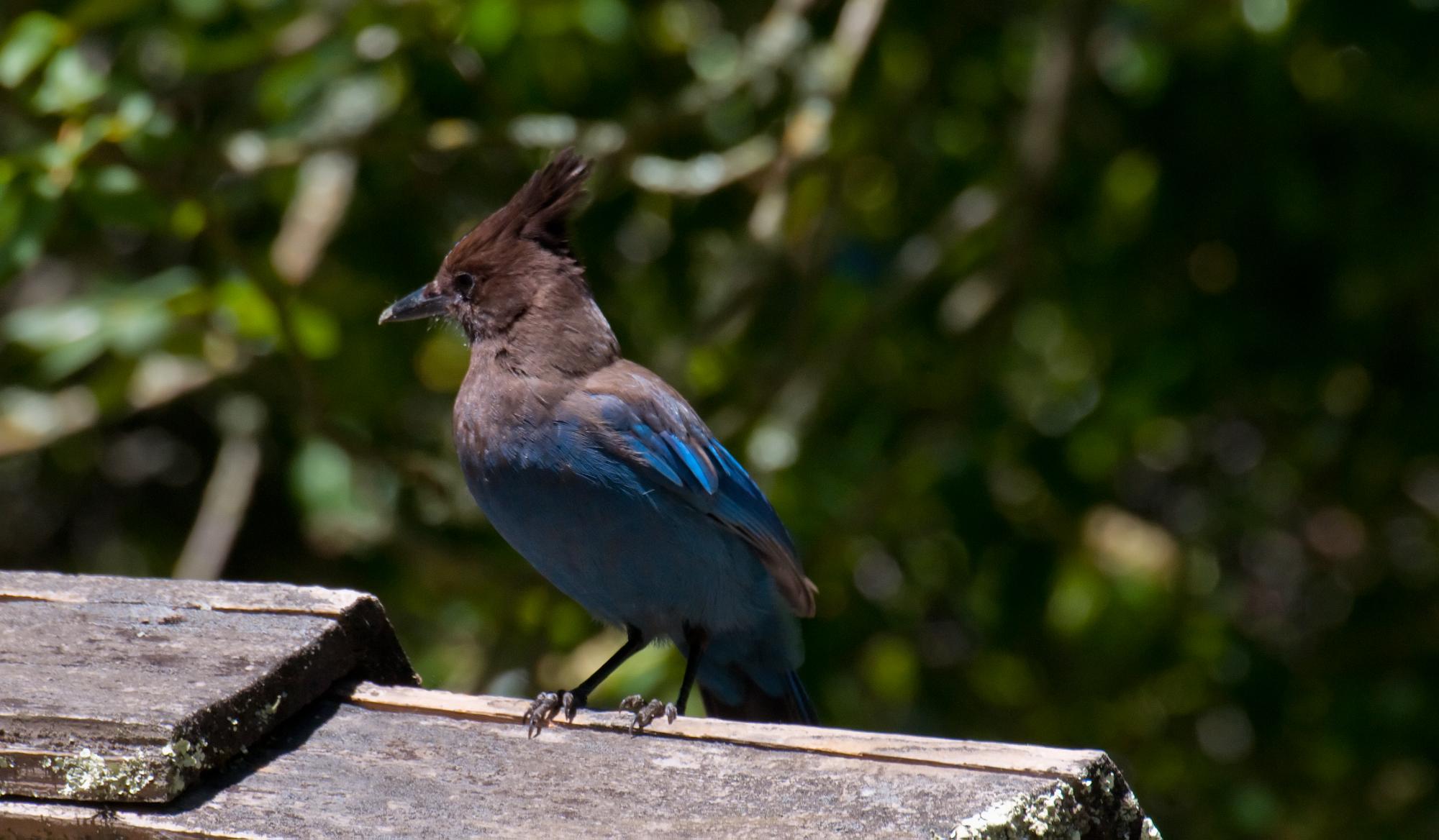
Imagine a charcoal colored bird that landed in a birdbath filled with indigo-blue Easter Egg dye.
That's the Stellar's Jay. But in bright sunlight, the normally charcoal top
of the Stellar's Jay appears brown.
Tilden Park, Berkeley, California • (Photo posted Wednesday 21 July, 2010) • (Photo taken 13:33:51 Monday 14 June, 2010) • © 2010 Terry Costales  #Charcoal_Top
#Charcoal_Top
Add a comment or report a mistake
|
|
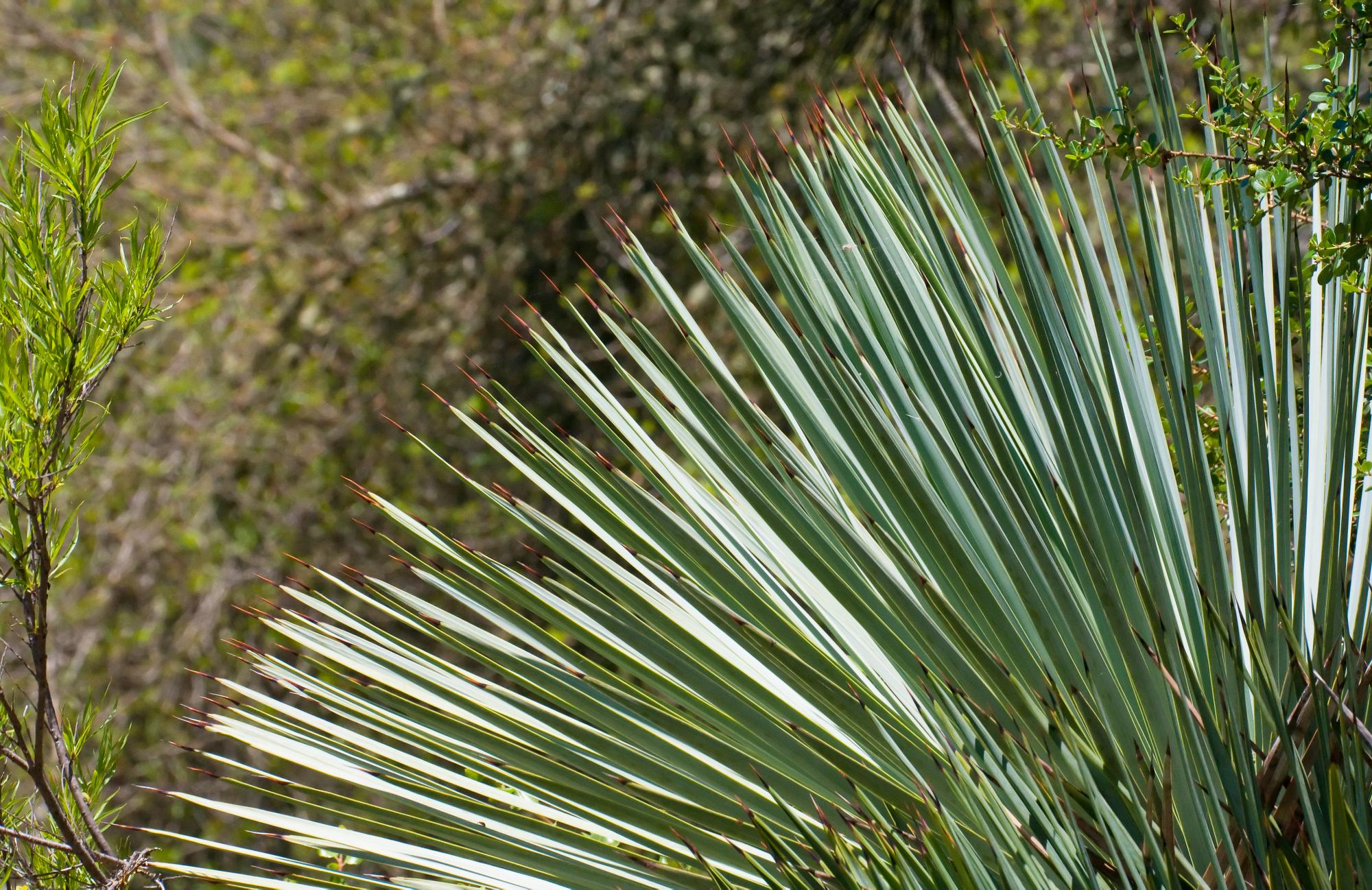
This dramatically spiny yucca plant was found just inside the gate.
Botanical Garden, Tilden Park, Berkeley, California • (Photo posted Thursday 22 July, 2010) • (Photo taken 13:33:51 Monday 14 June, 2010) • © 2010 Terry Costales  #Botanical_Garden
#Botanical_Garden
Add a comment or report a mistake
|
|
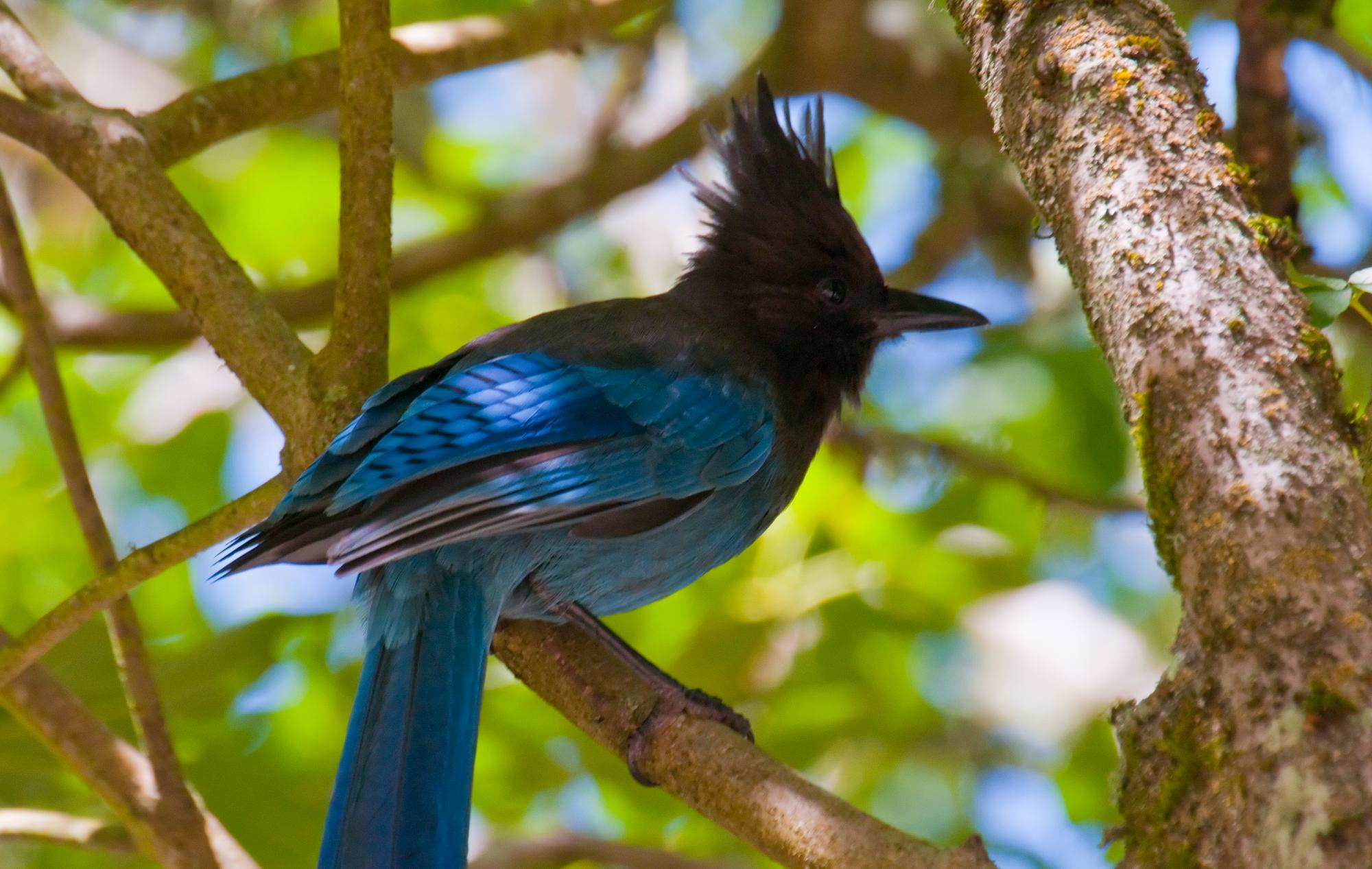 Is the Stellar's Jay a blue bird with a charcoal top or a charcoal bird with a blue bottom?
Tilden Park, Berkeley, California • (Photo posted Friday 23 July, 2010) • (Photo taken 13:36:11 Monday 14 June, 2010) • © 2010 Terry Costales  #On_Branch
#On_Branch
Add a comment or report a mistake
|
|
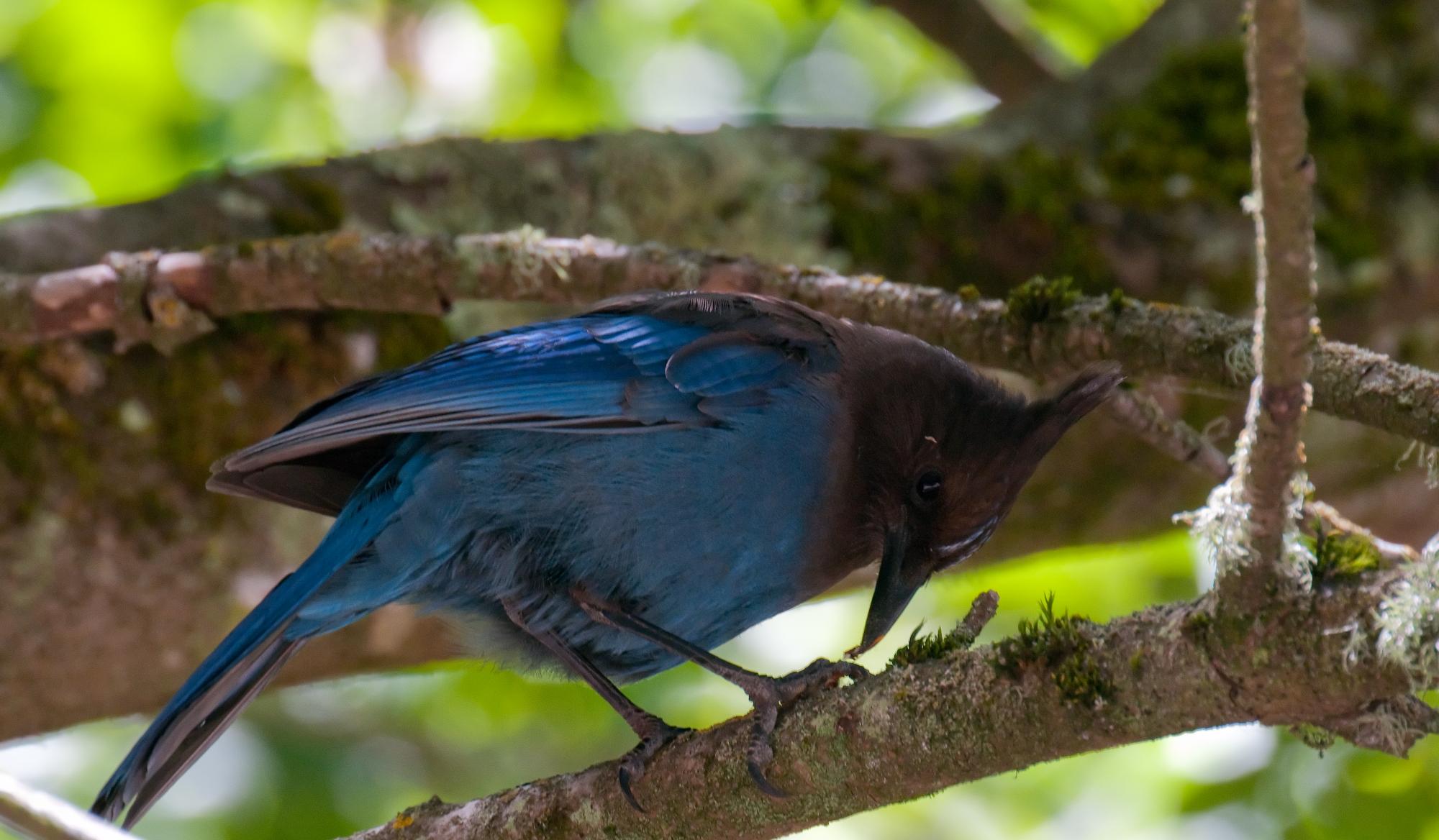 This Stellar's Jay held down a butterfly and pulled off it's wing's. Naughty bird.
Tilden Park, Berkeley, California • (Photo posted Monday 26 July, 2010) • (Photo taken 13:37:20 Monday 14 June, 2010) • © 2010 Terry Costales  #With_Butterfly
#With_Butterfly
Add a comment or report a mistake
|
|
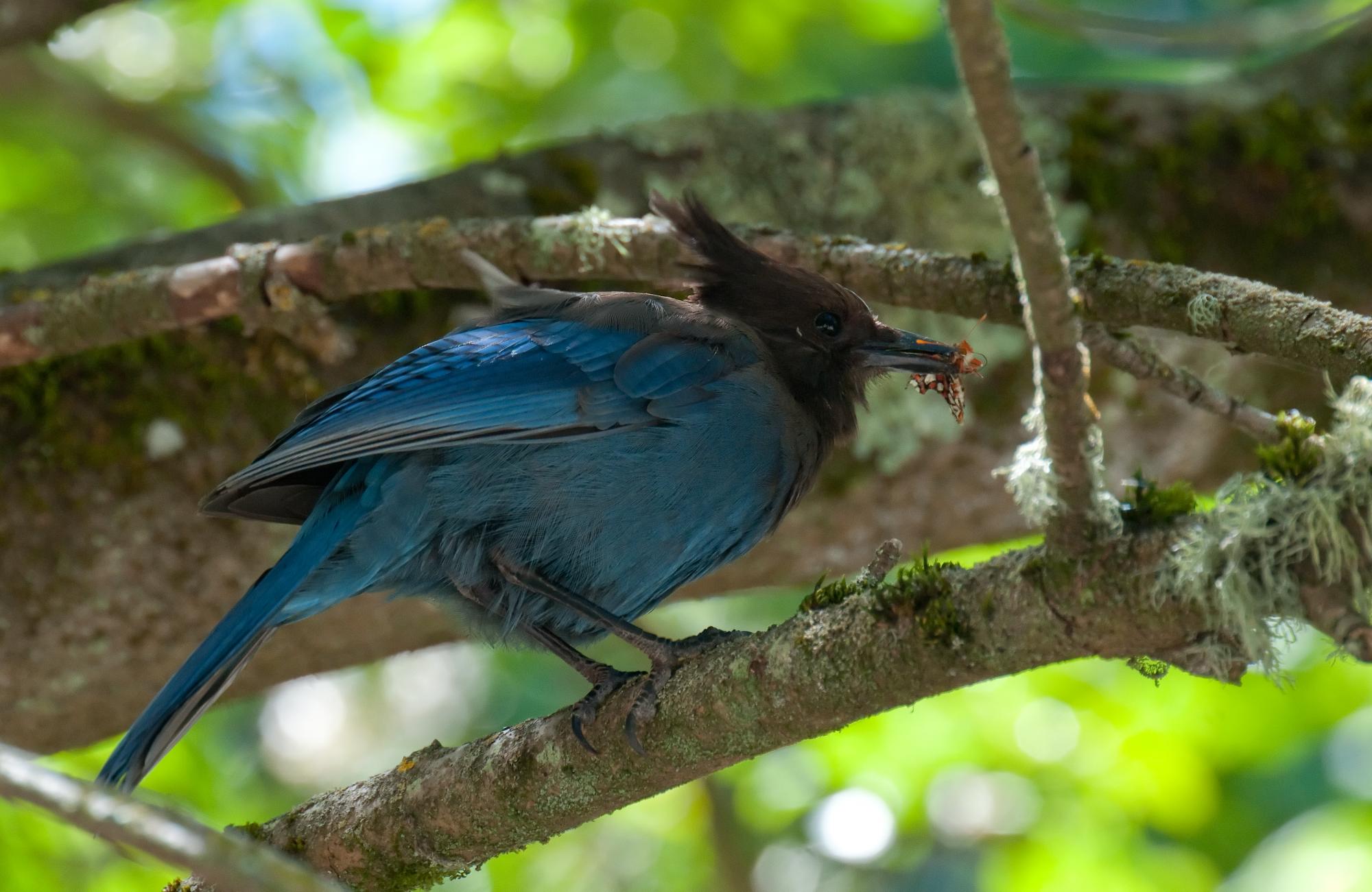 Pretty butterflies are often the food for pretty birds.
Tilden Park, Berkeley, California • (Photo posted Tuesday 27 July, 2010) • (Photo taken 13:37:35 Monday 14 June, 2010) • © 2010 Terry Costales  #As_Food
#As_Food
Add a comment or report a mistake
|
|
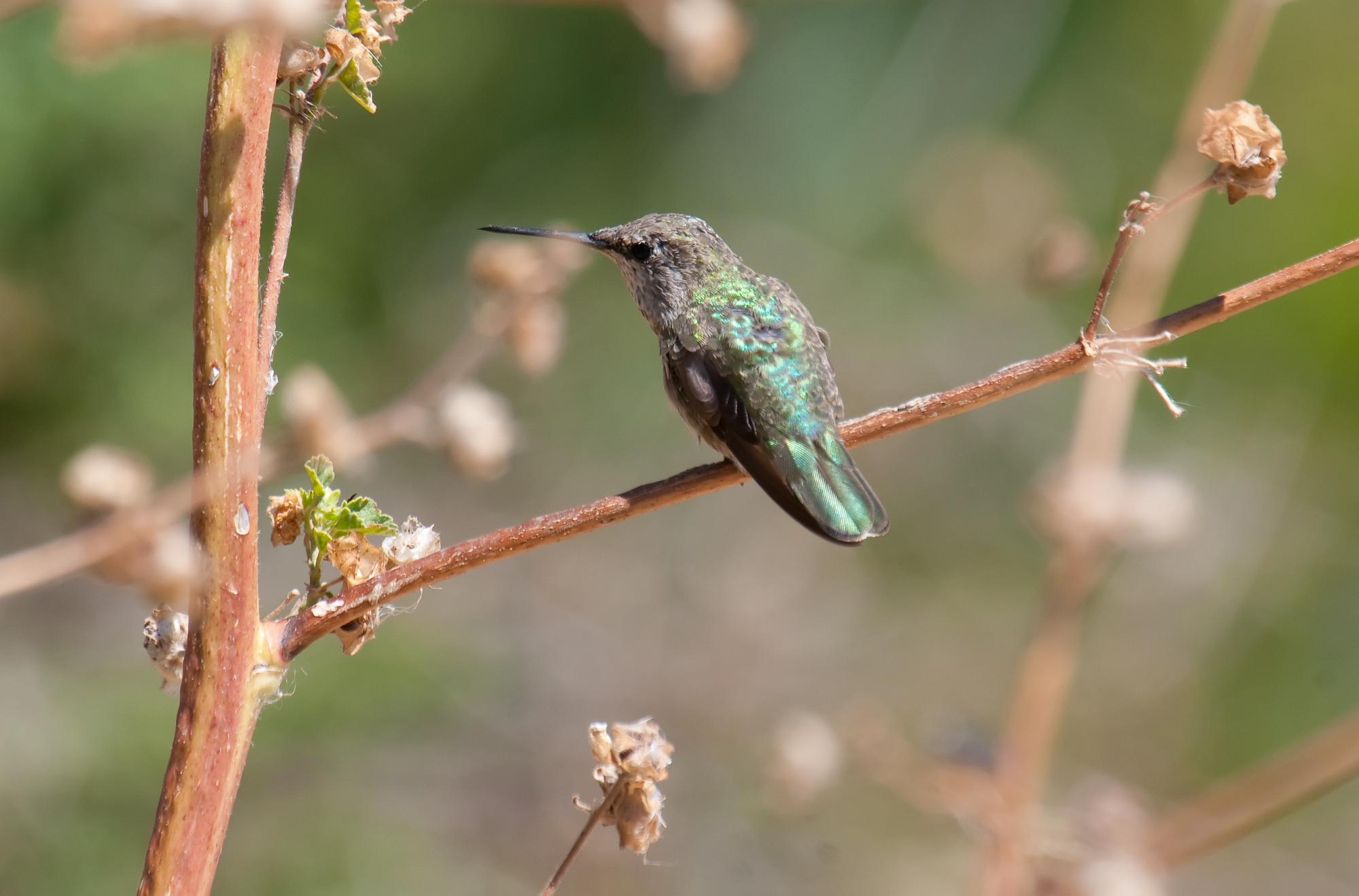
A female Anna's Hummingbird sat quite still on a dried twig. For a moment.
Bay Point Trail, Bay Point, California • (Photo posted Wednesday 28 July, 2010) • (Photo taken 11:18:06 Sunday 25 July, 2010) • © 2010 Terry Costales  #Remained_Still
#Remained_Still
Add a comment or report a mistake
|
|
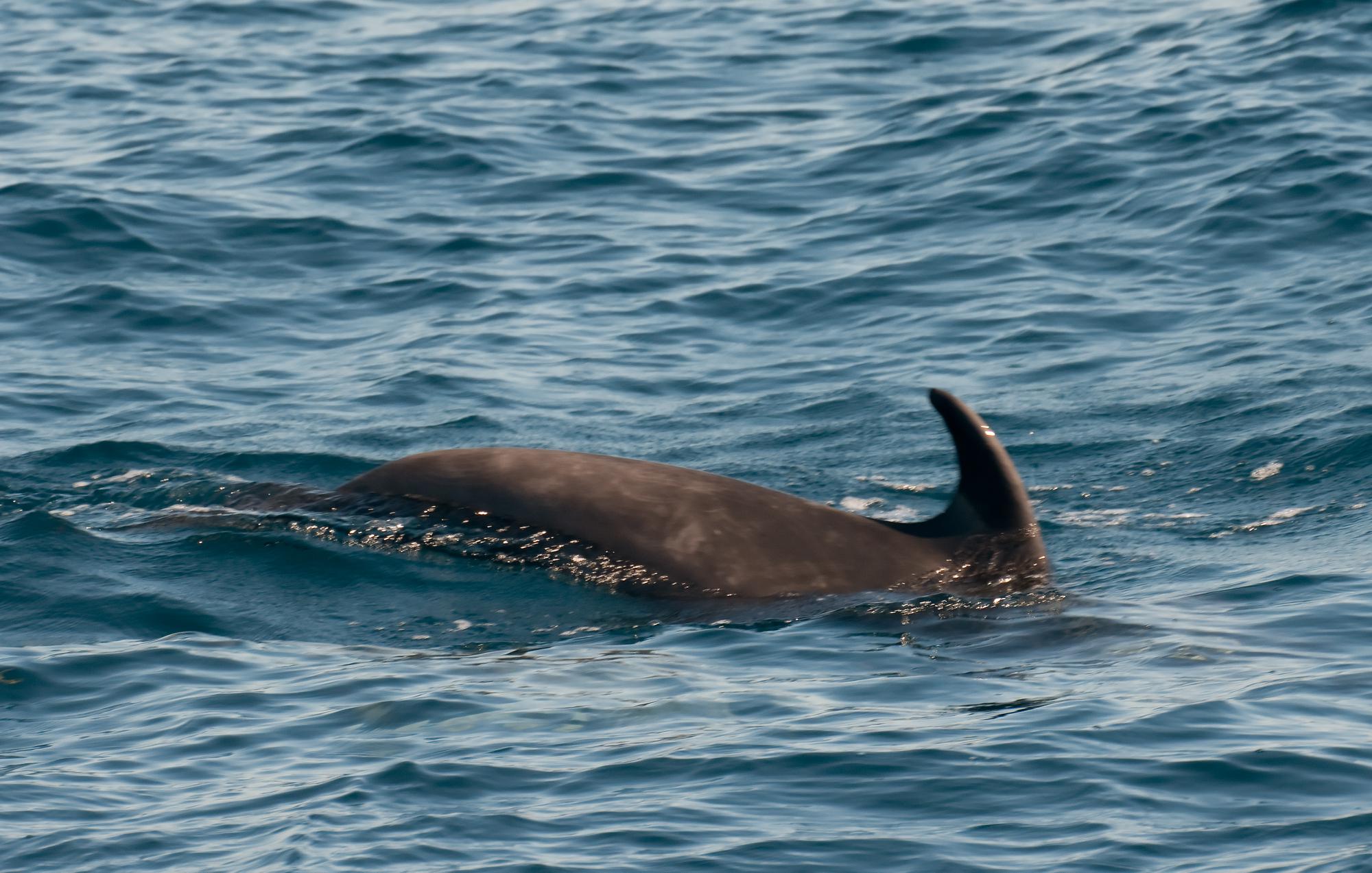 We encountered a pod of Bottlenose Dolphins on our return from a cruise around part of Anacapa Island in the Santa Barbara Channel . Some were leaping ahead and to the side of us while others raced with us.
I was not able to get many usable photographs. The dolphins were so very fast and you never know where they will appear. The ones racing alongside the boat were amazing, but I didn't have the equipment to film them. Here is a link to bow riding dolphins that shows exactly what I saw: Seeing the dolphins was an unforgettable experience. Santa Barbara Channel, California • (Photo posted Saturday 30 October, 2010) • (Photo taken 12:05:25 Friday 8 October, 2010) • © 2010 Terry Costales 
#20101030.jpg Add a comment or report a mistake
|
|
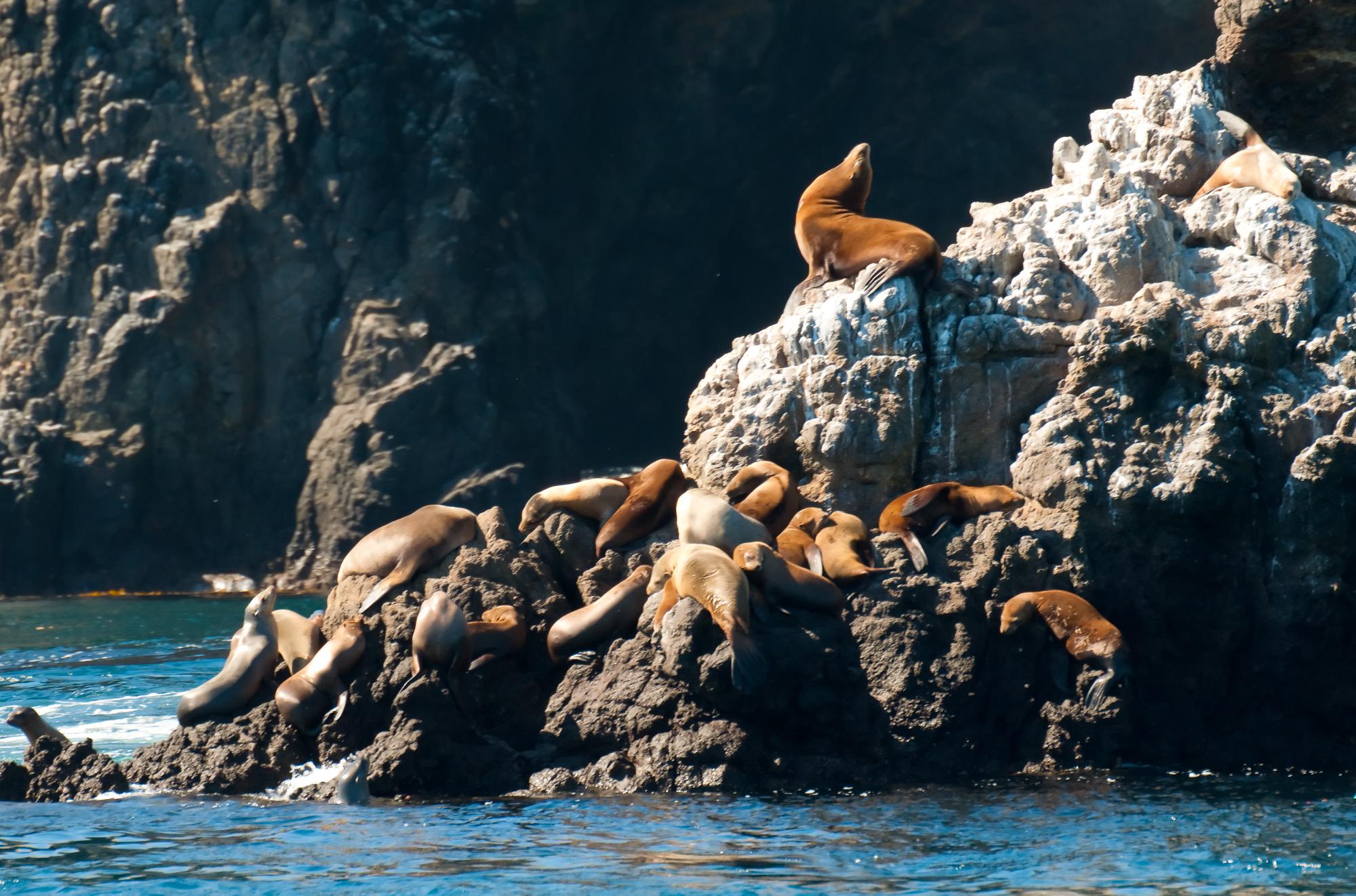
There are hundreds of sea lions on Anacapa Island.
Anacapa Island, Santa Barbara Channel, California • (Photo posted Sunday 31 October, 2010) • (Photo taken 11:25:59 Friday 8 October, 2010) • © 2010 Terry Costales 
#20101031.jpg Add a comment or report a mistake
|
|
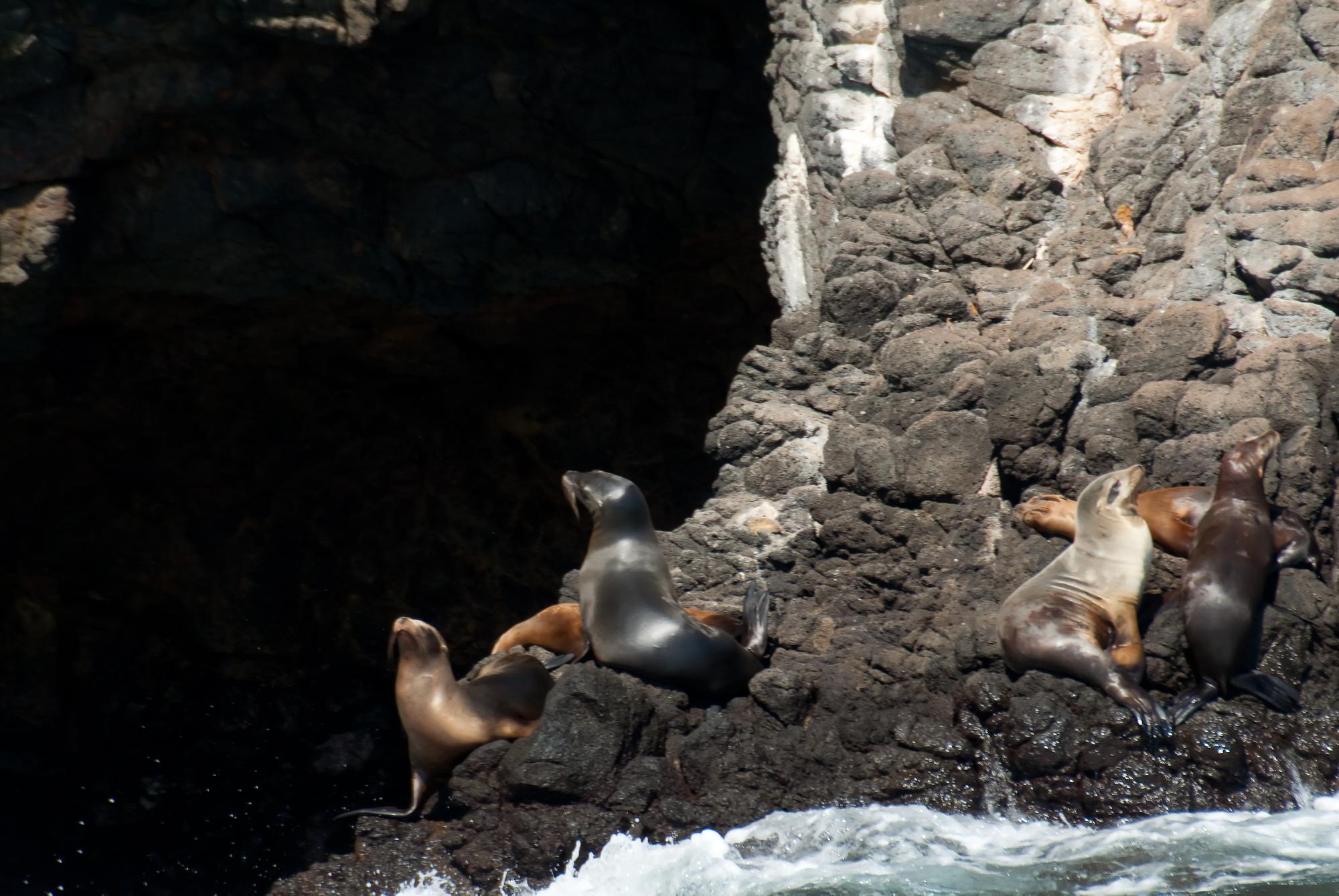 These sea lions looked great on the rocks next to the opening of a sea cave.
Anacapa Island, Santa Barbara Channel, California • (Photo posted Sunday 31 October, 2010) • (Photo taken 11:25:59 Friday 8 October, 2010) • © 2010 Terry Costales 
#20101101.jpg Add a comment or report a mistake
|
|
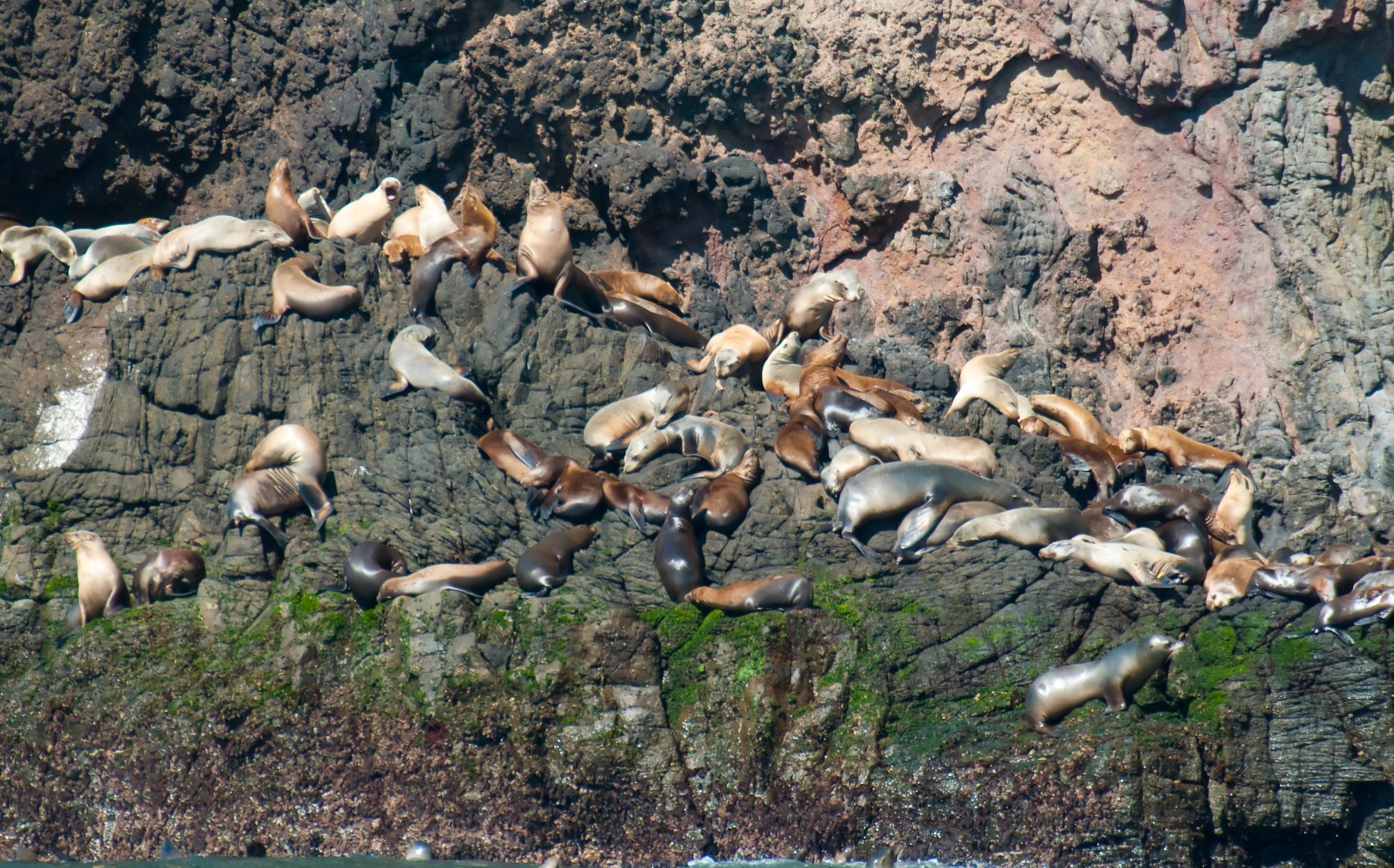
Seeing a large colony of sea lions in the wild is very different than seeing them in a manmade setting like Pier 39.
Anacapa Island, Santa Barbara Channel, California • (Photo posted Wednesday 3 November, 2010) • (Photo taken 11:35:33 Friday 8 October, 2010) • © 2010 Terry Costales 
#20101103.jpg Add a comment or report a mistake
|
|
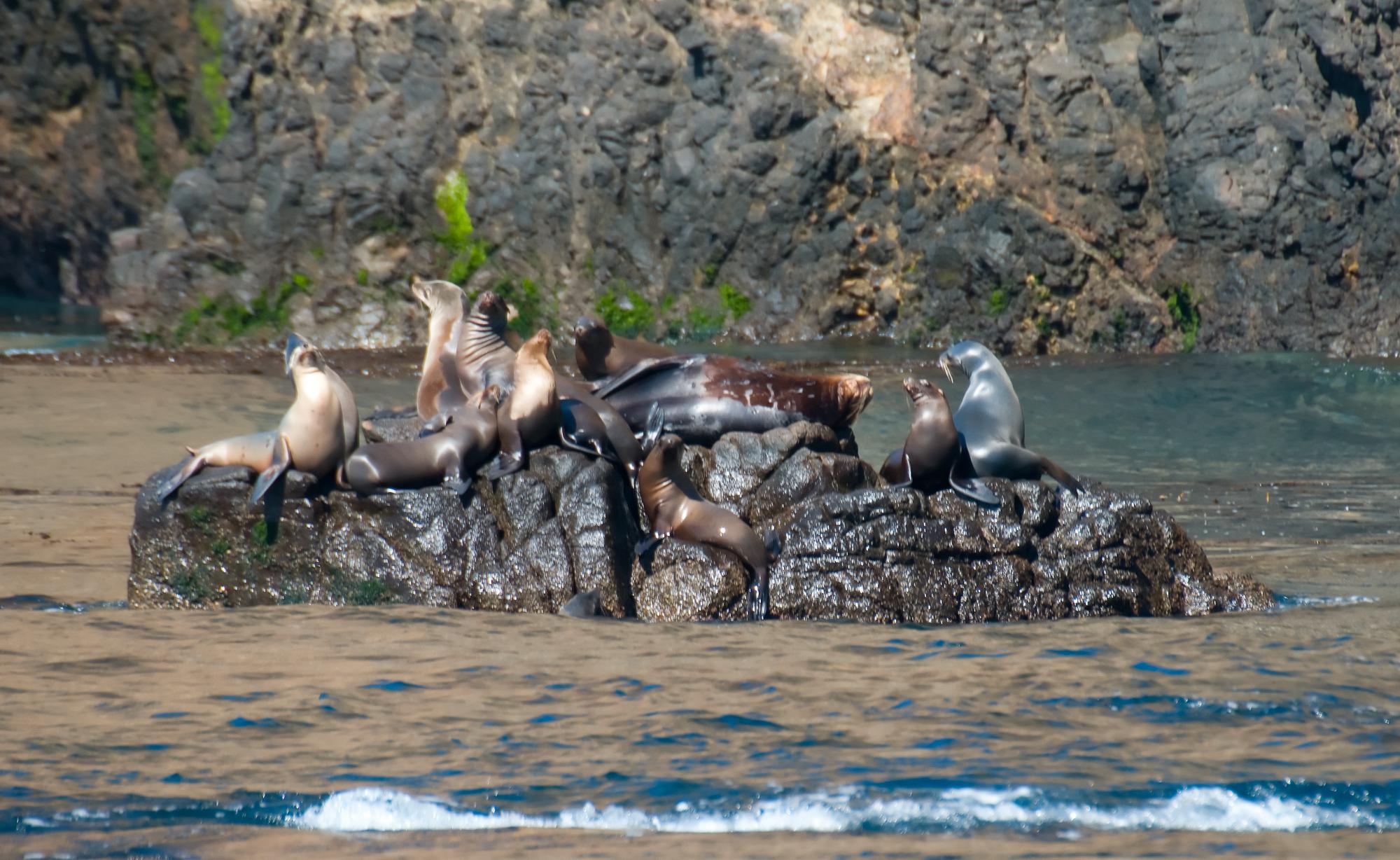 A small harem of sea lions on their private island.
Anacapa Island, Santa Barbara Channel, California • (Photo posted Thursday 4 November, 2010) • (Photo taken 11:31:24 Friday 8 October, 2010) • © 2010 Terry Costales 
#20101104.jpg Add a comment or report a mistake
|
|
 This bedraggled juvenile black-crowned night heron was perched on the dock near the boat we were going to use. I hoped it wasn't a harbinger of how our trip would turn out.
Oxnard, California • (Photo posted Monday 8 November, 2010) • (Photo taken 09:21:08 Friday 8 October, 2010) • © 2010 Terry Costales 
#20101108.jpg Add a comment or report a mistake
|
|
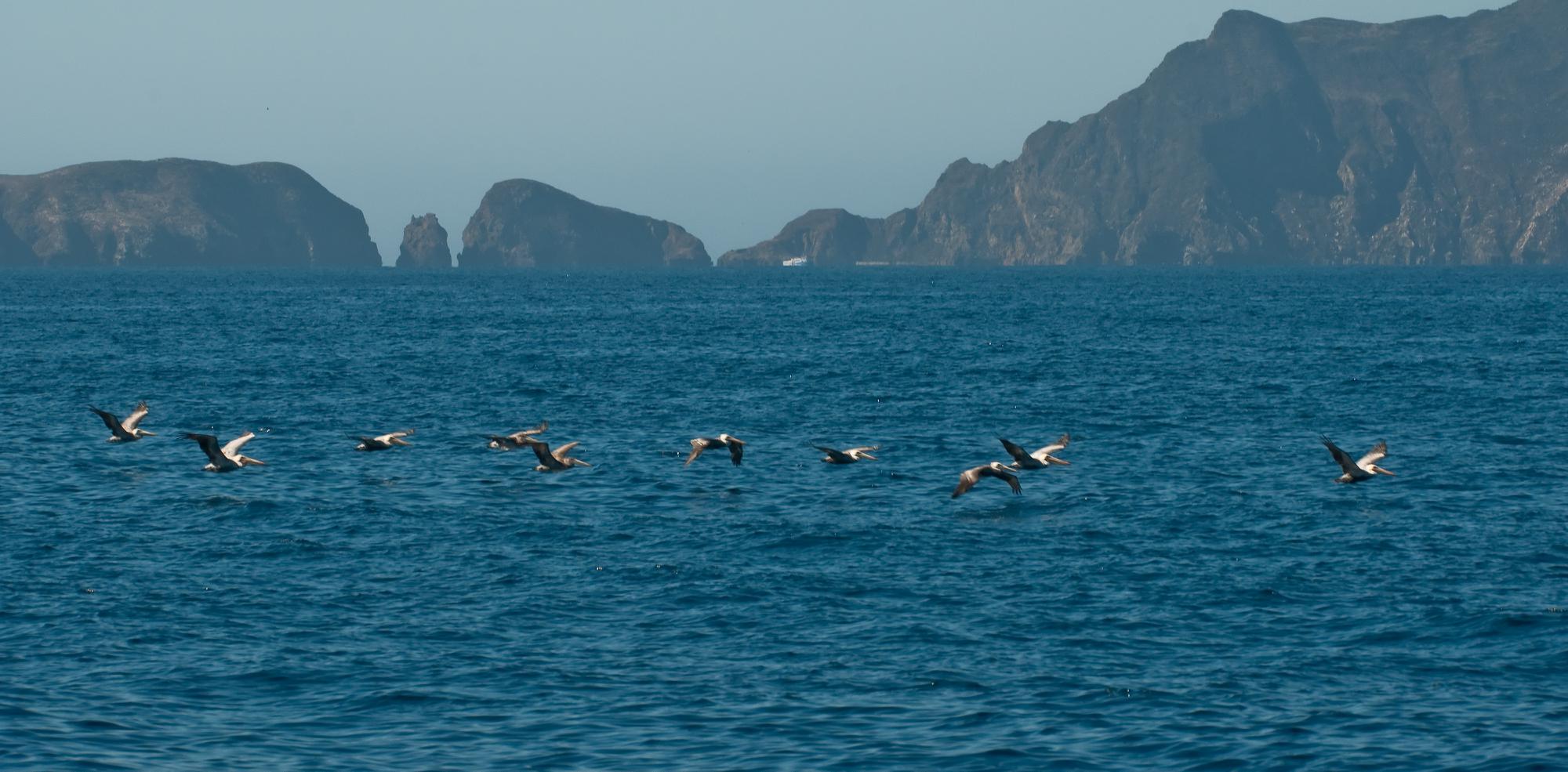 A flock of pelicans flying in typical formation with Anacapa island in the background.
Anacapa Island, California • (Photo posted Tuesday 9 November, 2010) • (Photo taken 10:32:36 Friday 8 October, 2010) • © 2010 Terry Costales 
#20101109.jpg Add a comment or report a mistake
|
|
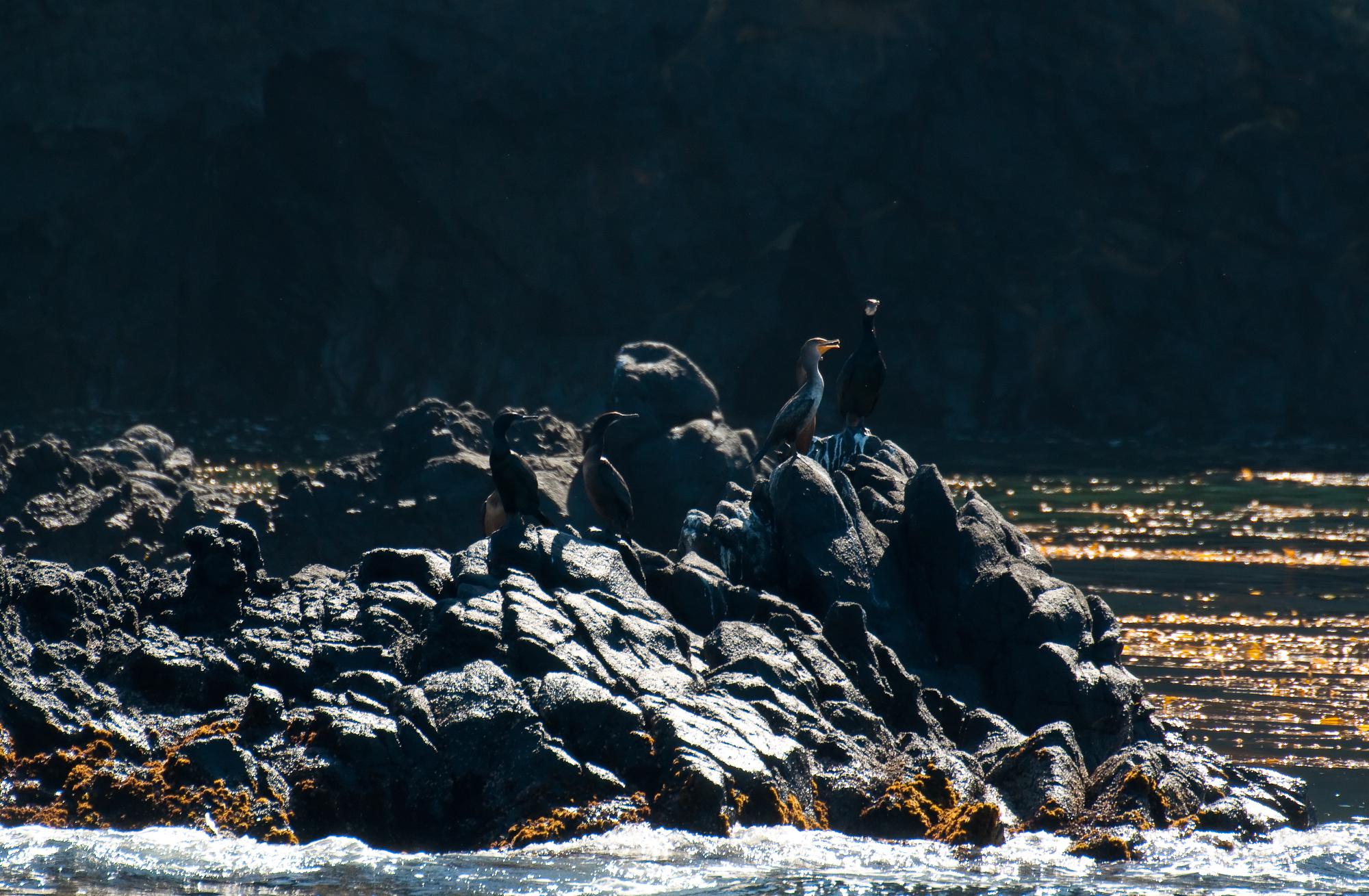 Close to Anacapa there were scores of seabirds and the light was lovely.
Anacapa Island, Santa Barbara Channel, California • (Photo posted Wednesday 10 November, 2010) < (Photo taken 11:11:38 Friday 8 October, 2010) • © 2010 Terry Costales 
#20101110.jpg Add a comment or report a mistake
|
|
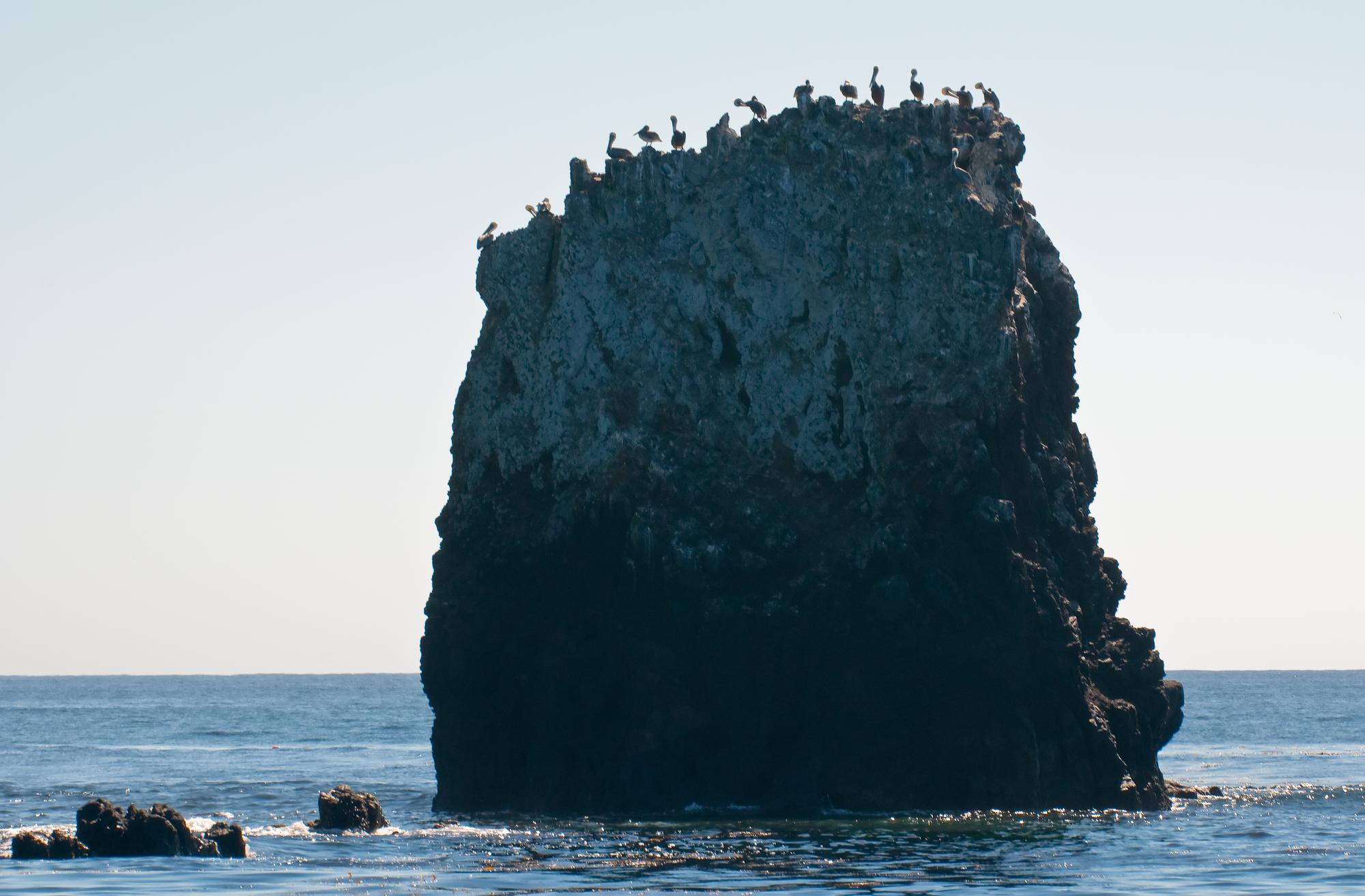 The rocks surrounding Anacapa Island are dramatic and favored by pelicans.
Anacapa Island, California • (Photo posted Thursday 11 November, 2010) • (Photo taken 11:13:03 Friday 8 October, 2010) • © 2010 Terry Costales 
#20101111.jpg Add a comment or report a mistake
|
|
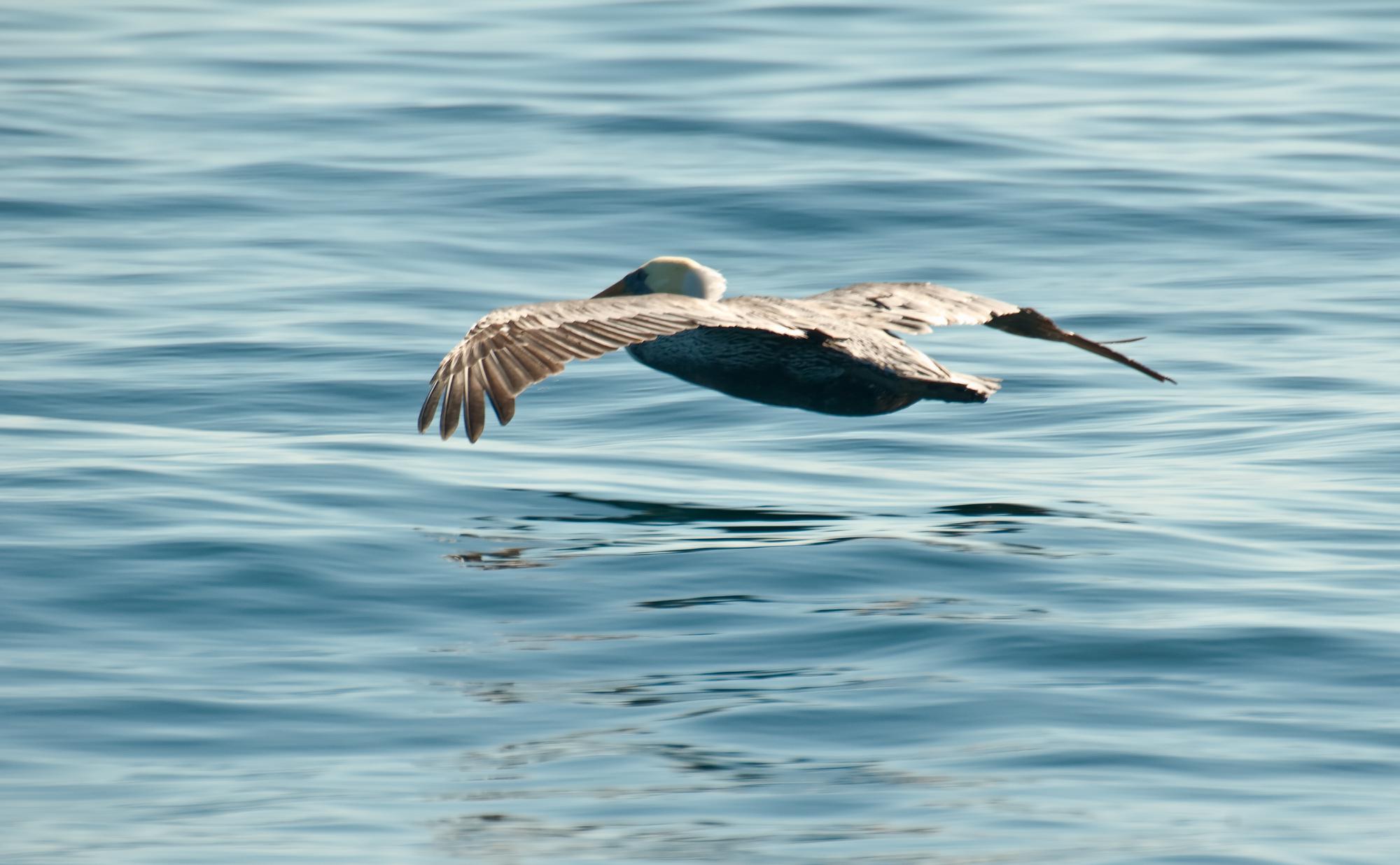 The pelican glides effortlessly over the surface of the sea.
Anacapa Island, California • (Photo posted Saturday 13 November, 2010) • (Photo taken 11:12:27 Friday 8 October, 2010) • © 2010 Terry Costales 
#20101113.jpg Add a comment or report a mistake
|
|
 This wall of pelicans was only a small sampling of the hundreds on the island.
Anacapa Island, California (Photo posted Sunday 14 November, 2010) • (Photo taken 11:15:19 Friday 8 October, 2010) • © 2010 Terry Costales  #Anacapa_Island
#Anacapa_Island
Add a comment or report a mistake
|
|
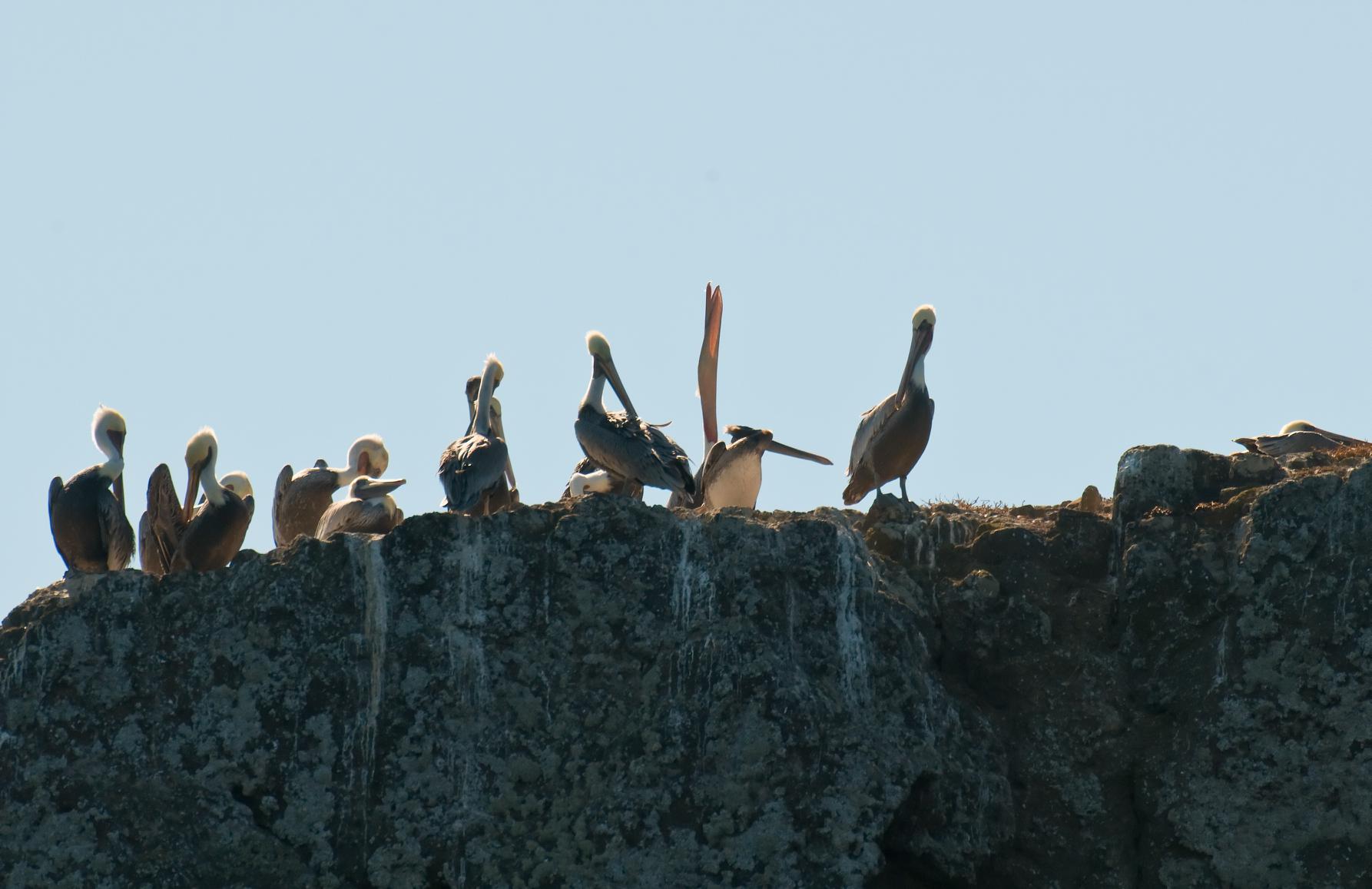 Pelicans sunned themselves high atop a large rock cliff.
Anacapa Island, California • (Photo posted Wednesday 17 November, 2010) • (Photo taken 11:19:27 Friday 8 October, 2010) • © 2010 Terry Costales  #Anacapa_Island
#Anacapa_Island
Add a comment or report a mistake
|
|
 A closer look at pelicans on the cliff face.
Anacapa Island, California • (Photo posted Sunday 21 November, 2010) • (Photo taken 11:21:16 Friday 8 October, 2010) • © 2010 Terry Costales  #Closer_View
#Closer_View
Add a comment or report a mistake
|
|
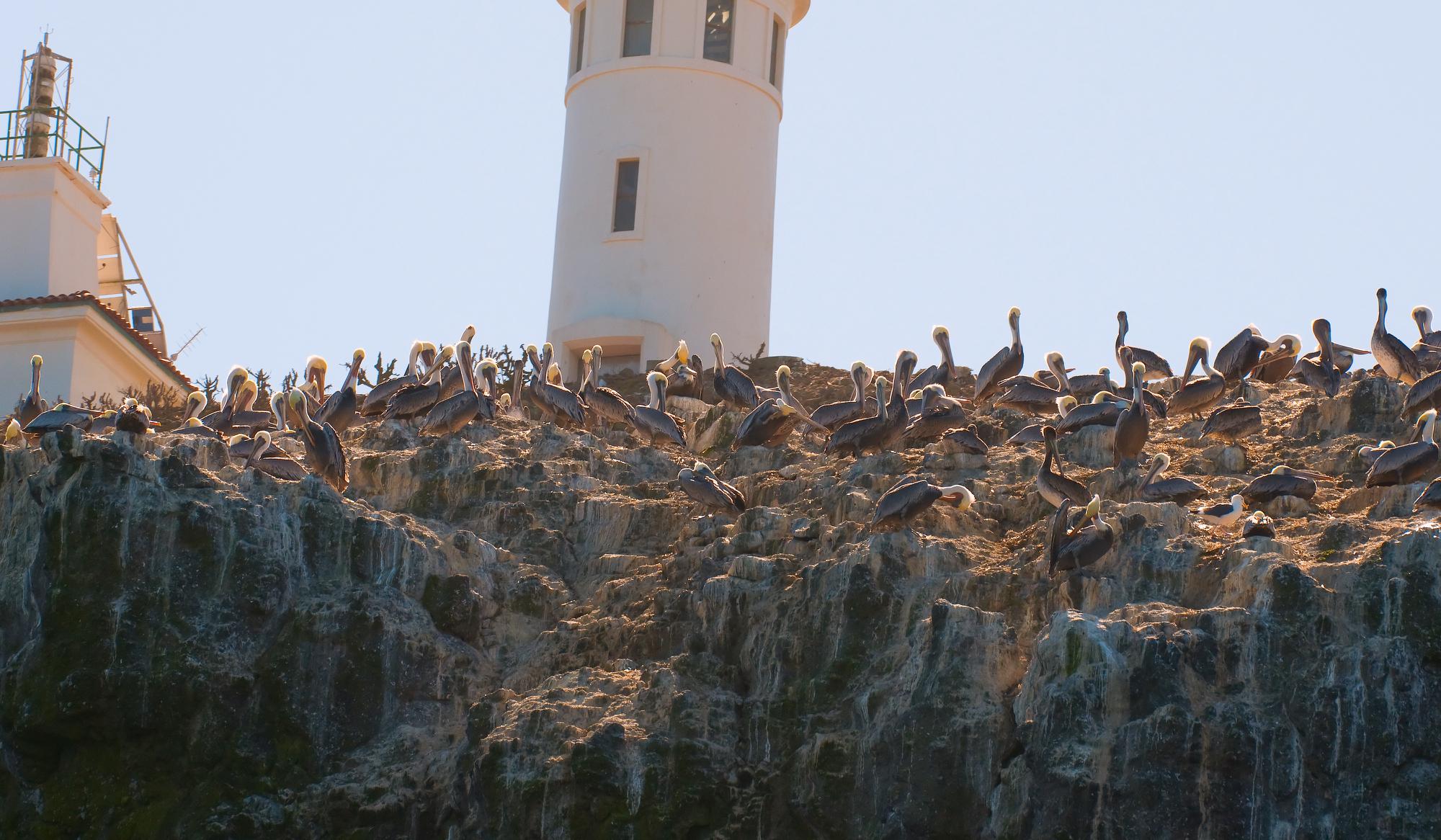 Pelicans roosting near the Anacapa lighthouse.
Anacapa Island, California • (Photo posted Tuesday 23 November, 2010) • (Photo taken 11:19:27 Friday 8 October, 2010) • © 2010 Terry Costales  #Anacapa_Lighthouse
#Anacapa_Lighthouse
Add a comment or report a mistake
|
|
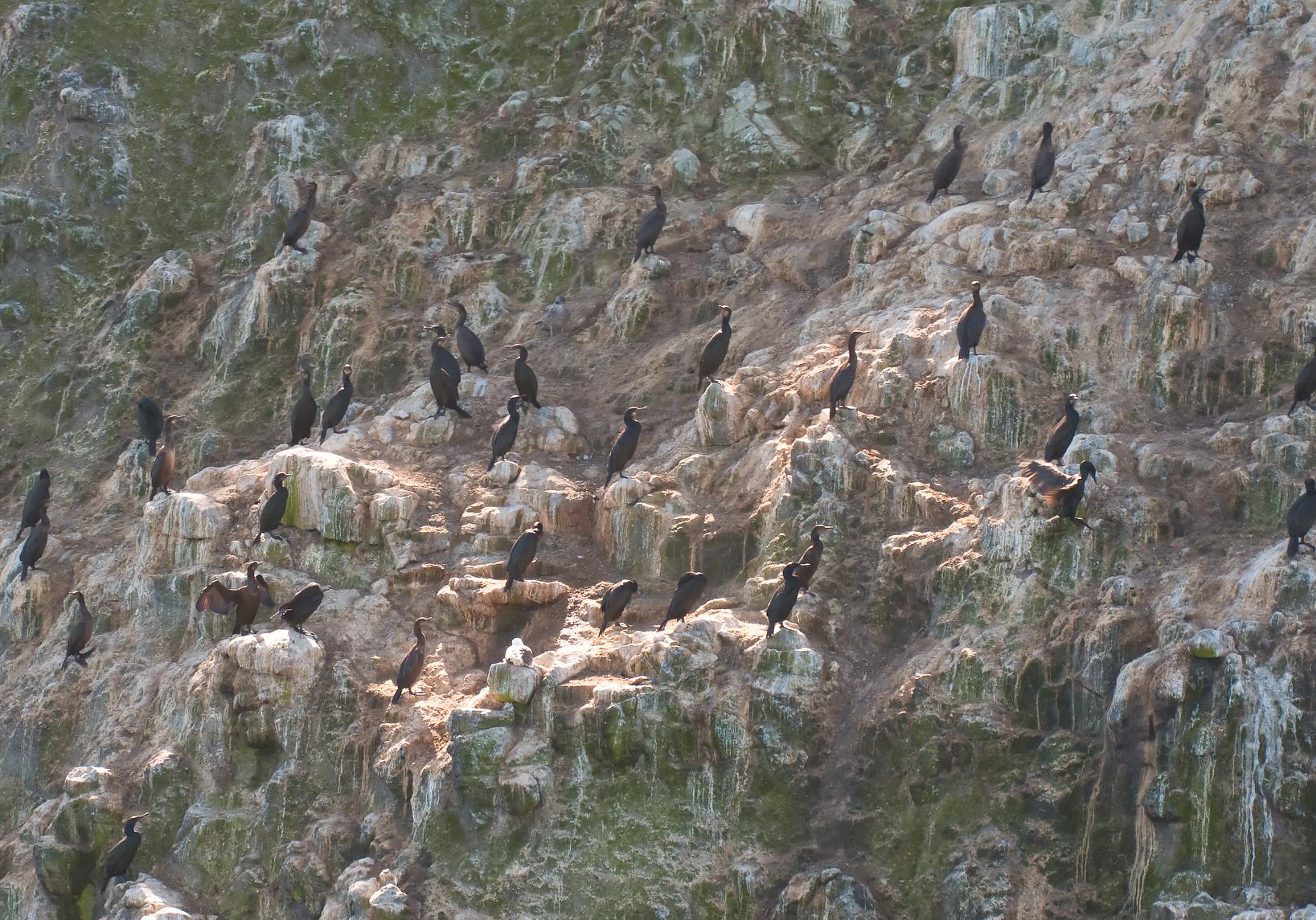 A cliff of cormorants. Anacapa Island, Santa Barbara Channel, California • (Photo posted Wednesday 24 November, 2010) • (Photo taken 11:23:22 Friday 8 October, 2010) • © 2010 Terry Costales  #Of_Cormorants
#Of_Cormorants
Add a comment or report a mistake
|
|
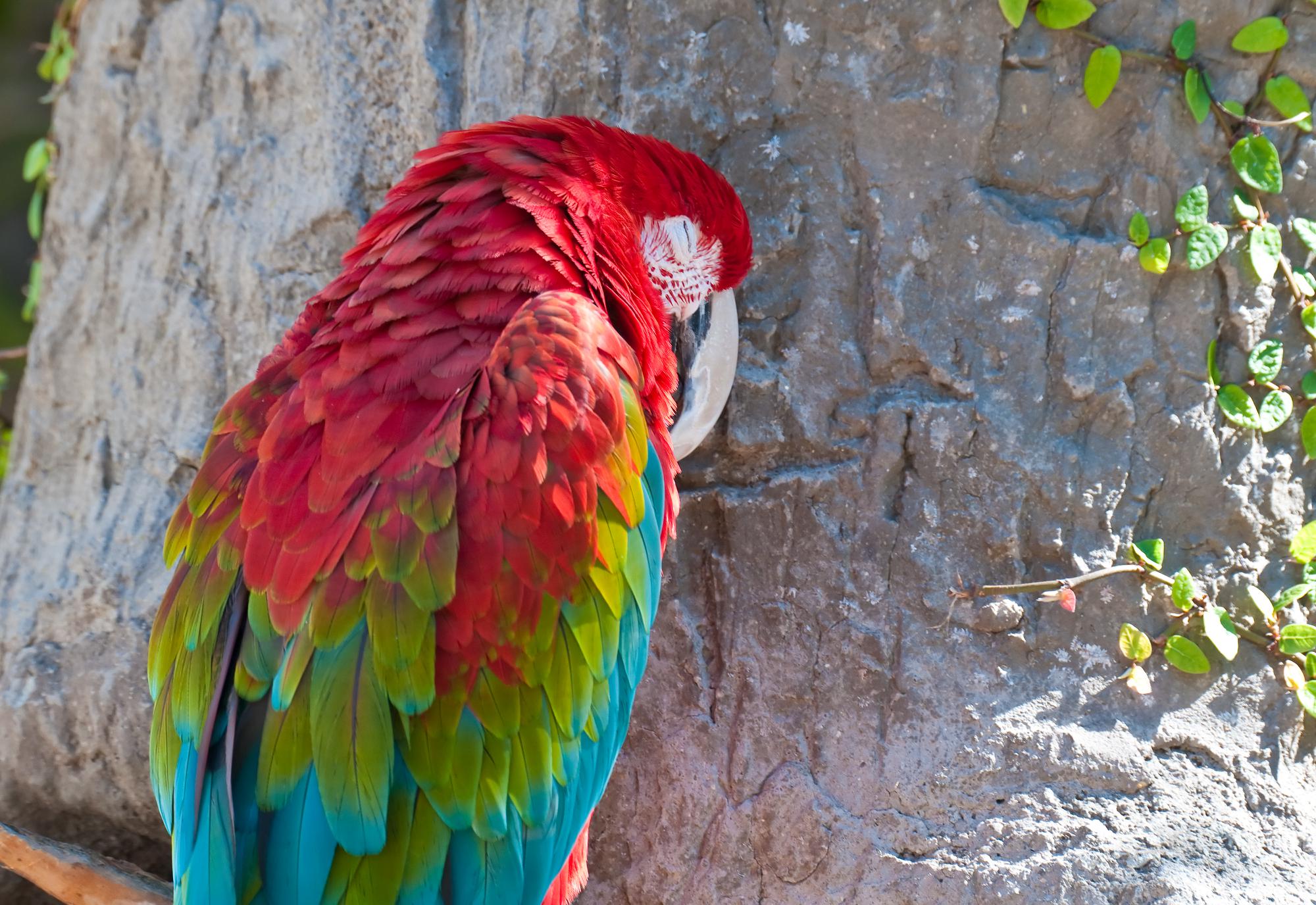
The Green-winged Macaw goes by many names: Greenwing Macaw, Red and Green Macaw and Green Wing Macaw.
Santa Barbara Zoo, Santa Barbara, California  #Barbara_Zoo
#Barbara_Zoo
Add a comment or report a mistake
|
|
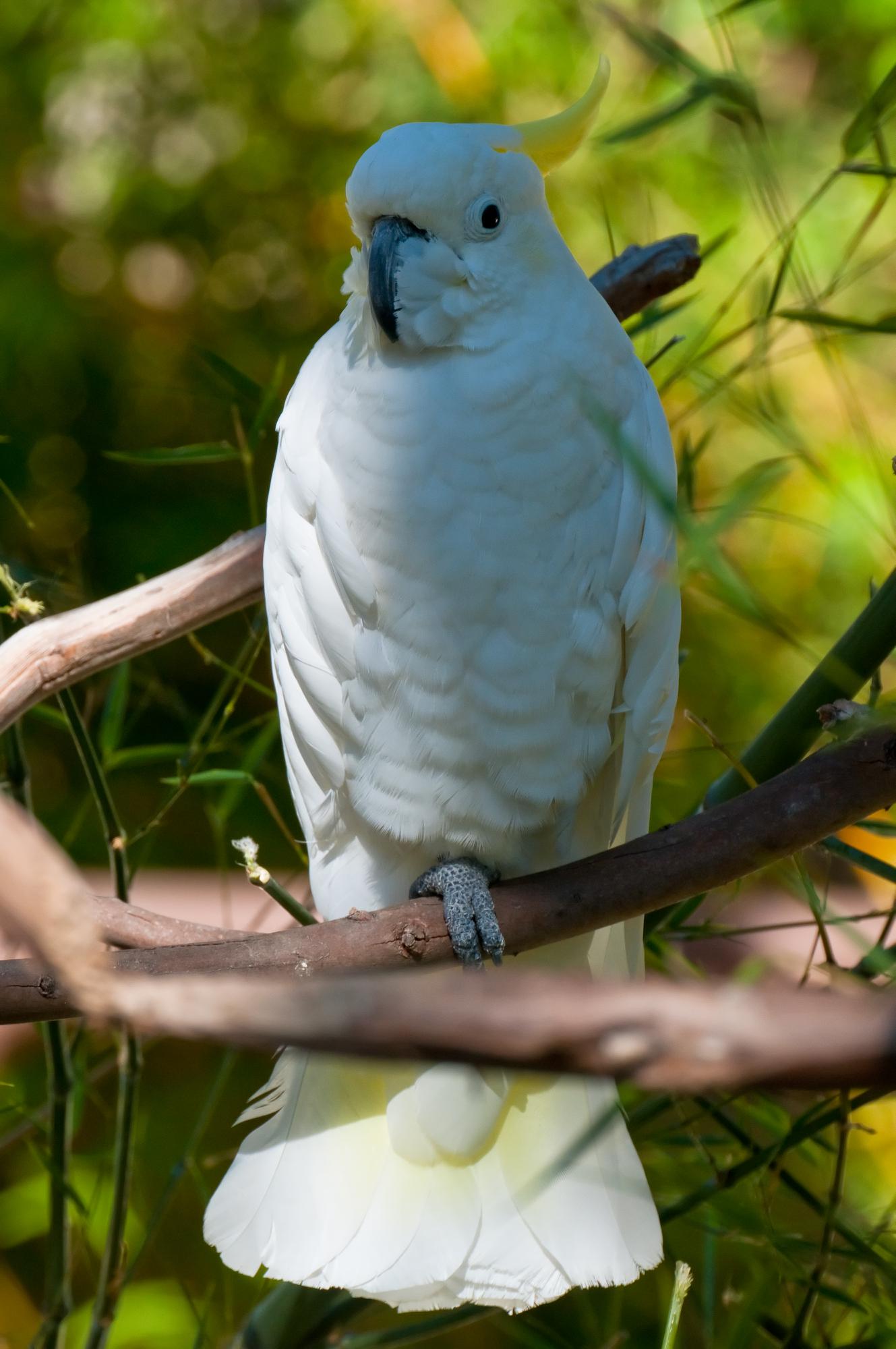
This cockatoo seemed healthy and alert but very quiet.
Santa Barbara Zoo, Santa Barbara, California  #Barbara_Zoo
#Barbara_Zoo
Add a comment or report a mistake
|
|
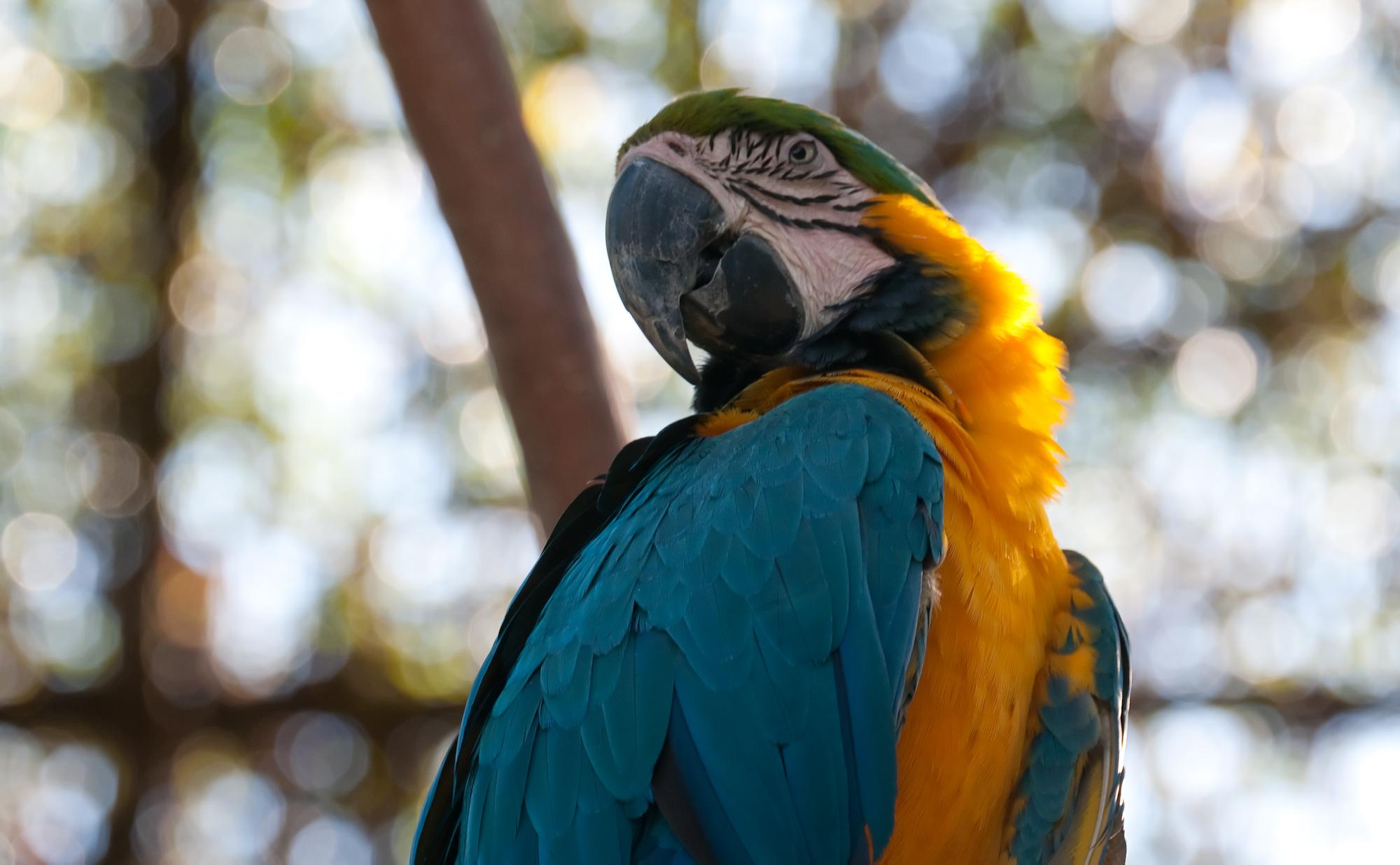
A loud, large, parrot looking quite handsome.
Santa Barbara Zoo, Santa Barbara, California  #Barbara_Zoo
#Barbara_Zoo
Add a comment or report a mistake
|
|
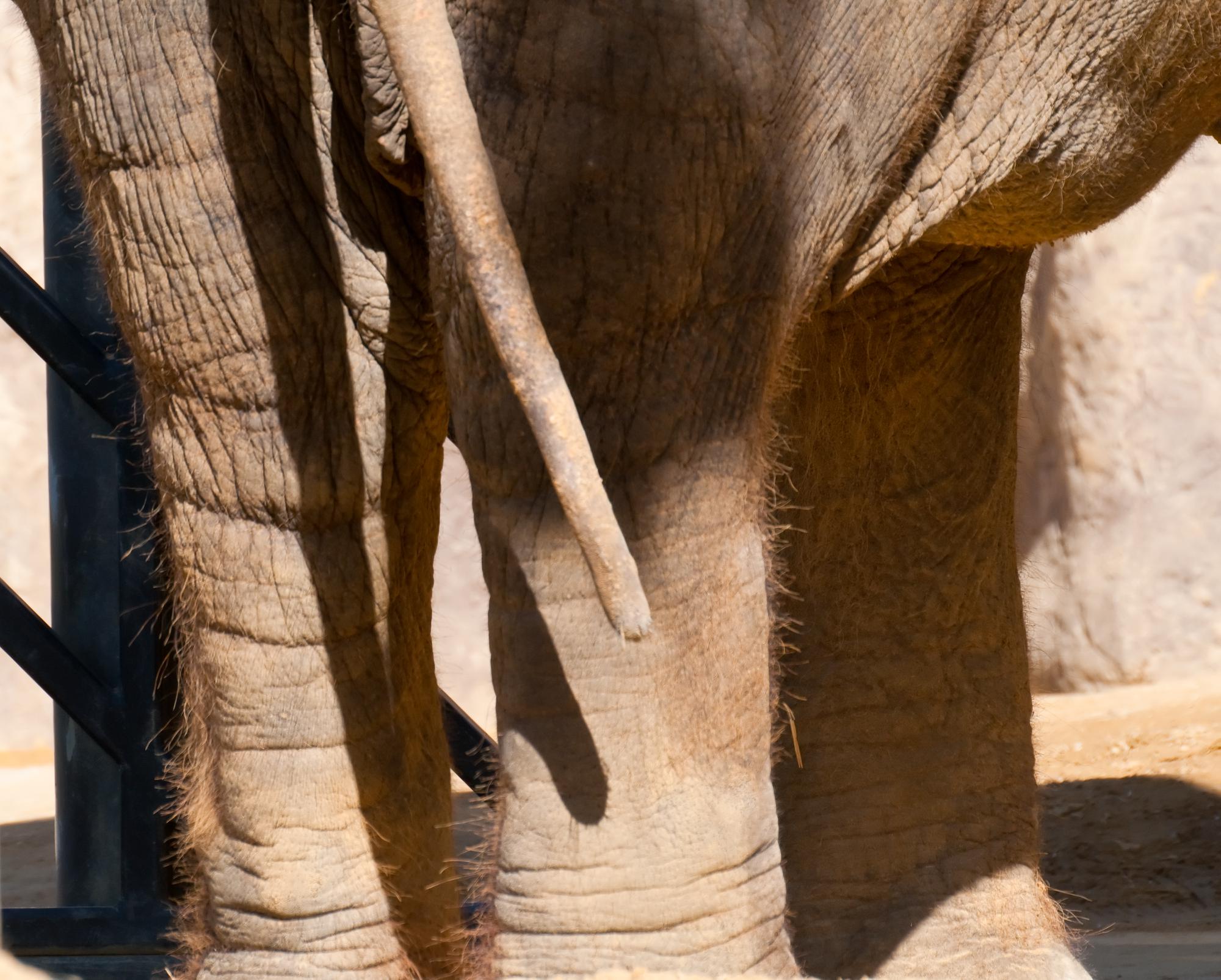
No, that's not its trunk. It's the tail of an Asian Elephant.
Santa Barbara Zoo, Santa Barbara, California  #Barbara_Zoo
#Barbara_Zoo
Add a comment or report a mistake
|
|
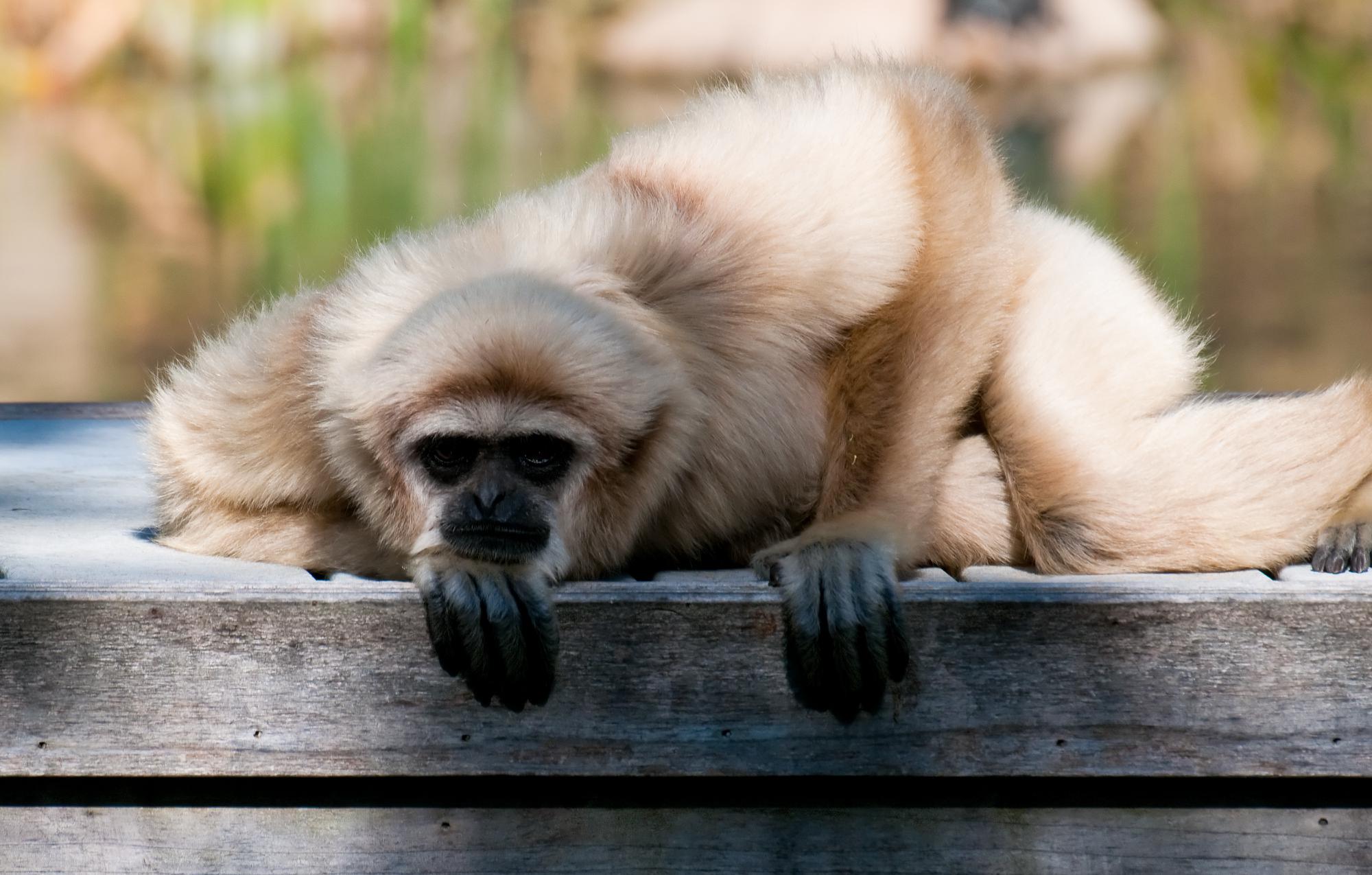
Also known as the white-handed gibbon, this Lar Gibbon lazed in the afternoon sun.
Santa Barbara Zoo, Santa Barbara, California  #Barbara_Zoo
#Barbara_Zoo
Add a comment or report a mistake
|
|
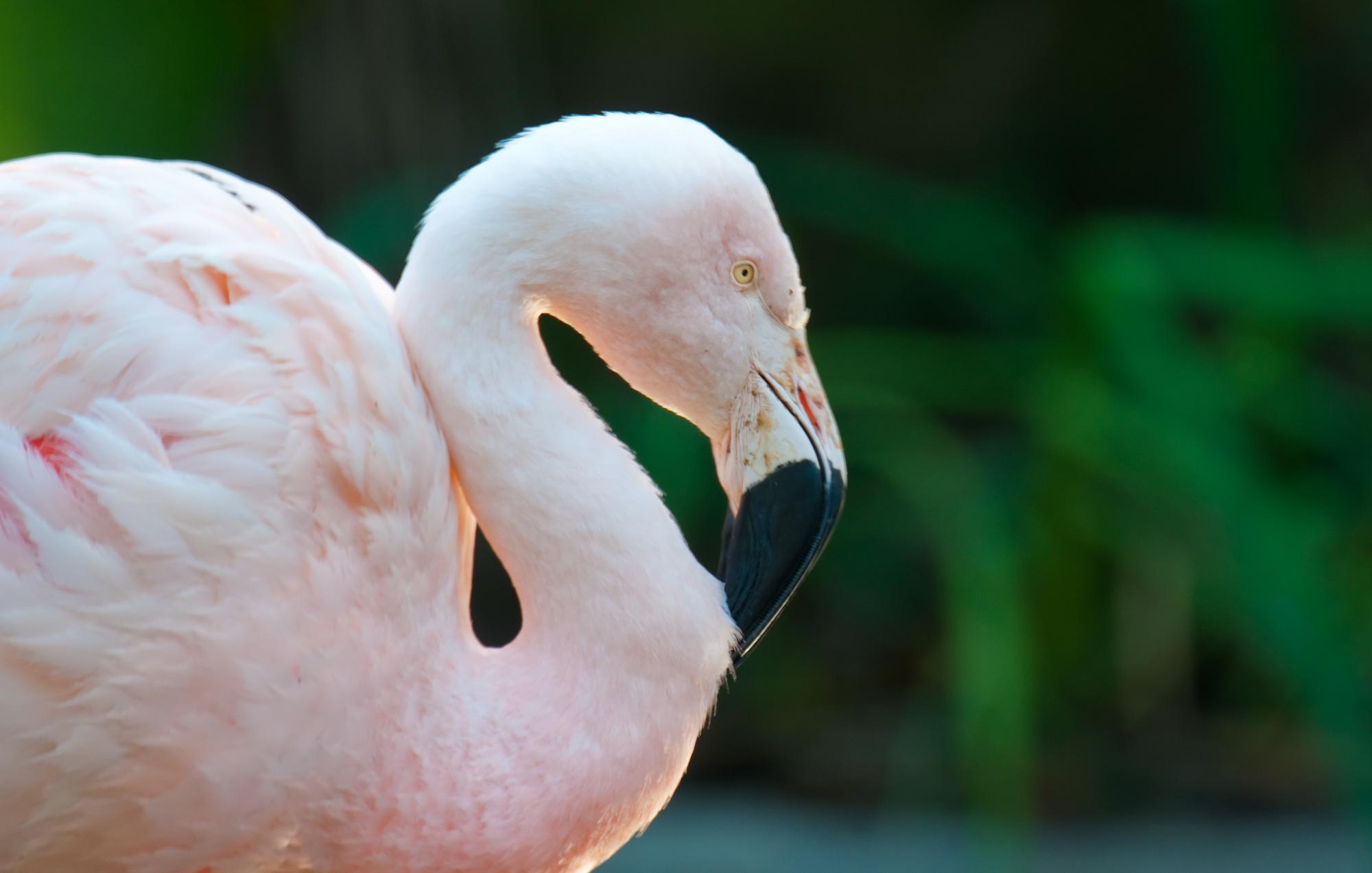
The improbable flamingo pondering its place in natural history.
Santa Barbara Zoo, Santa Barbara, California  #Barbara_Zoo
#Barbara_Zoo
Add a comment or report a mistake
|
|
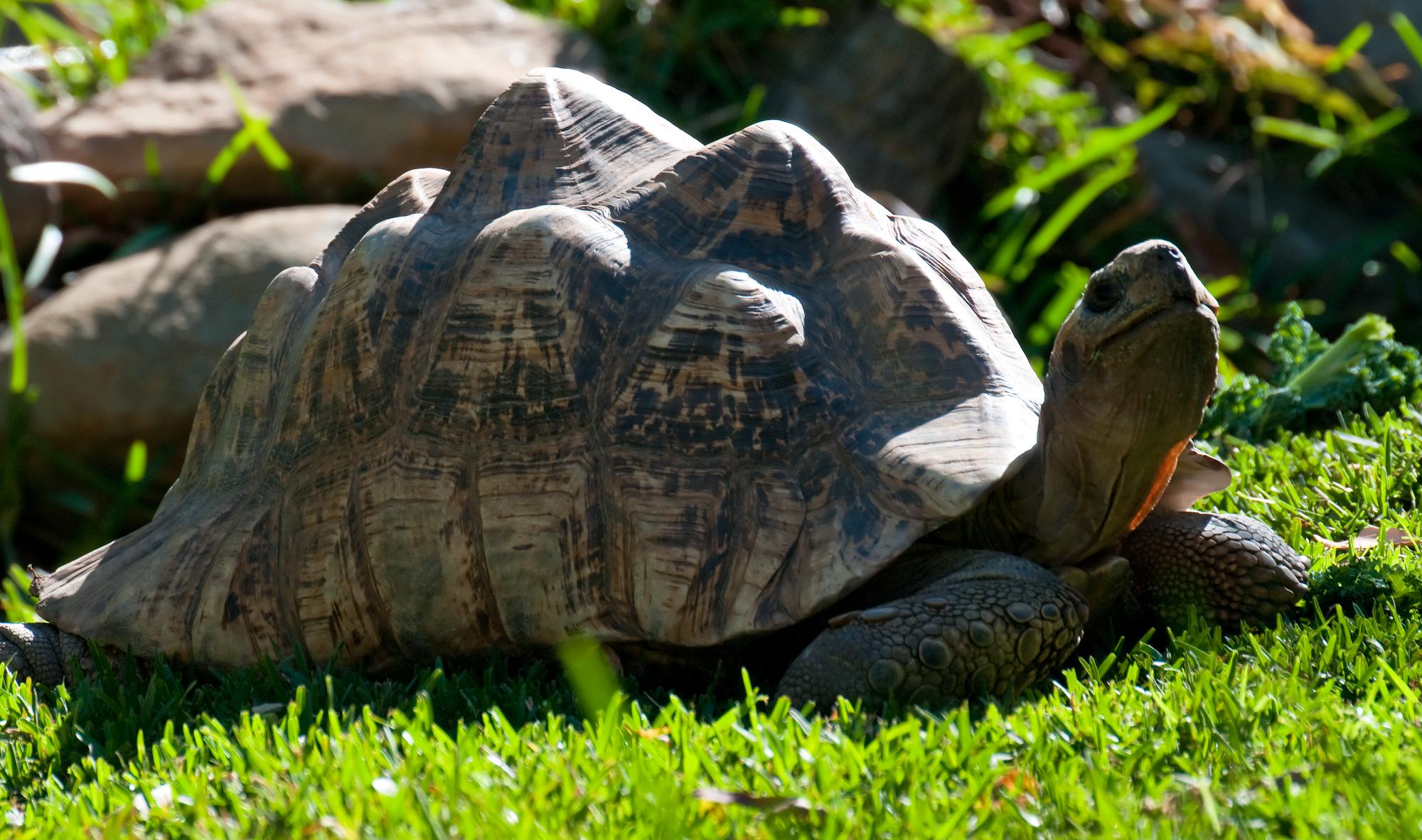
A very large, old Leopard Tortoise sunned itself that afternoon.
Santa Barbara Zoo, Santa Barbara, California  #Barbara_Zoo
#Barbara_Zoo
Add a comment or report a mistake
|
|
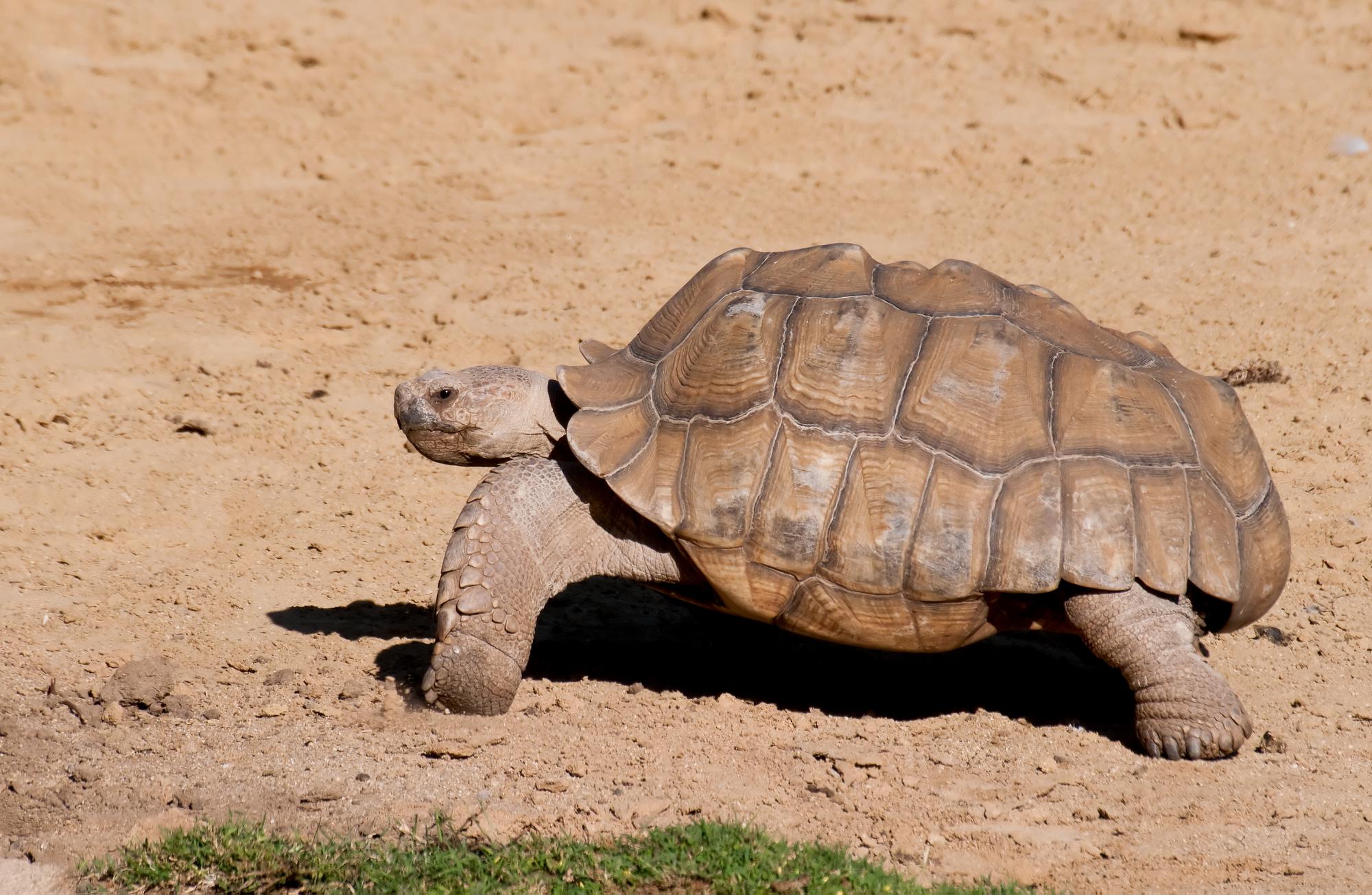
A very large tortoise with an imposing look.
Santa Barbara Zoo, Santa Barbara, California  #Barbara_Zoo
#Barbara_Zoo
Add a comment or report a mistake
|
|
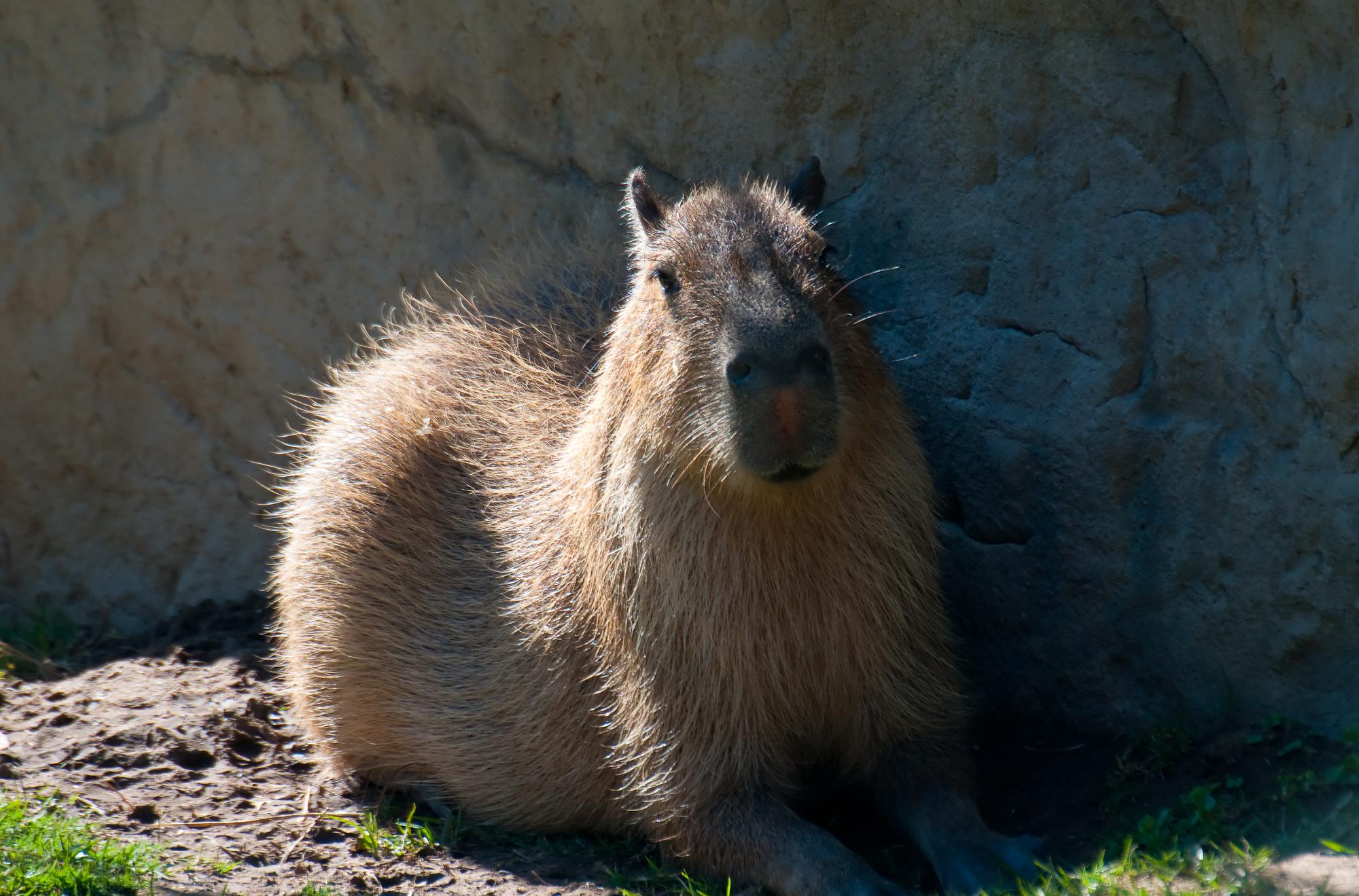 Catching the afternoon sun, the master of the grasses rests in its domain.
Santa Barbara Zoo, Santa Barbara, California  #Barbara_Zoo
#Barbara_Zoo
Add a comment or report a mistake
|
|
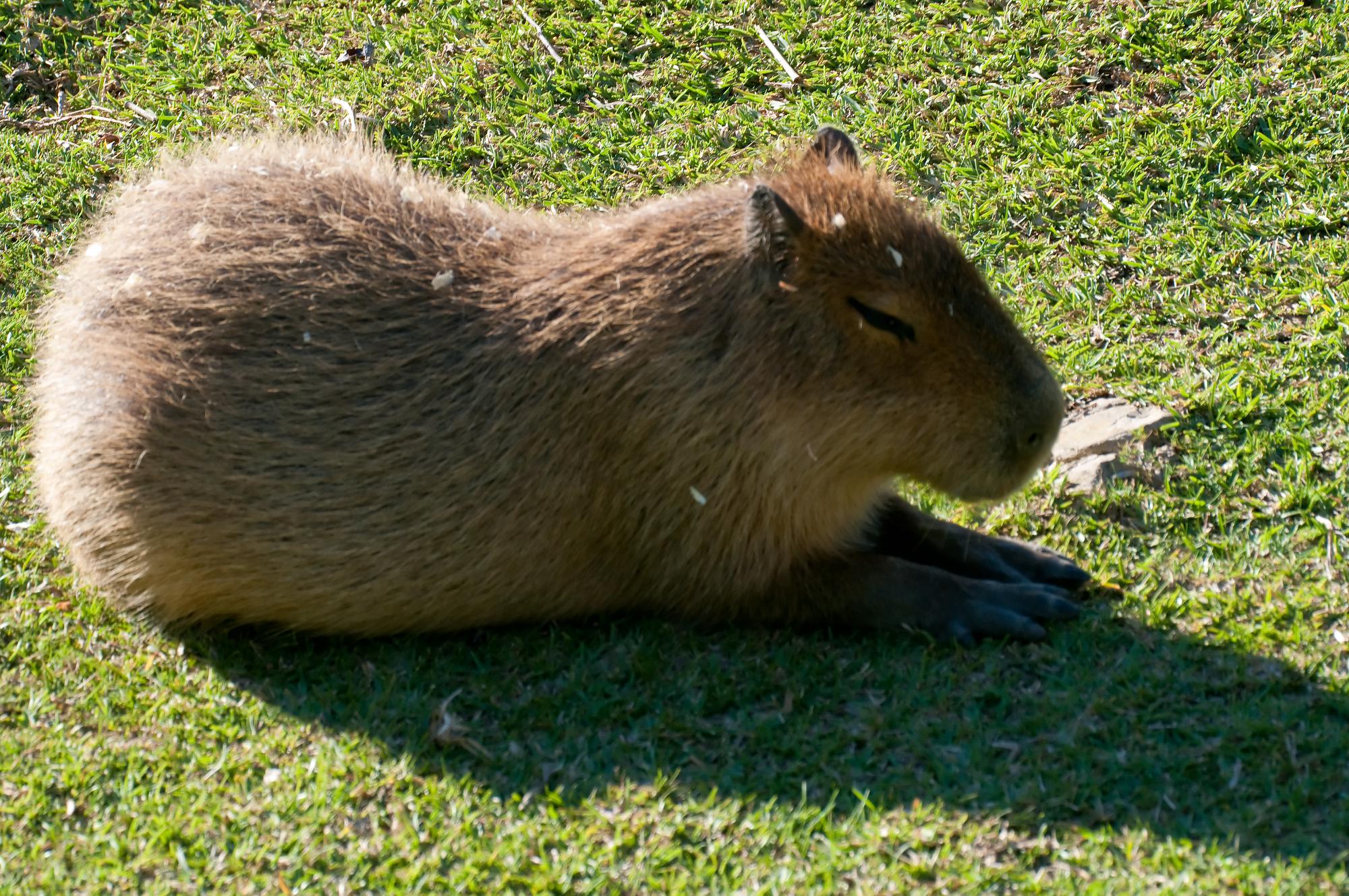 This Capybara needs a good brushing.
Santa Barbara Zoo, Santa Barbara, California  #Barbara_Zoo
#Barbara_Zoo
Add a comment or report a mistake
|
|
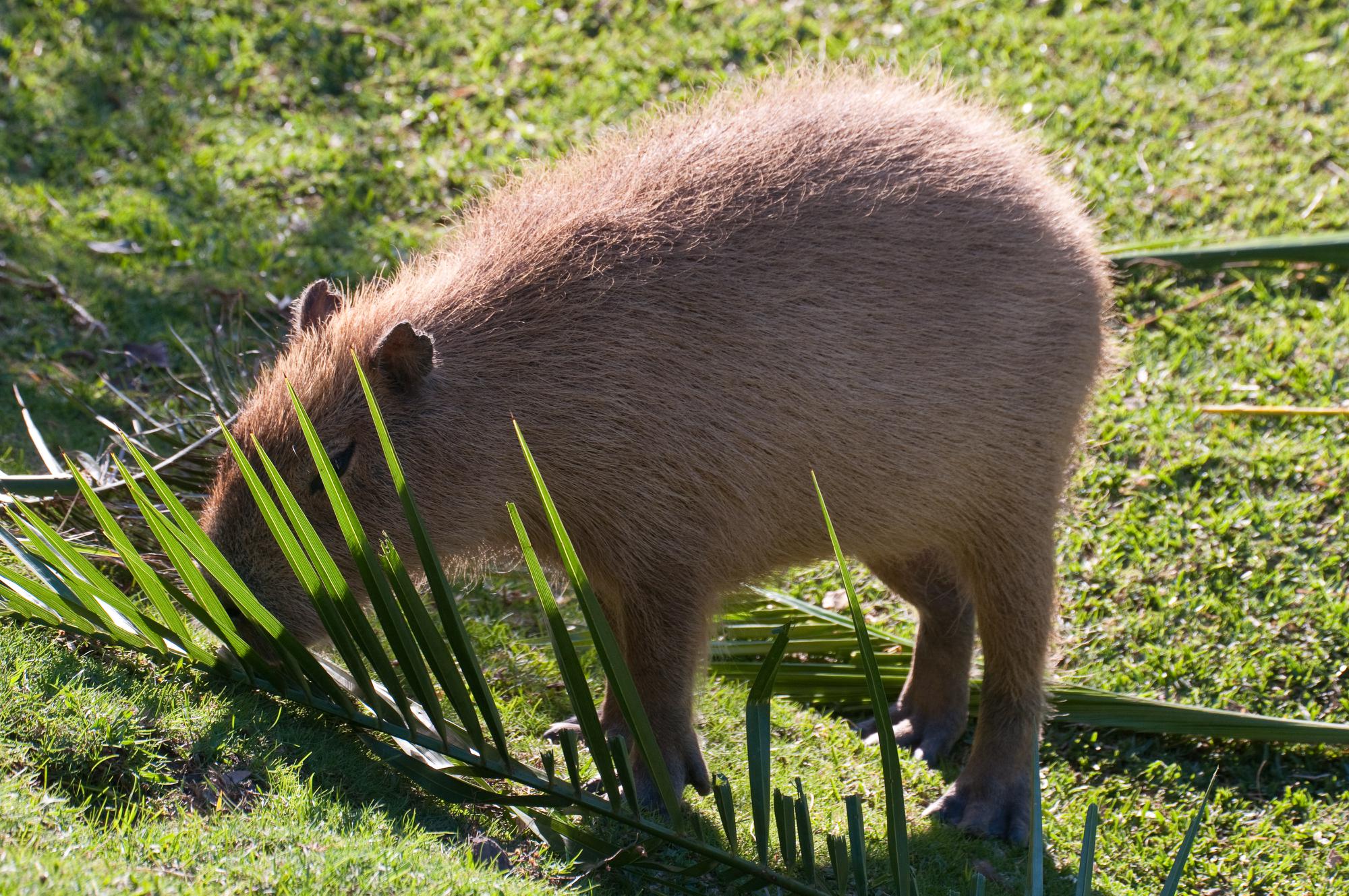 A capybara peeking coyly from behind its giant palm frond.
Santa Barbara Zoo, Santa Barbara, California  #Barbara_Zoo
#Barbara_Zoo
Add a comment or report a mistake
|
|
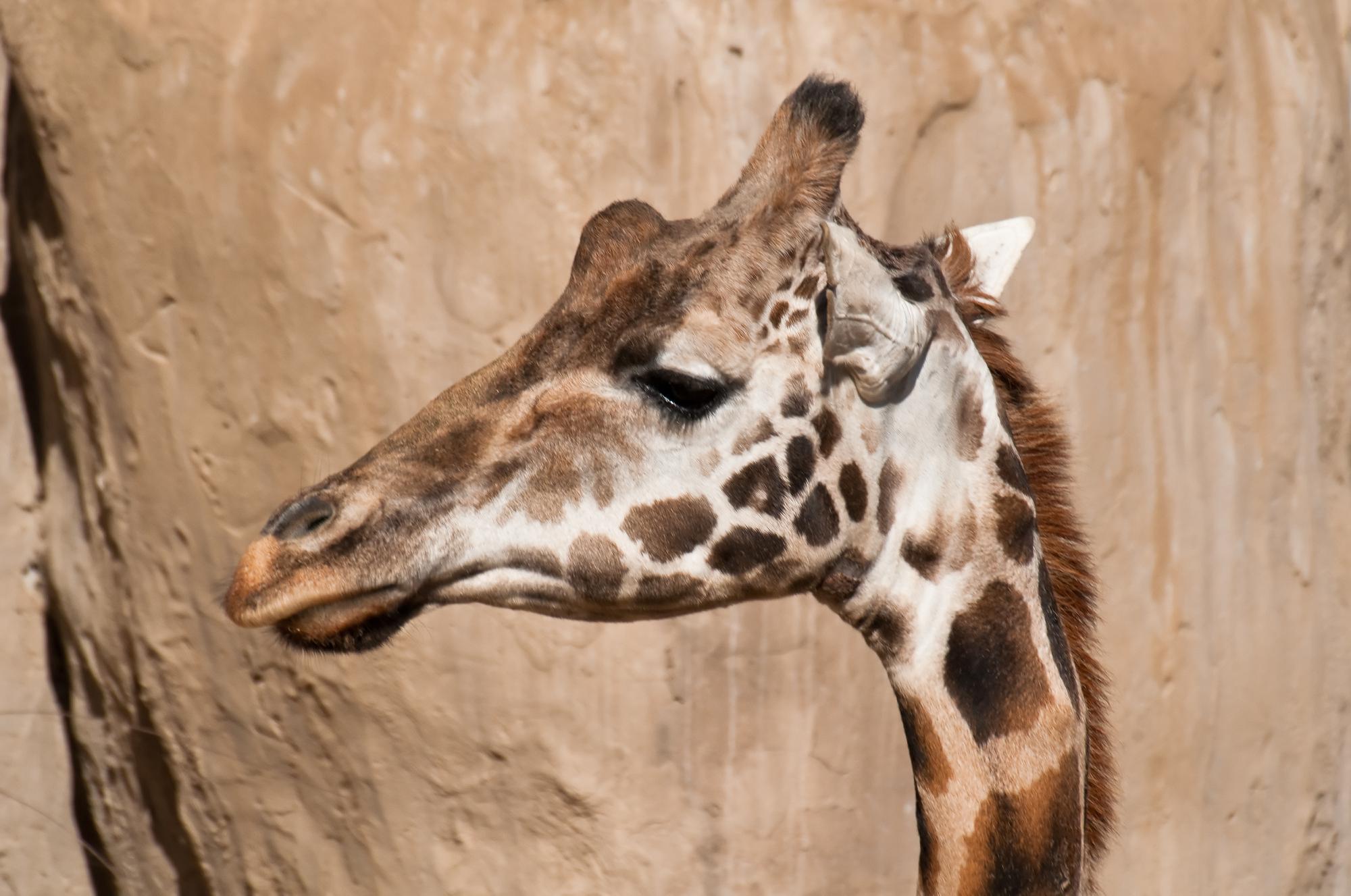
The Santa Barbara zoo called this giraffe a Baringo giraffe. It was originally named the Rothschild giraffe and now sometimes called the Ugandan giraffe. No matter its name, it is a threatened species of giraffe.
Santa Barbara Zoo, Santa Barbara, California  #Barbara_Zoo
#Barbara_Zoo
Add a comment or report a mistake
|
|
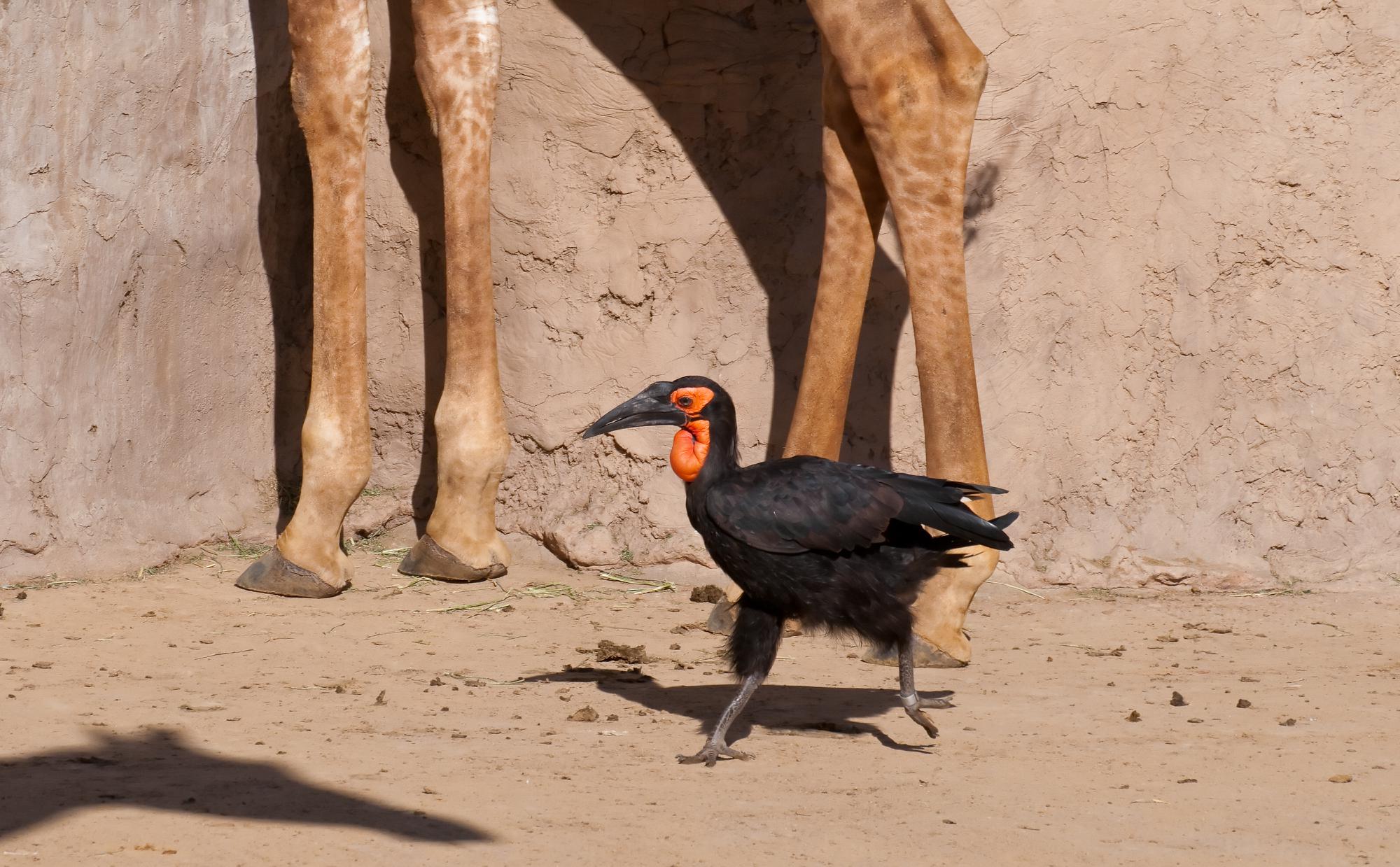
Several energetic hornbills rarely stopped their rapid walk around the giraffe enclosure.
Santa Barbara Zoo, Santa Barbara, California  #Barbara_Zoo
#Barbara_Zoo
Add a comment or report a mistake
|
|
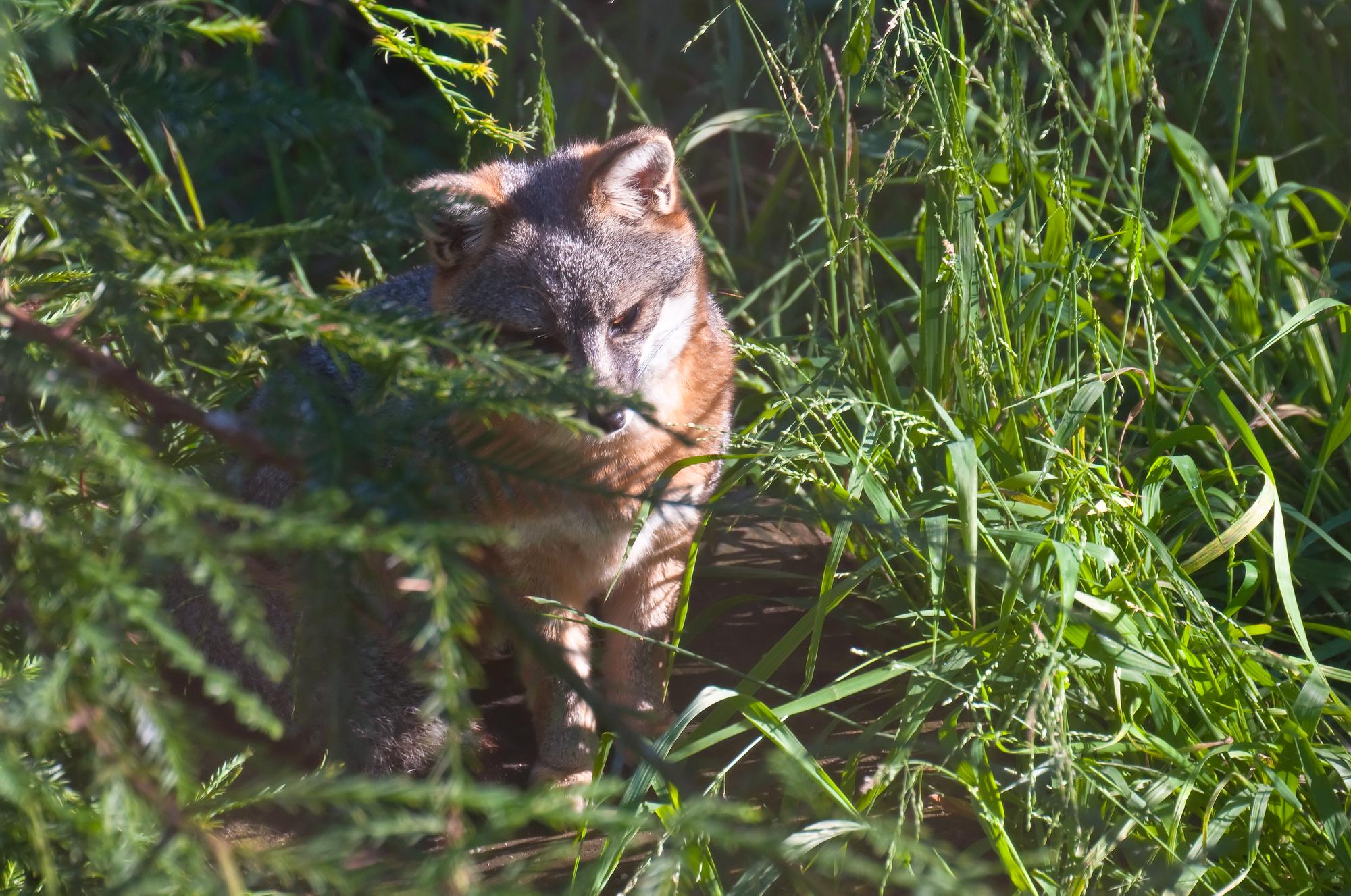
The Island Fox is only found on the Santa Barbara Channel Islands. Each of those six islands has its own subspecies of this little fox. Very Galapagos of them.
Santa Barbara Zoo, Santa Barbara, California  #Barbara_Zoo
#Barbara_Zoo
Add a comment or report a mistake
|
|
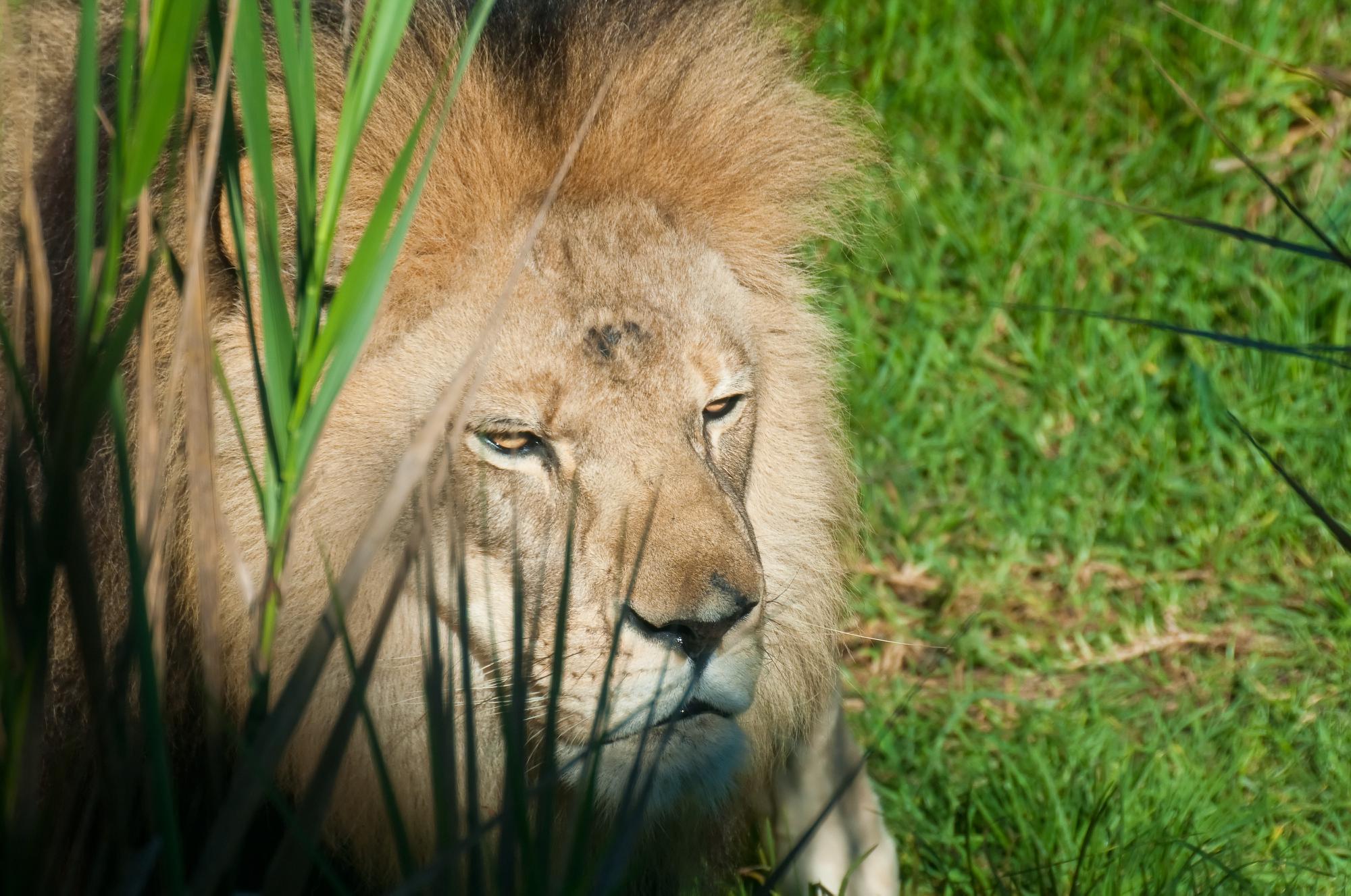
The King of the Jungle appeared regal that day.
Santa Barbara Zoo, Santa Barbara, California  #Barbara_Zoo
#Barbara_Zoo
Add a comment or report a mistake
|
|
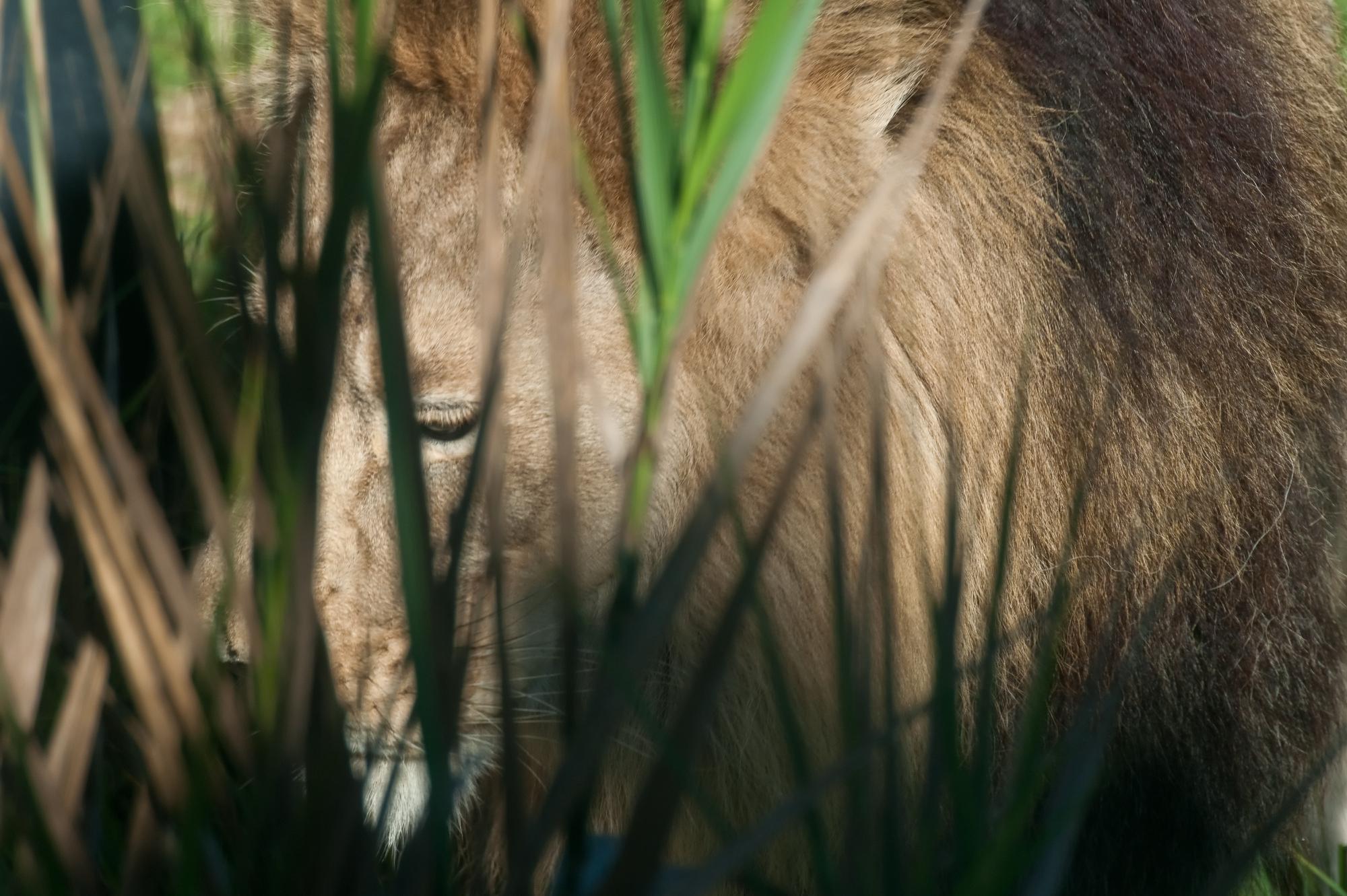 The lion demonstrated camouflage.
Santa Barbara Zoo, Santa Barbara, California (Photo posted Wednesday 22 December, 2010) • (Photo taken 15:54:13 Friday 8 October, 2010) • © 2010 Terry Costales  #Barbara_Zoo
#Barbara_Zoo
Add a comment or report a mistake
|
|
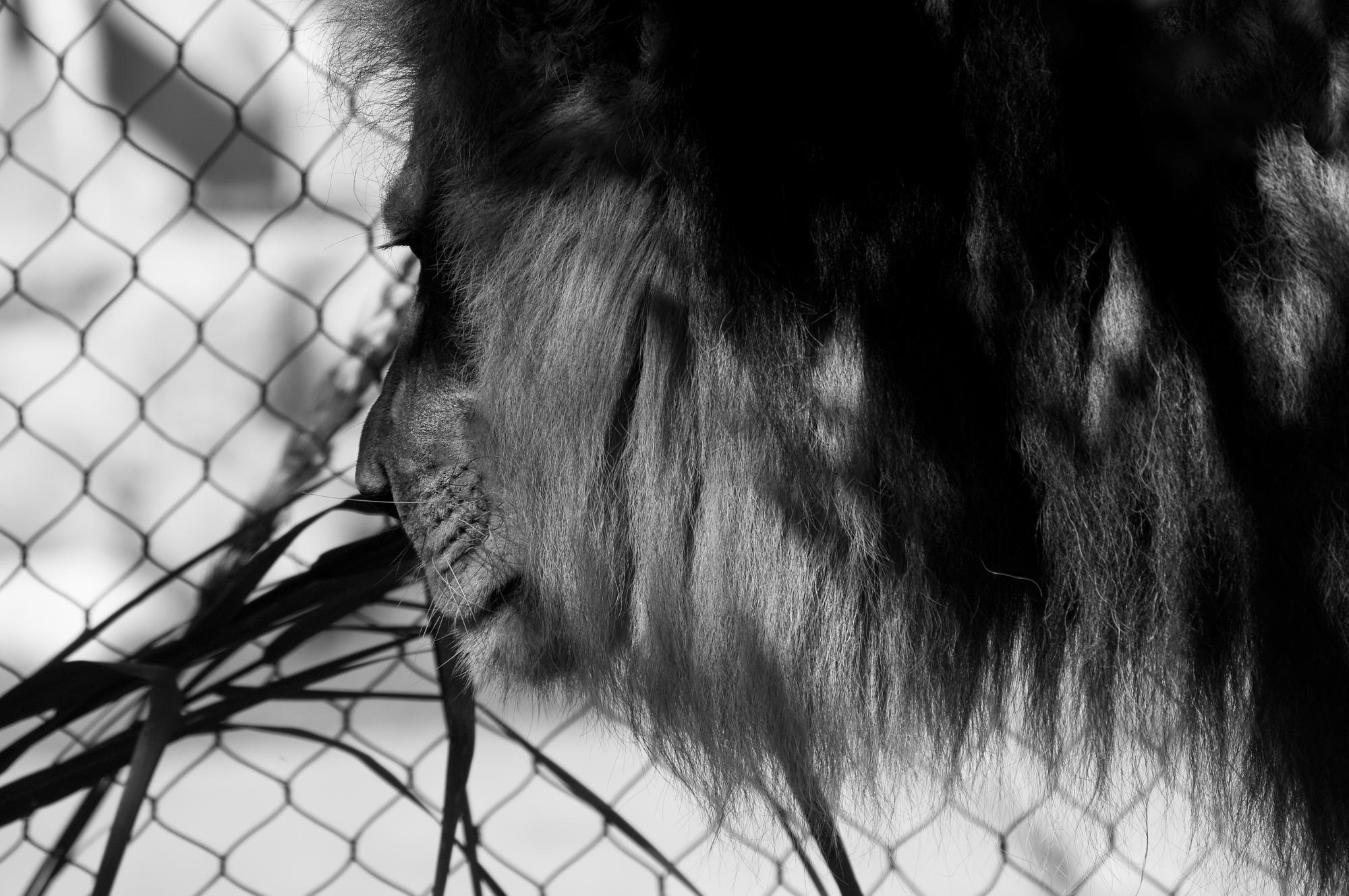 The King contemplated freedom.
Santa Barbara Zoo, Santa Barbara, California  #Barbara_Zoo
#Barbara_Zoo
Add a comment or report a mistake
|
|

A meerkat taking his turn as sentry.
Santa Barbara Zoo, Santa Barbara, California  #Barbara_Zoo
#Barbara_Zoo
Add a comment or report a mistake
|
|
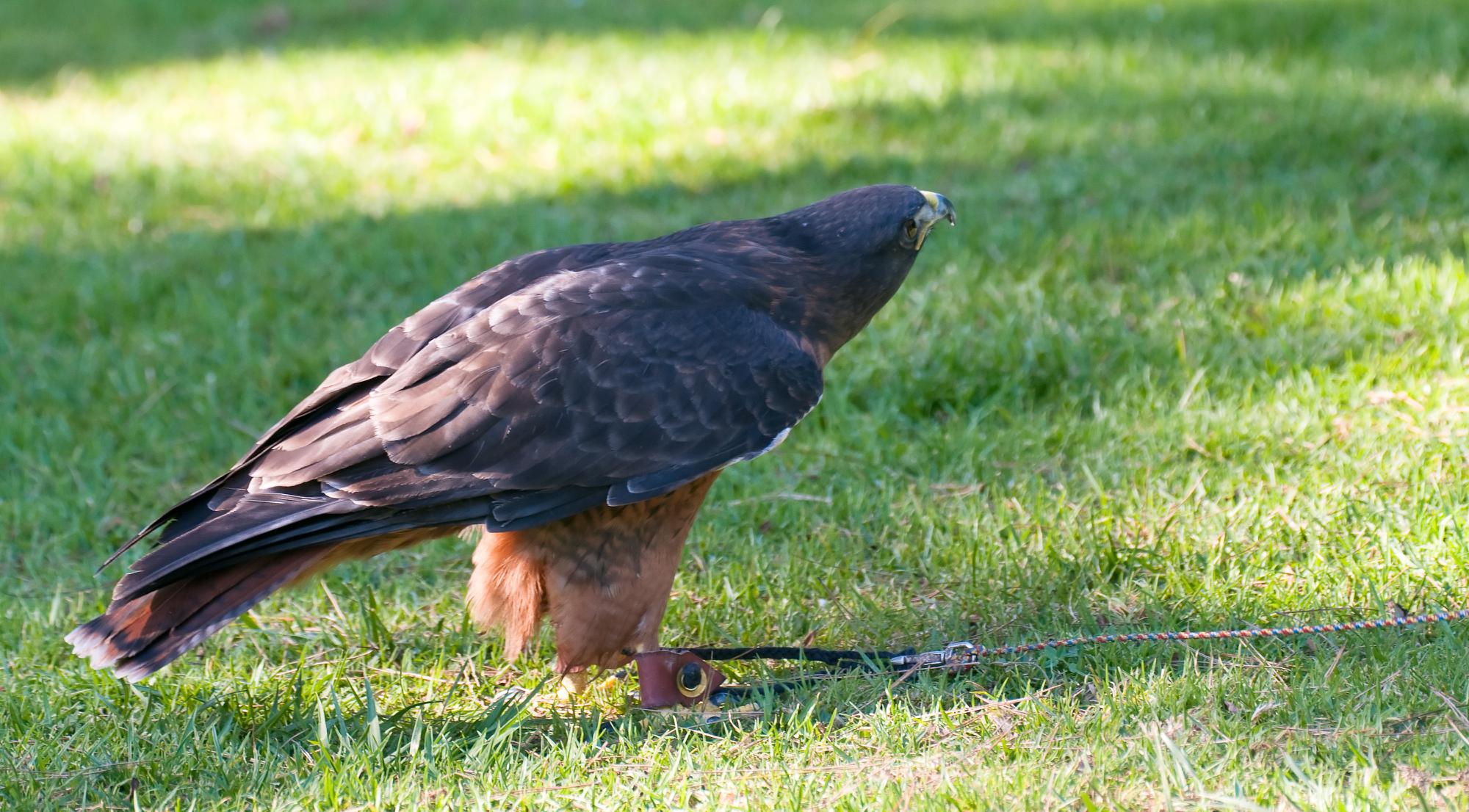
This Red-tailed hawk was being trained that afternoon. He flew down to gobble a tossed tidbit and then contemplated his flight back up to the keepers arm.
Santa Barbara Zoo, Santa Barbara, California  #Barbara_Zoo
#Barbara_Zoo
Add a comment or report a mistake
|
|
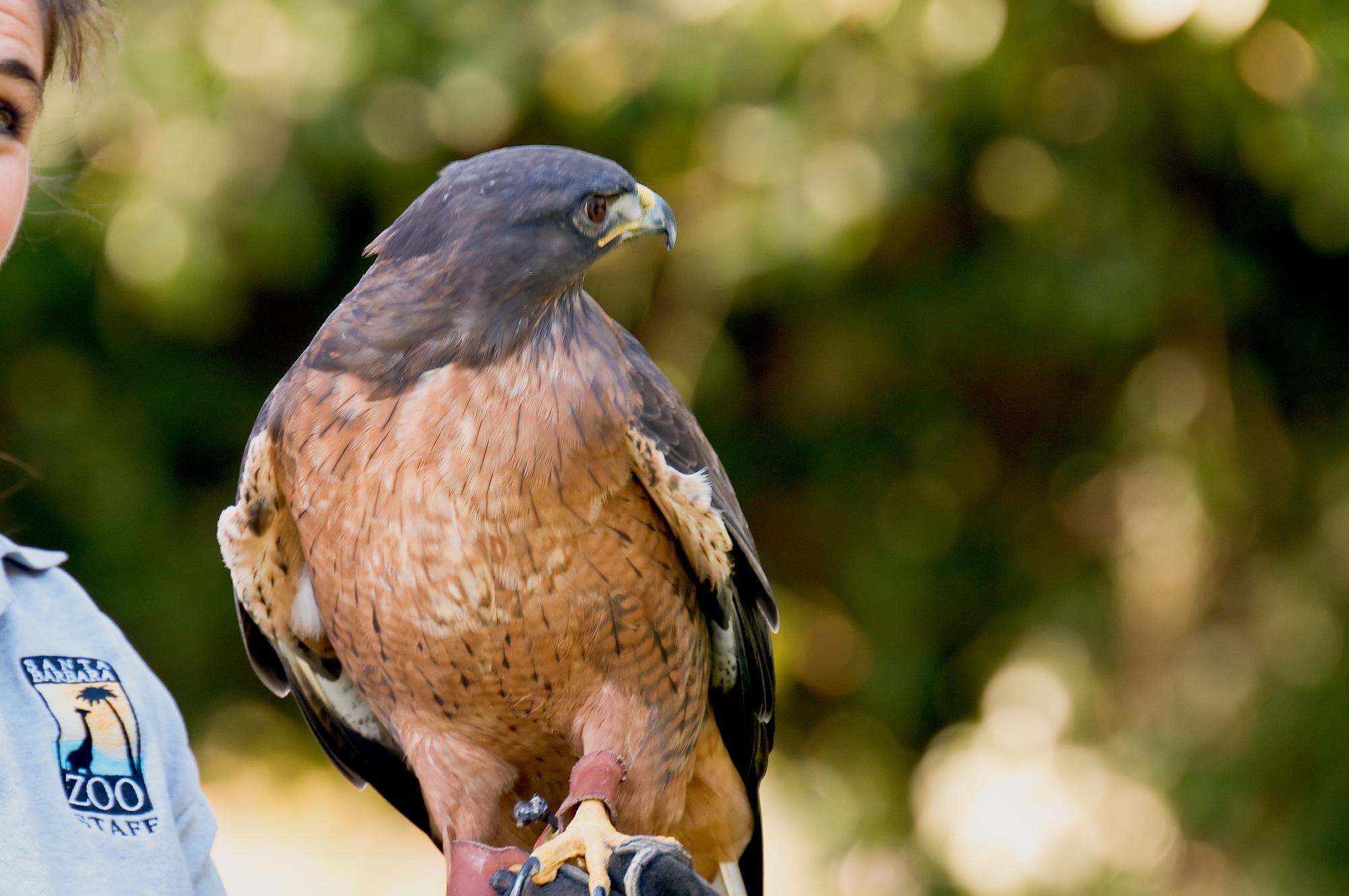 A Red-tailed hawk perched on the keeper's arm.
Santa Barbara Zoo, Santa Barbara, California  #Keepers_Arm
#Keepers_Arm
Add a comment or report a mistake
|
 |
| home • contact • topic guide • top 25 • photos • video • writing • blogs • upload • terms • privacy |